Finding the Universe
Travel tales, photography and a dash of humor
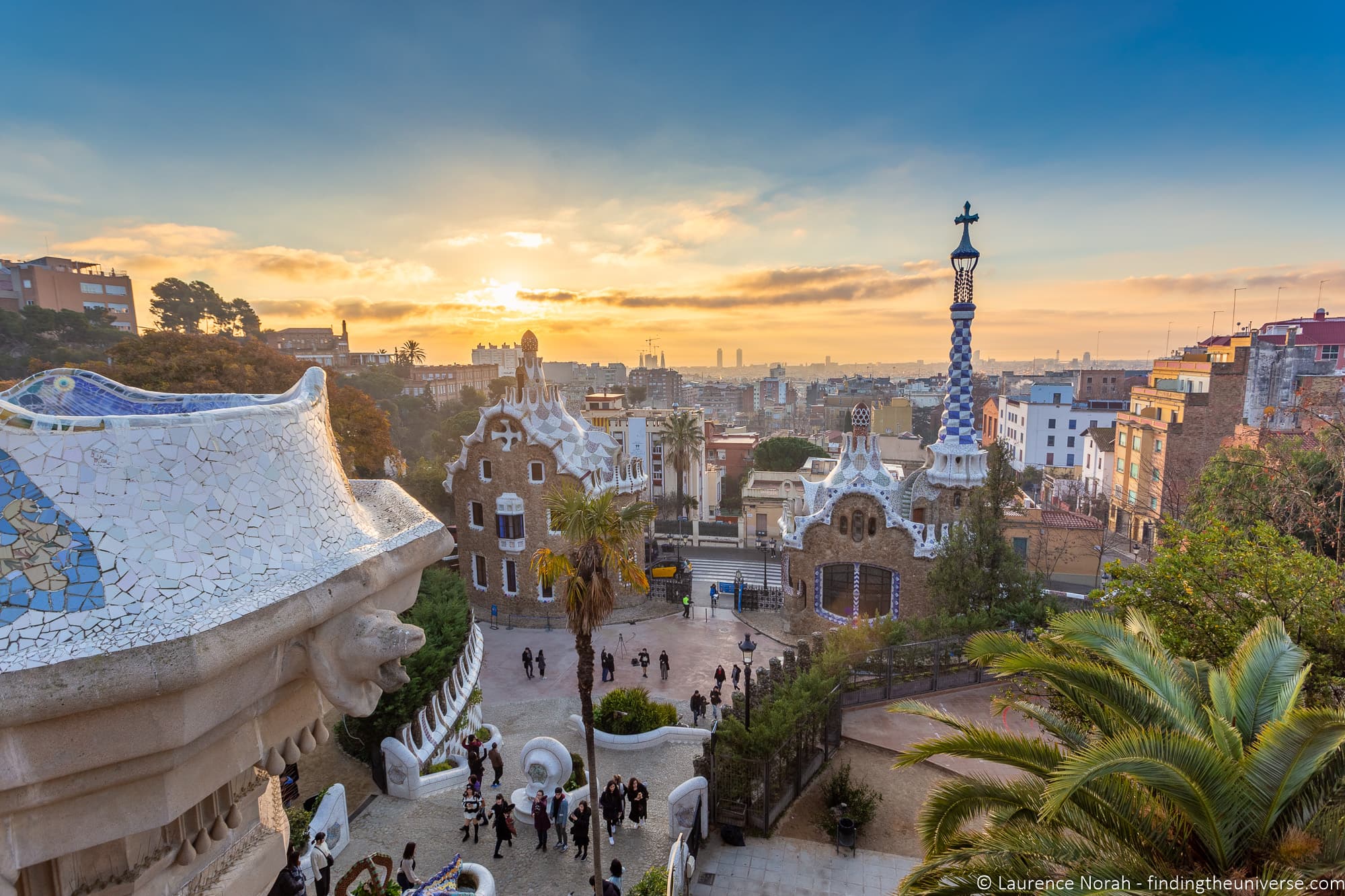

2 Weeks in Europe – The Perfect Europe Itinerary
Last updated: January 28, 2024 . Written by Laurence Norah - 30 Comments
Are you visiting Europe and looking for the perfect itinerary? Well, you’re in the right place! We’ve travelled extensively in Europe, and based on our experiences, we’ve put together a detailed 2 week Europe itinerary to help you plan.
This Europe itinerary will take you to many of the highlights that we think first time visitors to Europe will want to see and explore for themselves. These include many of our favourite destinations that we’ve visited multiple times over.
This itinerary is aimed at those of you visiting Europe for the first time, or those of you looking for an easy itinerary to follow that covers some of the major highlights of Western Europe. It’s not overly rushed as we think you will get more from your experience if you focus on a few major locations rather than trying to see everything in one go.
The trip as outlined is for 14 days in Europe, but you could make it longer or shorter depending on how much time you have. For example, with 10 days in Europe, you could clip off a day or two in some of the cities, and maybe even skip one of the cities to make it a more comfortable experience.
As well as the itinerary, we’re also going to share everything you need to know to help you plan the perfect European trip. Tips about currency, what to pack, where to stay, how to get around and other considerations.
Hopefully this guide will give you everything you need to know to plan your own perfect European adventure, and of course, we’re always happy to answer your questions in the comments. Now, let’s get started!
2 Week Europe Itinerary
This two week itinerary has you visiting four European countries and five cities. We think these cover some of the top highlights of Europe.
The destinations on this itinerary are all cities, so this trip is aimed more towards those of you looking to explore the cities, which are all full of cultural highlights, fantastic restaurants, and plenty of photo-worthy sights!
But if have your eye more on smaller towns, secondary cities, and rural locations, this might not be the best itinerary for you.
If you’d prefer to focus on one country, take a look at our two week UK itinerary , and our 10 day Italy itinerary for some inspiration.
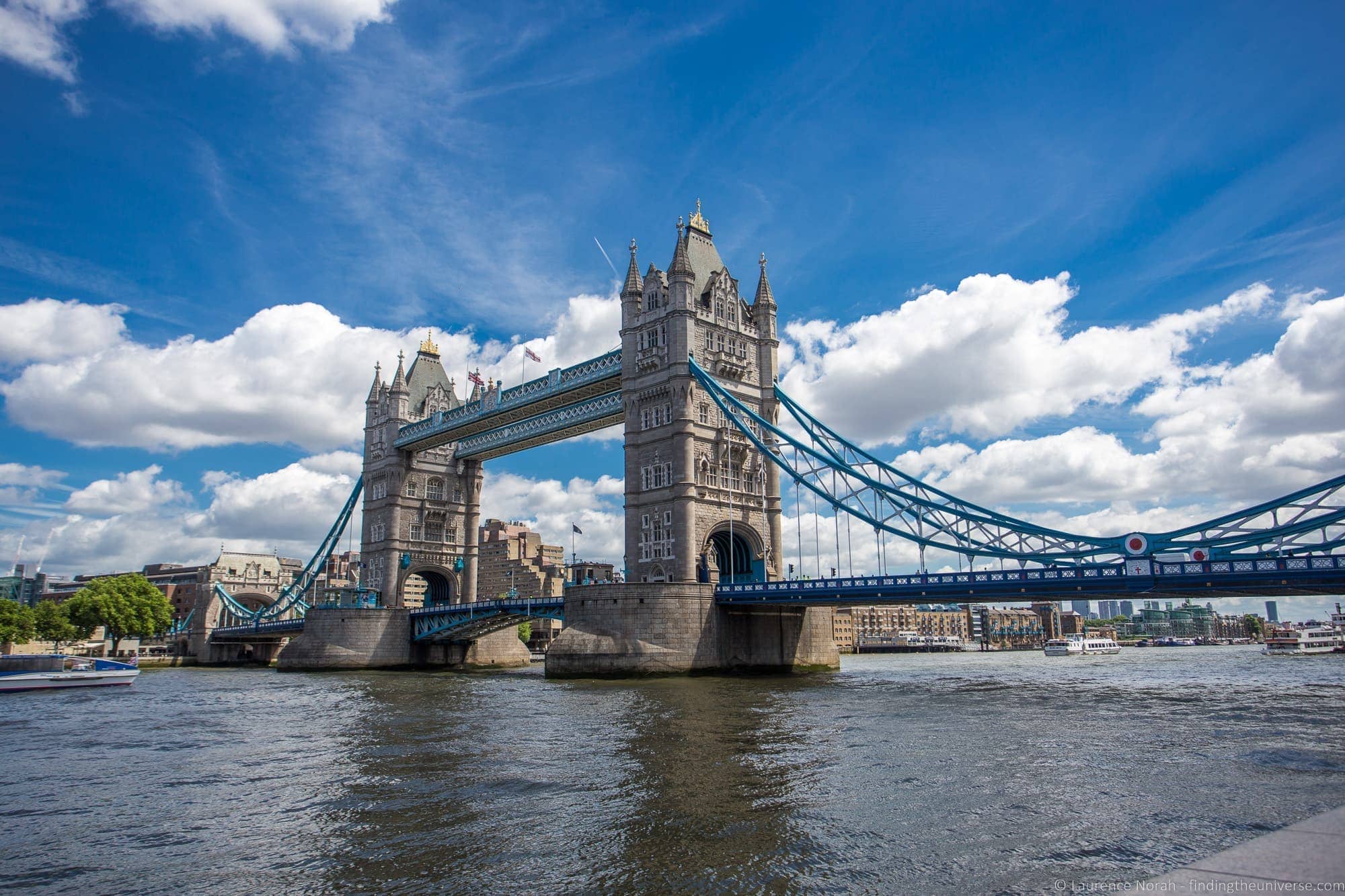
Days 1 – 3: London
We’re going to start your European adventure with 3 days in London . London makes a great starting point for your European itinerary. It has a number of international airports to choose from, so getting here is easy, and there are a wealth of sights and cultural attractions to immerse yourself in. I lived in London for a number of years, and it’s still one of my favourite cities in the world.
If this is your first overseas trip and you are coming from an English speaking country, London is a good place to ease yourself into the experience. You can acclimate yourself to the time difference and get used to travelling in a new country, without having a language barrier to work with as well.
We think 3 days is a good amount of time to spend basing yourself in London. We’d suggest spending at least two days exploring the capital, and perhaps one day trip outside of London. This might look as follows.
On your first day in London, we’d suggest seeing the major sights around Westminster. This includes the Houses of Parliament , Westminster Abbey , Trafalgar Square, Covent Garden, the Churchill War Rooms , Buckingham Palace and the London Eye .
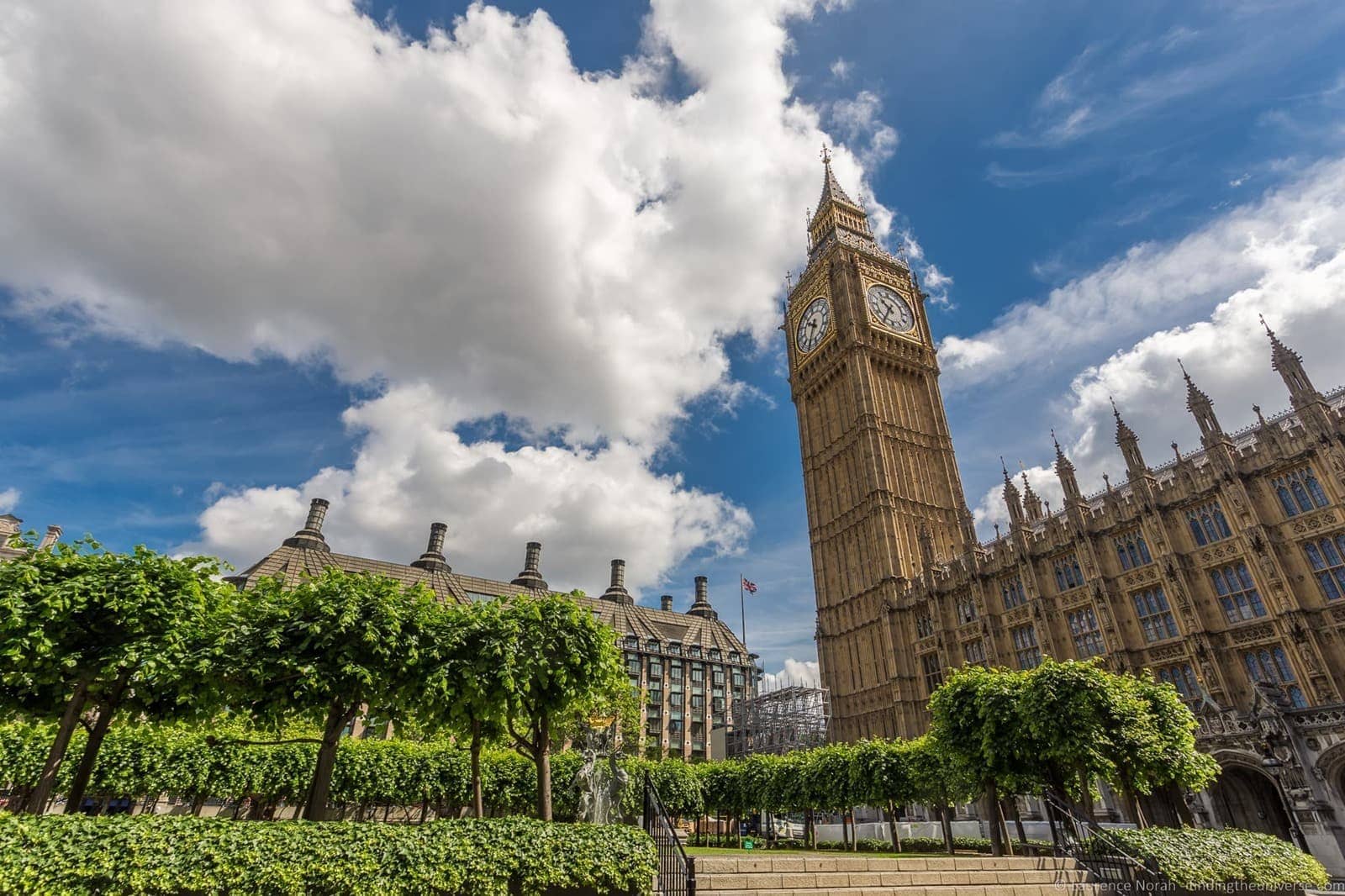
On your second day, which will be a full day, we’d suggest starting at the Tower of London . Get here when it opens to avoid the crowds if you can. Included on the London Pass , or y ou can buy a ticket online in advance here . Using our link saves you some money on the adult admission price for the Tower of London, meaning these discounted Tower of London tickets are some of the best value we’re aware of.
We also recommend checking prices via GetYourGuide here , and on the official website here , as pricing can vary. You can also see opening times and other information for your visit on the official site.
Once you are done with the Tower of London, you can see more sites in the area like Tower Bridge , Borough Market (a London Harry Potter filming location ), St. Paul’s Cathedral , the Tate Modern , Shakespeare’s Globe and the Shard .
You certainly won’t run out of things to occupy your time! For some more inspiration, see our guides for 2 days in London and 3 days in London . We also recommend picking up a two day London Pass to save money on your sightseeing while in London. You can do that here .
On your third day in the UK, we recommend taking a day trip out of the city. This could be to somewhere like Windsor Castle or Hampton Court Palace , neither of which are too far.
If you really want to get out a bit further, we can recommend perhaps taking a trip to Stonehenge, the Cotswolds, Bath or Oxford. There are a variety of companies who offer easy day trips from London which include a number of these highlights like this or this , or you could do it yourself.
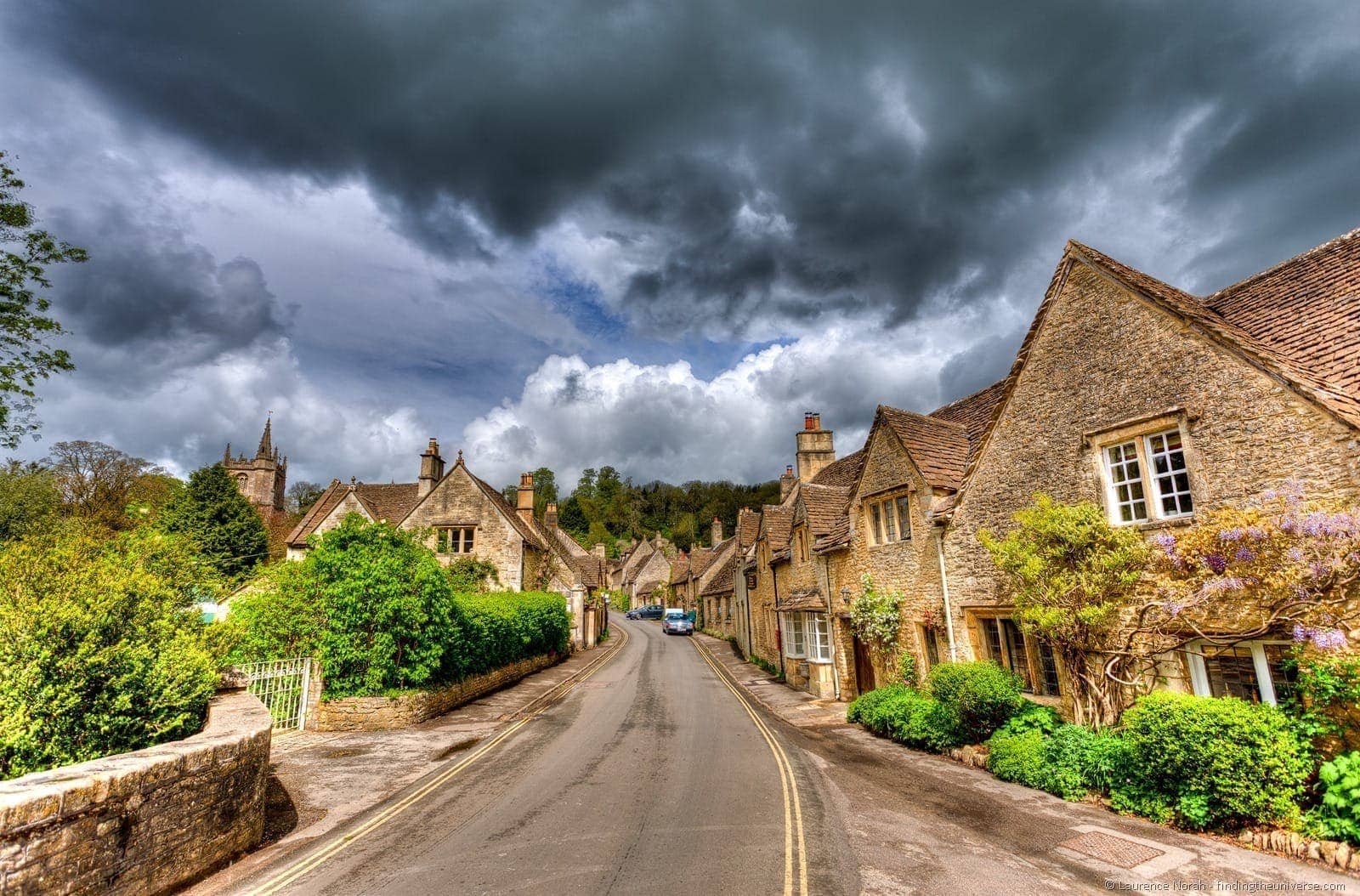
See our guide to taking a day trip to Stonehenge and a day trip to Oxford for some inspiration. If you’re a Harry Potter fan, then you may instead consider a trip out to the Harry Potter Studios where the films were made.
Of course, you will want to adjust this schedule depending on when you arrive and depart London. Our suggestion would be to take the day trip on your last day, overnight in London, and then take an early morning train to Paris.
Whilst you’re in London, we recommend getting around by public transport. It’s the most cost effective and also generally the most efficient way to get around. See our guide to public transport in London for some tips, as well as our overview of how to pay for public transport in London .
If you enjoy walking tours, there’s no shortage of options to choose from in the city. We love taking a walking tour when we first arrive in a new city – it can be a good way to get familiar with the city, plus you can ask your guide for local tips on places to eat and less well-known attractions.
If you do decide to take a walking tour, we suggest Take Walks for small group tour (tours range in length from a couple of hours to full day tours), and Context for private tours. We’d specifically recommend this full day walking tour with Take Walks as a possible option to consider.
You’ll most likely be arriving into London by plane, into one of London’s major international airports. London actually has six airports, but you’re most likely to land in either Gatwick or Heathrow. Whichever one you do land at, we have a guide to how to get from the airport to London .
Well, that’s your time in London covered. Now we’ll suggest a few places for you to stay, before giving you some tips on getting from Paris to London.
Where to stay in London
Some of our favourite hotels, from budget to luxury, in London are as follows:
- The Walrus Bar and Hostel – A well reviewed centrally located hostel
- The Z hotel in Shoreditch – Excellent value in a popular part of London with great dining options
- Point A Hotel – We’ve stayed here; the rooms are tiny but clean and it’s a great budget option.
- Lime Tree Hotel – A well reviewed boutique hotel, around nine minutes walk from London Victoria
- The Resident Victoria Hotel – A well reviewed and centrally located hotel offering excellent value for money. The room we stayed in was quite compact, but it had everything we needed
- The Savoy – true luxury as close to the city centre as you can get!
If you prefer an apartment, then we recommend Plum Guide .
Plum Guide doesn’t have quite so many choices as some other UK based websites , but they carefully curate their listings so their options tend to be of a very high quality whilst still being available at a range of price points. We’ve used them on a number of trips and always had a great experience. See their listings for London here .
If you can’t find what you want on Plum Guide or you want some new options to try out, we wrote a whole post on the best alternatives to AirBnB which you should check out!
How to get to Paris from London
We’d recommend taking the Eurostar train service from London to Paris. This departs multiple times a day, and the journey takes 2 hours and 16 minutes.
This is a lot quicker than flying, especially once you consider you’ll have to get to and from the airport on either end. The Eurostar will take you directly to Gare Du Nord. Get your tickets for that journey in advance here .
We also have a guide to getting from London to Paris which lists all the options you have.
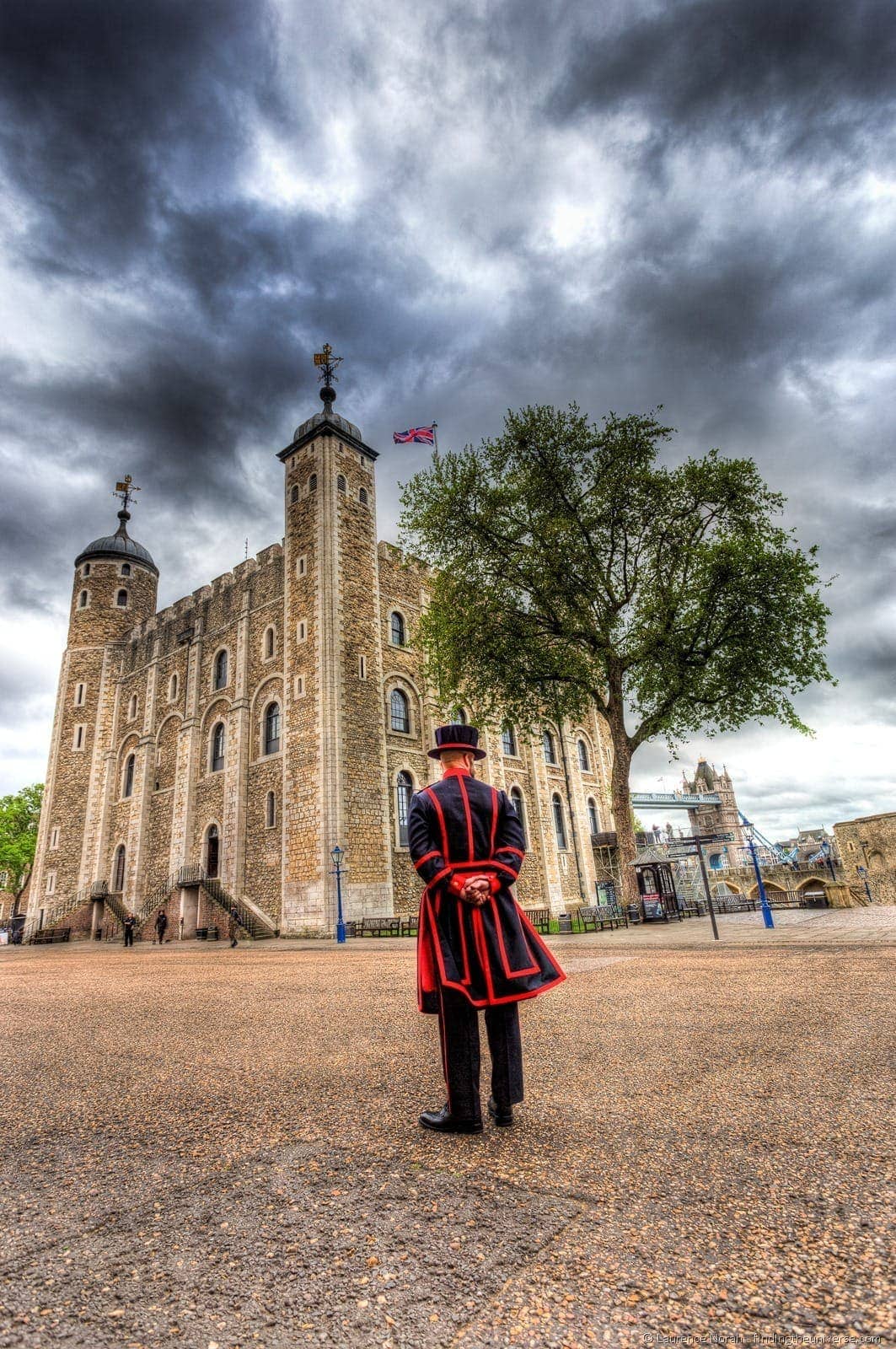
Days 4 – 6: Paris
Welcome to Paris – the city of lights and love! We’re going to suggest three full days exploring Paris, as the city has so much to offer.
After you’ve dropped your bags off at your hotel (or at a luggage storage location ), it’s time to start sightseeing. As with London, the plan is to see the major sights in the city.
We’re going to start off with the Eiffel Tower . This is without doubt Paris’s most famous landmark, and a must-visit when you come to Paris. You can either enjoy the views from below or head up inside the tower to one of the various stages.

If you do decide to go up the Eiffel Tower, we highly recommend you book your tickets in advance. The best place to do this is on the official website . There are often huge lines for tickets on site, and you don’t want to waste time unnecessarily. For a lot more tips for your visit, see our complete guide to visiting the Eiffel Tower .
From the Eiffel Tower, we suggest taking a cruise on the River Seine , which will let you see many of the highlights of the city from the river. You can book a discounted Seine River cruise which departs from near the Eiffel Tower with our link .
Alternatively, you might prefer to do an evening Seine River dinner cruise , in which case this will happen later.
After the cruise, you might consider a walking tour of Paris or a Hop on Hop off bus trip. Alternatively, consider visiting the Musee d’Orsay .
On your second day in Paris, we suggest you start bright and early with a visit to spectacular Sainte Chapelle , one of Paris’s prettiest churches. The stained-glass windows here have to be seen to be believed. Just be sure to turn up at or just before opening time, as the lines get very busy.
From here, you can pop across to Notre Dame if you want. Due to the fire in 2019 this is undergoing significant reconstruction work, so do keep that in mind. From Notre Dame, head across to the Louvre , one of the most famous art museums in the world.
There’s a huge amount to see here, including highlights such as the Mona Lisa and the Venus de Milo. You could spend a whole day here, but you may want to limit yourself to 2 – 3 hours so you can see more of the city! Book your tickets online in advance here .
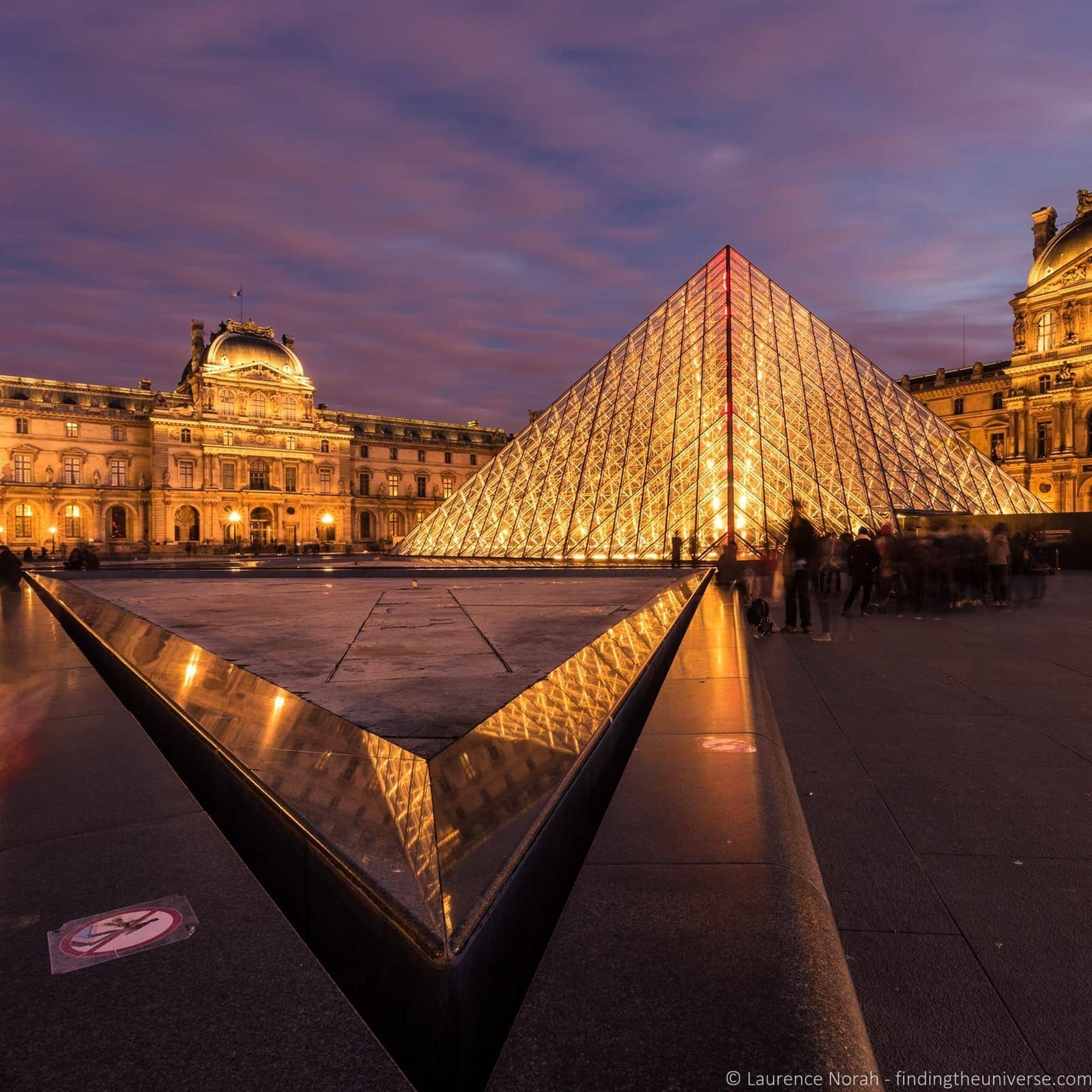
From the Louvre, if you have time, you might consider sneaking in a wine tasting session , or going for afternoon tea in Paris . From here, it’s time to head up the most famous shopping street in Paris, the Champs Elysees, where you’ll finish up at the Arc de Triomphe .
This massive archway stands in memory of those who died in the French Revolution and the Napoleonic Wars. The view from the top is one of our favourite views in Paris, so do head to the top if you have the time.
For your final day in Paris, our suggestion is that you head out to Versailles . This was the palace of French royalty, and is a stunning place to visit. You can book your tickets for Versailles in advance here .
Between exploring the palace and the extensive gardens, there is more than enough to do here to fill from half a day to a full day, which is why we suggest allocating most of the day to it. Then perhaps plan a nice dinner or show for your final evening.
We can recommend the evening show at the Moulin Rouge, and you can read about our experience at the Moulin Rouge here , and book tickets here .

And that’s all your sightseeing for your time in Paris on our European itinerary! For more detailed inspiration for your time in Paris, see our itinerary for 3 days in Paris and 2 days in Paris , which should give you lots more ideas.
For your visit in Paris, we recommend either the Paris Pass , or the Paris Museum Pass . The former includes a number of activities like the hop on hop off bus tour, guided Eiffel Tower climb, and Seine River cruise, as well as all the museums and sights included on the Paris Museum Pass. These both include most of the attractions we’ve listed, including Versailles.
You can buy the Paris Pass on the official site here , and the Paris Museum Pass here .
Again, for those of you who enjoy walking tours, we recommend Take Walks and Context . The former offer small group walking tours, whilst the latter primarily focus on private tours. We’ve taken tours with both companies in cities around the world and are always happy to recommend them.
As an example tour, check out this full day Paris tour , which includes a Skip the Line Louvre Tour, Eiffel Tower, Montmartre & Seine River Cruise.
As with London, the easiest way to get around Paris is to take public transport. Specifically, the Metro is likely going to be the fastest and most cost-effective way to get around.
We have a full guide to how to get around Paris , which should help you plan your transport in the city.
Now, we’re going to share some tips on where to stay in Paris, as well as how to get to the next city on your itinerary of Europe – Barcelona.
Where to stay in Paris
Our itinerary has you spending 2 nights in Paris, arriving by train on the morning of the first day, and departing either by plane on the evening of the third day. We suggest the following options for accommodation in Paris.
- 3 Ducks Hostel . A well-rated boutique hostel just 2 minutes from the nearest metro and a 22 minute walk to the Eiffel Tower
- Hotel Dress Code & Spa , A highly reviewed centrally located 4 star hotel
- Hotel Ekta Champs Elysees – a well rated 3* hotel just off the Champs Elysees
- Hôtel Eiffel Turenne , A well rated 3* hotel within a ten minute walk of the Eiffel Tower
- Ateliers de Montmartre , An apartment in Montmartre with views of the Sacre Coeur
- Vintage Paris Gare du Nord by Hiphophostels , A hostel located just next to Paris Gare du Nord
- George V – A fabulous centrally located 5* hotel, an excellent luxury pick
We’ve also stayed in Paris with Plum Guide in a gorgeous apartment with Eiffel Tower views. See their listings for Paris here .
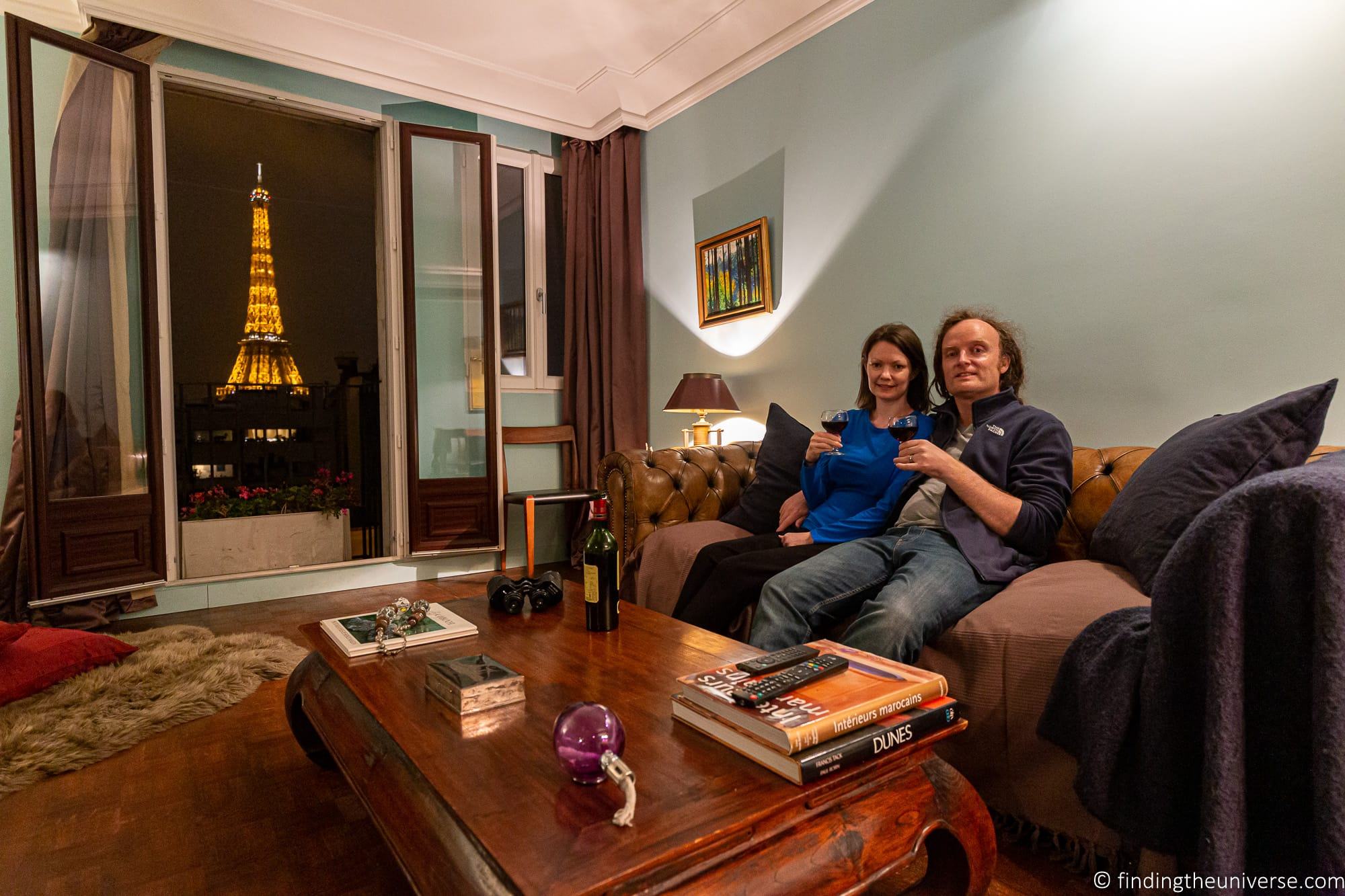
How to get from Paris to Barcelona
You have two main options for travelling from Paris to Barcelona, you can take the train, or you can fly.
There used to be a direct night train from Paris to Barcelona, but this was discontinued in 2013. So you can take a train in the daytime (around 6.5 hours journey time) or you can travel by a slower overnight train (around 13 hours).
We think flying is likely going to be the easiest option. There are a number of direct evening flights from Paris to Barcelona, taking just under two hours. Just try to book a flight from Paris Orly or Paris Charles de Gaulle. Many budget airlines operate from Paris Beauvais, which is quite a long way outside the city, and requires a lengthy coach journey.
Check flight times and prices online here . If you’d prefer to take the train, you can check train times and prices here .
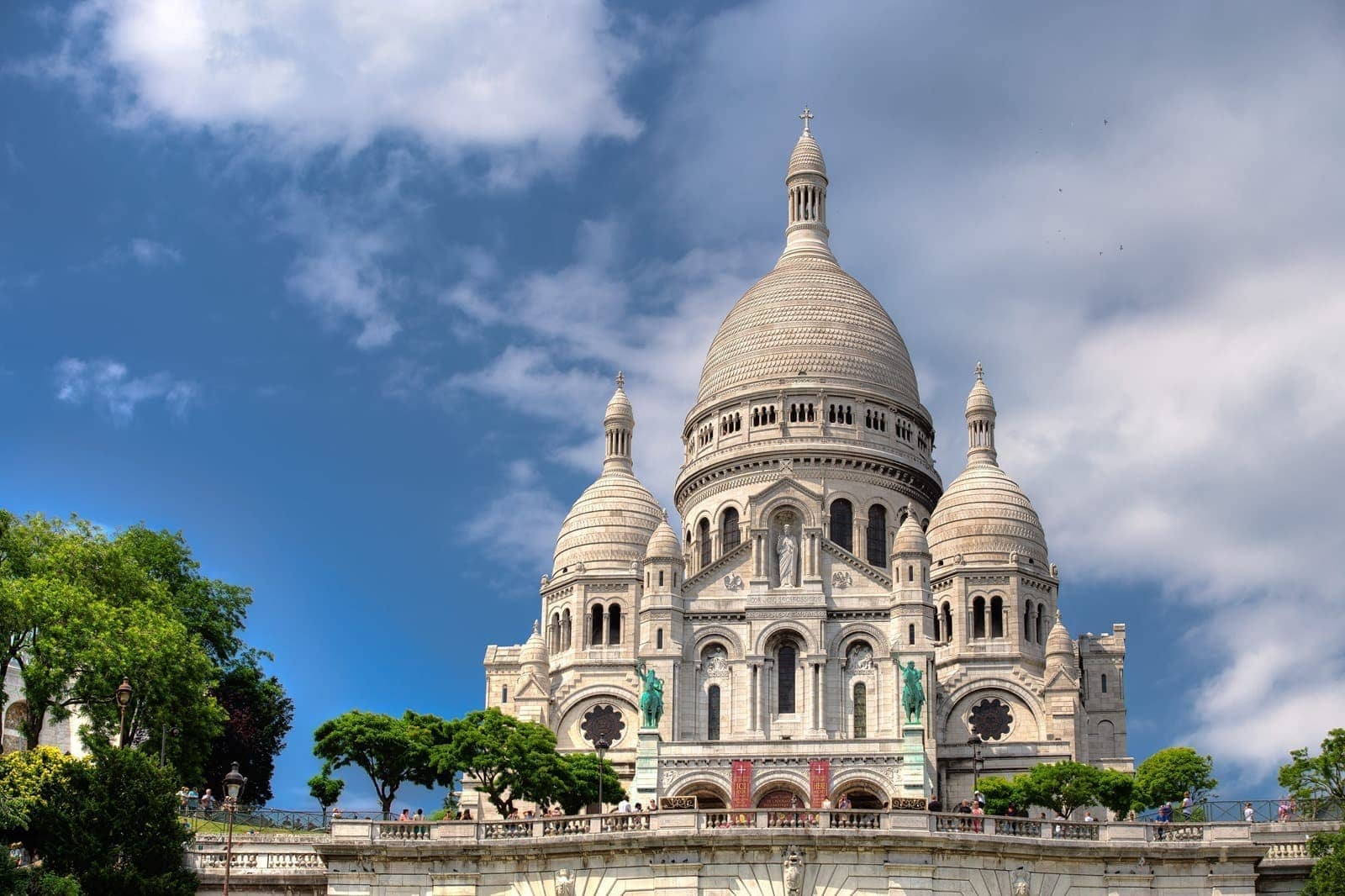
Days 7- 9: Barcelona
It’s time for the third city on your European adventure – Barcelona! Barcelona is full of incredible sights, including architectural gems from Antoni Gaudi, a gothic city center, and even a beach!
Again, we think you’ll need 3 days to do justice to all the sights in Barcelona. We’re also going to suggest a day trip from the city to explore some of the surrounding highlights. Here’s how your three days in Barcelona might look.
We suggest starting your first day with a trip to the Sagrada Familia . This was master architect Antoni Gaudi’s final work, and whilst construction was started in 1882, he didn’t live to see it completed. It’s getting there now, but still has some way to go!
The Sagrada Familia is a very popular attraction and they operate a timed entry system. It’s vital that you reserve your timeslot in advance, as otherwise you will end up in a very long queue, and at busy times of year, tickets sell out far in advance. You can reserve your tickets online here .
We also have a detailed guide to visiting the Sagrada Familia which we recommend reading in advance of your visit.

After spending a couple of hours at the Sagrada Familia, we recommend heading across to the nearby Recinte Modernista Sant Pau , a beautiful Art Nouveau style hospital building which has UNESCO world heritage status.
After the Recinte Modernista Sant Pau, continue on to Park Güell . This is a large public park which was also designed by Anton Gaudi, and there’s a lot to see here. Again, this is a popular spot with timed entry, and we highly advise booking this online in advance here .
Near Park Güell is the Gaudi Experience , where you can learn a bit about the man behind some of the wonderful architecture you have been experiencing. You can get tickets for that here if you are interested.
From the Gaudi Experience, you have a few options depending on your interest. If you are using the hop on hop off bus to travel around Barcelona (included on the Go Barcelona Pass ), it continues from Park Guell on to a number of other attractions.
These include the hill top fairground Tibidabo , the stunning Monastery of Pedralbes , and Camp Nou , the home of Barcelona’s football club.

We’re sure one or more of those will be of interest!
For your second day in Barcelona, we suggest starting with a visit to some of Gaudi’s famous houses near the city centre – Casa Batlló , and Casa Milá . These are popular, so try to get here by opening time so as not to have to queue for too long.
Then, continue your day by exploring the oldest part of Barcelona – the Gothic Quarter. Here you can visit the incredible Barcelona Cathedral , the UNESCO world heritage listed Palau de la Musica Catalana , and the Picasso Museum .
For your third day, you could continue to explore Barcelona. You could visit the beach, Barcelona Zoo , the attractions on Montjuic Hill – the list goes on! See our 3 day Barcelona itinerary for more ideas.
However, we think you might enjoy heading out of the city on a day trip to explore a bit of Catalonia, the region which Barcelona is capital of.
A popular day trip from Barcelona is a visit to Girona and Figueres, two lovely towns which are rich in history. Girona is home to stunning medieval architecture, and Figueres is known as the birthplace of surrealist artist Salvador Dali .
You can see our guide to visiting Girona and Figueres in a day here . In terms of tours, we suggest this full day tour which includes Girona and the coast, or this full day tour which includes Girona and time to visit the Dali Museum in Figueres.
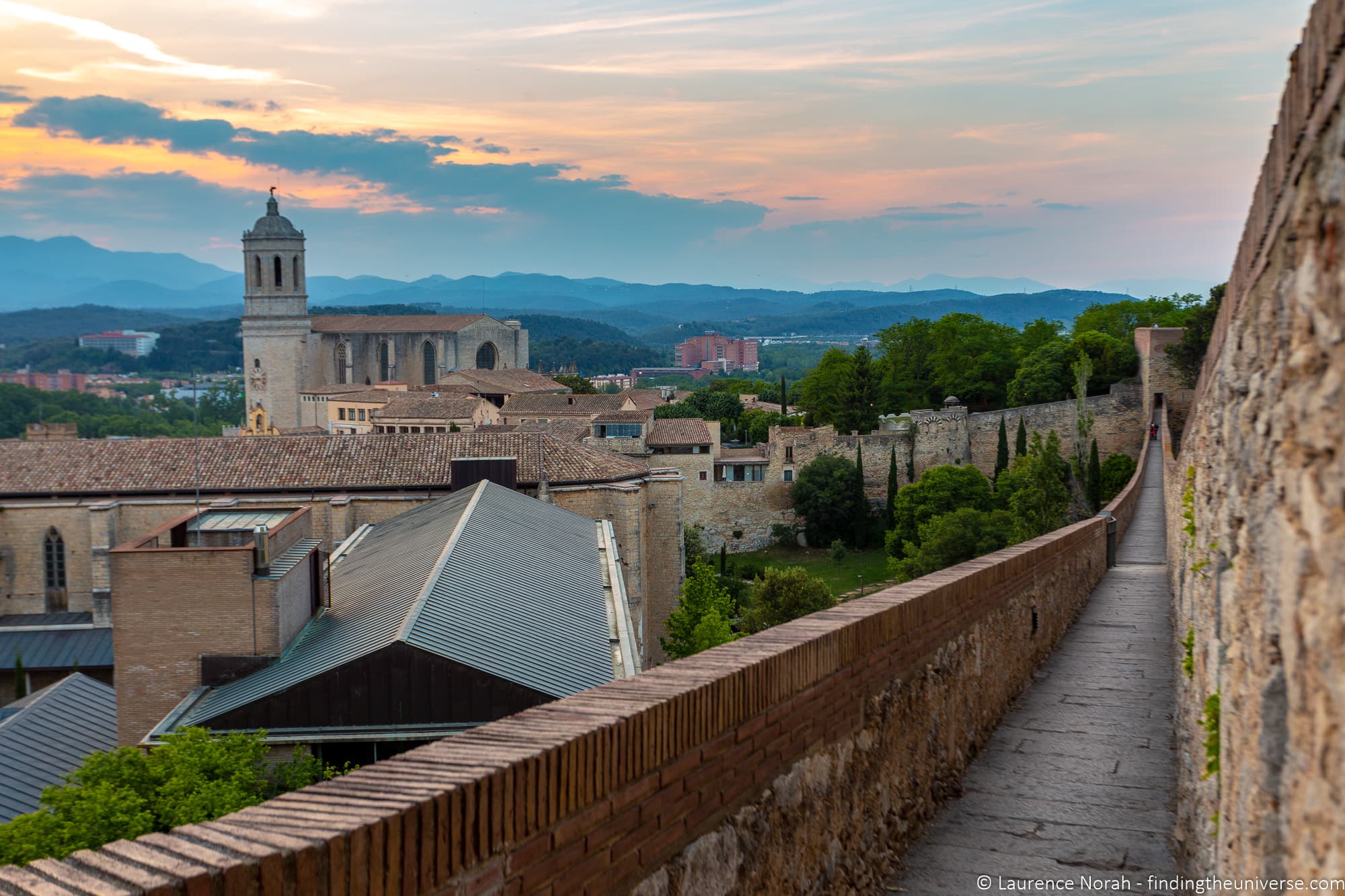
The other popular option is to visit the spectacular monastery and mountains of Montserrat, around an hour from Barcelona. You can see our guide to visiting Montserrat here for all the tips you need to do that.
Of course, there are lots of other tour options. You could go hot air ballooning , visit the Vall de Nuria , go skiing (if you visit in winter), go hiking in La Garrotxa , visit the Montserrat monastery – the list goes on!
That just about wraps up our suggestions for what to see and do with your three days in Barcelona.
To further help you with your planning for Barcelona, we have some guides we think you’ll find useful. See our itinerary for 3 days in Barcelona , our guide to Gaudi sites in Barcelona , and our favourite photography locations in Barcelona to get you started.
There are a few city passes for Barcelona, including the Barcelona City Pass , the Barcelona Card , and the Go Barcelona Pass . These work slightly differently, and so one or the other might be better for you. See our full break down and review of all the passes in our comparison of the Barcelona Discount Passes .
For most visitors we think the Go Barcelona Pass will offer the best value as it includes the main attractions like the Sagrada Familia, Park Guell and hop on hop off bus tour. We also have a full review of the Go Barcelona Pass to help you decide if it’s going to save you some money.
Finally, it’s worth bearing in mind that Barcelona has a bit of a poor reputation when it comes to petty crime, specifically around pick pockets, and items like phones being swiped off cafe tables. We have not personally experienced this, but have heard firsthand accounts from readers and friends who have.
We have more on this in our section below with tips for safety when travelling in Europe, but just try to keep your valuables out of sight all the time, ideally in zipped and secured pockets.
Now, let’s look at some options for where to stay in Barcelona, before planning how to get to the next city in your Europe itinerary.
Where to Stay in Barcelona
Here are a few options for your stay in Barcelona across a variety of price points, including a number of hotels we’ve personally stayed in and can recommend.
- Hotel Barcelona Catedral – A 4* property in Barcelona in the heart of the Gothic Quarter. We’ve stayed here, and enjoyed the roof top pool and incredible central location.
- Hostel One Ramblas – A very well reviewed and very central hostel option
- The 8 Boutique B&B – A highly rated and well located bed and breakfast
- Duquesa de Cardona – A 4* property on the waterfront with a roof top bar
- Leonardo Hotel Barcelona Las Ramblas – Part of the good value Leonardo chain, this 3* property is a few moments from Las Ramblas. We enjoyed our stay here, and the breakfast in particular was excellent.
- Ohla Barcelona – A very central 5* property with a roof top pool and excellent reviews.
How to Get from Barcelona to Venice
From Barcelona, the next stop on the trip will be Venice, Italy. If you are travelling for less than two weeks, you might want to skip Venice, and head straight to the last city on this itinerary, but for two weeks in Europe, we think Venice is a great addition.
The main option you have for getting from Barcelona to Rome is to fly. Of course, you could take the train, but as the average journey is around 22 hours and requires a number of changes, we’d suggest a flight is going to make more sense.
A direct flight from Barcelona to Rome is just under 2 hours. You can either go on your evening of your final day in Barcelona or the morning of the following day, it’s up to you. We think travelling in the evening makes more sense so you don’t lose time sightseeing in the morning.
Check times and book your flights here .
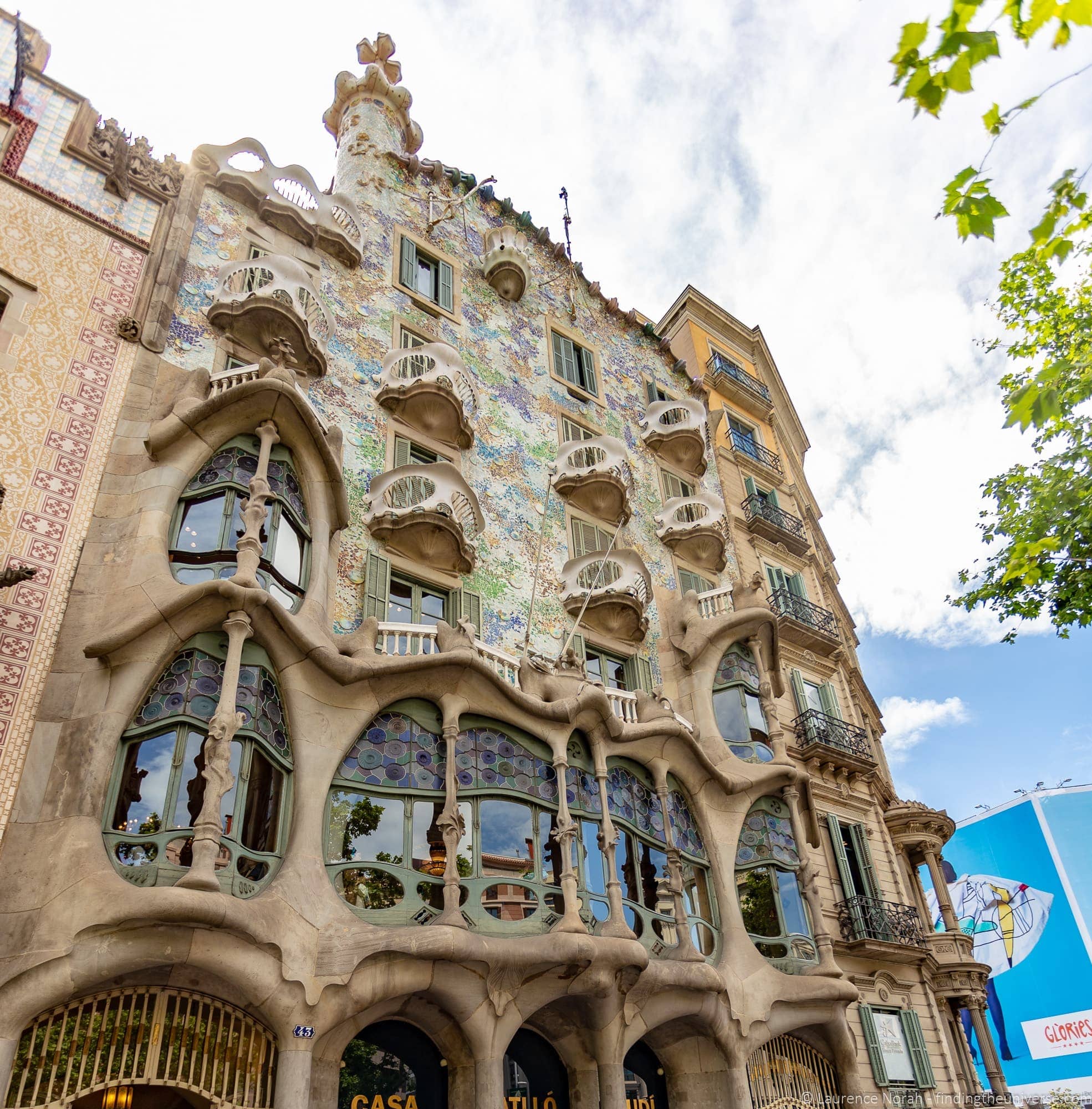
Days 10 – 11: Venice
You’ve arrived in the fourth and final country of your 2-week European itinerary – Italy! Home to amazing gelato , delicious coffee , and oodles of history.
We’re going to visit two cities in Italy on your European itinerary, both of which are favourites with visitors to Italy – us included! Of course, it’s hard to pick a second city in Italy from all the amazing options, but we think Venice is a must. Naturally, this will be followed by Rome.
We’ve put Venice ahead of Rome for the simple reason that it’s relatively easy to fly to Venice from the rest of Europe, but a little bit harder to fly onwards from Venice to international destinations. Ending the itinerary in Rome should make it easier for you to travel onwards to international destinations.
Anyway, we’re getting ahead of ourselves.
The next city on your European adventure is the beautiful city of Venice. This car-free city is famous for being built across a number of islands, with waterways and boats replacing roads and cars.
Venice is definitely one of our favourite cities in Europe, and was where we had our wedding ceremony with friends and family. So it’s definitely a city that is close to our hearts.
We’re going to recommend you spend two days in Venice. Many people visit the city for a day, which is do-able of course, but to really get a feel for Venice, we think you’ll enjoy spending two days here.
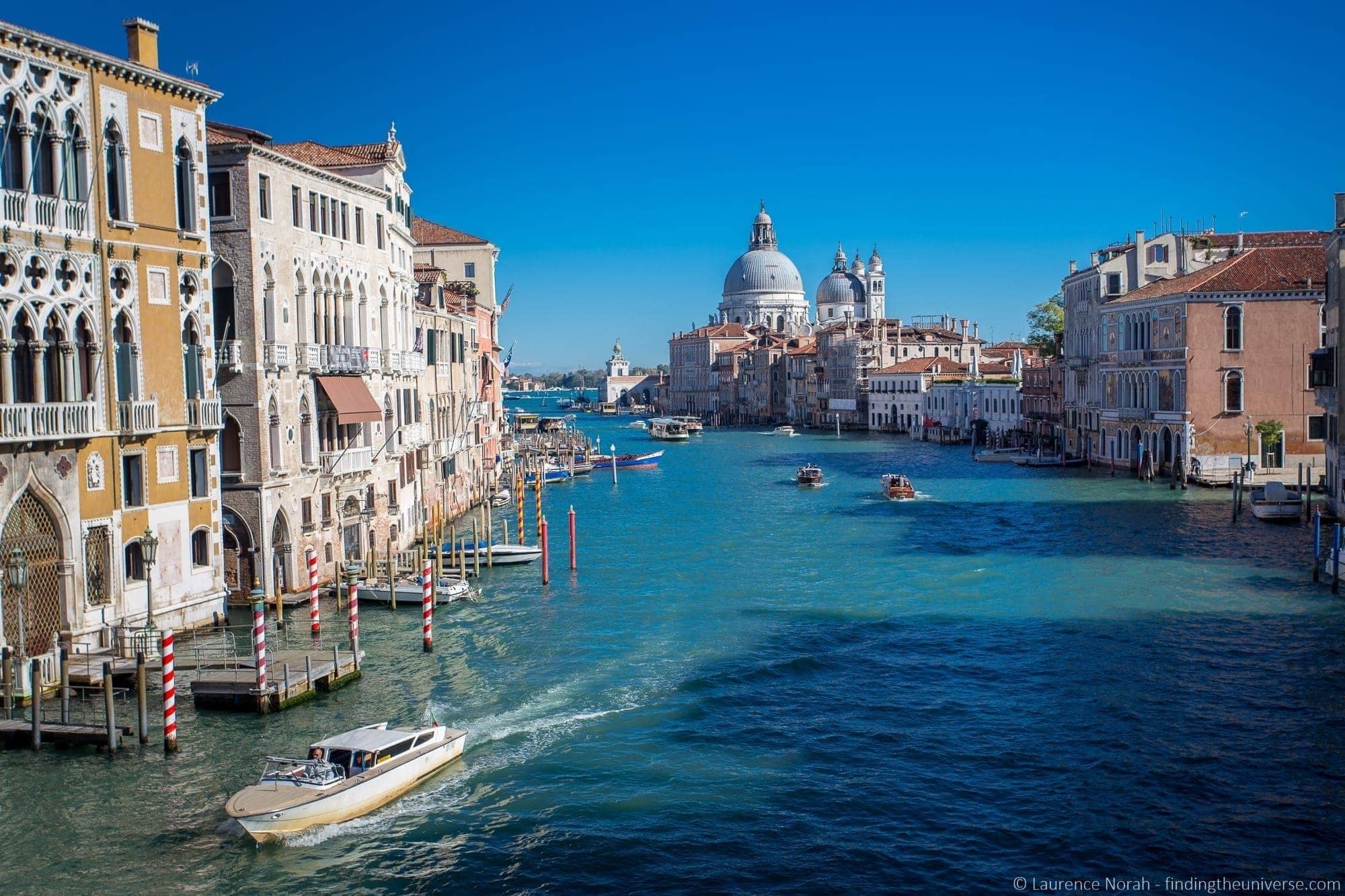
Our recommendation for your two days in Venice is to spend the first day exploring the highlights of the city – places like St. Mark’s Square, the Doge’s Palace and the Rialto Bridge. Take a Gondola ride , listen to musicians playing in the cafes, and get lost down the countless winding alleyways.
For your second day, we recommend taking a boat out to one of the islands around Venice, like Murano or Burano. These are much quieter with a different vibe to Venice itself, and we think you’ll enjoy this as a way to finish off your grand European adventure.
For more inspiration on what to do in Venice, see our guide to spending a day in Venice . We also recommend reading our guide to visiting the Doge’s Palace and St. Mark’s Basilica .
Of course, if you would prefer to visit another city in Italy other than Venice, you could spend these two days in any number of destinations, including the Amalfi Coast, Cinque Terre, Naples or Florence . You could even do a one day stopover in Florence on your way to Rome, rather than spending the two days in Venice. It’s entirely up to you, and depends on the flights you can find.
Where to Stay in Venice
Venice has a great many options for accommodation. Just be aware that many of the properties are old (as is much of the city!), and so elevators are not always standard. In addition, there are no vehicles allowed, so to get to your hotel from the train station you’ll need to take a ferry boat, water taxi, or walk.
- Casa Cosmo – a great value well rated budget option, five minutes walk from St. Mark’s Square and the Rialto Bridge. Rooms are air conditioned and are en-suite
- B&B Bloom Settimo Cielo – A highly rated and good value B&B breakfast, 10 minutes from St. Mark’s Square and the Rialto Bridge. Individually designed rooms have en-suite facilities, and there’s a rooftop terrace
- Leon Bianco on the Grand Canal – this historic property with Grand Canal views is where we stayed for our wedding ceremony in Venice. The views are fantastic, and it’s amazing value for the location
- Hotel Saturnia & International – a lovely 4* hotel just moments from Saint Mark’s Square, this turn of the century hotel offers en-suite rooms, a terrace with views, and an on-site restaurant.
- The Gritti Palace – a 5* luxury property right on St. Mark’s Square – this is the place you stay if you want to be in the middle of everything
How to Get from Venice to Rome
The best way to get from Venice to Rome is to take the train.
As always, you’ll get the best prices if you book your tickets in advance. You can check train times, prices, and book online here .
There are also flights, but by the time you have gotten to the airport, checked in, and then collected your baggage at the other end and gotten from Rome airport to the city center, you might as well have taken the train!
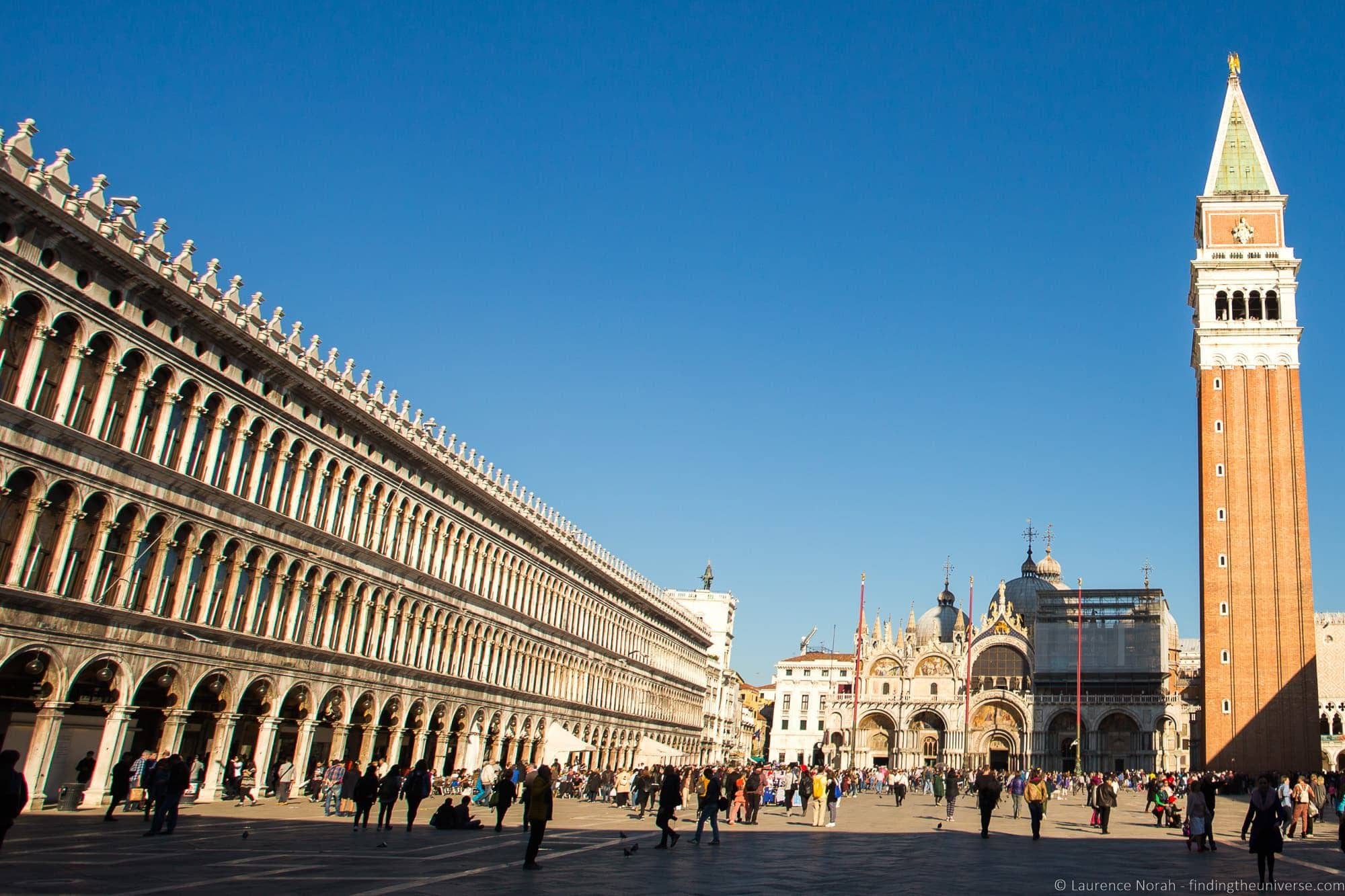
Days 12 – 14: Rome
Your next stop in Italy, and the last stop on your Europe itinerary, is the Italian capital of Rome. Founded almost 3,000 years ago, Rome is absolutely stuffed full of historical wonders and attractions.
We think that to do Rome justice, you should spend three days here. Here’s how those days might look.
Start your first day with a visit to the Colosseum . Built during the height of the Roman Empire, and nearly 2,000 years old, this is the largest amphitheatre in the world. It’s a must when in Rome.
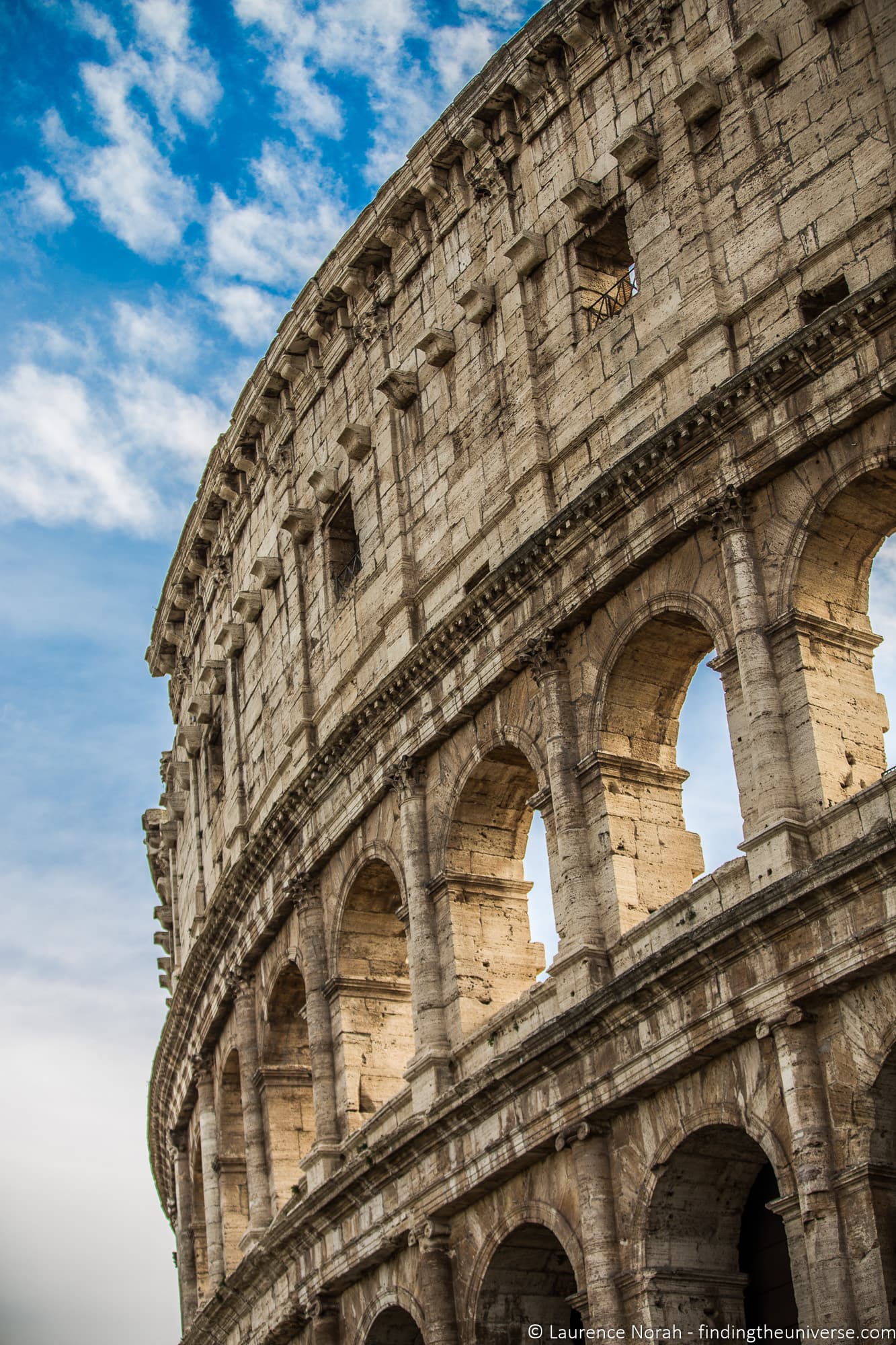
Do be aware that like many of the other popular attractions in our itinerary, the Colosseum operates a timeslot system for entry, and you absolutely need to book in advance. See our complete guide to visiting the Colosseum for more on that.
After the Colosseum, we recommend visiting the Roman Forum, which is next to the Colosseum, and usually included on the Colosseum entry ticket. This was the heart of the Roman Empire, and is also a must when visiting Rome.
You’ll likely already be half way through your first day already. We suggest spending the rest of the day exploring the historic city center, with attractions like the Spanish Steps, Pantheon, and Trevi Fountain.
For your second day in Rome, we recommend you head to the Vatican City. This is a city-state inside Rome itself, and is home to the Vatican Museums and St. Peter’s Basilica. The Vatican Museums are home to world renowned works of art as well as the Sistine Chapel – a masterpiece of Renaissance art.
Both these attractions are very popular, and you will want to plan in advance to ensure you don’t waste time standing in line if you are visiting at a busy time of year. You have a few options.
First, you can take a guided tour which includes the Vatican and St. Peter’s Basilica like this one .
This will give you loads of information about what you are seeing and ensure you don’t waste time standing in line.
Another option is to invest in a pass which includes skip the line entry or a tour of these attractions. We would suggest looking at the Rome Tourist Card which includes skip the line access to the Vatican, Colosseum, and St. Peter’s Basilica.
You can also consider the Omnia Vatican and Rome Card , although this doesn’t currently include skip the line access to St. Peter’s Bascilica.
Finally, you can book individual tickets here for the Vatican via their official website (or here on GetYourGuide , which is easier to use in our experience).
As of early 2023 St Peter’s Basilica doesn’t actually have an entry fee, but nor does it have skip the line tickets (skip the line tickets used to be an option and we hope they come back soon!). So the best option if you want to skip the line is to invest either in a tour or a pass which includes a tour like the Rome Tourist Card .
You can also book Vatican tickets here , using our link gives you 5% off their usual price for Vatican tickets. It’s a little more expensive than the official website but somewhat more user friendly in our experience.

We recommend allocating at least half a day to explore the Vatican Museums, Sistine Chapel and St. Peter’s Basilica.
For lots more information on visiting the Vatican City and its attractions, see our complete guide to the Vatican , which has everything you need to know, including all the highlights, tips for visiting, how to buy tickets and lots more.
From here, head along to the Tiber River, and explore Castel Sant’Angelo (get tickets here ). Afterwards you can head back towards the city center, and visit locations like the Piazza Popolo.
If you have time and are interested you could also visit the Borghese Gallery. Note that this is also a timed entry system – see our guide to visiting the Borghese Gallery for more.
For your last day in Rome, we recommend spending some time exploring the Appian Way. This was one of the major routes in and out of the city, and is home to a number of ancient Roman ruins, as well as catacombs. A stop at the Baths of Caracalla on your way out of the city is also recommended.
Another option for your last day in Rome (or your first day, depending on how you decide to structure your itinerary) is to take a walking tour.
We’ve taken a number of walking tours in Rome with both Take Walks and Context , and enjoyed them all. As an example, see this introduction to Rome which includes gelato tasting!
For more inspiration for your visit to Rome, see our itineraries for 3 days in Rome , 2 days in Rome and a day in Rome .
In terms of saving money, there are a number of passes available for sight-seeing. For 3 days, our recommendation would be the Omnia Rome and Vatican Card. This includes public transport in Rome, a hop on hop off pass, and skip the line entry with timed reservations at the major attractions.
There are other passes as well, including the Roma Pass , the Rome Tourist Card and the Best of Rome All Access pass . Which is best for you will depend on how many sites you are interested in visiting, and whether you plan on using the specific features they offer.
That pretty much finishes up the itinerary section of this post. We’ll share with you our tips for where to stay in Rome, before moving on to some practical information to help you plan this trip perfectly.
Where to Stay in Rome
We recommend the following hotels in Rome. The first three are near the main train station, which will make for an easier transfer when you arrive from Venice.
- Gioberti Art Hotel – 50 yards from Termini Station, a well rated excellent value 4* hotel
- NH Collection Palazzo Cinquecento – Awesome value 5* hotel just a few steps from the train station
- Hotel Valentino Palace – a fantastic mid-range 3* property, just 150 yards from the train station
- The Navona Theatre Hotel – a well reviewed and very centrally located 3* hotel
- The Mimosa Pantheon Hotel – an excellent value budget hotel just around the corner from the Pantheon
- The Hotel Navona – a well reviewed 3* hotel next to the Pantheon
- Di Rienzo Pantheon Palace – a centrally located well reviewed boutique hotel within walking distance of Rome’s highlights
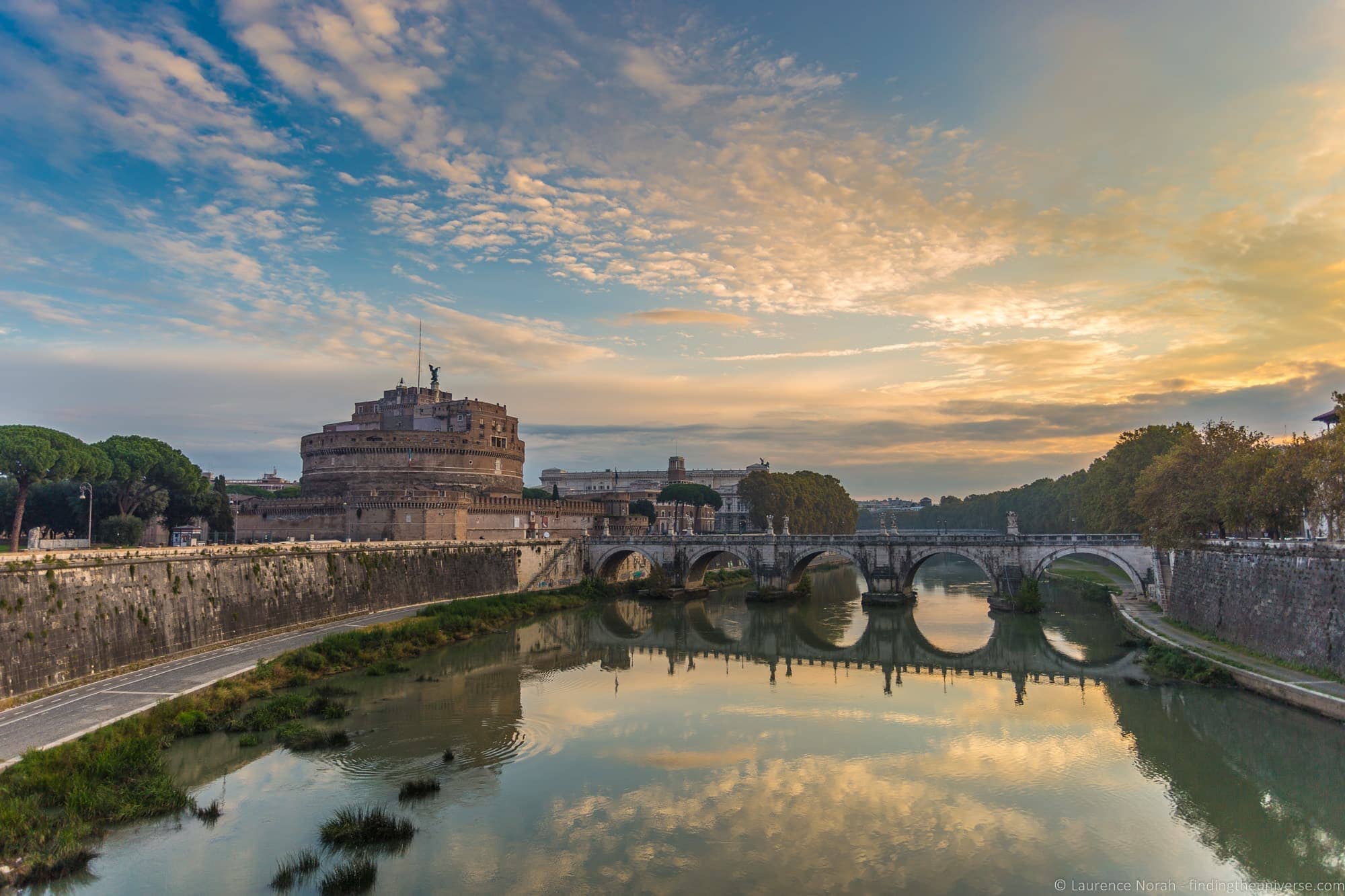
2 Week Europe Itinerary Map
To help you visualise this itinerary, we’ve put together this overview map of the stops and route.
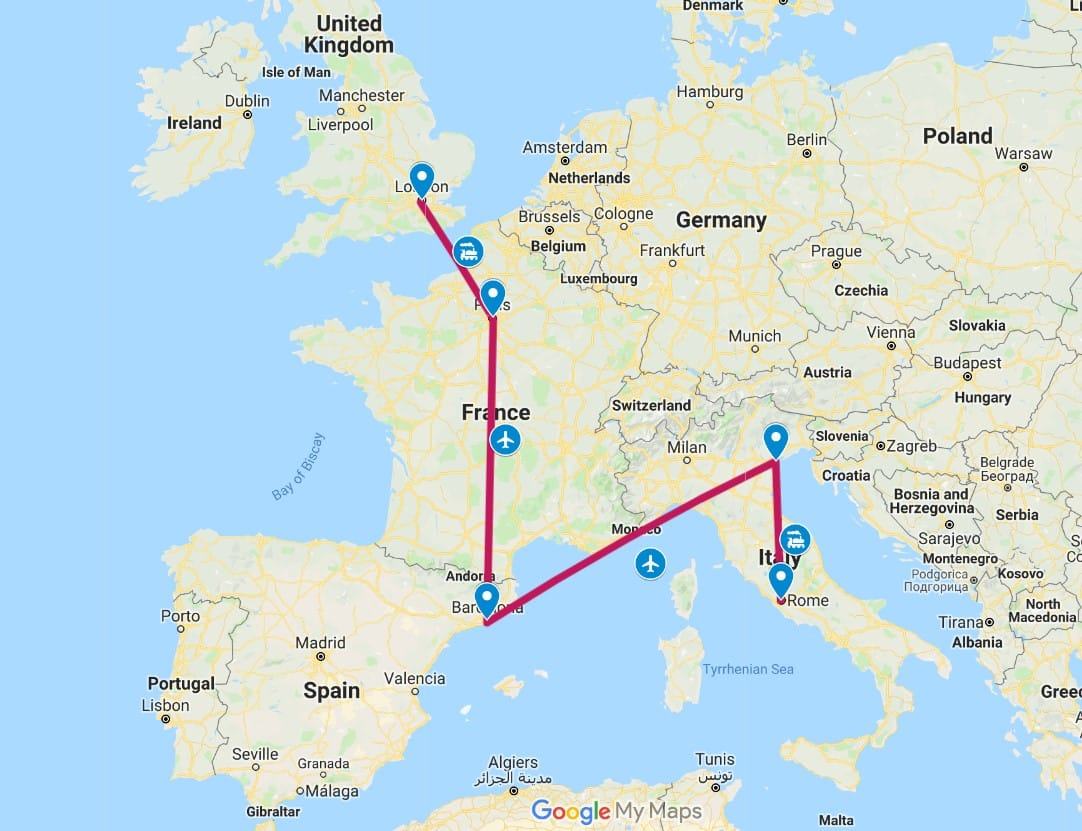
2 Week Europe Itinerary Summary:
- Day 1: London. Houses of Parliament, Westminster Abbey, Trafalgar Square, Covent Garden, Churchill War Rooms, Buckingham Palace and the London Eye .
- Day 2: London. Tower of London , Tower Bridge, Borough Market, St. Paul’s Cathedral, the Tate Modern, Shakespeare’s Globe and the Shard.
- Day 3: London. Windsor Castle, Hampton Court Palace, Stonehenge
- Day 4: Paris. Eiffel Tower, Seine River Cruise, Musee d’Orsay, Walking tour
- Day 5: Paris. Saint Chapelle, Notre Dame, Louvre, Arc de Triomphe
- Day 6: Paris. Versaille, Moulin Rouge
- Day 7: Barcelona. Sagrada Familia, Recinte Modernista Sant Pau, Park Güell, Gaudi Experience, Camp Nou
- Day 8: Barcelona. Casa Batlló, Casa Milá, Barcelona Cathedral, Palau de la Musica Catalana, Picasso Museum
- Day 9: Barcelona. Girona & Figueres
- Day 10: Venice. St. Mark’s Square, Doge’s Palace, Rialto Bridge, Gondola ride
- Day 11: Venice. Murano, Burano
- Day 12: Rome. Colosseum, Roman Forum, Spanish Steps, Pantheon, Trevi Fountain.
- Day 13: Rome. Vatican Museums, St. Peter’s Basilica, Castel Sant’Angelo, Piazza Popolo, Borghese Gallery
- Day 14: Rome. Appian Way, Baths of Caracalla
How to Get Around Europe
Europe has no shortage of transportation options to get you from place to place. For this itinerary, we would suggest you primarily use the train to get from city to city.
The high speed trains in Europe run frequently, are very comfortable, and are more environmentally friendly than short hop flights. If you book in advance they can also be cost effective. They also have the advantage that there are fewer baggage restrictions, and train stations tend to be in the city center – unlike airports.
Of course, not every segment of this trip would suit a train. For example, from Barcelona to Venice would take at least 24 hours by train. Also, Paris to Barcelona is a fairly lengthy journey. There is the option to take an overnight train, however it isn’t direct so it takes a while. It does save you the cost of a hotel night though.
For train travel across Europe, it’s important to book your tickets in advance as this will get you the best prices. We recommend thetrainline which supports booking tickets in all the countries visited on this itinerary.
For flights, we suggest you try Kiwi , which includes the major low cost airlines as well the more traditionally priced carriers.
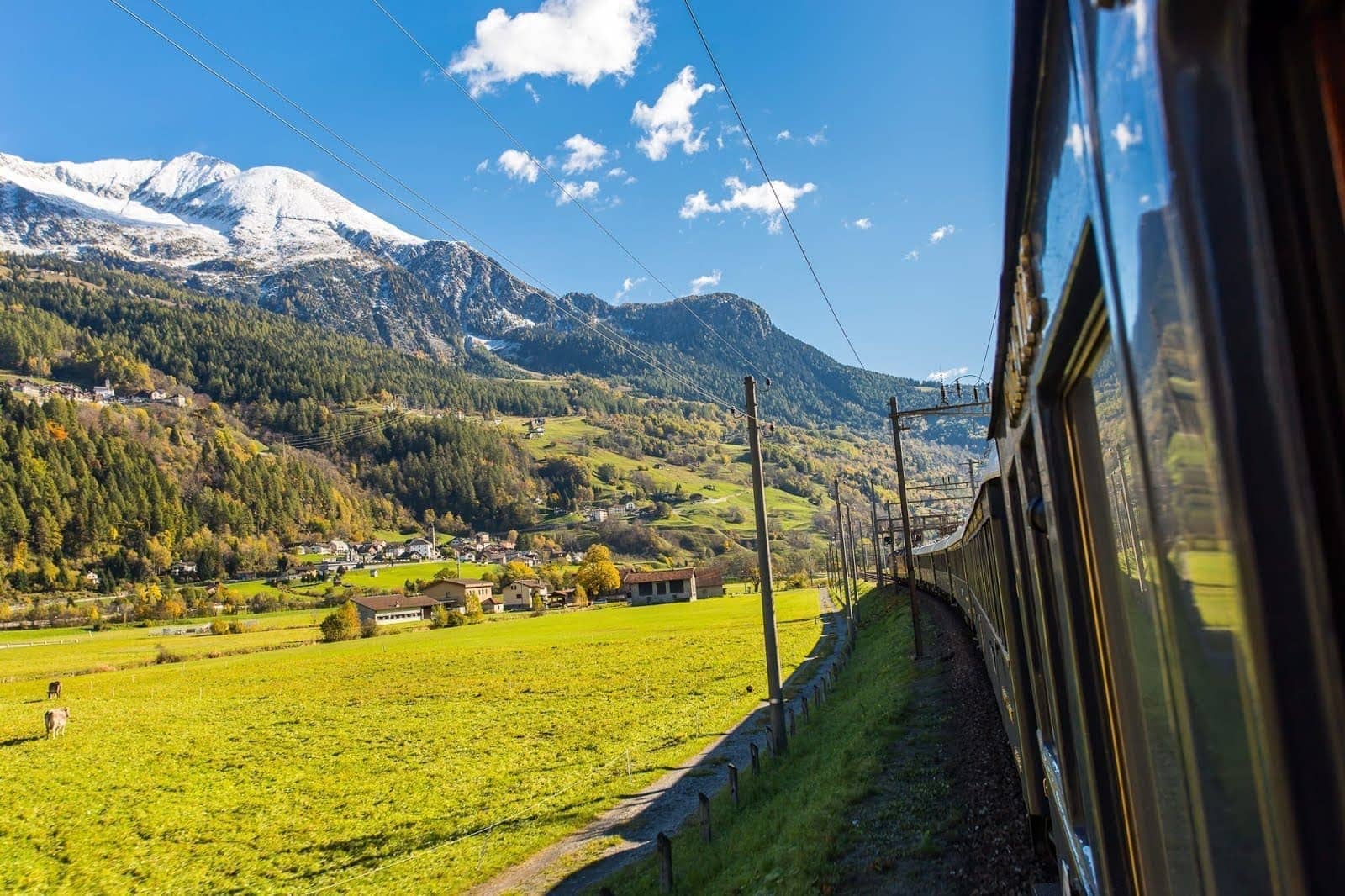
When to Visit Europe
You can certainly visit Europe year-round, although visiting at different times of year will give you different experiences.
For the most part, summers in Europe are quite warm, with temperatures likely to be between 25C & 32C (77F – 90F) on average. Whilst the weather is going to be most reliable in the summer months of June through August, this is also going to be the busiest time of year to visit.
The cities in particular are very popular with visitors, and lines for attractions can be long at these times of year. We wouldn’t say you shouldn’t visit at this time of year, but you should definitely plan ahead and arrange all your entry tickets so as to make the most effective use of your time.
Our favourite time to travel in Europe is the shoulder months of April / May, and September / October. These months tend to offer a combination of reasonable weather and less busy attractions.
We’ve also travelled extensively throughout Europe in the cooler winter months, from November through to March. It never gets much below freezing during this time, so as long as you dress appropriately, we think you will have a great time.
See our guide to what to pack for London to give you some ideas of what you might want to bring along.
We don’t think there’s a bad time of year to travel in Europe. It’s just a question of planning and preparing properly in advance. It is also worth checking if there are any events happening in the city when you visit that might cause it to be busier.
For example, Venice has a major Carnival celebration near the start of the year, and the city is always busier at this time. Other cities also have events, and if you visit during them you will find accommodation prices will be higher, and the city will be busier.
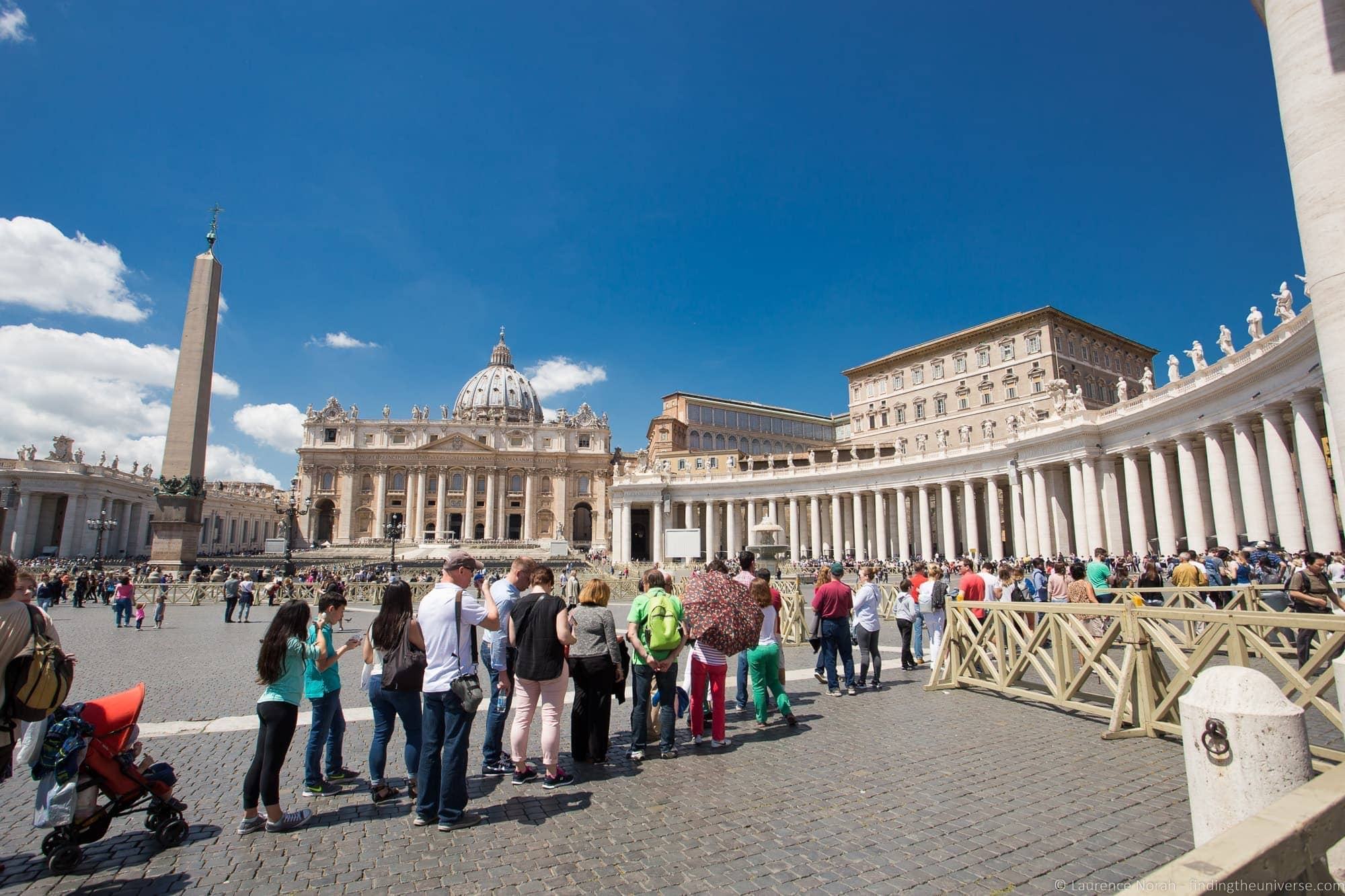
Practical Advice for Travelling in Europe
Europe uses a 220-240V electrical system, so if you are travelling from the USA, Canada, or any other country that uses a 110V system, you will need to check that your electrical items are compatible.
In our experience, lower power items like laptops and smartphone charges are compatible from 110V – 240V, but higher power items like hair dryers and hair straighteners are usually not. The power rating and acceptable voltage should be marked on the device somewhere.
It’s really important you don’t plug a device into a voltage it doesn’t support, as it will damage it. Its best to leave non-compatible items at home and purchase a dual voltage appliance if you need it during your trip, such as a dual voltage hair straightener .
In addition, the UK and continental Europe have two different plug types. Mainland Europe generally uses a two pin system with round holes, whilst the UK has a three pin system with rectangular holes.
For travel, therefore, you will need a travel adaptor like this which will let you plug your devices in. Note that most travel adaptors are not voltage convertors. You would need something like this to convert the voltage.
Internet in the form of free WiFi access is fairly easy to get access too across all the cities mentioned in our article. In addition, since the EU has abolished roaming charges, if you buy a SIM card in one EU country, you should be able to continue to use it in other countries without any additional charges.
Depending on the device you are travelling with, you will have a number of options for accessing the internet when you travel, from picking up a local SIM, to renting a WiFi hotspot, to just using WiFi as you go.
We have a detailed guide to getting online when you travel to help you figure out which is best for you.
The two currencies that you’ll need for this trip are the pound sterling (GBP) and the euro (EUR). The UK (London in the case of our itinerary) uses the pound sterling and the rest of the European destinations on our itinerary use the Euro. Euros from one country can be used in any of the other countries.
In our experience, you should be able to pay for the majority of your travel spending using a credit or debit card. We’d advise getting one of these that doesn’t impose foreign transaction fees if that is an option. Ideally it will also support contactless technology, which will make using it for smaller payments easier.
We would also suggest you always have some cash in the local currency on you for small purchases, tips, and places that don’t accept credit cards (or if there is any issues with your credit card).
There are cash machines available in all the major cities on this itinerary where you will be able to use your bank card to withdraw a local currency. Depending on the policy of your bank at home, you might be able to withdraw cash from these without a fee, but do check in advance of your travel so you don’t pay fees unexpectedly. Some ATM’s also charge a fee.
If there is a fee from your bank for withdrawing cash, you might find it is more cost effective to order some money at home before you leave – or to find a bank account that lets you withdraw cash fee free.
All the cities that we have listed are relatively safe, but of course you should take the same safety precautions when travelling that you would at home. Avoid walking alone at night in unfamiliar areas and don’t leave valuables lying around where they could be easily snatched.
It’s also a good idea to read up on some of the common scams that you might encounter in each city – for example, we wrote a guide to common scams in Paris to give you an idea of what to look out for.
We’d also suggest keeping your valuables locked in your hotel safe when possible, and to avoid carrying large amounts of money on you. We’d also suggest having a good travel insurance policy. Basically, just apply the same safety principles that you would at home to your personal belongings and safety, and you should have a safe trip!
Drinking Water
Unless otherwise indicated with a sign, the water in the taps in all of the cities on our list is safe to drink. In some cities, you’ll also found water fountains where you can refill your water bottle.
The water in Barcelona does have a slightly strange taste due to the high mineral content, and many local people prefer to drink bottled water. However, the tap water is safe to drink unless otherwise noted.
We very much recommend that you travel with a high quality reusable water bottle like this and fill it up as you go. This will be friendlier to the environment, and save you having to spend money on a resource that is available for free.
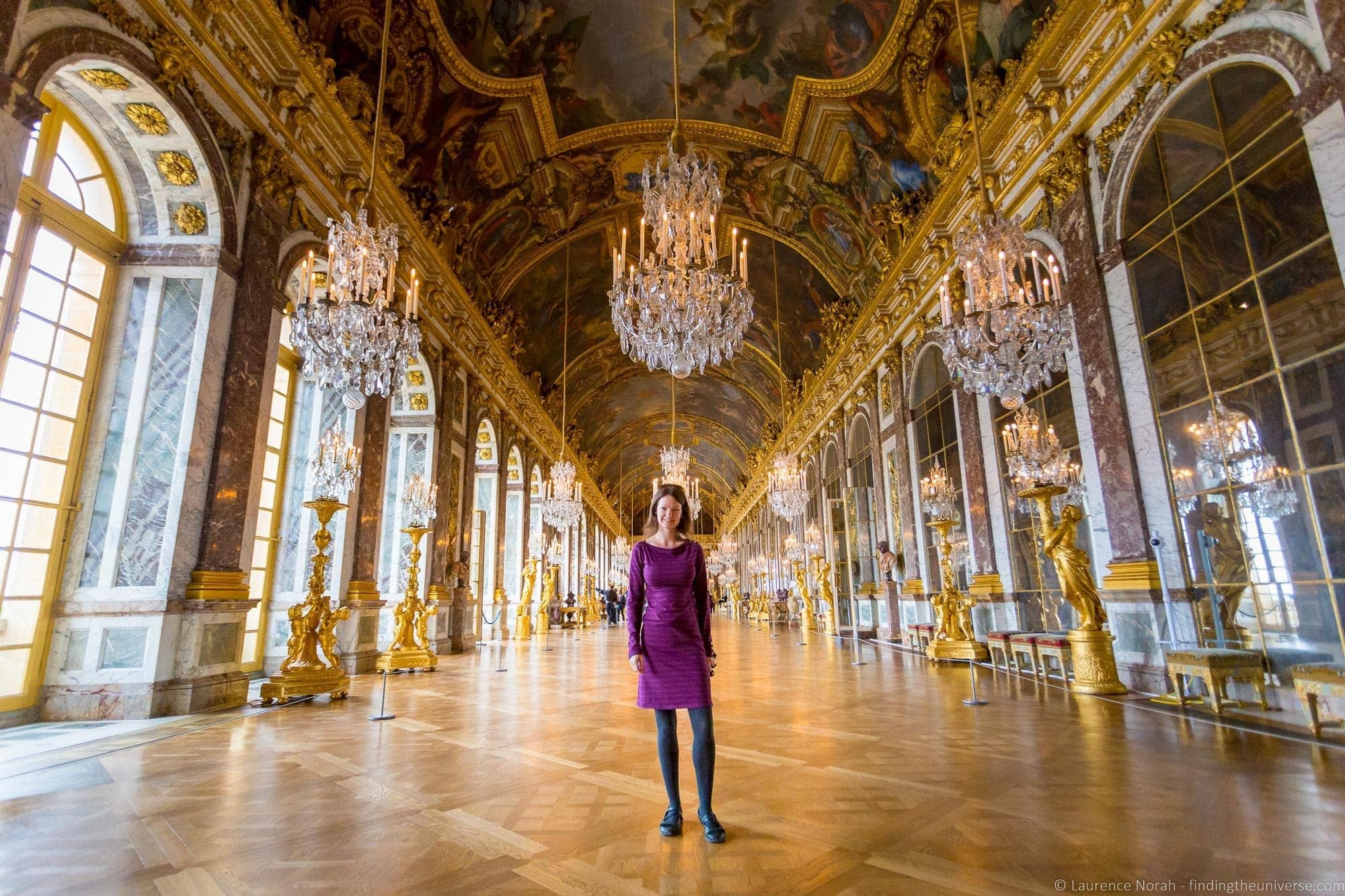
Walking Tours in Europe
One of our favourite ways to explore a new city is to take a walking tour. It’s a great way to get oriented, learn about the city, its sights and its culture, plus get local tips on places to eat, drink and see from the guide.
We’ve taken walking tours in cities around the world, and we nearly always use one of two companies – Take Walks , and Context . Both of these companies offer small group walking tours in all the cities we’ve covered.
Take Walks offers tours with groups of up to around 14, whilst Context offers more private and semi-private tours. Here are some example tours to consider for the various cities in this itinerary.
- This London In a Day tour visit the highlights of London in one day, including the Tower of London, Westminster Abbey & Changing of the Guard.
- This introduction to London Tour which includes many of the highlights of the city
- This tour of the Chruchill War Rooms in London
- This full day tour of Paris which includes a Skip the Line Louvre Tour, the Eiffel Tower, Montmartre & a Seine River Cruise
- An introduction to Paris Tour , which includes the Louvre, Opera Garnier and the Champs-Elysees
- A full day tour of Barcelona which includes a visit to La Sagrada Família, Casa Milà & the Gothic Quarter
- This Rome In A Day Tour which includes a guided visit and skip the line entry to the Vatican, the Colosseum & a tour of the Historic Center of the city
- A full day tour of Venice which includes St. Mark’s Basilica, the Doge’s Palace, & a Gondola Ride
Of course, this is just a sample of some of the many tours available, which vary in length from a couple of hours to a full day. We suggest taking a look at all the walks on Take Walks here and Context here . Note that all bookings through our Context links save you 10% on the tour price automatically.
Finally, there are of course a multitude of other options for walking tours. If you would like more options, we suggest looking at the listings on either GetYourGuide or Viator. These two sites have tour options from a wide range of companies, and you can read reviews from other travellers prior to booking to decide if it’s a good option for you.
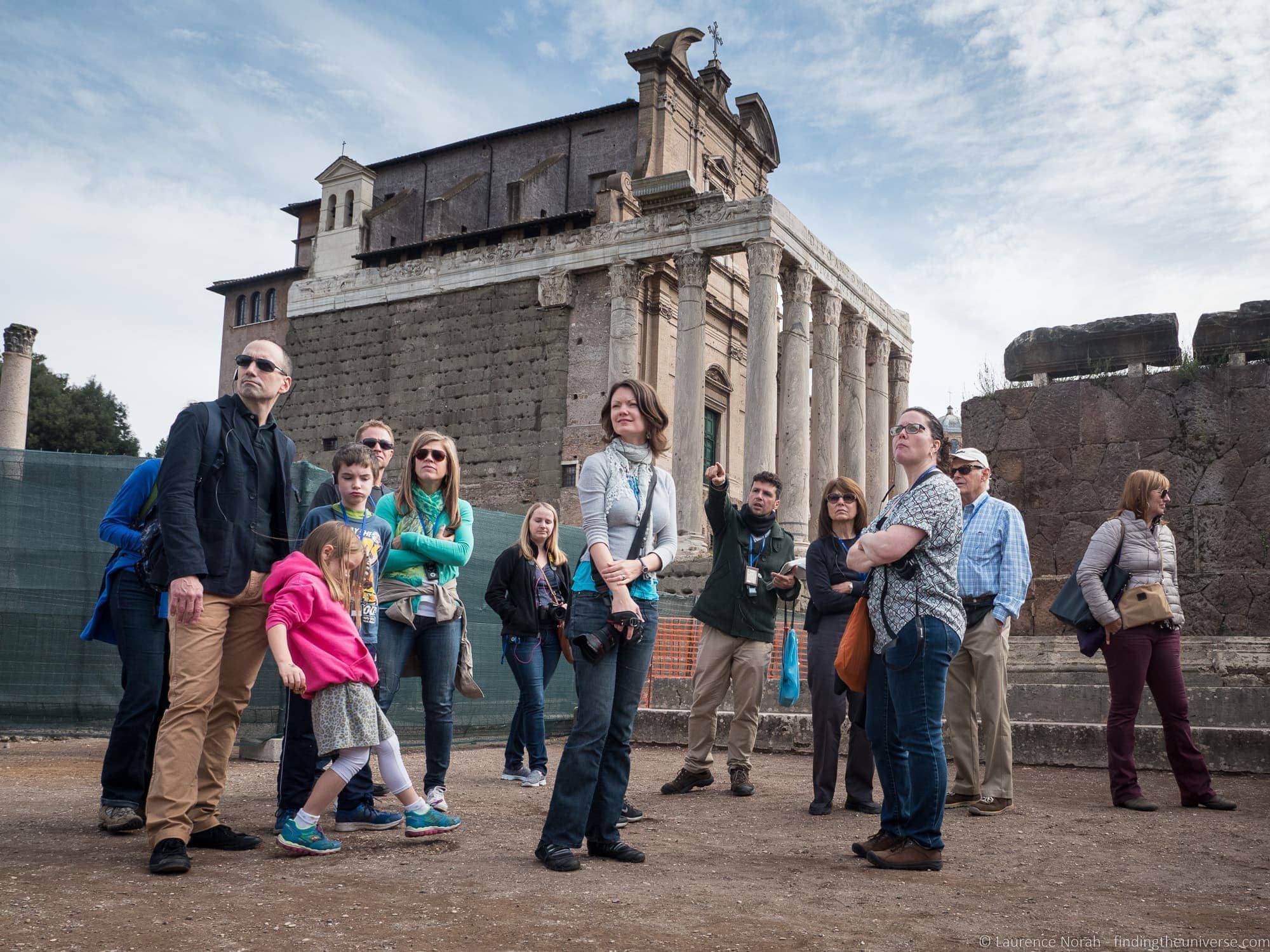
Saving Money in Europe
Europe, and western Europe in particular, is not exactly known for being a budget destination. The cities in particular are fairly expensive. Your main costs on this trip are likely to be the flights (biggest cost for most), accommodation, attraction entry, transport between the cities, and eating out.
To help you control these costs, we wanted to share some of our tips from years of experience travelling in European cities, so you don’t spend money unnecessarily. Even if you’re not on a tight budget, there’s no need to waste money when you don’t have to!
Use City Passes
All the cities in our itinerary have one or more city passes to choose from. City passes generally include either free or discounted admission to the major attractions in the city, and may also include other benefits.
These other benefits will vary, but will generally include things like fast track entry to some attractions, inclusive public transport, hop on hop off bus tickets, and discounts on meals and other activities like walking tours, wine tastings, and so on.
We have used a number of city passes during our travels in the cities in this itinerary, and our recommended passes for you to consider are as follows:
- For London: The London Pass. Available in durations from one to ten days, covers all the major attractions in London. See our full review of the London Pass here , and buy yours here .
- For Paris: The Paris Pass or the Paris Museum Pass. The Paris Pass includes entry to most of Paris’s major museums, plus includes attractions like a HOHO bus and Seine River Cruise. The Paris Museum Pass just covers attraction entry fees. See our full review of the Paris Pass here , and buy your Paris Pass here . We also have a full review of the Paris Museum Pass here, and you can buy it here .
- For Barcelona: The Go Barcelona Pass , Barcelona City Pass and Barcelona Card . These vary in what they cover, and whilst we suggest you pick up at least one of them, the best one for you will depend on your interests. See our full comparison of the Barcelona City Passes for more information.
- For Rome: The Omnia Rome and Vatican Card or the Roma Pass . Both these passes include free public transport in Rome, as well as free and discounted admission to attractions across the city. The Omnia Rome and Vatican Card also includes skip the line access to the Vatican Museums, St. Peter’s Basilica, as well as other Vatican attractions. It also has a hop on hop off bus.
- For Venice : We have never used a discount card in Venice. However, there is a Venice Pass which includes many of the museums and churches that is well worth checking out.
If you are planning on seeing a number of sights in each city you visit, a city pass can definitely save you money. Some of them will also save you time, as they offer skip the line benefits. However, we do recommend doing a little bit of reading on each pass to make sure it makes sense for your specific trip.
Note that city passes are often not as good of a value for children (especially young children) and those who are eligible for discounts at many attractions (seniors, disabled, EU university students), so do check if you qualify for any discounts before buying a pass.
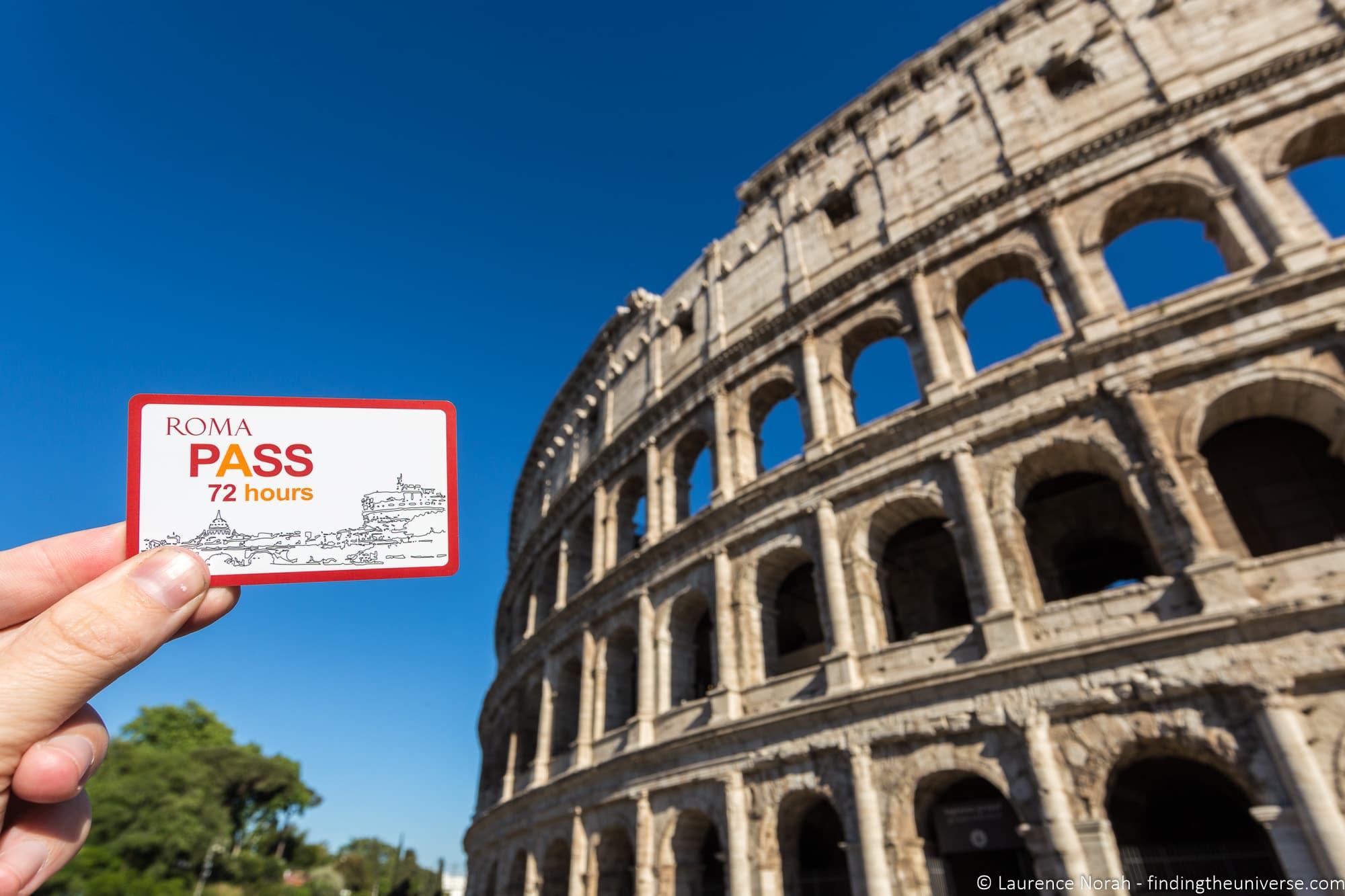
Book accommodation and transportation in advance
The two major costs on your trip are likely to be accommodation and transportation. Our major tip for both of these is to book them in advance.
For transport in Europe, the best deals are nearly always to be had if you book as far in advance as possible. The cheapest tickets on flights and trains always sell out first, and then the prices will increase.
We recommend you check your flights and book in advance here , and your trains here .
Accommodation is not quite so straight forward, as prices can dip and rise depending on demand. However, in our personal experience, prices tend to be lower if we book further in advance. Plus, you can often take advantage of free cancellation policies, and re-book if the prices drop.
Also, don’t forget to look at accommodation options beyond hotels. Short term apartment rentals can be very cost effective, plus they will allow you to prepare some of your own meals if you want, which will also save you money.
We generally use booking.com for booking our hotels, and they also include apartments. We also use Plum Guide regularly. There are plenty more options though – see our guide to some AirBnB alternatives to give you some ideas.
Invest in a Guidebook
We recommend investing in a guidebook, especially if this is your first trip to western Europe.
Investing $15 to $25 in a guidebook can save you much more in time and money. A guidebook can cover much more in-depth information than we can in this blog post, and means you’ll have all the information you need at your fingertips.
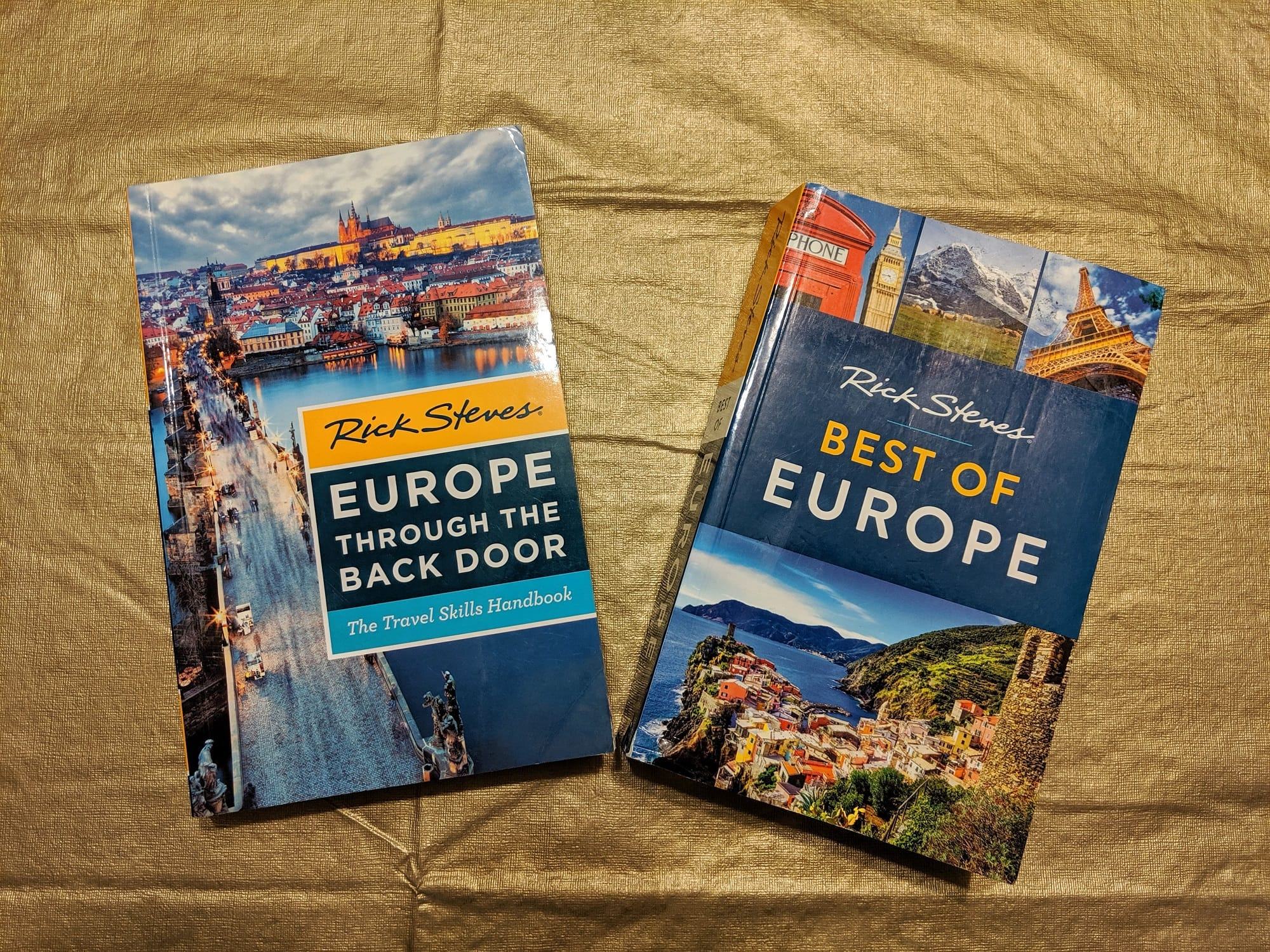
For this trip, we recommend the Rick Steves Best of Europe guide . If you had to pick one guide book, that would be our favourite – it covers all the destinations in this itinerary (plus many more!) and has lots of practical information, tips and advice to help you plan. We use and love it.
If you have room in your bag, we can also recommend the Europe through the Back Door book , which has a lot of general travel advice for Europe.
Other options to consider include Lonely Planet’s Western Europe guidebook and/or the Insight Guide to Western Europe .
Be sure to purchase a recently edited/updated version of the guidebook. So make sure it was updated in the last year or so. Most guidebooks are updated every year or two to make sure the information is as up to date as possible.
If you are not sure which guidebook may be best for you, you might want to browse in your local bookshop or library before picking one.
Use Public Transport Effectively
The cheapest and most effective way to get around the cities listed in this post is to take public transport (well, after walking of course!).
Each city has its own public transport network, with various fares and ticket options. Learning how to use these properly will save you money.
For example, in London, it’s possible to buy individual tickets using cash. However, this can be twice as expensive as using an Oyster Card or Contactless bank card for your travel. In Paris, you can buy tickets individually, or you can save money by buying booklets of ten tickets.
In addition, many of the city passes we recommend come with some sort of travel card, which can also save you money.
Basically, each transport system has its own quirks, and having a handle on these will likely save you money. We also recommend always checking to see how far your destination is on foot before taking public transport.
The public transit maps are unlikely to match up to the reality of geography, and you might find it will take the same amount of time to walk somewhere as it would have to take a bus or metro, plus walking is free!
Find restaurant deals
Our final tip covers the last major expense, which will be eating out. Of course, eating out is a major part of travelling, but the costs can quickly add up.
The good news is that you can also save money on eating out. The secret is to figure out when the restaurant deals are likely to be happening.
For example, in France and Spain, it’s very common for lunch time menus to be offered. These are usually two or three course meals, which sometimes include wine, bread and coffee, and which are usually priced under €20 per person.
For Paris, see our guide to some of the best Michelin starred restaurants for lunch deals .
In London, these aren’t as common, however, many restaurants offer theater deals. These are special priced menus offered either late in the afternoon (5pm – 7pm generally) or late in the evening (10pm and onwards), designed for theatre goers who want to get a meal before or after the show.
Of course, you don’t have to be going to the theatre to take advantage of these deals!
Other options for saving money on dining out include taking advantage of street food, picking up “meal deals” at supermarkets like M&S in London, putting together picnics from markets in Paris – the list goes on. It is certainly possible to eat on the cheap quite easily if you make a little bit of effort to do so.
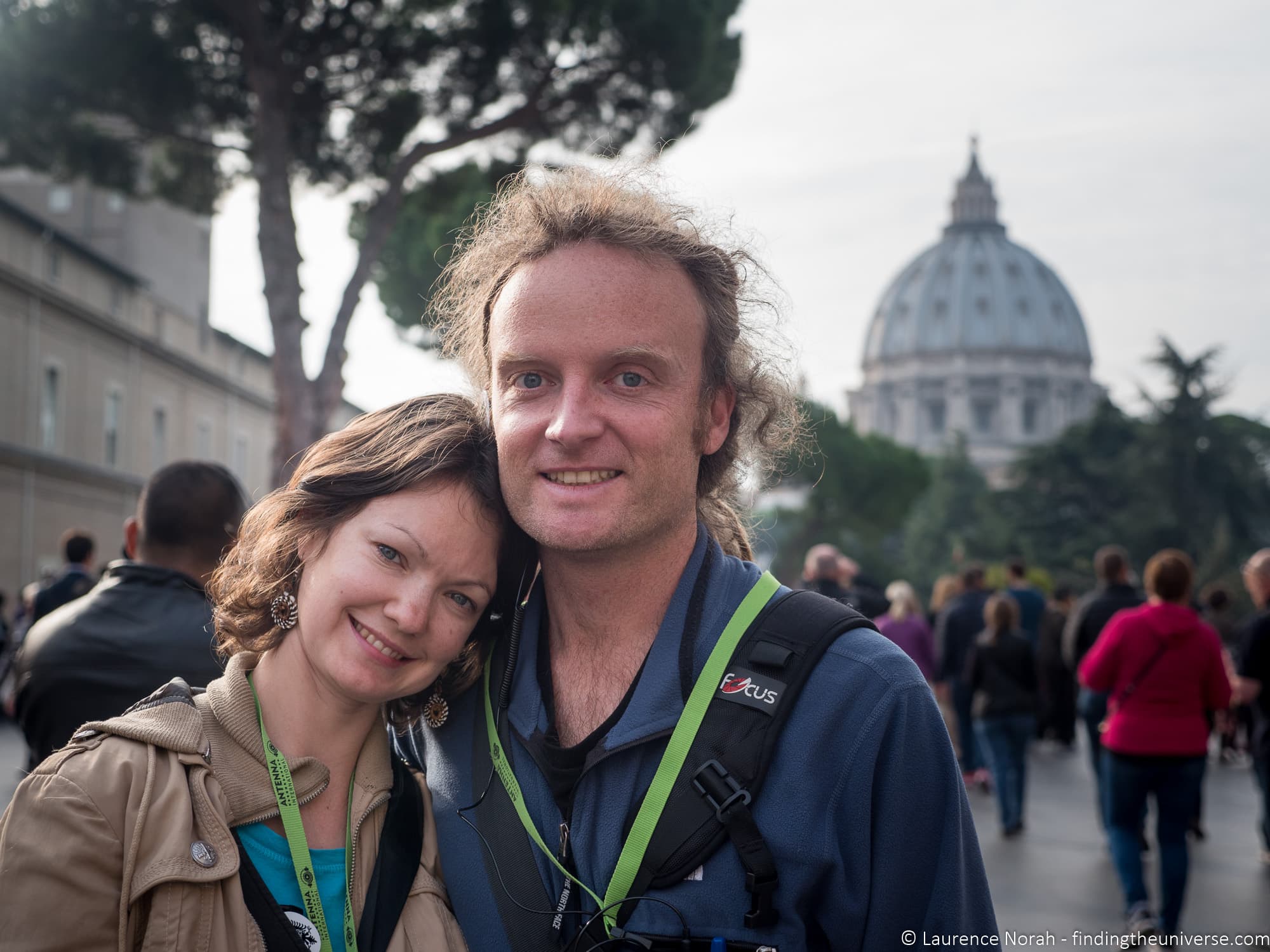
Further Reading for your Trip to Europe
Well, that’s pretty much the end of this post to help you plan your own perfect Europe itinerary and trip.
As you can see from the links shared throughout the post, we have a lot of content to help you plan your own trip to Europe. To make it easier for you, I wanted to put some of the most useful content here, for easy reference. I’ve also included some third party resources you might find useful in planning.
- For London , we have a guide for a day in London , 2 days in London , 3 days in London and 6 days in London
- We have a guide to the London Eye , Tower of London , Harry Potter filming locations in London , Winston Churchill locations in London , London’s War Museums , London’s UNESCO sites and tips on taking a walking tour in London
- We also have a guide to public transport in London , a guide to getting from the airport to London , a guide to what to pack for London , a guide to the cost of travel in the UK and a review of the London Pass
- For Paris , we have a guide to a day in Paris , 2 days in Paris and 3 days in Paris
- We have a guide to the best photography locations in Paris , afternoon tea in Paris , thoughts on the best Seine River cruises , a guide to making perfume in Paris , and advice for visiting the Moulin Rouge
- We also have a review of the Paris Pass , a review of the Paris Museum Pass , a guide to visiting the Eiffel Tower
- For Barcelona , we have a guide for 1 day in Barcelona , 2 days in Barcelona and 3 days in Barcelona .
- We have a guide to the best photography locations in Barcelona , the Anton Gaudi sites in Barcelona , and the Sagrada Familia
- We have a review of the Go Barcelona Pass and a comparison of the major Barcelona city passes
- For Rome, we have a guide to things to do in Rome , a day in Rome , 2 days in Rome and 3 days in Rome
- We also have a guide to the best gelato in Rome , the best cafes in Rome , visiting the Borghese Gallery in Rome, visiting the Colosseum in Rome and our thoughts on taking a walking tour in Rome
- For Venice , we have a guide to spending a day in Venice
- We also have a guide to visiting the Doge’s Palace & St. Mark’s Basilica , as well as our thoughts on a tour of Casanova’s Venice
- Investing in a guidebook can help save you time and money on your trip and help you be prepared. For this trip, we recommend the Rick Steves Best of Europe guide , Lonely Planet’s Western Europe guidebook and/or the Insight Guide to Western Europe
And that’s it for our guide to spending 2 weeks in Europe! As always, we’re open to questions, comments and feedback – just pop them in the comments section below, and we’ll get back to you as soon as we can!
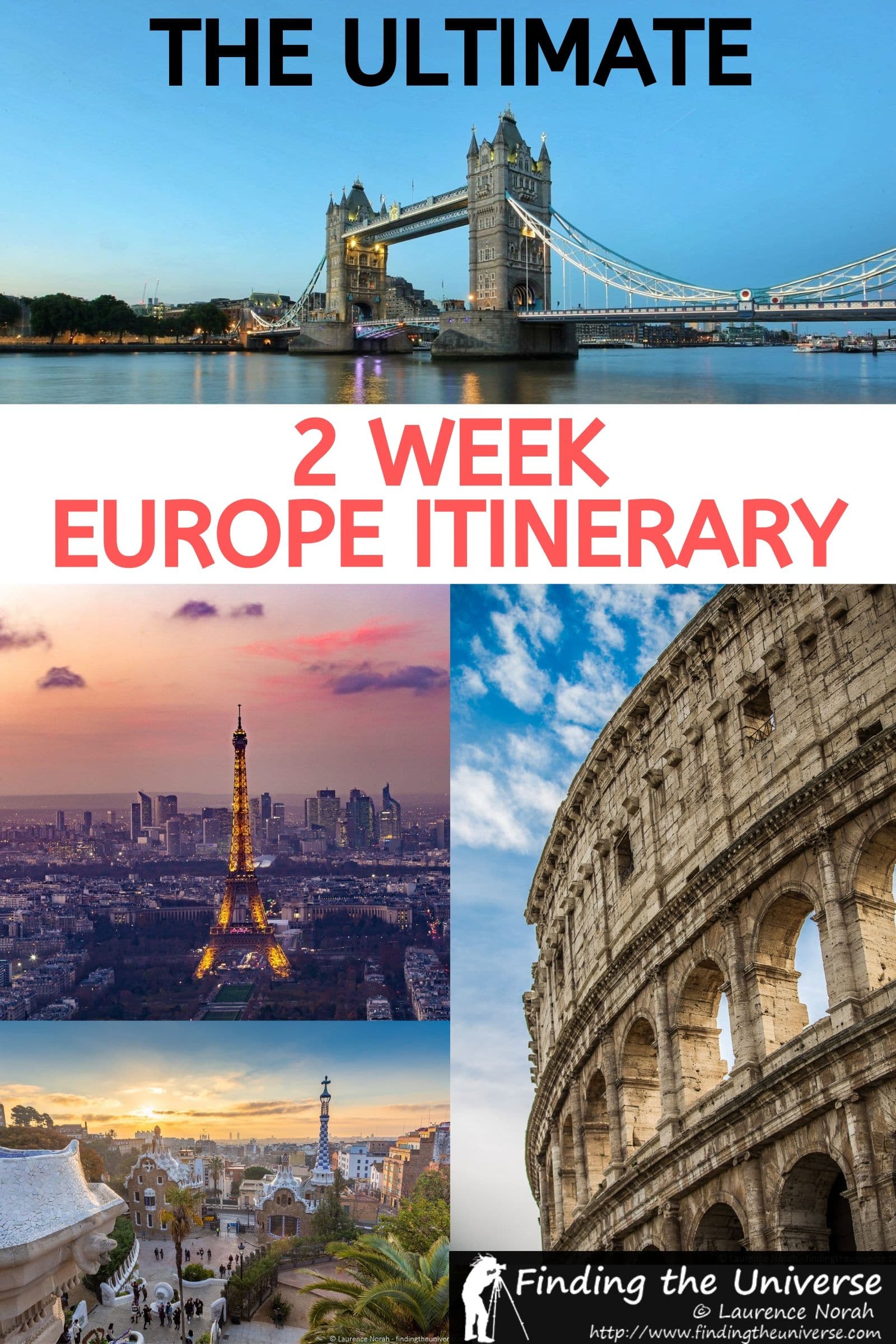
Enjoyed this post? Why not share it!
There are 30 comments on this post
Please scroll to the end to leave a comment
Kirsten says
1st April 2023 at 1:43 am
We just came back from this exact trip on 3/26/23. We followed your itinerary and most of your suggestions on what to do in each city. Thank you so much for putting this together. My husband and I aren’t the best planners and this step by step guide was so helpful and perfect for us! We really couldn’t have done it without you. Thank you!
Laurence Norah says
2nd April 2023 at 10:33 pm
Hi Kirsten!
Thank you so much for taking the time to stop by and share your experience! I’m delighted to hear you guys had a great time in Europe and that we were able to help with your trip planning, it really means a lot to know that our content is helpful 🙂
Safe travels!
Laurence & Jessica
12th February 2023 at 3:08 pm
This is an awesome itinerary. Thank you so much for sharing! We hope to make our first trip to Europe in the future.
12th February 2023 at 4:18 pm
My pleasure Sara, I hope you get to visit Europe soon and do let me know if you have any questions when you start to plan your trip!
6th February 2023 at 12:20 am
Hello, Thank you for great posts on Europe trip. Really help a lot when I’m trying to plan for mine. Do you mind sharing apartment name you stayed in Paris, the one with Eiffel tower view? Im looking for nice apartment to stay with Eiffel tower view for my honeymoon this year. Really appreciate it if you could share. Thank you 🙂
9th February 2023 at 8:15 am
Thanks very much. So the apartment was this one which we booked via Plum Guide. I’m not sure it’s still bookable, although there is an option to message the host. I’d also recommend the Eiffel Tower guide we have here , as that as a selection of accommodation options with good views. We’ve also stayed at the Pullman Paris hotel which has excellent Eiffel Tower views for example.
Have a great trip to Europe!
19th January 2023 at 4:05 pm
I’ve subscribed, but still cannot gain printing access…please help – thank you!
23rd January 2023 at 2:17 pm
Sorry for the slow response, we’re travelling in Uganda and Internet access has been sporadic! I can see you are an active subscriber, does it still not work when you put your email address in on the print page? If not, if you could let me know what device and browser you are using and I’ll see if I can figure out what is going on!
2nd July 2022 at 3:39 am
This was a great blog. I am trying to put together a surprise trip for my wife’s 40th next year. I am gonna try to do it myself based off all the deals y’all have given. Bless
2nd July 2022 at 10:58 am
My pleasure Wayne, have a great trip and do let me know if you have any questions 🙂
alex47_in_downtown says
8th February 2022 at 2:16 pm
This was the most detailed, informative & hence the most helpful travel blogpost I’ve ever read… 🙂 Perfect itinerary for first-timers (like me)…! Lots of love from India <3
10th February 2022 at 12:11 pm
Thanks very much Alex, I was delighted to be of help! I hope you have a great time in Europe, and do let me know if you have any questions!
Ashley Salgado says
8th October 2022 at 7:19 pm
Why not have a pdf versión to be able to print. Tried to print this but it’s a whopping 100 pages with all the ads and comments. Great info I’d love to print and read with time not on a screen.
8th October 2022 at 11:23 pm
Thanks for your message! Every post is available in printable format, if you look at the bottom of the post on mobile, or the side on desktop, there is a little print icon. If you press that you can go through the steps to access a printable version without ads, comments or images. You can then print it to PDF, most devices these days let you save a webpage as a PDF from the print option.
Have a great time in Europe!
Michelle says
2nd November 2021 at 1:49 am
I’m so glad I found this blog. This is so helpful and fantastic. It really gives us a clearer picture on how to plan our first trip to Europe (16 days) and it hits the cities we want to start off with and we plan on doing. Thank you!!!
2nd November 2021 at 11:06 am
My pleasure Michelle! Have a wonderful trip across Europe, and do let me know if you have any questions!
Penny Hampton says
2nd January 2021 at 2:42 pm
Loved your blog on traveling to Europe. We have never been to Europe so this would be our first time. What you write is exactly what we are looking for. Great advise on everything from where to go-where to stay and where to visit. If Covid ever dies down, we will try to make the trip.
2nd January 2021 at 2:46 pm
Thank you so much Penny! I certainly hope you get to take a trip sooner rather than later 🙂 If you have any questions when it comes to the planning, just let me know. Happy 2021!
20th February 2020 at 4:03 am
Hi Lawrence and Jessica,
Thank you so much for this article, it has been very helpful as I try and plan out our first trip to Europe. I will be taking my sons ages 24 and 18 this summer and are hoping to say about 18 days. We are planning to go to every location except Barcelona, and would like to add a city in either the Netherlands, Belgium or Switzerland. Which would you recommend? Also we are planning to travel at the end of July/early August, so I’m sure our costs will be quite high. Any thoughts on how much I should expect a 2 week trip to cost? I know that may be a difficult question to answer, but even if it’s a broad ballpark it would be very helpful.
20th February 2020 at 12:43 pm
Our pleasure, sounds like you have a great trip coming up! So yes, this is a really hard question to answer 😉 I would suggest taking a look at our suggested costs for a UK trip here , which should help with your planning. Prices in continental Europe are fairly comparable to the UK. Everyone has a different travel style and budget, and idea of what is expensive or acceptable, so it’s hard to know. There would be a huge difference depending on if it was hostel accommodation of 5* 😉 Just be aware that capital cities tend to be more expensive as a general rule of thumb.
In terms of saving, definitely check out apartment rentals which might work out cheaper as you are in a group. Also, booking transport well in advance (planes and trains) will make a huge difference to the cost. Flexibility in timing is also useful.
In terms of adding another city, Amsterdam is obviously nice but busy. Ghent and Bruges are lovely in Belgium. We’ve actually just come back from Switzerland. There’s a lot to choose from and a great transport network, but Geneva is a good starting point.
Let me know if you have any more questions, I’m happy to try and help!
12th February 2020 at 4:36 pm
I’ve sent this to my wife, this looks amazing! I think ill try to see if we can get an overnight Rail between the far trips however, this looks fantastic! and Exciting!
It will be our 1st trip to the EU, so hitting up all these locations at once will give us a great taste of so many locations!
12th February 2020 at 5:38 pm
Thanks Ryan! I hope you guys have a great trip, and do let me know if you have any questions!
10th December 2019 at 4:46 pm
Amazing article! You have inspired me to explore Europe soon! Thanks!
10th December 2019 at 4:58 pm
Thanks very much – I hope you get to visit soon and have a great trip when you do!
19th November 2019 at 4:03 pm
Loved this article and found it very useful. I’m in the process of trying to plan a trip for next year with my 18 and 19 year olds. I can’t quite committ to exactly where I want to take them. This will be our first trip overseas and I’ve been driving myself crazy googling different locations and ideas. This article has been one of the best as I feel like I really need a step by step guide to create and book whatever vacation I decide to go with. Any tips on what you think would be a great trip for that age bracket would be very appreciated.
20th November 2019 at 3:06 pm
Awesome, delighted to have been able to help. So I think this itinerary will work for your family, the only thing might be to tweak the attractions you visit based on your interests and the interests of your family. So if they aren’t into lots of museums, or art, then maybe cut those back a bit. Perhaps they’d be more interested in food tours or more interactive things like that. The best option would definitely be to just have a chat with them and find out what they might like to do, and then you can try to make everyone happy 😉 Communication is definitely key, and if they feel they have input and control then I think everyone will have a better time.
I hope this helps a bit!
Have an amazing trip and don’t hesitate to reach out if you have any more questions!
Natasha says
4th October 2019 at 1:19 pm
I might suggest taking skipping at least Barcelona. It’s not that it’s not beautiful, it definetly is. The city can’t handle all the tourist coming its way…Please do some research beforehand. I might opt for a longer stay in one city than trying to do too much. Or focus on one region. You probably wouldn’t do New York, California, Chicago and Grand Canyon in 2 weeks… It may not look like it on the map, but these aren’t such small distances.
4th October 2019 at 7:40 pm
Hi Natasha,
Thanks for your feedback. I’d disagree about Barcelona as I think it’s a beautiful city (we have visited many times – this article is based on our experiences not research). We would agree that folks should try and spend longer in each place rather than moving too fast for sure, and slower travel is something we prefer ourselves. That said, not everyone has the luxury of longer vacations, and wants to see quite a few places, hence we’ve put this itinerary together. Compared to some itineraries, we think it’s actually pretty relaxed and achievable 🙂
Thanks again for taking the time to comment!
14th September 2019 at 4:57 pm
Thanks for this detailed itinerary and plans. I really liked reading this. We are planning for a Europe trip on coming December. Do you think the itinerary you mentioned can be a difficult one to choose because of weather in December?
14th September 2019 at 5:47 pm
I think the itinerary is do-able at any time of year. December is a good month for visiting Europe as you have the pretty Christmas lights and Christmas markets. Obviously it will be colder and there’s more chance of rain, but appropriate clothing will solve that issue!
Have a great trip and let me know if I can be of any more help 🙂
Leave a Reply Cancel reply
Your email address will not be published. Required fields are marked *
Let me know when there's a reply to my comment (just replies to your comment, no other e-mails, we promise!)
Subscribe to our monthly Newsletter where we share our latest travel news and tips. This also makes you eligible to enter our monthly giveaways!
We only ask for your e-mail so we can verify you are human and if requested notify you of a reply. To do this, we store your data as outlined in our privacy policy . Your e-mail will not be published or used for any other reason other than those outlined above.

11 EPIC 2-Week Europe Itinerary Options [2024 UPDATE]
Trying to plan a 2-week Europe itinerary but don’t know where to start? This complete Europe travel guide will help you figure out which region in Europe is best for you and which itinerary would best suit your travel preferences!
Europe tops the list of leading destinations for travelers across the globe with its pristine, Mediterranean beaches, medieval history, sumptuous cuisine, and picturesque landscapes. But, with so many countries and options to choose from, finding a 2-week itinerary to suit your needs can be daunting!
With over a dozen European countries under my belt and years of personal traveling experience, I have created the best itineraries to suit every traveler. From the beachbums to the hikers, and the history buffs to the nature enthusiasts, there is a European itinerary for everyone!
Here is my list of the best itineraries across the continent, each containing the top activities of the region. I’ve also included tons of useful information on how to plan your trip, how to select the countries you should visit, and more!
Happy Travels!
11 Incredible 2-Week Europe Itinerary Options
Whether you want to visit Central, Western, or Northern Europe, we have a special itinerary for every travel style and budget!
✈️ Now, before you set out your door en route to the airport, be sure to check out these Essential Tips for Traveling to Europe for the First Time ! Even if it’s not your first trip to the continent, you’re likely to find some helpful tips for your next go-around.
✈️1. London & Paris: 2-Week Europe Itinerary

This combination makes for a fantastic Eastern Europe itinerary! With so much to see and do in both, you’ll want at least a few days in each to explore the nooks and crannies of these gorgeous cities.
This trip can be shortened to fit within one week, but keep in mind these are two of the largest cities in Europe.
They have a lot of incredible sites and activities to offer that you won’t want to miss out on, not to mention you’ll need some time to sit back and enjoy a cup of tea (or a glass of wine) and a freshly baked croissant!
Day 1 : Arrive in London Day 2 : Big Ben, the Tower of London, the London Eye Day 3 : Buckingham Palace and the Changing of the Guard Day 4 : Walking Tour of the City Day 5 : Harry Potter tour Day 6 : Train to Paris: Eiffel Tower and the Arc de Triomphe Day 7 : Les Champs-Élysées and the Notre Dame Day 8 : Museums: Orsay and Louvre Day 9 : Explore some neighborhoods: Montmartre and Le Marais Day 10 : Day Trip to the Palace of Versailles Day 11 : Picnic in the Luxembourg Gardens Day 12 : Get lost in the Latin Quarter Day 13 : Paris Catacombs and catch a show at Le Moulin Rouge Day 14 : Return home
With 20 arrondissements in Paris and over 600 square miles in London, it’s safe to say the possibilities are endless when designing a trip to these cities. But, you really can’t go wrong!
Each day can be customized to fit your goals. Looking to relax by the Seine and have a picnic? Do it. Not really into shopping? Skip the Champs-Élysées and spend time listening to the singing bells of the Notre Dame Cathedral.
In London, opt to check out the local art scene and make your way through its numerous museums.
Looking for a day trip from London? Windsor Castle, Bath, and Stonehenge are most popular for visitors looking to escape the chaos of the city for a day, and with their incredible cultural heritage and stunning architecture, there’s no wondering why.
London and Paris offer fantastic opportunities to immerse yourself in Europe while avoiding complex itineraries and long-haul journies between destinations. Pair them together for a classic 2 week Europe trip full of beauty, romance, and charm.
Related Articles on Paris
✔️ Why Visit Paris? 25 Reasons to Visit Paris, France ✔️ Is Paris Safe? A Full Guide on Safety in Paris ✔️ Souvenirs from France: 45 Unique French Souvenirs ✔️ Best Time to Visit Paris: 7 Things to Consider ✔️ 27 Incredible Day Trips from Paris ✔️ 17 Beautiful Beaches Near Paris ✔️ 27+ Magical Things To Do in Paris at Night ✔️ Wine Tours in France: 15 Top-Rated French Wine Tours
✈️2. Amsterdam, Bruges & Luxembourg City: 2-Week Europe Itinerary

Medieval architecture, sweeping canals, and charming squares await in these three cities seemingly based on a storybook. Evidently frozen in time, the magic of these cities can be felt by even the most jaded of travelers, and surely won’t disappoint your inner child!
Stroll the windy, cobblestoned alleyways and take a boat ride through the web of canals in Amsterdam and Bruges, but find yourself watching the changing of the guard and getting lost in the Casemates du Bock of Luxembourg City.
These cities offer everything from traditional design to modern cafés and boutiques and represent the epitome of European travel.
Day 1 : Arrive in Amsterdam Day 2 : Bloemenmarkt & Canal Boat Ride Day 3 : Red Light District (if it’s your style) & Jordaan neighborhoods Day 4 : Van Gogh Museum & Anne Frank House Day 5 : Day Trip to Zaanse Schans Day 6 : Optional Day in Brussels & train to Bruges Day 7 : Train to Bruges Day 8 : Canal Boat Ride & Belfry of Bruges Day 9 : Rozenhoedkaai (Quay of the Rosary) & Market Square Day 10 : Train to Luxembourg City Day 11 : Casemates du Bock & the Grund Day 12 : Walking tour of the Old Town Day 13 : Day Trip to the Mullerthal Trail Day 14 : Return home
Now, you’re probably wondering why I’ve chosen Bruges over Brussels… and the answer is simple. I’m all about getting out of the basic tourist spots (Bruges is still very touristy, but has far more medieval character and beauty to it), and going beyond the first train stop in a new country.
Yes, while traveling from Amsterdam to Bruges, you will most likely be stopping in Brussels. I’m not going to tell you not to get off the train, but I will say that when debating between Bruges vs Brussels , I can honestly say that most people choose Bruges over Brussels.
My best suggestion is to add a day to your trip so you have time to explore both.
Luxembourg City may be small, but it certainly packs a punch. Often overlooked by travelers, it is a true gem that has so much to explore.
Have some extra time? Head up north to the Mullerthal Region of Luxembourg where you’ll find dreamy, moss-covered forests scattered with graceful waterfalls and filled with tall trees (it reminds me of the forests depicted in The Hobbit films!)
These cities have so much to offer and this is one of my personal favorite European itineraries on this list… just remember to bring a camera and good walking shoes.
Related Articles
✔️ One Day in Bruges: The Ultimate Bruges Itinerary ✔️ One Day in Ghent: The Ultimate Ghent Day Trip ✔️ One Day in Brussels: A Brussels Itinerary for First Time Visitors ✔️ The Perfect 3 Days in Belgium Itinerary ✔️ 17 Authentic Souvenirs from Belgium to Bring Home ✔️ Paris or Amsterdam: A Complete Comparison ✔️ Barcelona vs Lisbon: The Ultimate City Comparison ✔️ The Perfect Day Trip to Luxembourg from Brussels ✔️ Amsterdam in Spring: Why Spring is the Best Time to Visit Amsterdam ✔️ 2 Days in Amsterdam: The Ultimate Amsterdam Itinerary ✔️ 25 Authentic Souvenirs from Amsterdam To Bring Home ✔️ One Day in Amsterdam: Full Guide & Best Things To Do and See
✈️3. Chamonix, Courmayeur & The Matterhorn (Zermatt): 2-Week Europe Itinerary

Fellow hikers and adventure seekers, this is the trip for you! Surrounded by the breathtaking Mont Blanc Range and the various snow-capped peaks of the Alps, there is no end in sight to hiking trails of all difficulty levels and spectacular landscapes worthy of a thousand photos.
Even if you aren’t someone who enjoys a good hike, there are plenty of options to take cable cars up these majestic mountain ranges to enjoy the stunning scenery. Trust me, your pictures won’t do your experience justice.
Coming from someone who jumped off the Mont Blanc Range (with a paraglide strapped to me!), the sights are truly unparalleled, and you won’t believe you ever even debated the option of skipping it.
So, here is my best 2-week Europe itinerary for exploring this region to the fullest, just be sure to bring a jacket (yes, even in summer) if you plan on making your way up to the top of these mountains!
Day 1 : Arrive in Chamonix, France Day 2 : The Montenvers Train to Restaurant le Panoramique Day 3 : Aiguille du Midi Cable Car Day 4 : Adventure Activities (Hiking, Paragliding, or Snow Sports) Day 5 : Explore th e c harming Alps town Day 6 : Train to Courmayeur Day 7 : Skyway Monte Bianco Cable Car Day 8 : Explore the quaint villages of the Aosta Valley (Dolonne, La Saxe, Entrèves and Villair) Day 9 : White Water Rafting Day 10 : Train to Zermatt Day 11 : The Gornergrat Railway (Europe’s highest mountain railroad) Day 12 : The Matterhorn (learn about it here ) Day 13 : Ski Day Day 14 : Return home
Chamonix , Courmayeur, and Zermatt not only provide stunning scenery at altitude but also at the ground level in the center of lovely villages and neighborhoods. Nestled between sections of the magnificent Alps, these towns provide a cozy, small-town feel you don’t get in other places in Europe.
Being encircled by the striking mountains is both awe-inspiring and rejuvenating and should be experienced by travelers of all types! Do yourself a favor, and head to the French, Swiss, and Italian Alps on your next European getaway.
✈️ When it comes to bucket list experiences, Chamonix often tops the list for Europe. If it’s already caught your eye, be sure to check out this Ultimate Europe Bucket List: 101 Experiences to Have in Europe as well!
✈️4. Barcelona & The French Riviera: 2-Week Europe Itinerary

As one of my personal favorite destinations in all of Europe, Barcelona is a true gem. Boasting sweeping coastlines and a vibrant art scene, it can easily be combined with the nearby French Riviera for the ultimate beach vacation.
If this magical city is high on your European bucket list, be sure to check out my list of the Best Things To Do in Barcelona at Night !
Combined with the magic of the French Riviera, beachbums will have their fill of endless crystal clear waters, and soft, white-sand beaches to get between their toes!
This is the ultimate vacation for those looking to relax and unwind in the Mediterranean with a little European flair.
Day 1 : Arrive in Barcelona Day 2 : Antoni Gaudi’s Park Güell and Walking Tour Day 3 : Beach day Day 4 : Las Ramblas, the Gothic Quarter, El Born, Gràcia, and El Raval Day 5 : Train to Dramont Day 6 : Beach day in Dramont & stroll the Old Town Day 7 : Day trip to one of the Cote d’Azur islands Day 8 : Beach day in Nice & explore the Promenade des Anglais Day 9 : Day Trip to Cannes and walk the Boulevard de la Croisette Day 10 : Optional beach day or hiking day Day 11 : Day Trip to Antibes Day 12 : Day Trip to Monaco Municipality Day 13 : Optional beach day or hiking day Day 14 : Return home
With some of the best beaches in not only Europe but the world, the French Riviera should not be overlooked by anyone, regardless if you are someone who could spend 10 hours or barely last 10 minutes on a beach.
The panoramic scenery is simply breathtaking and the region boasts exciting activities, too.
Windsurfing, paddleboarding, kayaking, hiking, and snorkeling are just a few activities visitors can enjoy during their stay. Not to mention the coveted secret gems tucked between rock formations all around the region that are filled with clear waters, tropical fish, and few tourists.
While Barcelona and the French Riviera are situated an approximately 9-hour train ride from each other with line switches, your efforts will be well rewarded.
Aim to set aside a minimum of 10 days for this trip, but preferably 2 weeks to ensure you have ample time to rejuvenate on the warm, Mediterranean beaches without feeling rushed.
✈️5. The Best of Italy: 2 Week Europe Itinerary by Train
Italy is one of the most popular destinations on any 2 week Europe trip and for good reason! With everything from its fresh cuisine, Mediterranean beaches, cliffside villages, snowy mountains, and historical cities there’s something for everyone.
While it’s easy to spend a month in Italy and not go down the same street twice, not everyone has that kind of time (but if you do… go for it!)
This itinerary is designed for slightly longer than 2 weeks because less time won’t allow you to see all the major sites as well as relax and enjoy your time on the beaches and really explore the towns.
Of course, you can always cut some sites and activities out, but be sure to choose wisely. This is my best Italian itinerary for those looking to get lost in the birthplace of their family’s heritage, or simply live like a local and eat delicious food. Mangia!
Day 1 : Arrive in Milan Day 2 : Duomo di Milano Cathedral & strolling the streets Day 3 : Train to Venice & boat ride along the Grand Canal Day 4 : St. Mark’s Square & The Bridge of Sighs & Rialto Bridge Day 5 : Train to Cinque Terre Day 6 : Roam the fishing village & Cinque Terre hike Day 7 : Beach day Day 8 : Train to Florence & Climb the Steps to Duomo overlooking the city Day 9 : Giotto’s Campanile & Palazzo Vecchio & Museums Day 10 : Train to Rome & the Colosseum (a UNESCO World Heritage Site) Day 11 : Train to Naples for the best pizza in Italy Day 12 : Rent a boat or take a day tour to Capri Day 13 : Train to Positano (Amalfi Coast) & explore the city Day 14 : Positano Beach Day 15 : Train to Bari & explore the old town Day 16 : Train back to Rome & return home
Italy often receives high recognition for one of the most popular destinations in Europe, and it definitely deserves it. There truly is something for everyone and with their convenient train system, there’s no end to the itinerary possibilities.
✔️ Pro Tip: Keep in mind that the trains can change sporadically so be sure to arrive early to ensure you’re at the right departure gate!
✈️6. Iceland’s Ring Road : 2-Week Europe Itinerary

Iceland’s infamous Ring Road is well known for its awe-inspiring sites and magical landscapes. To really discover the best this loop has to offer, opt to rent a car and drive at your own pace. This way, you’ll be able to allow yourself ample time at each stop and not be on a tour bus’ schedule.
Renting a car and planning a road trip can have its fair share of frustrations, so if you would enjoy some assistance with your bookings, transfers, and ensuring you’re going to see the best the area has to offer, check out Nordic Visitor’s Self Drive Tours !
They have local travel experts handpick your accommodations, offer free transportation from the airport, set up your Enterprise car rental, and create a comprehensive itinerary designed specifically for you.
While you can technically complete Iceland’s Ring Road in about 7-10 days, we suggest spending 2 full weeks. This will not only allow you to take your time in each place, but it will also increase your chances of spotting wildlife and the northern lights!
Day 1 : Arrive in Iceland & Blue Lagoon Day 2 : Snaefellsnes Peninsula and National Park Day 3 : Snaefellsnes Peninsula and National Park Day 4 : Goðafoss Waterfall in Northern Iceland Day 5 : Whale Watching in Húsavík Day 6 : Ásbyrgi Canyon Hike Day 7 : Dettifoss and Selfoss Waterfalls & Lake Myvatn Day 8 : Eastern Iceland Fjords and Fishing Villages Day 9 : Explore the local Fishing Villages Day 10 : Skógafoss, Fjaðrárgljúfur, and the Black Waterfall Day 11 : First Half of the G olden Circle Day 12 : Second Half of the G olden Circle Day 13 : Day Trip to Vik Day 14 : Reykjavík & Return Home
For optimal time in each major site on this itinerary, I highly recommend setting aside at least 12 days to complete this trip. It can be done in 7 days, but you’ll have less time at each location, and may end up feeling rushed or missing out on some exciting opportunities Iceland has to offer!
This trip can also be done in either direction: clockwise or counterclockwise. But, if you’re someone who likes to leave the best parts of a trip until the end, I suggest starting in Reykjavík and heading clockwise around the loop (how it is laid out above).
This saves some of the most beautiful parts of the country for last which can be a great way to end your Icelandic vacation.
Both a popular tourist destination and secluded island, Iceland makes for a magical 2 week Europe itinerary with its countless, giant waterfalls, black sand beaches, striking mountains, and windswept coastlines.
Be sure to pack warm layers no matter what season you plan on traveling and always, always, always pack a bathing suit… there are dozens of gorgeous hot springs all over the island!
✔️ Pro Tip: If you plan on visiting in winter, be sure to rent a vehicle with high-quality snow tires and chains. Service can be limited and food and gas stops can be few and far between. Ensure your vehicle comes with 24/7 roadside assistance and always carry extra blankets, food, and water in the vehicle. To figure out how to budget for a trip to Iceland, check out this guide: Is Iceland Expensive? The Ultimate 2024 Breakdown
✈️7. Oslo, Stockholm & Copenhagen: 2-Week Europe Itinerary

These cities are some of the most vibrant (both culturally and literally) in all of Europe! Walk the colorful streets along Nyhavn harbor in Copenhagen , swim in the Baltic Sea surrounding Stockholm, or take in the picturesque scenery from the Bygdøy Peninsula in Oslo.
Sweden, Norway, and Denmark are a part of the Schengen Area of Europe which signifies a zone of countries involved in the protection of freedom of movement of people and have similar laws regarding external borders and fair judicial systems.
These countries boast a high quality of life and low criminal ratings, making them fantastic destinations for everyone! You can expect to meet friendly, hospitable people, and experience a relaxed, positive vibe while exploring the region.
For families traveling with kids to older couples and everyone in between, Oslo, Stockholm, and Copenhagen make for the perfect 2 weeks Europe itinerary!
Day 1 : Arrive in Oslo Day 2 : Explore the City Day 3 : Bygdøy Peninsula & Museums Day 4 : Akershus Fortress & the Royal Palace & Mathallen Food Hall Day 5 : Oslo Fjords Tours Day 6 : Fly (or take a train) to Stockholm & Gamla Stan Old Town Day 7 : Explore the City Day 8 : Swim in the Baltic Sea & Canal Boat Tour on the Royal Canals Day 9 : Day trip to Ørland Day 10 : Fly (or take a train) to Copenhagen Day 11 : Strøget & The Old City Day 12 : Nyhavn Harbor Day 13 : Rosenborg Castle & Christiansborg Palace Day 14 : Return Home
Oslo sits in a network of fjords, all offering incredible views of the surrounding landscapes and dramatic vistas, so it would be silly not to take advantage of a boat ride through these fjords for a spectacular vantage point.
Bookings can be made through the highly rated company, Fjord Tours , several months in advance here !
As for Stockholm, be prepared to witness extremely fine, white sand beaches and picturesque harbors throughout your stay. Some of my family’s heritage goes back to the municipality of Ørland , an island connected by a striking bridge with beautiful gardens, stunning beaches, and unique history.
Easily reached in under 2 hours by car, this island makes for a great day trip away from the more touristy city of Stockholm.
If you love to travel or often seek out those quintessential European towns, there’s a good chance you have seen at least a picture of the famous Nyhavn Harbor in Copenhagen.
Lined with colorful, cookie-cutter buildings and elegant schooners, this town is one of the most sought after in all of Europe. Be sure to stroll the harbor at night for the ultimate romantic experience!
✈️ Planning this trip for your honeymoon? Be sure to check out these 9 Incredible European Honeymoon Itinerary Options for 1 Week, 2 Weeks, + 1 Month !
✈️8. Munich, Prague, & Vienna: 15 Days Europe Tour Itinerary

These popular tourist destinations are well known across Central Europe for their lovely squares, medieval architecture, and pedestrian-only cobblestoned streets. But, that’s not all!
Full of traditional European charm and romantic ambiance, there’s no wonder why this is one of the most popular European itineraries among tourists.
For the ultimate experience, I highly recommend traveling during the off-season in September, during Germany’s world-renowned Oktoberfest festival. Traditional German activities combine with endless food and brews, authentic lederhosens, and dancing!
You will also get to experience lower accommodation and flight costs ( bonus! ) during this time of year.
Head to Germany, Czech Republic, and Austria to immerse yourself in the classic charm of old-world Europe while diving deep into the contemporary lifestyles of modern Europeans.
Day 1 : Arrive in Munich Day 2 : Marienplatz Square Day 3 : Oktoberfest (if visiting in September, highly recommended!) Day 4 : Day Trip to Nymphenburg Palace Day 5 : Train to Prague Day 6 : Wenceslas Square & Old Town Square & Astronomical Clock Day 7 : Charles Bridge & The Lesser Town & Prague Castle Day 8 : Lennon Wall and St. Vitus Cathedral Day 9 : Train to Vienna Day 10 : The Hofburg & Belvedere Palace Day 11 : Catch a Showing at the Vienna State Opera House Day 12 : Day Trip to Schönbrunn Palace Day 13 : Hundertwasser House, Austrian Gallery Belvedere, and Austrian National Library Day 14 : Travel west to Salzburg Day 15 : Return home
For the most convenient method of travel among these countries, I highly suggest using the Eurail . With frequent trains between dozens of European cities daily, there’s no stressing about how to get from one destination to the next, but just be sure to book your train tickets as soon as they become available. This typically occurs between 60-120 days prior to your travel dates.
Munich , Prague , and Vienna are also extremely walkable, leaving no reason to rent a car.
Have more time for travel? Consider tacking on other popular destinations including České Budějovice in the Czech Republic and Salzburg in Austria (home to famous composer Wolfgang Mozart).
If you’re a fan of sophisticated music and shows, be sure to get tickets to a play at the Vienna State Opera House… one of the most paramount opera houses in the entire world!
✈️9. Athens & The Greek Islands: Europe Itinerary 3 Weeks

There is so much more to Greece than just delicious feta cheese (yes, it is incredible) and beautiful sunsets. Think whitewashed villages painted with deep blue rooftops, rugged coastlines, white and black sand beaches, and marvelous ancient ruins.
Also, the entirety of the islands are covered in vibrant, blooming wildflowers adding supreme brightness to the country. So, if you have time for a 21 days in Europe itinerary, you won’t regret spending it in Greece!
Even if you aren’t a beachbum, this itinerary has something for everyone. Are half-day hiking treks more your style? Check out Mount Ida on the island of Crete or Mount Zeus on Naxos (supposedly Zeus’ birthplace) for sensational views of the rugged coastlines and crystal clear, blue waters of the Meditteranean.
In Greece, you can also expect to find incredible cuisine boasting fresh, local ingredients grown on the islands. Fish, grilled meats, olives, taramasalata, and other dips are highly popular among both locals and visitors.
If you aren’t really interested in most of these foods, don’t fret, they also have some options more geared for tourists.
Ferries frequent between islands all over Greece, so be sure to check out some of the other islands available on your route, and if you have time, spend a day there!
Each island is unique in both design, scenery, and activities, so be sure to do a little bit of research if the islands I have mentioned below don’t seem to excite you. But, to be honest, I truly believe anyone could enjoy themselves on this Greece itinerary!
This Europe itinerary has been created for 3 weeks since we believe that is how long you’ll need to get a really good feel for each island’s unique characteristics. If you only have 2 weeks, simply remove a couple of the islands that are on the itinerary below.
Day 1 : Arrive in Athens Day 2 : The Parthenon & The Acropolis Day 3 : Ferry to Mykonos Day 4 : Delos Ancient Greek Ruins & Little Venice Day 5 : Beach Day (highly recommend Ftelia Beach & Elia Beach) Day 6 : Ferry to Naxos Day 7 : Apollo Temple & The Old Town Day 8 : Beach Day (highly recommend Plaka Beach & Mikri Vigla Beach & Kato Koufonis i) Day 9 : Ferry to Santorini (also known as Thera) Day 10 : Akrotiri Archaeological Site & Watch the Sunset on Oia Day 11 : Akrotiri Lighthouse & Explore Fira (the capital) Day 12 : Visit the Village of Pyrgos Day 13 : Beach Day Day 14 : Day Trip to Anafi Island Day 15 : Beach Day (highly recommend Kamari and the black sand beach of Perissa) Day 16 : Ferry to Crete Day 17 : Elafonisi Isle Day 18 : Rocca a Mare Fortress & Heraklion Day 19 : Beach Day (highly recommend Vai Beach) Day 20 : Beach Day (highly recommend Preveli Beach) Day 21 : Ferry back to Athens & Return Home
Whether you want to spend your Greek Island vacation basking in the sun on one of the hundreds of beaches and secret coves or you want to discover the truth behind the lost city of Atlantis at the Akrotiri Archaeological Site , this culturally extravagant country should have its very own 21 days in Europe itinerary.
Although it is often combined with a trip to Italy, I believe there is so much to do and see on the 6,000 islands of Greece (yes, you read that right) to give it the spotlight it deserves.
This trip can be shortened if you’re willing to pack more into your days, but be sure to factor in some time to relax and unwind, because Greece is one of the best places in the world to just sit back and enjoy the view.
✈️10. An Irish Road Trip: 2-Week Europe Itinerary

Rolling hills, scenic vistas squared off by stone wall boundaries, and sheep… so many sheep! Don’t let me forget to mention the gorgeous, rugged coastlines, vibrant shades of green, and endless pubs bustling with traditional Irish music that will make you dance the night away, I know I did!
Ireland is one of my favorite places in Europe and I highly suggest adding it to your 2 week Europe itinerary or creating an entire trip centered around this one country (like I did!)
Road trips are a great way to go at your own pace and really take the time to appreciate your surroundings and truly relax. Ireland is just the place for that.
Ireland is a destination filled with wonderful, hospitable people, beautiful scenery, and inspiring heritage that will entice you to keep coming back. On my next trip to Ireland, I’ll be road-tripping once again since I truly believe it is the best way to see the beauty of this country.
Day 1 : Arrive in Dublin Day 2 : Guinness Factory & The Temple Bar Day 3 : Drive to Kilkenny & Kilkenny Castle Day 4 : Drive to Cork & stroll Wild Atlantic Way Day 5 : Sightseeing in Cork & Blarney Stone Day 6 : Drive to Killarney – Sightseeing & Ross Castle Day 7 : Killarney National Park Day 8 : Drive to Dingle on the Dingle Peninsula Day 9 : Slea Head Drive up to Adare – short pitstop on route to Limerick Day 10 : King John’s Castle & The Hunt Museum Day 11 : Drive to Cliffs of Moher & stay in Doolin Day 12 : Pub crawling through Doolin Day 13 : Drive to Galway & Trad On The Prom (Traditional Irish music and dance show) Day 14 : Drive to Shannon airport and return home
Ireland always leaves a lasting impression on my heart. There truly is nowhere like it in the world that makes you feel so “at home” while overseas!
From the people to the music and the breathtaking scenery, not to mention the endless charming pubs overflowing with refreshing brews, Ireland is one of my favorite places in the world and should have its very own 2 week Europe itinerary.
Have I convinced you to travel to Ireland? Be sure to check out these other helpful resources!
✔️ Ultimate Ireland Packing List: 22 Important Items You’ll Need ✔️ The Perfect Two Days in Dublin Itinerary ✔️ 7 Best Rated Cliffs of Moher Tours from Dublin ✔️ 19 Perfect Day Trips from Dublin ✔️ The Greatest Ireland Itinerary and Guide: Routes + Tips for 1-3 Weeks in Ireland ✔️ Where to Stay in Cork Ireland – A County Cork Guide ✔️ Dingle Accommodation: Where to Stay in Dingle Ireland ✔️ Is Dublin Safe? An In-Depth Look at Safety in Dublin, Ireland ✔️ 27 Authentic Souvenirs from Ireland to Bring Home
✈️11. The Best of Portugal : 2 Week Europe Itinerary for Families

Ever had a pastel de nata (traditional Portuguese egg custard tart) while strolling the windy streets of Lisbon? If not, it will change your life! In Lisbon , you’ll find a sea of red clay roofs perched on a hilltop above the ocean.
In Porto , vibrant buildings rest side by side on a harbor, surrounded by iconic bridges and large street markets.
Then, there’s the Algarves … an entirely different world set on the far south of the country.
The southern coast of Portugal boasts stunning beaches enclosed by intricate cliffs and vibrant wildflowers. If you’re up for a little swimming (or kayaking!), you can find secluded beaches hidden away by the sea that reveal themselves with the outgoing tide.
The Algarves offer some of the most spectacular coastlines across the Mediterranean and Europe, so if you’re a true beachbum, you had better add them to your 2 weeks Europe itinerary!
The best part about Portugal is that it’s extremely family-friendly. From the beaches to the cities, it’s easy to get around, everything is relatively affordable, and there are tons of family-friendly hotel options everywhere you go.
Day 1 : Arrive in Porto Day 2 : Douro River Sightseeing Cruise & Miradouro da Vitória Day 3 : Extra Day in the Douro Valley Day 4 : Explore the Baixa, Bolhao, & Ribeira Districts Day 5 : Train to Lisbo n and sightseeing Day 6 : Torre de Belém & Ride Tram 28 & Alfama District Day 7 : Train to Sintra & Pena Palace Day 8 : Quinta da Regaleira , Castelo dos Mouros, and Cabo da Roca Day 9 : Train to Lagos Day 10 : Kayak or Boat Rental around the caves Day 11 : Beach Day Day 12 : Walk the streets of Faro and souvenir shopping Day 13 : Beach Day Day 14 : Train to Lisbon and return home
Portugal offers everything from bustling city life to remote beaches, all with vibrant scenery and quirky design! There’s something special about Portuguese culture; it combines traditional European style with fresh, modern urbanity.
Looking for fresh seafood? Just wait until you get the chance to pick your very own fish or crustacean out of a tank and have it cooked right there for you… now, that’s fresh!
Portugal not only offers a wide range of delectable foods but also boasts stunning artistry in the form of hand-painted and hand-crafted pottery. There is no end to the exciting opportunities waiting to be had in this beautiful region.
Portugal is one country that should be included on any 2-week Western Europe itinerary!
Related Articles on Portugal
✔️ 9 Top-Rated Wine Tours from Porto ✔️ 25 Authentic Souvenirs from Portugal: What to Buy in Portugal ✔️ 21 Best Portugal Packing List Items for 2023: What to Wear in Portugal ✔️ The Ultimate Day Trip to Sintra Guide & Itinerary ✔️ The 10 Best Beaches in Cascais – Your Ultimate Beach Guide
✈️ If all of these trips sound amazing but you aren’t sure where to start, read up on How to Plan a Trip to Europe in 9 Easy Steps to ease your travel worries!
2-Week Europe Itinerary Country & City Suggestions

✔️ For First-Time Europe Travelers :
If this is your first time visiting Europe, I suggest selecting an itinerary that allows you ample time to explore each destination (or choose just a single destination!)
My London & Paris and Munich, Prague & Vienna itineraries are perfect for beginners with their simple method of travel and common weather and style similarities, allowing you to pack with ease.
✔️ For the Beach Bums :
Looking to relax on some of the most beautiful white-sand beaches in the Mediterranean and across Europe? My Barcelona & The French Riviera , The Best of Italy , Porto, Lisbon & The Algarves , and The Greek Islands itineraries are your best options for that. Gorgeous coastlines and turquoise blue waters await!
✔️ For the Hikers :
If you’re seeking some sweet hikes offering panoramic vistas and rugged landscapes, check out The Alps: Chamonix & Courmayeur & The Matterhorn , The Greek Islands , and Iceland’s Ring Road itineraries.
✔️ For the Foodies :
Want to eat your way through a country (or several?) I’m the same way! Be sure to take a look at my itineraries for Italy , France , Munich , Prague , and Vienna . In my experience, these have been some of the best places to find incredible food.
Although, when traveling throughout Europe, I have rarely had a bad meal so be open to trying new things.
Squid ink pasta, flambéed octopus, and Ireland’s black pudding all left a lasting impression on me, so don’t be afraid to get out of your comfort zone and experience the cuisine that makes a country unique!
How to Plan a 15 Days Europe Tour Itinerary
So, you know you want to embark on a trip to Europe. Fantastic! That’s the first step. Next, I am going to show you exactly how to decide which countries to include on your 2 week Europe itinerary, how to get around, and how to choose your accommodations.
➡️ Step 1: Which Countries Should Be On My 2-Week Europe Itinerary?

This one can be daunting, to say the least! There are dozens of countries you can choose from, and finding one that’s right for you can be tricky. After all, you don’t want your first experience to be a dud, so let’s put a little research into finding out what you are looking for out of your trip.
You can also check out my travel suggestions above to get a good idea of some itineraries you might enjoy based on your travel style!
Ask yourself: what am I looking for? Beautiful beaches, windy, cobble-stoned streets, medieval history and architecture, luxurious cuisine, famous museums, mountains, traditional folk music?
What is it that makes you say “Yes! That’s what I want to do on my vacation” . Once you find your “wow” factor, you can start to narrow down which country or countries you want to visit.
I suggest making a list to help you keep track of the ones you especially want to visit, then crossing items off your list based on the following factors:
➡️ Step 2: How Much Time Do I Have to Travel in Europe?

Do you plan on traveling to Europe for a few days, a week, 2 weeks, a month, or more?
Knowing your timeline will really help you decide on how much of a region you can cover. Depending on your travel style (i.e. backpacker vs luxury), a few days to a week can usually only give you enough time to really discover a single country or a small region between countries.
If you have more than a week available, consider combining a couple of countries to get the most out of your trip! My itineraries above range from 10-18 days, but can be easily shortened by removing an activity or region.
The bottom line is you can squeeze as much or as little into your time as you want, but think about how you want to feel when you get home. Do you want to have seen a ton of amazing sites , but be tired ?
Or would you rather take your time and possibly see less, but feel rejuvenated on your return from vacation? Your answer to this should guide how much you try to fit into your time.
➡️ Step 3: Getting Around on Your 2-Week Europe Itinerary

Is it possible to do a 2 week Europe itinerary by train? Yes! Train travel is extremely popular across Europe and offers thousands of different route possibilities. So, don’t be so certain that flying will automatically be faster and easier (or cheaper!)
Dealing with airports can cause a lot of unwanted stress during a trip, so do a little research and see how far you are from your destination. If you’re already in Europe, train travel might be the better option. Not to mention it is far more scenic.
➡️ Step 4: Choosing Accommodations for Your 2-Week Europe Itinerary

Are you traveling to a big city like Paris or London, or to a remote island off the coast of Greece?
Depending on your destination, you’ll want to choose an accommodation that fits both your style and your needs. For me, I like to stay in unique places that offer something more special than a chain hotel can. I enjoy local bed & breakfasts, Airbnb’s , and cabins that bring me closer to the local beauty of a particular place.
When in Paris, I enjoyed staying in tall lofts that overlooked the city, but in Ireland, I opted for charming b&bs and cottages with fields of cows.
It’s all about getting immersed in the culture of a specific place and enjoying where you stay because if you don’t like where you’re staying, it can really put a damper on your trip (trust me!)
➡️ Step 5: Departure

So you have decided where you are going, how you are getting there, and your accommodations. Now, all you have to do is get ready for departure! Plan your ride to the airport or train station ahead of time and pack up all your travel documents and necessities.
I always suggest leaving a printed copy of your passport in your home country and one in your luggage in case it were to be lost or stolen. This way, you or a family member can help prove your citizenship and return home.
Also, print copies of your flight tickets, accommodations, and any train or bus tickets in case your phone gets wet or lost.
Departure is the most exciting part of a trip for me… just before you leave when the anticipation of experiencing a whole new world really sets in. Enjoy this time, because when you return, you’ll be itching to get back on another plane.
This is what we in the travel world call “the travel bug” , and once you’re hooked, you’ll never want to stop traveling.
Map for Planning Your 2-Week Europe Itinerary
You can use this map to start planning your route and to get an idea of where the countries that you may want to visit are located.
For example, while combining a trip to France with Spain would be both simple to plan and efficient, adding a trip to Romania with France may be a bit difficult.
Europe Itinerary 2 Weeks Budget

Depending on your travel style (budget vs luxury) , the season of travel, how many people you are traveling with and if any of them are dependents (i.e. children, in-laws, etc.), and your destinations, this will vary greatly.
Below I have provided a list of guidelines for average costs on budget, mid-range, and luxury travel during the peak season and shoulder season. Budgets will vary from country to country, so be sure to do individual research on each country that you plan on visiting.
➡️ Accommodations per night:
Budget : €10-€70 (single occupancy) Mid-Range : €80-€160 (double occupancy) Luxury : €180-€400+ (double occupancy)
➡️ Flights per person:
Shoulder Season (from the U.S.) : between €200-€500 Peak Season (from the U.S.) : between €500-€1,100
➡️ Food per person per day:
Breakfast: €2-8 Lunch: €5-15 Dinner: €10-35
FAQ: 2-Week Europe Itinerary

Is Europe Safe?
Yes and no. Just like every country in the world, each country within Europe is going to have its safe and not-so-safe areas. It’s impossible to generalize Europe as a whole as “safe” when anything can happen there just like anywhere else in the world.
If you are worried about feeling safe on your trip to Europe, do some research (but not too much!)
If you are heading to Berlin, Germany , then research some best practices for traveling around the area. Is it safe to walk around at night? Are there any streets or neighborhoods you should avoid?
All of that information can be easily found with a quick Google search. Do your best to not overdo it though since you’ll likely just end up making yourself more nervous.
Once you have a good idea about the more seedy areas of a destination, you’re all set. Do your best to avoid them on your trip then follow other basic precautions such as walking in groups, not trusting strangers, and only ordering rides through reputable companies (like Uber).
✔️ Pro Tip : If you research where you live, you’ll probably find equally unsettling results… but that doesn’t stop you from living there, does it? No. So, don’t let safety precautions about a new destination scare you!
When is the Best Time to Visit Europe?

Most people you ask this question to are going to say that the summer months between late May and August are the best time to visit Europe.
And while they would be correct in terms of weather and longer summer hours, they are forgetting to mention that this is also when you’re going to be surrounded by swarms of tourists.
What does this mean for you? Well, for starters, you can practically guarantee long wait times at restaurants, landmarks, and attractions each day of your vacation. I’m sure that the idea of standing in line for every part of your day doesn’t really appeal to your idea of “vacation”, right?
Additionally, this is also when prices skyrocket in terms of flights, accommodations, tours, and food. If you’re looking to visit Europe on a budget, then avoiding the summer months is key.
If you prefer fewer tourists in your pictures, shorter wait times, and want to spend less money, then I highly suggest visiting during the off-season months of April through May and September through October .
During these months, you’ll find incredible deals on flights, accommodations, and even tour groups, so you can live the luxury life in Europe without emptying your wallet!
✈️ If you feel like taking the budget route or simply like to take the less traveled path, check out these amazing Backpacking Europe Routes for 2 Weeks !
How Many Days is Enough to Visit Europe?

1-2 weeks is usually enough time to visit Europe depending on what you want to do and see. But, if you’re honestly attempting to see all of the different regions of Europe, well… you’re going to need a lot more time than that!
For us, we found a 10-day European itinerary to be optimal. This amount of time typically allows travelers to explore at least a few different cities in several countries or travel to numerous locations in one specific country.
It allows provides enough time for both sightseeing and rest days, so you can return from your vacation feeling excited and refreshed.
Among the itineraries listed below, you’ll find schedules ranging from 10 days to 3 weeks. But, if you only have 7 days for your European itinerary you can easily transform one of my shorter itineraries into something that has been customized to fit your time needs.
Also, if you can finagle a 1 month Europe trip itinerary, then you can easily add on destinations or time to one of my other itineraries!
Is 2 Weeks Long Enough for Europe?

No, 2 weeks is not long enough to see all of Europe. But, it is long enough to see and do a lot in just a few countries in Europe!
Even though it doesn’t look like it on a map, Europe is huge. It would take somebody years to really see all of the best sites and do all of the best activities in each country in Europe.
In just 2 weeks, you’re going to be seriously limited on time. But, that’s okay! Instead of trying to squeeze too much into your itinerary, opt to choose just a few countries (or even just one country!) and do everything you want in those countries.
If you try to see and do too much, you may end up feeling rushed, overwhelmed, and disheartened when you realize how much stuff you’re going to miss out on.
For example, if you’re thinking of including France on your 2 week Europe itinerary, you wouldn’t go to just Paris and call it a trip. I mean, you could … but you’d be missing out on Normandy, the wine regions, the French Alps, the French Riviera… you get it.
Trust me when I say: “It’s far more valuable to see everything in one country than to see the bare minimum in five countries.”
So, while a 2-week Europe itinerary is not long enough to see and do everything on the continent, it is long enough to get a really good taste of what Europe has to offer!
How Many Countries Should I Visit in Europe in 2 Weeks?

Owing to the continent’s great public transportation system and small size in comparison to other continents, you can get around quite easily and efficiently in Europe.
But, every country has SO much to do and see, so it’s going to depend on where your interests lie.
If you are only interested in seeing the capital city in every country (definitely not recommended), then you could probably see between 8-10 countries during your 2 week Europe itinerary.
But, if you want time to relax, explore, and wander around a few different places, then between one and four countries is the sweet spot in our opinion .
This way, you have plenty of time to see all of the major sites in each place, and you don’t have to spend your entire vacation rushing from place to place.
Coming up with multi-week Europe itinerary ideas can be stressful, but if you stick to this general rule of thumb you can practically guarantee you’ll have a pleasant trip!
What is the Best Way to See Europe in 2 Weeks?

Unfortunately, even though Europe is far more compact than the U.S., Africa, Asia, or South America, it’s still very big and can’t be seen in just two weeks.
But, that doesn’t mean that you can’t get a really good taste for what Europe has to offer in that time! You simply need to be diligent in picking efficient routes and travel methods so you can get the most out of your 2 week Europe trip.
Over the years, we have found that the best way to get around Europe is to take advantage of their amazing public transportation system… the Eurail!
With thousands of routes to thousands of destinations, there really is no limit to where you can go with a Eurail pass. You can choose your pass based on your needs, so if you want one pass for just France for 10 days, you can book it!
If you want a monthly pass that allows you to go from country to country whenever you decide, you can do that too!
Europe’s train system is affordable, dependable, convenient, and very easy to use which is why most travelers take advantage of it.
I don’t recommend renting a car in Europe unless you plan on taking road trips to very specific towns and villages that aren’t accessible by train.
The roads in Europe, generally speaking, tend to be uneven, bumpy, covered in potholes, full of pedestrians, and made of broken cobblestones. Many European roads are also one-way and street signs aren’t always in English.
It’s far easier to take the train from place to place, then take day trips to smaller towns and villages and use a bike or the metro to get around the big cities.
How Should I Get Around Europe?

In our opinion, the best way to get around Europe is via train travel on the Eurail. Car rentals are also a great way to get around in Europe since they allow you to be completely on your own schedule and see the smaller, off-the-beaten-path villages and towns.
However, it really depends on the country (Ireland is a great country to do a road trip with a rental car!), but most of the time I would recommend just taking the train or flying between countries if you aren’t comfortable with a rental in a foreign country.
The European trains can be exceptionally scenic, but they aren’t always the most efficient. If you are traveling between countries with a big distance between them, it’s usually a more efficient option to fly.
If driving a car across Europe doesn’t scare you, then you also have the option of renting an RV or camper van and living in it while you travel! This can saves you tons of money on accommodations and eating out, so it’s a win-win if you have the time to drive everywhere.
✔️ Pro Tip : If you do plan on driving everywhere, keep in mind that you may need an international driver’s license depending on the countries you go to. Also, not all car rental companies allow you to bring rental cars over international borders, so you may need to rent multiple cars from multiple different agencies. If you plan on putting your car on a ferry to Europe so you can avoid this hassle, it’s going to cost you a very pretty penny…
Do I need a Visa to Go to Europe?

Depending on your citizenship, you may or may not need a Schengen Visa to enter the EU (European Union).
U.S. citizens do not need a visa to go to Europe. As a tourist, you are allowed to spend up to 90 days in 26 European countries visa-free. However, if you are a foreign national living in the U.S., you may or may not need a visa depending on your nationality.
Here is the list of countries that Americans can visit without a visa for up to 90 days.
There is a list of over 100 countries that will be required to obtain a Schengen Visa to enter the EU. You can take a look at the list here .
Is Europe Expensive?

In general, Europe is expensive. But, depending on where you decide to visit, it can actually be quite affordable!
Portugal, for example, offers some of the lowest rates on tourist accommodations, tours, attractions, and food across the continent. Switzerland, on the other hand, is continually listed in the top 3 list for most expensive countries in the world. Norway and Iceland aren’t far behind, either.
If you want to stay on a budget during your 2 week Europe itinerary, choose your destinations wisely.
Of course, not eating out at every meal and not doing every attraction you see will help immensely, but in the end, the destination is going to play a big role in how much money you spend overall.
Is $10,000 Enough for 2 Weeks in Europe?

$10,000 is absolutely enough for 2 weeks in Europe (depending on your travel style) . While Europe is known for some pricy destinations, $10,000 can indeed get you a comfortable and memorable two-week trip. It’s all about how you budget and plan.
That budget can cover your flights, accommodation, meals, transportation within Europe, and even some fun activities and souvenirs. You can save by staying in lesser-known hotels or bed & breakfasts instead of luxury resorts.
Eating at local markets and cafes rather than high-end restaurants can also give you a taste of authentic cuisine without breaking the bank. Don’t forget that some of the best experiences in Europe are free: exploring the cities, admiring architecture, and basking in the rich history.
I would even go as far as to say that $10,000 can be disproportionate to what you’ll need for a 2-week trip if you’re traveling solo or with one other person, since I’ve returned to Europe many times, each never exceeding $2,000 for 7+ days with my husband.
Of course, we’re light packers and usually stay in mid-range hotels with a focus on our budget, but we definitely do a lot of exciting activities when we’re in town too! If you aren’t flying first or business class, aren’t staying in luxury 5-star suites, and you book your accommodations in advance with some attention to seasonal rates, you’ll be able to visit Europe for far less than $10,000.
What is the Average Cost of a Two Week Trip to Europe?

The average cost of a two-week trip to Europe can vary greatly based on several factors, such as the time of year, the countries you’re visiting, your accommodation choices, and how much you plan to sightsee or dine out. But as a general range, you might expect to spend anywhere from $2,500 to $3,500 per person, including flights.
This estimate includes modest accommodations (think 3-star hotels, bed & breakfasts, or vacation rentals), meals at a mix of inexpensive local spots and nicer restaurants, public transportation, and admission fees for major attractions.
Remember, this is just a ballpark figure. If you travel off-season, eat more meals from food trucks and the supermarket, or stay in budget accommodations, you could spend much less.
Conversely, if you opt for luxury hotels, dine at high-end restaurants, and take part in exclusive tours, your costs could be significantly higher. The key is to budget accordingly and plan your trip based on your personal preferences and financial comfort zone.
By setting your budget ahead of time, you’ll be able to create a 2-week European itinerary that fits your budget needs without sacrificing too much on the things you want to enjoy!
What Currency is Used in Europe?

Since 1999, the European Union has used the Euro . If you’re coming from the U.S., it will look similar to Monopoly money… but don’t be fooled.
It actually has a higher value than the U.S. dollar and many other currencies, so when you exchange your money you’ll get fewer euros in return.
For example:
✔️ $1 USD = 0.91 euros ✔️ $1 CAD = 0.73 euros ✔️ $1 AUD = 0.68 euros
So, while it doesn’t almost look like play money, don’t forget that it’s actually a very expensive currency to hold so you don’t want to be careless with it.
Do Most People Speak English in Europe?
During your 2-week Europe itinerary, you’ll find that many people do speak English, especially in the capitals and main cities. English is taught in most European schools from a young age, so much of the working class can understand and speak English.
However, you will find smaller towns and villages where the locals don’t know much English at all, if any. This is especially true in the smaller towns of France, Belgium, Spain, and even Italy. This is why it’s important to brush up on your language skills before your trip!
If you’re heading to France , Spain , Luxembourg , Germany , or similar, you can use my French and Spanish articles to help you start learning! They are all linked at the bottom of this post for your convenience .
The Top-Rated Tours in Europe
Even if you prefer to roam on your own, there are some amazing tours offering unique experiences that you won’t get unless you book a tour in Europe.
I, personally, am not a fan of group tours, so I wouldn’t recommend these unless I didn’t truly believe they would improve your travel experience. Take a peek at some of the tours below and decide if one may be right for your trip.
If you’re traveling with a group, check out the private tours … psst! They’re really great for introverts 😉
✔️ Normandy D-Day Small-Group Day Trip with Omaha Beach, Cemetery & Cider Tasting ✔️ Montmartre Hill Sweet & Savory French Gourmet Food & Wine Tasting Tour ✔️ Champagne Day Trip with Moet&Chandon, Reims Cathedral & Family Winery from Paris
✔️ Barcelona Tapas and Wine Experience Small-Group Walking Tour ✔️ Montserrat with Cogwheel train, Tasting in a Boutique Winery with Tapas or Lunch ✔️ Full-Day Tour Ávila and Segovia from Madrid with Tickets to Monuments Included
✔️ Sintra Full-Day Private Tour – A Journey through Wonderland ✔️ Lisbon Traditional Boats – Sunset Cruise
Netherlands
✔️ Day Trip to Zaanse Schans, Edam, Volendam and Marken from Amsterdam ✔️ Amsterdam Canal Cruise in Classic River Boat With Drinks & Dutch Cheese
✔️ Brussels Chocolate Beer Waffle and Belgian Whiskey All-in-One (Small Group) Tour ✔️ Private Tour: Treasures of Flanders Ghent and Bruges from Brussels Full day
✔️ Austrian Apple Strudel Cooking Class including Lunch in Salzburg ✔️ Hallstatt Small-Group Day Trip from Vienna
Czech Republic
✔️ The Best of 2 Countries in 1 Day: Bohemian and Saxon Switzerland ✔️ Cesky Krumlov: Full-day tour from Prague and back ✔️ Prague Foodie Tour
✔️ Semi-Private Standard | Santorini Catamaran Cruise with Meal and Drinks ✔️ Full-Day Private Tour: Essential Athens Highlights plus Cape Sounion and Temple of Poseidon ✔️ Private Biblical Tour of Ancient Corinth & Isthmus Canal from Athens & Corinth ✔️ Athens Highlights: A Mythological Tour
✔️ Small-Group Tour of Colosseum Underground, Arena, and Forum ✔️ Small-Group Wine Tasting Experience in the Tuscan Countryside ✔️ Cinque Terre Day Trip from Florence with Optional Hiking
Switzerland
✔️ Tandem Paragliding Experience from Interlaken ✔️ Lucerne Walking and Boat Tour: The Best Swiss Experience ✔️ Chocolate Flavours Tours Geneva: 3-hour Chocolate Tasting and Old Town Visit
✔️ Grand Day Trip around Copenhagen ✔️ The Art of Baking Danish Pastry
How to Visit Europe on a Budget

Europe is expensive, there is no denying that. But, there are tons of ways to travel Europe on a budget! Don’t believe me? I visited a dozen European countries on a college student’s budget and got to see everything I would still want to see today had I not gone then.
Take my advice and follow these steps:
✔️ Visit Multiple Countries
What? Yes. The more countries you visit on one trip, the cheaper it tends to be. Of course, this depends on which countries you visit, but you can save a ton of money by traveling to multiple countries via train travel and cheap flights.
If you want to visit France and Spain from the U.S., you wouldn’t fly to France then fly back to Spain the following summer, would you? Well, some people would and I can guarantee they wish they didn’t spend the money on 2 roundtrip flights instead of just one multi-city flight.
✔️ Eat with the Locals
If there is a street food cart or cafe overflowing with locals, eat there. I can practically guarantee the food quality is going to be insanely good and the prices will be a lot more reasonable than if you were to sit down at a restaurant.
Anywhere you go or walk by where a waiter immediately runs up to you with a menu, just keep walking (also politely say “ no, thank you ” of course). These are usually tourist restaurants and the prices will be sky-high compared to most other eating establishments.
You can also save money by getting food at grocery stores (the food quality is almost always very good) and eating small meals on the go.
Want my other best tips for visiting Europe on a budget? Get them at the bottom of this post!
✈️ Now that you have everything you need to know for planning a trip to Europe, be sure to take a peak at these 5 Things You Must Include on Your Travel Essentials List !
Scams to Look Out For in Europe

✔️ The Pickpocket
The picture pretty much explains what pickpocketing is. When you’re distracted and someone comes along and snatches something off of you, whether it be your phone, wallet, jewelry, or something valuable, it’s sneaky stealing and you need to watch out for it.
Typically, most places around Europe are very safe and all you need to do is follow basic safety precautions (i.e. stay with people you trust, don’t walk alone at night, etc. etc…).
But, pickpockets are extremely common across Europe and unsuspecting tourists are at the heart of the problem.
Don’t be silly and leave your phone on a cafe table when you go to the bathroom. Don’t leave your purse hanging on the back of your chair and don’t leave anything valuable where people can easily see and take it.
✔️ The Active Petitioner
See people yelling at or coming up to tourists looking for them to sign a petition? Keep walking.
Most of the time, whatever they are petitioning is fake. Why? Because they are either trying to get your personal information (i.e. name, phone number, or email) so they can send you spam, or they are just trying to distract you while you get pickpocketed.
If you see a petitioner, just keep on going.
✔️ Street Games
Whether it be dice, playing cards, cups, or the like, don’t play and don’t stand around to watch. The players get scammed owing to the fixed dice or playing cards and the onlookers get pickpocketed.
Again, only watch street artists from afar to prevent falling victim to scams and petty theft.
✔️ Streetside ATMs
Very popular in Prague, scam artists will actually put an invisible scanner over the card reader so they can steal your information when you go to withdraw money.
Additionally, streetside ATMs are designed to make you withdraw insanely high amounts of money with no option for small bills.
If you need currency, only use ATMs found inside a secured building with cameras. Never use an ATM you see on the street.
Other Helpful Resources for Europe
Packing List for Europe in Winter: A Full Country by Country Guide Minimalist Packing List for Females Traveling to Europe 30+ Best Places to Visit in Europe in December 25 Best Places in Europe for New Years Celebrations 73 Best Places to Visit in Europe in January 2024 30+ BEST Places to Visit in Europe in March 2024 30+ BEST Places to Visit in Europe in April 2024 28 Best Places to Visit in Europe in July (from a Backpacker!) 20 Best Places to Visit in Europe in May 2024 (Weather & Tips!) Is Azerbaijan in Europe? The Facts for 2024 Is Norway in Europe? Norway & the EEA EFTA States
If you’re heading to Europe and want to brush up on your French or Spanish, check out our language resources below!
✔️ Good Morning in French: 17 Helpful French Greetings ✔️ Good Night in French 17+ Ways (& Audio Pronunciation) ✔️ What Time Is It in French 11+ Ways: How to Ask and Tell Time in French ✔️ Saying No in French 31+ Ways (& Audio Pronunciation) ✔️ 33+ Ways to Say Thank You in French (with Audio) ✔️ How to Say Nice to Meet You in French 15+ Ways ✔️ 1-10 in French: Learn to Count from 1-10+ in French (with Pronunciations)
~ Spanish ~
✔️ How to Say Goodnight in Spanish 33+ Ways ✔️ Learn Numbers 1-100 in Spanish (with PDF Guide)
How To Travel Around Europe On A Budget
With just pennies to my name, I figured out how to travel to some of the most expensive countries in Europe…
Hint: you won’t be staying in hostels!
Overall, no matter when you decide to visit, where you decide to go, and who you decide to travel with, a trip to Europe is always a good idea! You can find everything from enchanted castles, ancient ruins, stunning beaches, snow-capped mountain ranges, bustling cities, and everything in between on this enticing continent.
I hope you found some useful ideas in this article and are inspired to start planning your very own 2-week Europe itinerary .
Hey there! I'm Emily Concannon, a seasoned globetrotter who has backpacked her way across over a dozen European countries, immersing myself in the diverse cultures, languages, and cuisines of the region.
My passion for travel transcends personal experiences; I've spent years learning how to transform my globetrotting knowledge into personalized itineraries for fellow travelers worldwide.
With a tally of 26 countries (and counting!) under my belt, my day job involves extensive research on different countries which often leads me to booking a new adventure every chance I get!

How to Plan an Epic 2 Week Europe Trip (+ Europe Itinerary Ideas!)
Ready to plan a 2 week Europe trip but not quite sure where to start?
We want to help!
Whether it’s your first trip to Europe or your tenth, there’s something simultaneously overwhelming and exhilarating about planning a trip through multiple countries that–for us and most of the readers of this blog post–lie across an ocean from home.
I’ll never forget planning our first 2 week Europe itinerary: I pored over flight schedules, bucket lists, budgets, and maps for months, desperate to pull together the ultimate Europe trip.
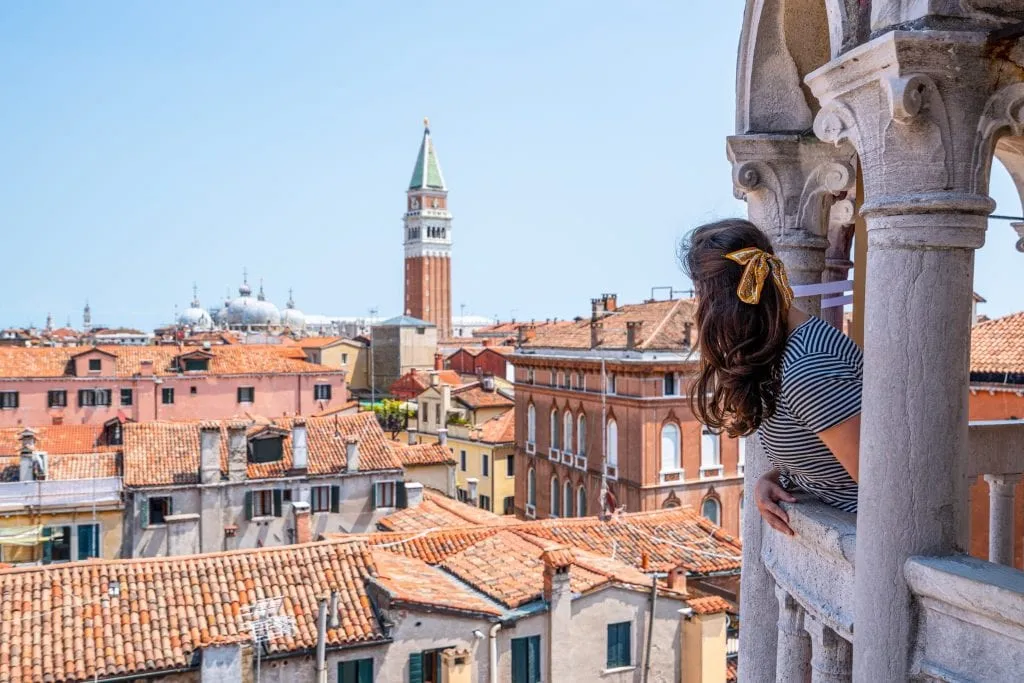
Some links in this post may be affiliate links. If you make a purchase through one of these links, we may earn a small commission at no extra cost to you. Please see our disclosure policy for more detail.
There were many, many lists involved in planning that first trip, and after months of planning, I emerged with an eclectic but incredible itinerary that kicked our love of travel into high gear.
In the summer of 2015, Jeremy and I spent a little over 2 weeks in Europe exploring Krakow , Budapest , Plitvice Lakes National Park , Zadar , Dublin , and the Cliffs of Moher (I told you it was eclectic!).
We’ve now cumulatively spent years of our lives traveling in Europe, falling in love with world-famous cities and less iconic locations alike, and there’s absolutely nothing we like better than helping people plan their own unforgettable adventures.
Over the years, we’ve explored the continent in almost every way possible, from backpacking Europe on a budget for 2 weeks to checking into luxury hotels to playing tour guide for family and friends to finally spending more than a year living in Lisbon, Portugal !
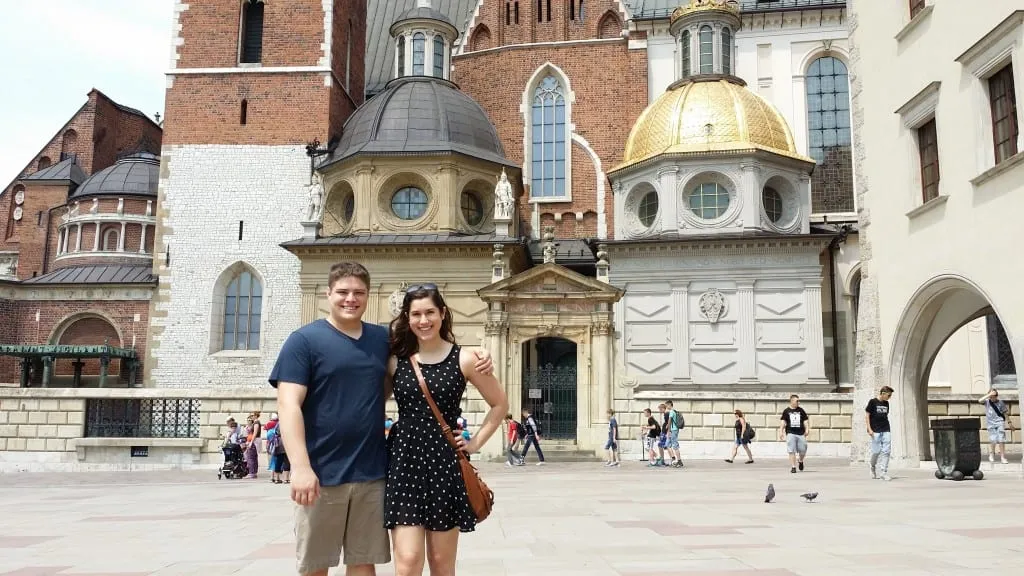
We’ve put together this 2 week Europe itinerary guide to help you plan your trip–here’s what you need to know before you go.
(Also, yes–this is an incredibly long blog post! We recommend using the table of contents right below this paragraph to help you navigate to different sections depending on what you’re hoping to read first.)
Table of Contents
How to Use This 2 Week Europe Trip Guide
Exciting 2 week europe itinerary ideas, how to get around during 2 weeks in europe, important tips for planning a 2 week europe trip, faq for spending 2 weeks in europe, what to pack for 2 weeks in europe, read more about visiting europe.
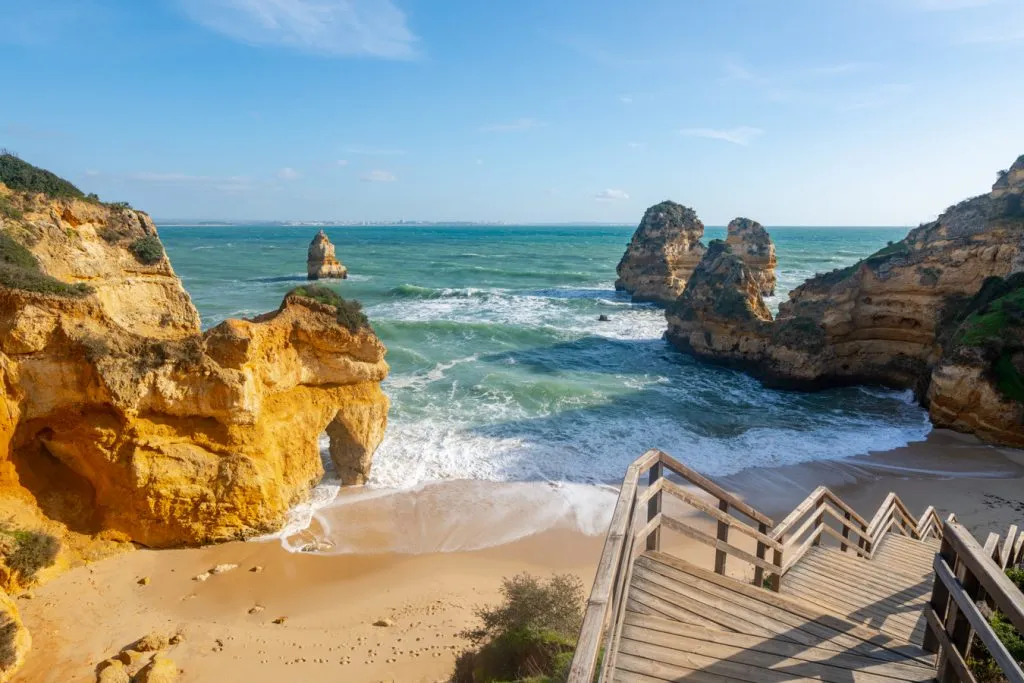
This 2 week Europe trip guide is designed for someone hoping to see the highlights of a few different European destinations, spread across multiple countries, in only a couple of weeks.
We’ve primarily written it for someone planning their first trip to Europe, but if this is your second trip, third trip, or beyond, hopefully, we have some interesting ideas and tips for you, too!
And, of course, given that Europe is home to more than 50 countries and is roughly the same size as the USA, no 2 weeks in Europe could hope to cover the entire continent or all of its numerous and distinct cultures, languages, and histories.
For ease of communication, we’ll talk in general terms about traveling in Europe here, but once you pick your itinerary, of course, you’ll want to follow up with further research on the specific locations you’ll be visiting.

And, once you’re further along in your planning process, we’d love to help you with some of that planning here on Our Escape Clause, too!
We’ll link to relevant blog posts throughout this travel guide, but given the hundreds of posts we have on the site, we won’t be able to link them all.
You can use our destinations page or the search bar on the top right of the page (on desktop) or at the top of the pop-out menu (on mobile) to find our content about various specific destinations across Europe or general travel tips.
For example, a few of our most popular guides that might come in handy next include our guide to traveling Europe by train , our 75 best Europe travel tips , and our (biased) guide to the best cities in Europe .
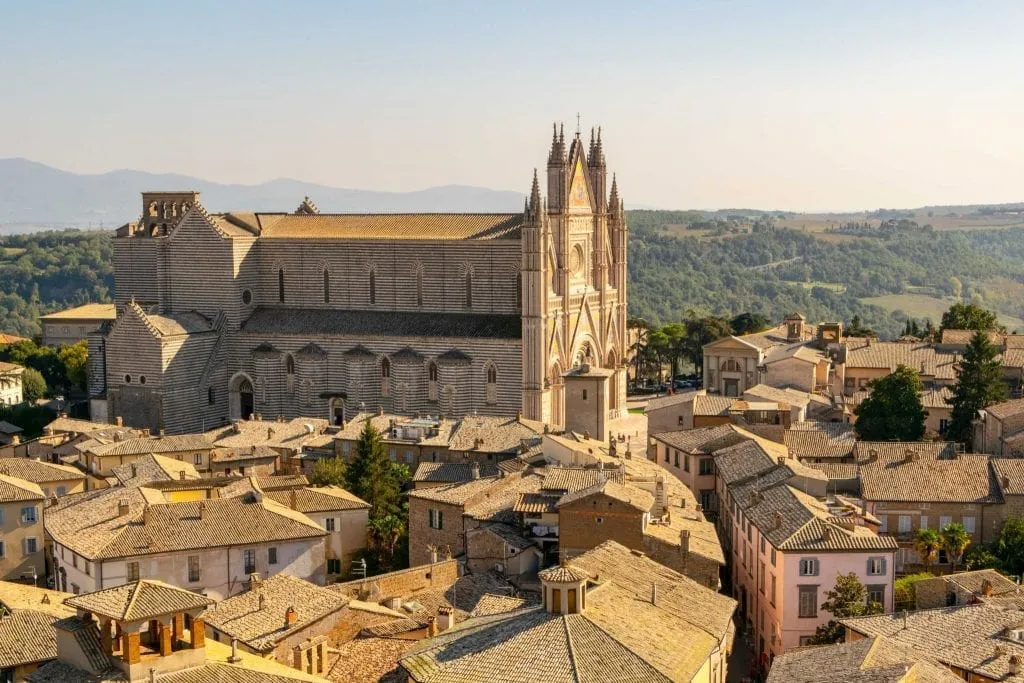
The number of possible 2 week Europe itinerary ideas is truly infinite–just look at the odd itinerary that I cobbled together for us in 2015 as an example !
However, the sample itineraries for Europe outlined below should give you a good idea of what you can accomplish with around 14 days in Europe .
I truly struggled to narrow down these ideas–I could name 10 more excellent 2 week Europe trips in an instant, and still feel like I was leaving so much on the table.
I aimed to keep these mostly focused on destinations that are popular for first-time visitors to Europe, with just a couple of slight curve balls thrown in.

The Classic: London, Paris, Rome
As three of the world’s most beloved and celebrated cities, you can’t go wrong with splitting your 2 weeks in Europe between London, Paris, and Rome.
As the capital of an English-speaking country and home to an enormous airport hub, London makes logistical sense for a first trip to Europe hailing from North America–and, of course, it’s a truly fascinating city.
Visit Buckingham Palace and Hyde Park, stroll through Notting Hill, snap photos of Big Ben, check out the Tower Bridge and the Tower of London , visit the Wizarding World of Harry Potter, stop by Piccadilly Circus, ride the London Eye , and tour the British Museum.
… And that’s just to get you started !
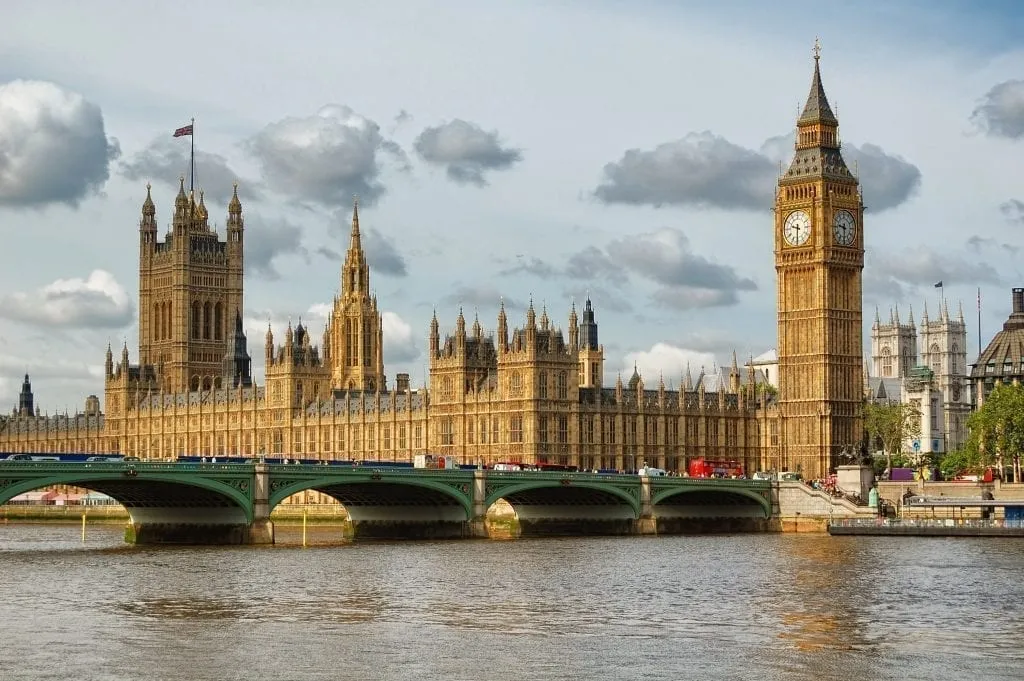
The City of Lights is one of our favorite cities in the world and was also the first place we visited on our very first trip to Europe (we spent a week there and then planned our 2 week Europe trip outlined in the introduction of this blog post the following year).
Since then, we haven’t been able to stop going back, and believe that it’s an excellent addition to any 2 week Europe itinerary!
While you’re in Paris , visit the Eiffel Tower, marvel at the beauty of Sainte-Chapelle, tour the Louvre and the Musee d’Orsay, stroll the picturesque streets of Montmartre and the Latin Quarter, visit the Palais Garnier, discover hidden passages and tiny cafes, and soak up every minute of that Parisian charm.
Our full guide to planning your first trip to Paris can help you get started!

Ah, Rome –if Paris is the first European city we fell in love with, Rome is probably our deepest love on the continent.
From wonders of Ancient Rome like the Colosseum, Roman Forum, and Pantheon to more recent additions like the Vatican Museums , Trevi Fountain, and winding cobblestone streets of Trastevere , exploring Rome is a captivating, engaging experience that we can’t recommend highly enough.
And, of course, you couldn’t ask for a better cuisine to savor during your 2 weeks in Europe: Rome is home to some of the best pasta in all of Italy!

Southern Europe Charm: Madrid, Rome, Amalfi Coast
Want your 2 weeks in Europe to focus on a delightful combination of history, food, and sunshine?
Head directly to Spain and Italy!
While Barcelona gets all the love (and a lot of the crowds), we’re personally smitten with the Spanish capital of Madrid… and excellent flight deals from North America make it almost irresistible on a 2 week Europe itinerary.
With a few days in Madrid , you can admire world-class art in the Prado, soak in Spanish culture with a stroll through Retiro Park, eat all the tapas and churros con chocolate you can get your hands on, tour the Royal Palace , check out an Egyptian temple, and take day trips to fairytale towns like Toledo and Segovia.
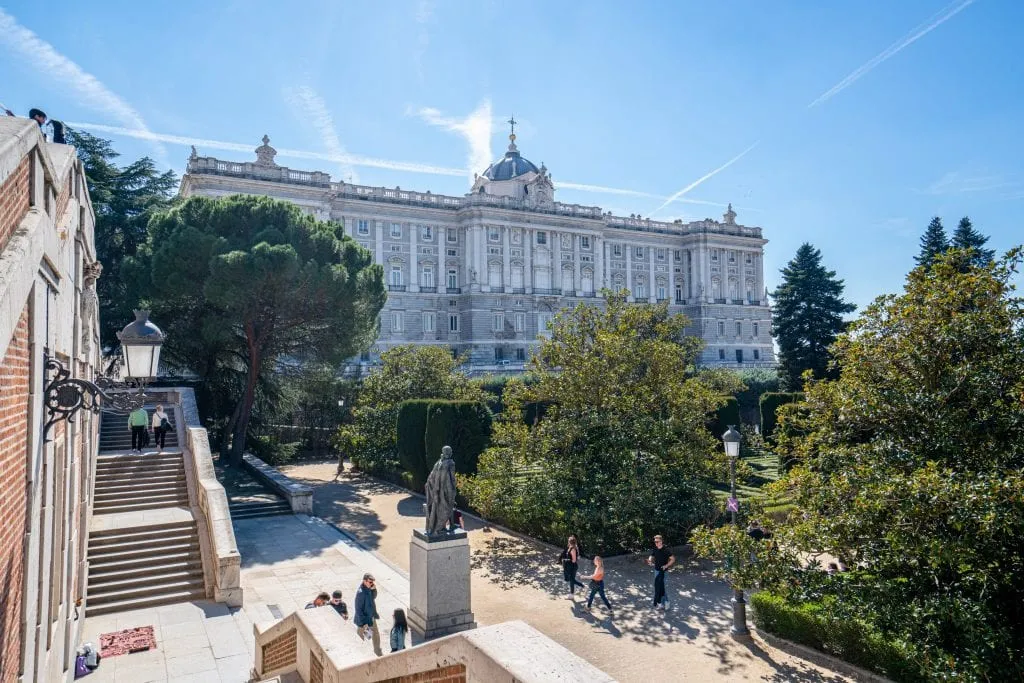
I described Rome in the first Europe itinerary on this list, so I won’t repeat myself here, but as I sit typing this Europe travel blog post out in a Rome apartment while dreaming of the carbonara I’ll eat for dinner tonight, all I can say is: you won’t regret coming to Rome (and scroll up for more details).
And, while I detailed some of Rome’s highlights above, let me also say… don’t forget to get off the beaten path in the Eternal City , either!
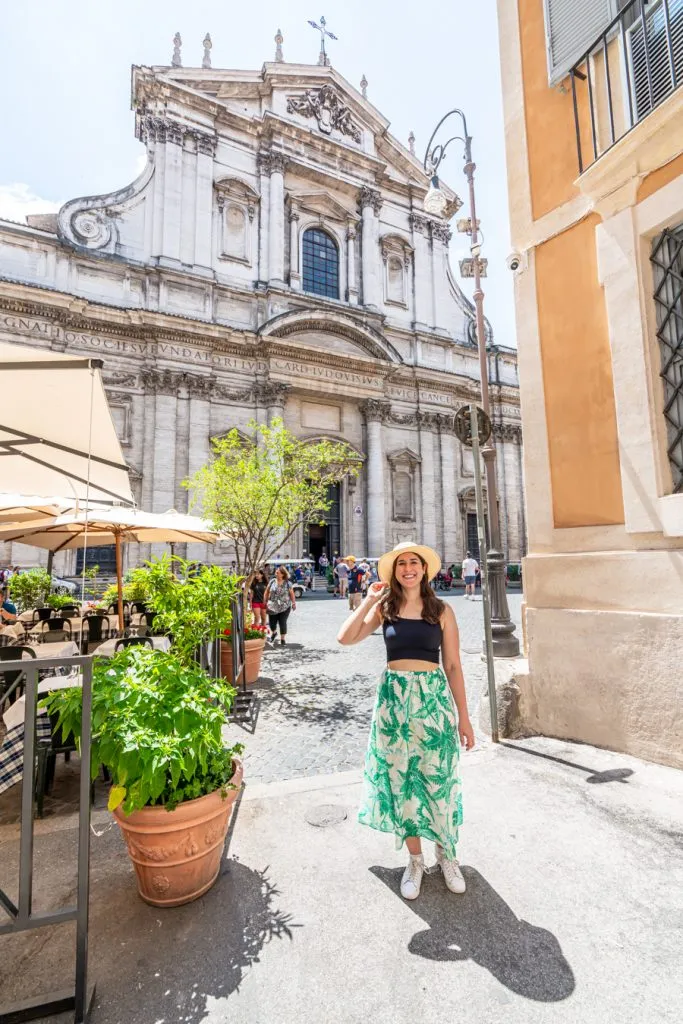
Amalfi Coast
The famed Amalfi Coast , with its dramatic cliffs, chic villages like Positano, delicious lemons, and jaw-droppingly beautiful hikes like the Path of the Gods, is a fabulous conclusion to any 2 week Europe trip–where better to relax than one of the most beautiful coastlines in the world?
While you’re there, be sure to make room for plenty of day trips!
Iconic locations like Capri and Pompeii , as well as less-popular but equally amazing spots like Ischia, Herculaneum , and Procida, are all at your fingertips when staying on the Amalfi Coast.
(Also, if you like page-turning novels about friendship and Italy, I highly recommend reading Elena Ferrante’s My Brilliant Friend series before coming or while visiting Europe).
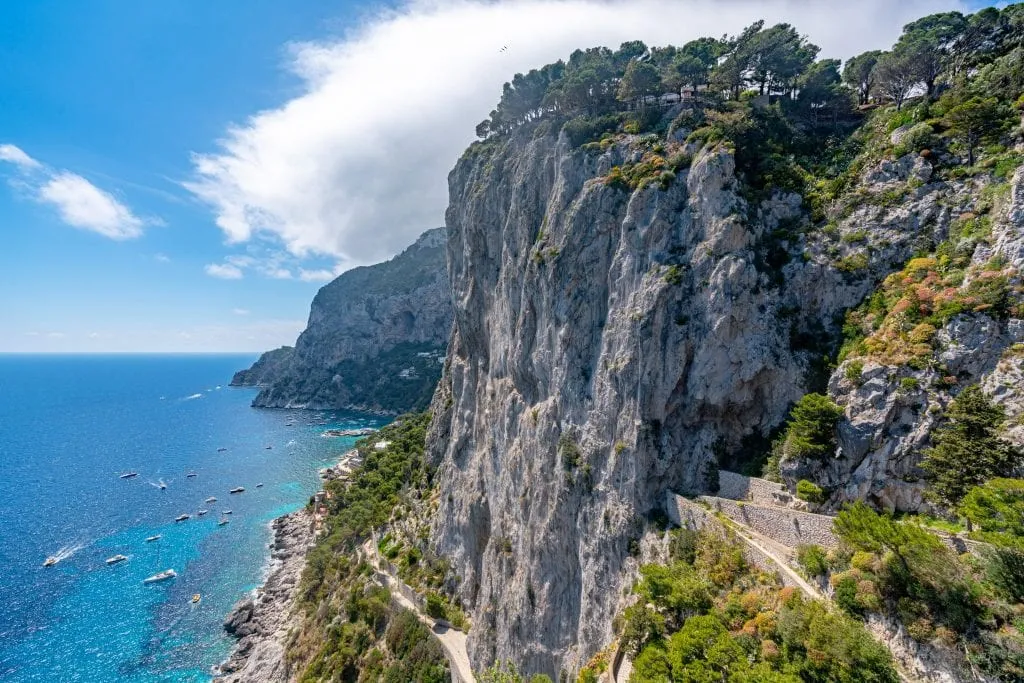
Regal Central Europe: Prague, Vienna, Budapest
Sweeping boulevards, dramatic architecture, beautiful coffeehouses, and tasty comfort food: a trip to Central Europe is an absolute delight.
In my opinion, this region truly shines during the winter months when Christmas markets are in full swing and the hearty cuisine keeps you warm from the inside out.
I’ll try to keep this section quite brief, as I’ve already written a detailed Central Europe itinerary here , but suffice it to say, we love it.
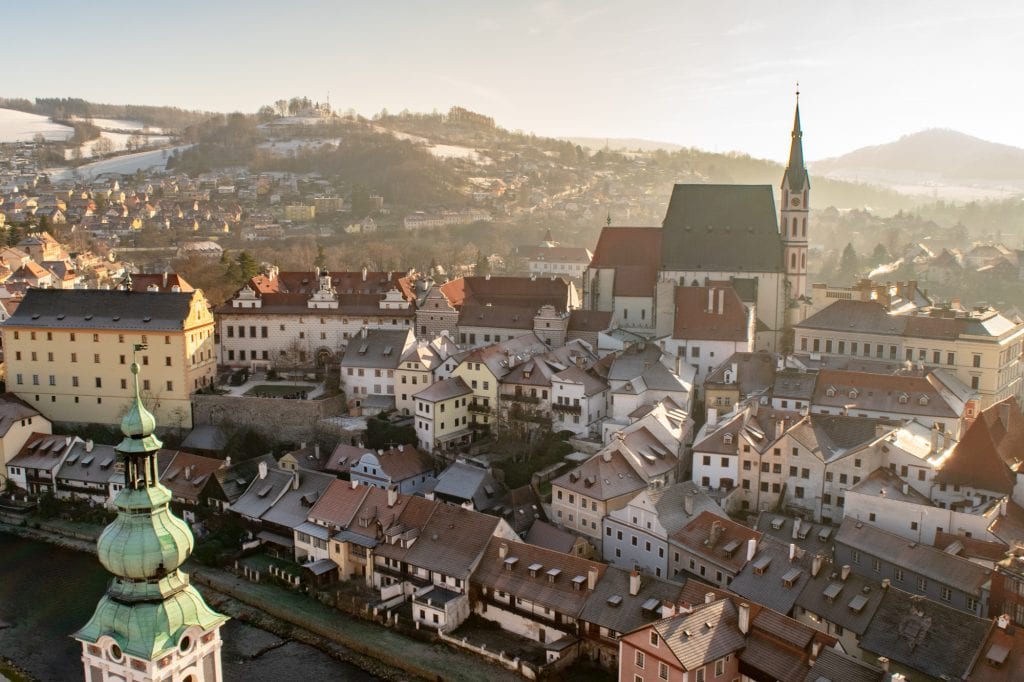
Known as the City of a Hundred Spires (and also for the fact that beer is cheaper than water here–true story, at least when it comes to pricey bottled water at restaurants), Prague is easily in the running for the most beautiful city in Europe.
The beauty of Prague Castle, St. Vitus Cathedral, the famed Charles Bridge, and Prague’s well-known astronomical clock will all draw you in.
If you have enough time, consider adding a day trip to a smaller Czech town like gorgeous Český Krumlov as well!
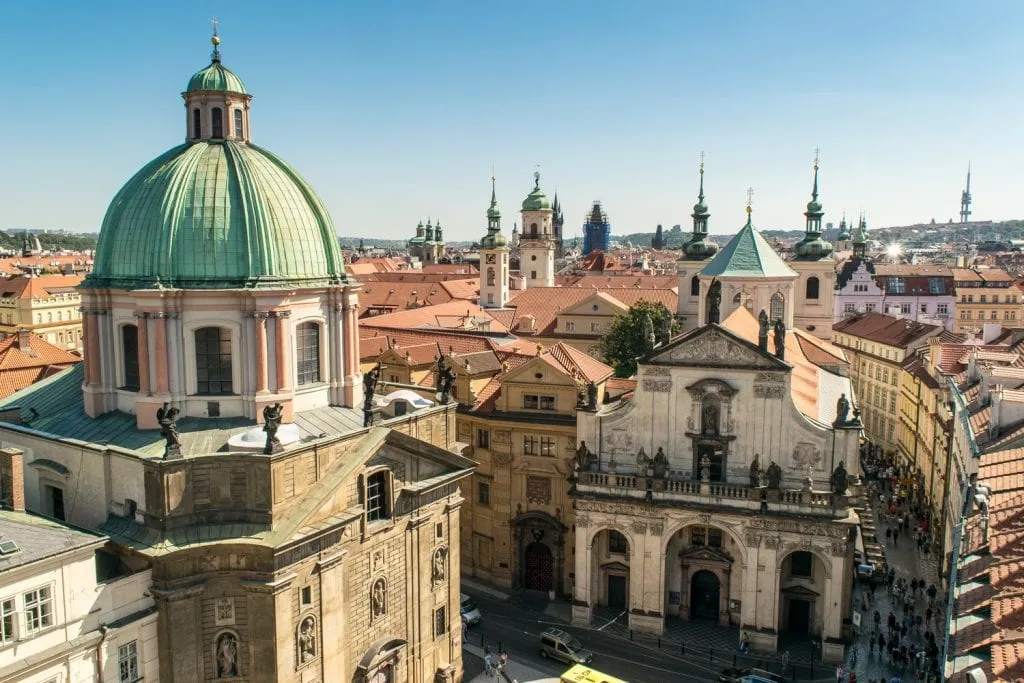
Regal and beautiful, full of spacious, wide avenues and ornate buildings, Austria’s capital city is the perfect place to come to tour grand palaces ( Schonbrunn is one of the most popular), see a show in one of the world’s premier opera houses, and to enjoy European cafe culture at its finest.
We absolutely adore Vienna’s coffee houses–be sure to try a slice (or several) of Esterhazy Cake while there, as well as Viennese hot chocolate.
The city’s famed Spanish riding school and striking St. Stephen’s Cathedral are also worth adding to your list!
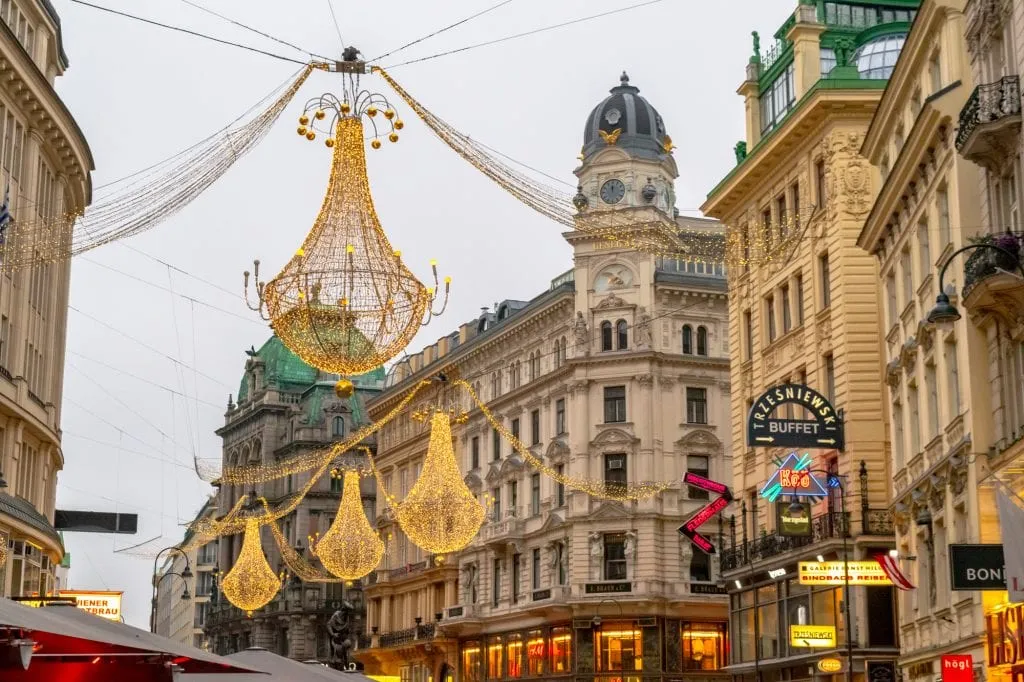
As our favorite city in central Europe and one of our top 10 cities in Europe overall, I really can’t say enough about how beautiful Budapest is!
The city is somehow, simultaneously, both grand and down-to-earth , absolutely gorgeous while also remaining accessible, affordable, and fairly simple to visit and explore.
While in Budapest, go for a soak in the famous thermal baths, tour one of the most beautiful houses of Parliament in Europe, check out a castle, visit grand basilicas, take a boat ride down the Danube, and, if you’re up for a bit of adventure, even go on a cave tour!
Be sure not to miss the great food , either–Budapest’s hearty cuisine is a delight, and one of our all-time favorite wine tastings took place there!
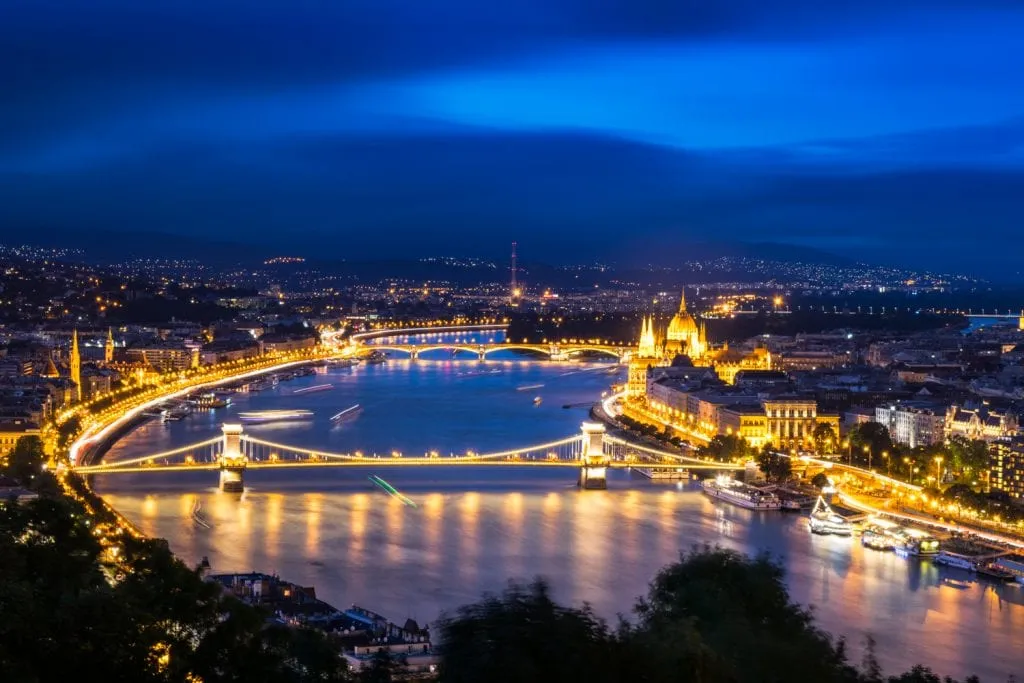
Europe for Art Lovers: Paris, Florence, Venice
If you’re an art buff at heart, you can’t ask for a better sampling of some of the continent’s most beloved artistic cities than the trifecta of Paris, Florence, and Venice (and it certainly helps that each city is practically an art museum in and of itself).
From the Louvre to the Musee d’Orsay to the Orangerie to the Musee Rodin to the Centre Pompidou to the Cluny Museum, it would probably take a lifetime to enjoy all the art museums in Paris alone.
And of course, the city has so much more to offer once you need a break!

Nicknamed the Cradle of the Renaissance, Florence boasts the finest collection of Renaissance art on the planet–and claims many of its most famous artists as locals.
Michelangelo, DaVinci, Botticelli, and more all originally hailed from Florence, and their works are scattered about the city.
Perhaps most famously, Michelangelo’s David is in the Galleria dell’Accademia and Botticelli’s The Birth of Venus is in the Uffizi Gallery .
And of course, no art-focused trip to the Cradle of the Renaissance can overlook Florence’s iconic Duomo , a masterpiece of the era!

Located an easy train ride away from Florence, Venice may be slightly less well-known for its art than the first two cities on this 2 week Europe itinerary, but there’s no doubt that there’s plenty to find!
From the utter masterpiece of St. Mark’s Basilica (don’t miss a chance to go in!) to the incredible Doge’s Palace to the famous Galleria dell’Accademia (not to be confused with the one in Florence!) that focuses mostly on Venetian artists, Venice is an art lover’s dream.
Mix it up by adding a visit to the Peggy Guggenheim Collection, which holds modern art, and a gondola ride .
A fter all, Venice itself is no doubt one of the best artistic masterpieces in the city, and it deserves to be seen from all its best angles.
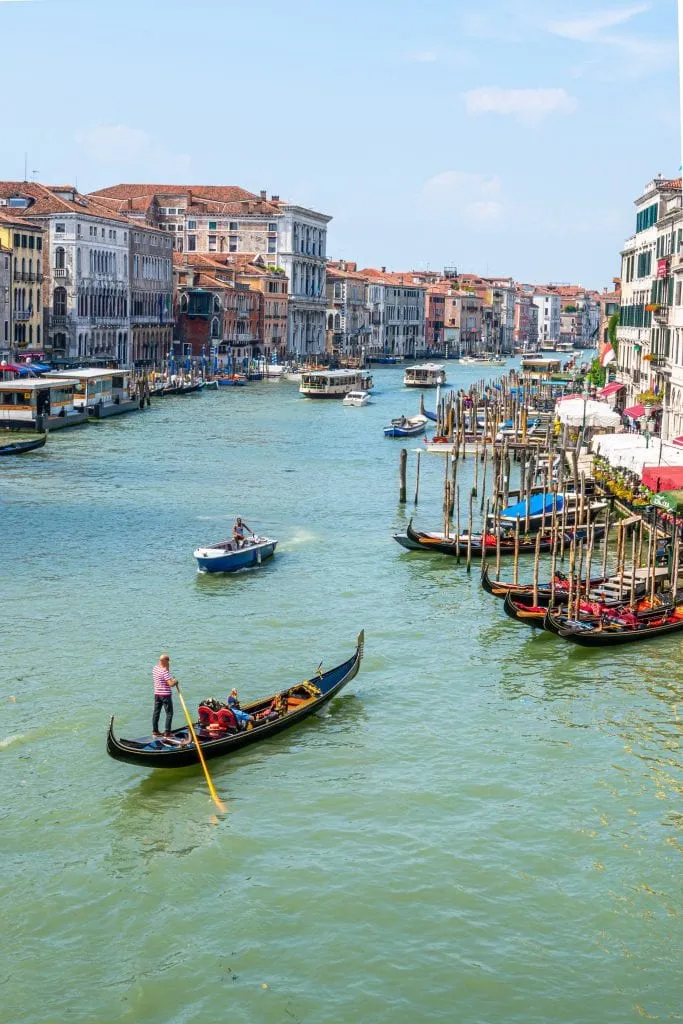
The Incredible Iberian Peninsula: Lisbon, The Algarve, Andalucia
The Iberian Peninsula is dominated by Spain and Portugal , and while I might be biased after spending more than a year living in Lisbon, it makes for an unforgettable Eurotrip!
(The fact that there are often flight deals from the US to Lisbon and Madrid doesn’t hurt, either).
There are infinite ways to craft southern Europe itineraries out of these two countries, but here’s one great option…
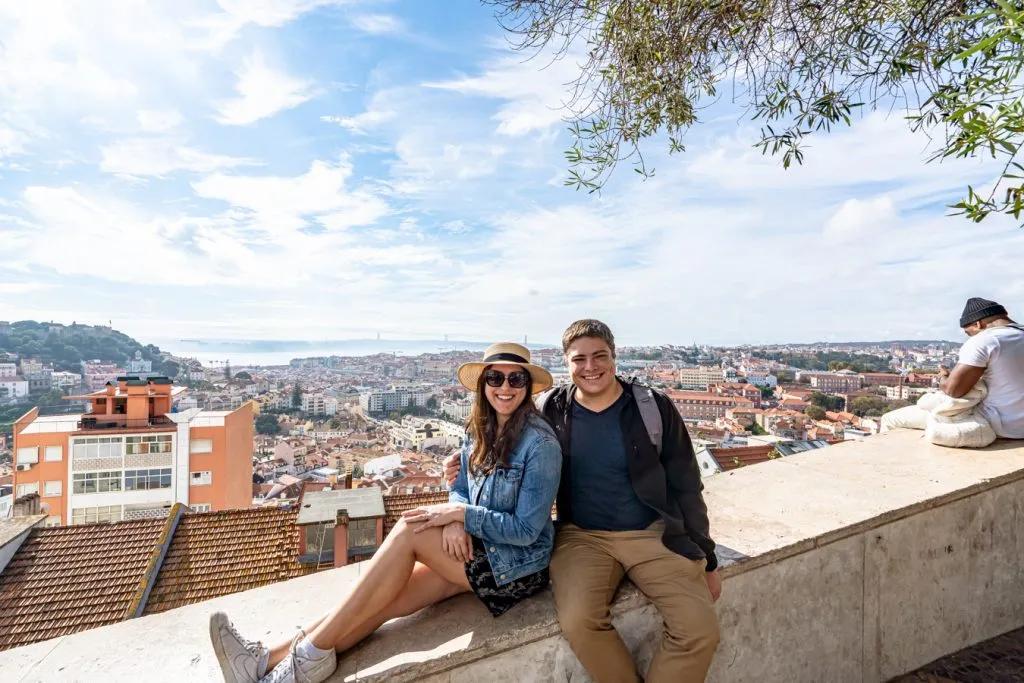
Start your trip with a few days in Lisbon , Portugal’s trendy capital city, soaking up beautiful views from its many miradouros , sampling Portuguese food (starting with pastéis de nata ), touring the incredible Jerónimos Monastery, and taking day trips from Lisbon to nearby gems like the palaces of Sintra and/or the beach resort town of Cascais .
Be prepared to head up and down a lot of hills while you’re there–but Lisbon is worth the climb.
If you’re looking for neighborhoods to wander through, Alfama, Castelo, Chiado, and Bairro Alto are particularly picturesque–keep an eye out for trams, azulejos, and peacocks as you explore!
And, while Lisbon’s top attractions are definitely worth a visit, seeking out some of the many hidden gems in Lisbon will add extra beauty to your trip.
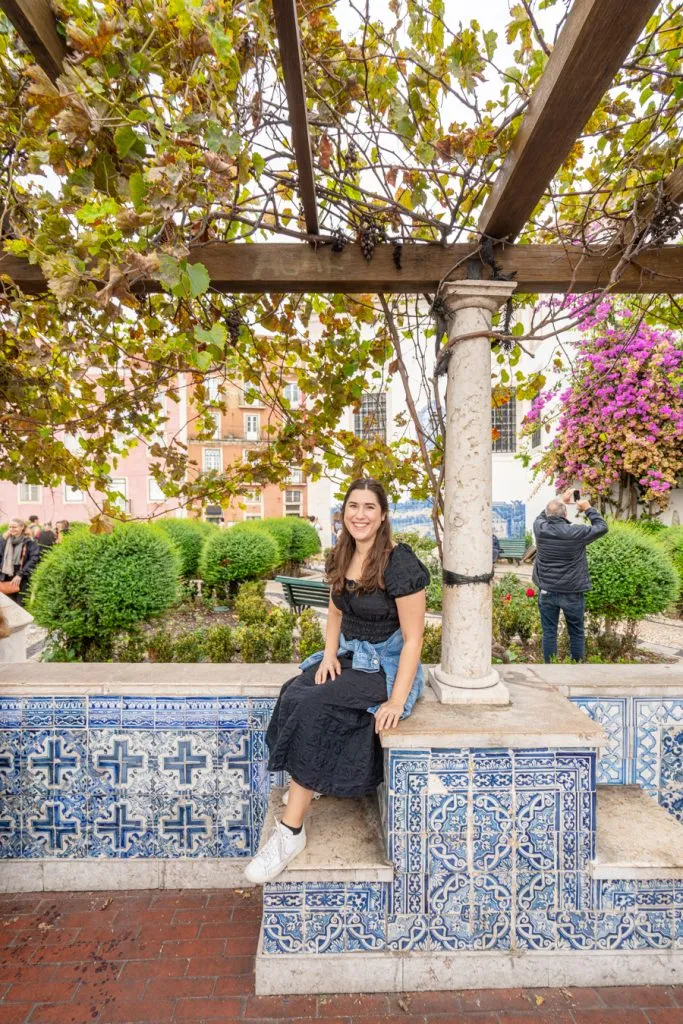
The Algarve
After saying goodbye to Lisbon, head south of Portugal’s Algarve for a dizzying array of whitewashed villages (you’ll find many of the best beach towns in Portugal here) and a picturesque coastline.
Lagos is one of the most popular places to stay, and we can highly recommend it–don’t miss the famous Ponta da Piedade, which photos can’t do justice to.
Nearby attractions (ideally, you’ll want to rent a car in the Algarve) include the famous Benagil Cave and the unmissable Seven Hanging Valleys Trail!
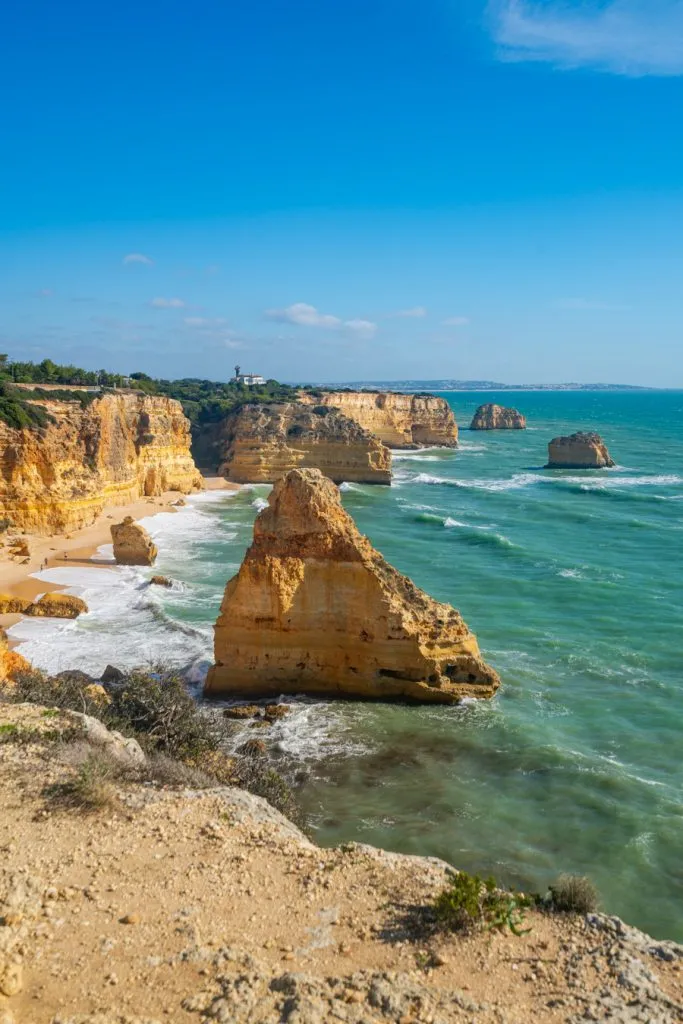
For the second week of your trip in Europe, cross the border into southern Spain (note: there’s no direct train access for this journey, but there are buses).
Split your time between any two of Andalucia’s incredible cities, taking nearby day trips from there.
Seville (with its Alcazar and famous Plaza de Espana), Granada (home of the Alhambra ), and Cordoba (home of the Mosque-Cathedral , one of the most unique houses of worship in the world) are all wonderful inland options.
On the coast, options include Cadiz, Malaga, Marbella, Tarifa, and many more.
With a bit more than 2 weeks in Europe or an ambitious schedule, you may be able to squeeze in a day trip to Gibraltar and/or Tangier, Morocco while here!

Food + History: Athens, Santorini, Istanbul
Feel like heading further east–as far east as you can get during a Europe vacation?
Greece and Turkey pair very well for a 14 day European itinerary–here’s what that might look like.

Start your trip in Athens, marveling at some of the world’s most remarkable ruins, including the famous Acropolis complex and museum.
Be sure to make time to explore non-ancient aspects of Athens as well, including the trendy Plaka neighborhood, Monastiraki Square (and nearby flea market!), and Syntagma Square.
And of course, one of the absolute best things to do after you touch down in Athens is to dive into plate after plate of phenomenal Greek food –that alone is worth traveling to Greece for ( our Athens food tour remains one of my favorites that we’ve taken in Europe).

Truly, any one of Greece’s amazing islands would fit nicely into this 2 week Europe itinerary, but where better to choose than Santorini , with its iconic blue-and-white color scheme, fantastic caldera views, and excellent flight connections?
While Santorini isn’t best known for its beaches–you’re better off heading to Crete for those–you sure can’t beat the charming villages or stunning nature.

The city of two continents, where thousands of years of history blend seamlessly with modern life, and where you can eat one of the best breakfasts you’ll ever experience in your life: Istanbul tops bucket lists around the world, and there is simply nowhere on the planet quite like it.
Marvel at the Blue Mosque, step inside the Hagia Sophia, eat your weight in Turkish breakfast (seriously, I can’t emphasize enough how tasty it is), admire the views of the Bosphorus, climb the Galata Tower, and shop your way through the Grand Bazaar.
Since this Europe travel blog post focuses on, well, Europe, I won’t sketch out any other possibilities further east in Turkey in detail…
But, if you have time, you could easily add a visit to Cappadocia , complete with a sunrise hot air balloon ride, to your trip, or even a visit to the ruins of Ephesus.

Architecture + Culture: Cologne, Amsterdam, Belgium
With this small triangle of destinations, you can easily visit separate countries via train, with very little travel time between them!
And, if you were particularly motivated to add another, you could even squeeze in a day trip to Luxembourg.
If you’re looking for a winter itinerary for Europe that focuses on cities, this is a fantastic option.

Home to a stunning cathedral and what may just be the best Christmas markets on the planet, Cologne is a gorgeous German city that is a delight to explore on foot.
Don’t miss its soaring Gothic Cathedral while you’re there!
… Though honestly, that would be hard to do, considering you can see it right as you step outside the train station.

As one of the most popular cities to visit in Europe, Amsterdam requires no introduction.
The city of canals, biking, and revelry is somehow even more beautiful in person than in the billions of photos of it.
While you’re there, be sure to take a canal cruise, stroll the 9 Streets, and visit at least a couple of the city’s museums (the Anne Frank House is incredibly moving).
If you visit Amsterdam in winter , you’ll no doubt need to bundle up–but the lack of crowds in this often-packed city is also a treat to experience.
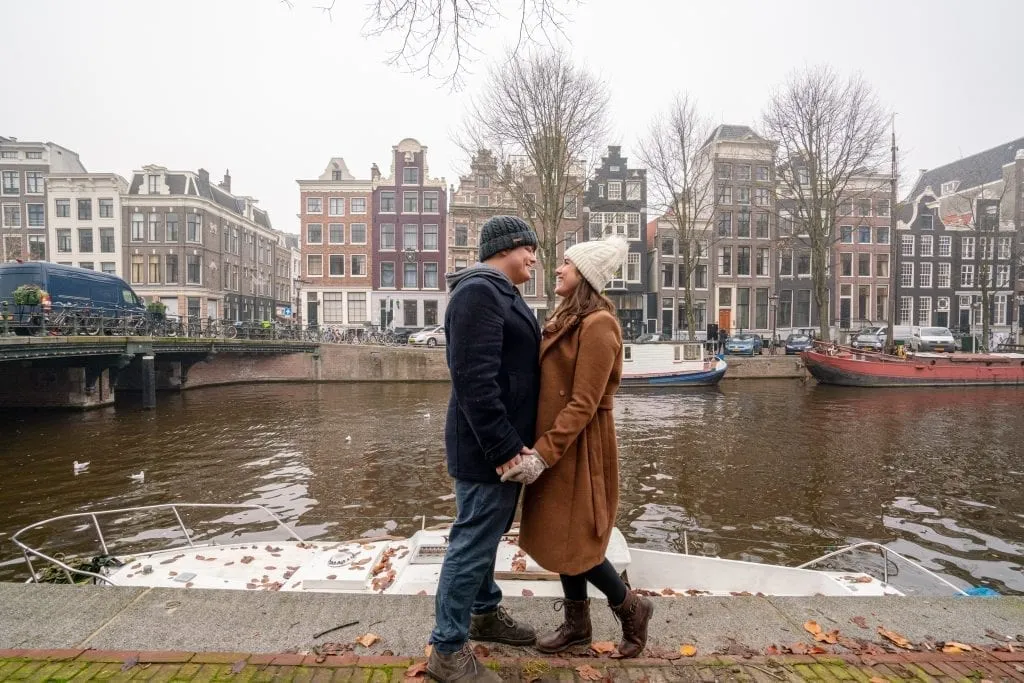
Perhaps it may be slightly unfair to list Belgium entirely while the other destinations are split into cities… but considering Belgium’s two most popular cities, Bruges and Ghent , are located less than an hour apart by train, you can cover quite a bit of the country in a few days !
With stunning architecture, canals, and carbs (bring on the waffles and frites), it’s easy to have a blast in Belgium.
Winter in Belgium brings a lack of crowds and plenty of festivities during the Christmas season!
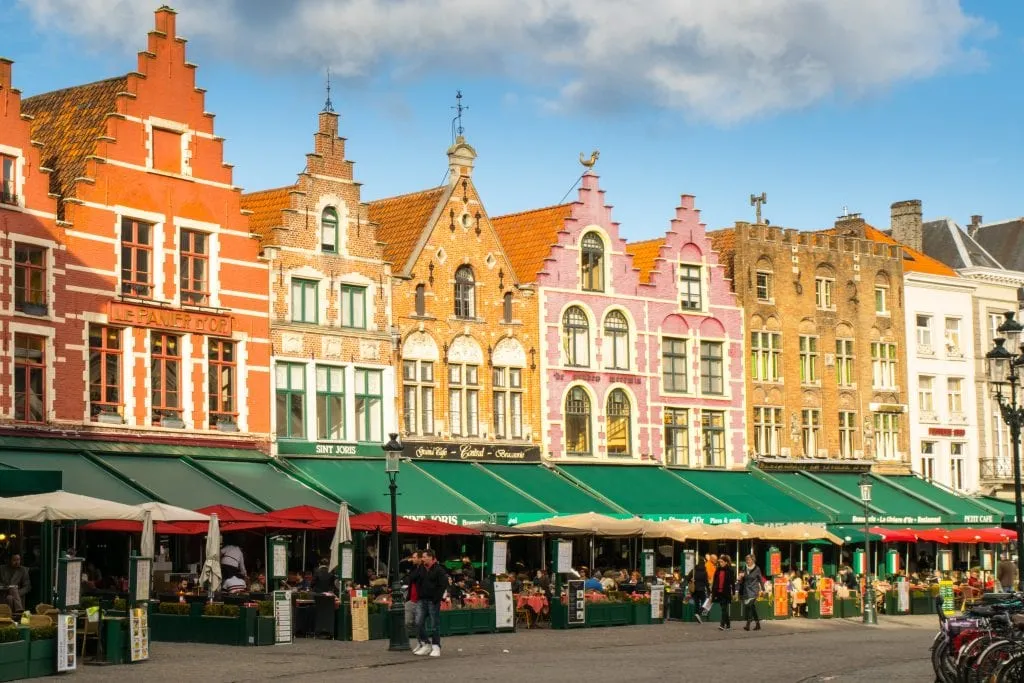
Alpine Escape: Bavaria, Switzerland’s Jungfrau Region, Milan, and Lake Como
If your dream Europe trip involves plenty of Alpine views with a side of cities, this is the itinerary for Europe in 2 weeks for you.
Start your trip in Bavaria, the land of castles, beer, and outdoor delights.
City lovers will enjoy being based in Munich (don’t miss the opulent Munich Residenz or view from St. Peter’s Church and/or the Town Hall Tower while there).
From Munich, you can easily day trip to more mountainous areas, starting with Fussen, home to Germany’s famous Neuschwanstein Castle .
If you get good weather and want to see as many mountains as possible, a day trip to the Zugspite–the highest point in Germany–is also an option.
Really, though, if there’s one thing to prioritize in Munich, it’s to eat and drink all the sausage, pretzels, beer, and beyond you can get your hands on!
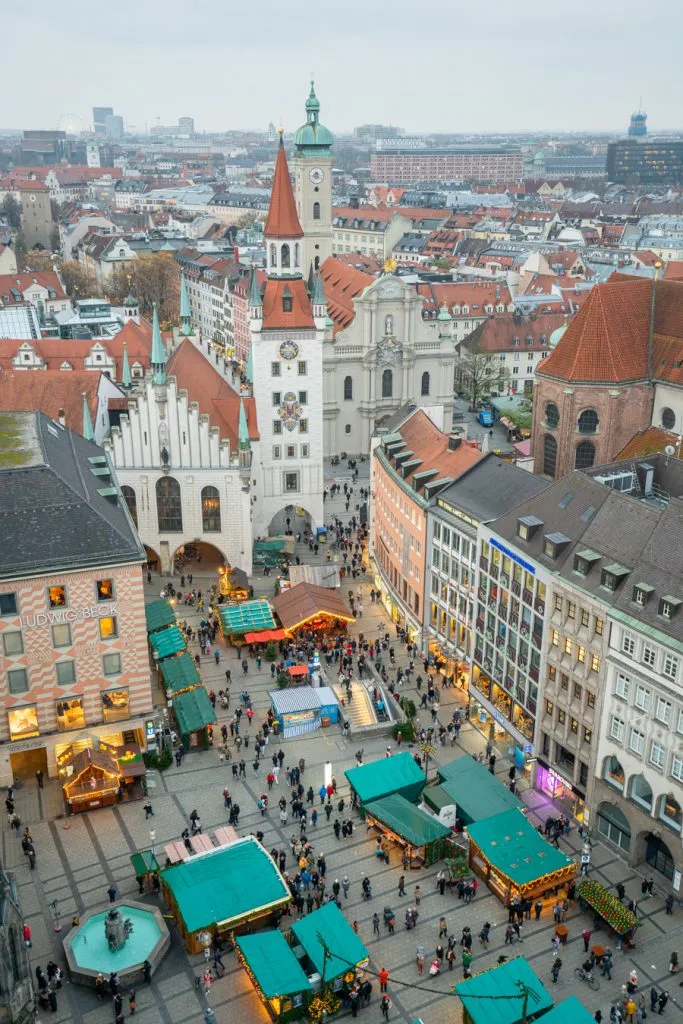
Switzerland’s Jungfrau Region
I am convinced that Switzerland’s Jungfrau region–located around (literally, above) Interlaken–is paradise on earth in the summer.
If you’re dreaming of the Alps, check into a hotel in Wengen, Murren, or Grindelwald (for the best views) or Interlaken (for a bit more selection) or Lauterbrunnen (to be in the literal center of the action) and have the trip of your dreams.
Switzerland’s legendarily efficient trains and gondolas mean that wherever you stay, the region is at your fingertips.
Hiking from Mannlichen to Kleine Scheidigg, riding the highest train in Europe to Jungfraujoch (aka the “Top of Europe”), eating daily fondue, walking from Murren to Gimmelwald , and riding a historic cogwheel train to Schynige Platte are just a few of the unforgettable experiences you’ll find here.
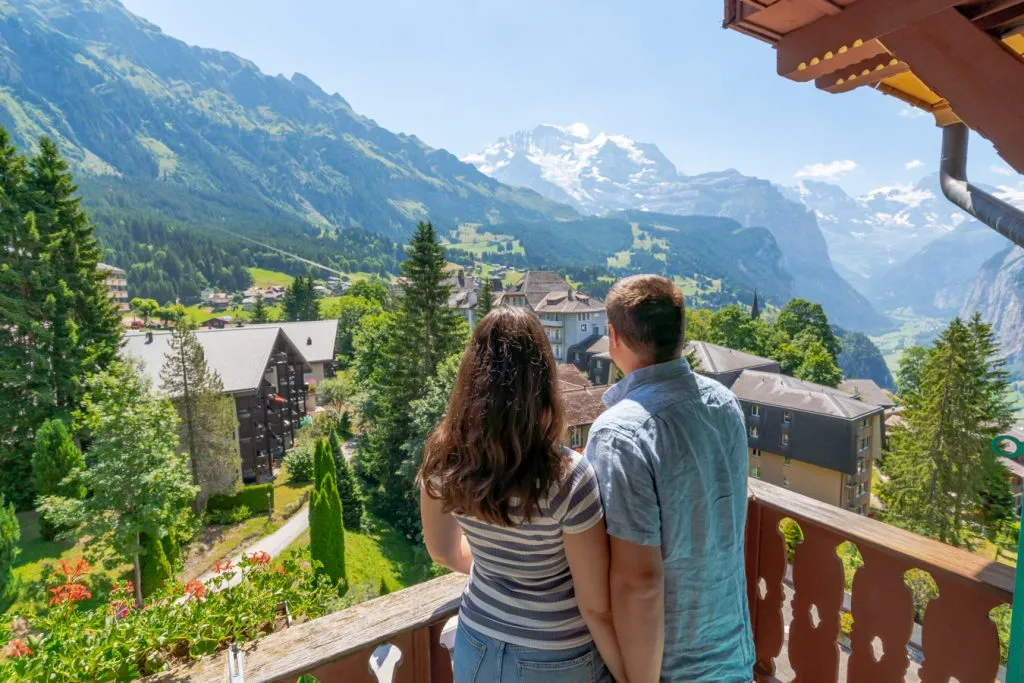
Milan + Lake Como
End your trip to Milan and Lake Como , two of the most popular destinations in northern Italy!
In Milan , be sure to visit its legendary Duomo, stroll through the Galleria Vittorio Emanuele II, visit Sforzesco Castle, and, if you can get tickets (plan ahead!) see Da Vinci’s The Last Supper .
At Lake Como (just an hour north of Milan by train), take a boat tour around the lake and visit delightfully charming towns like Varenna and Bellagio while admiring magnificent Alpine views.

Getting around in each city on your 2 week Europe itinerary is a question better suited to blog posts on that particular city, so this section is designed to address getting in between each destination during your 14 days in Europe.
We recommend checking several solutions for each destination, as you never know what will crop up!
Personally, our first 2 week Europe trip involved an overnight train, a budget plane ride, and a couple of rental cars.

Train travel is our absolute favorite way to travel in Europe!
I t’s much less stressful than traveling by plane, especially once you get the hang of it, far more comfortable, and for those of us hailing from North America, it’s a travel experience in its own right!
We recommend using services like Omio to compare train prices across multiple countries.
It works more or less exactly like a car rental aggregate does, searching multiple companies and generating the best routes and prices for your dates.
Keep in mind that train travel is most useful in western and central Europe–once you head into eastern Europe and especially the Balkans, train travel becomes more limited and bus travel more common (for example, popular Dubrovnik, Croatia doesn’t have a train station).
Shop train routes and tickets prices in Europe today!

For those traveling on a budget or between two smaller destinations where rail travel isn’t an option, buses can be a very affordable choice.
In addition to standard local buses, companies like Flixbus provide an easy-to-use service, and you can check their prices and availability directly or through Omio as well (that way you can compare train tickets at the same time).
Browse bus routes in Europe today!
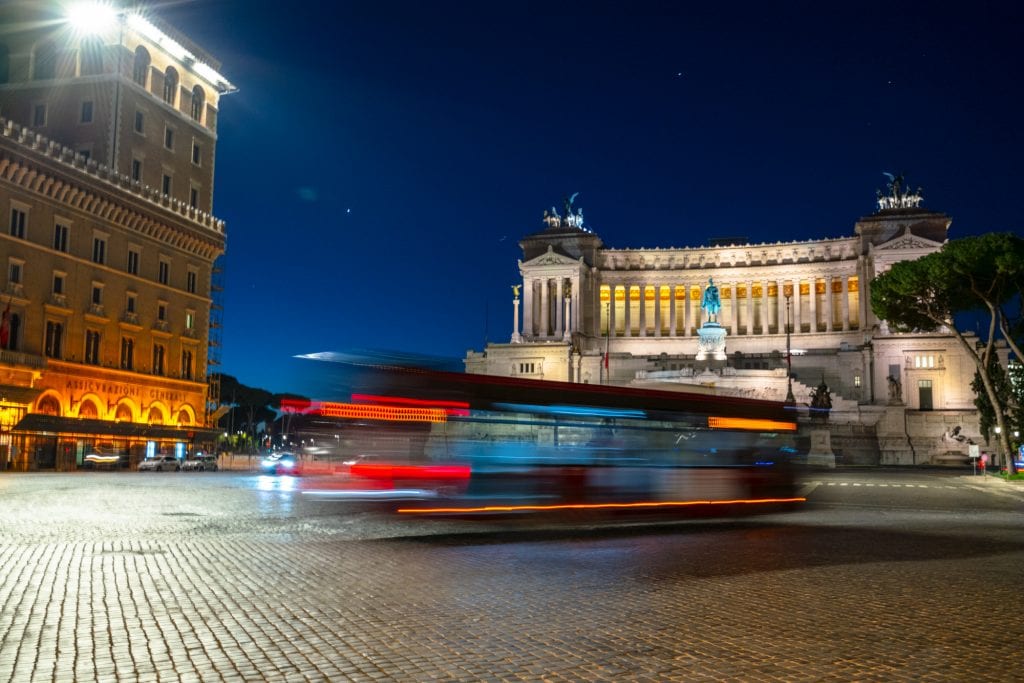
With plenty of budget airlines and plenty of airports to choose from, if you plan wisely, it’s possible to take flights in Europe that are so inexpensive you wonder how the company pays for the fuel.
S eriously: 10 Euro flights are possible, though we’ve never actually managed to pay that since we prefer to check our bags !
When looking for flights within Europe, we recommend using Google Flights in order to search the whole continent at once (you can simply put “Europe” in as the destination, and it’ll pull up a map of prices).
With a little flexibility on destination (for example, maybe flying into nearby Bologna is cheaper than flying into Florence ?) and even on dates if possible, you just might end up with an excellent flight deal or two during your trip to Europe.
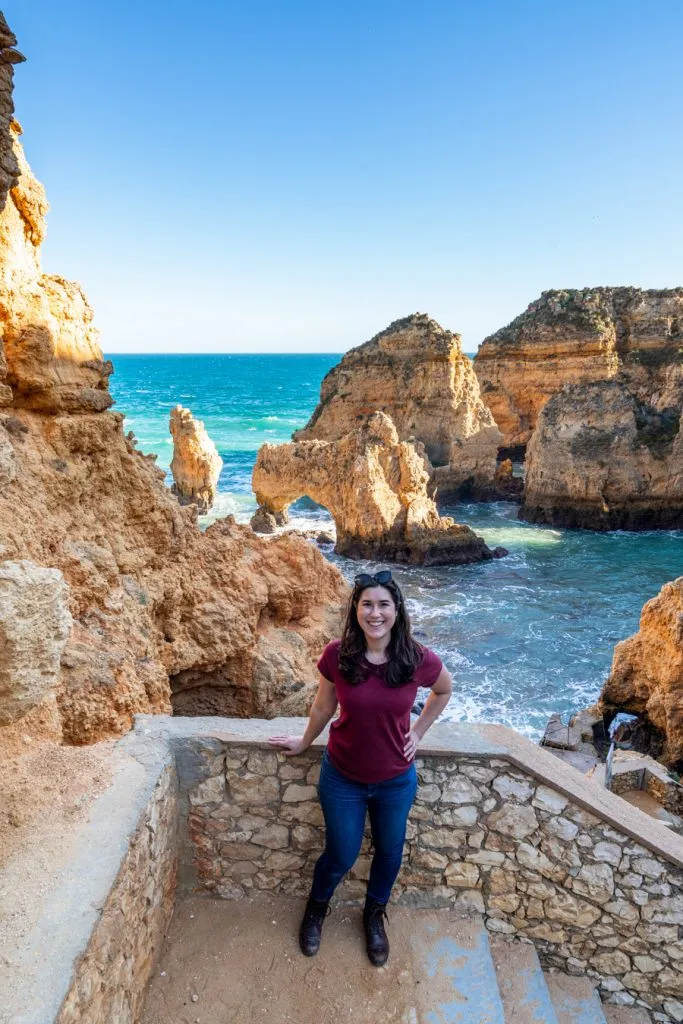
Personally, we recommend avoiding a car rental when possible during your 2 weeks in Europe, especially if you’re following anything resembling a Europe itinerary like the ones I outlined above.
In large cities, rental cars are a hindrance and a liability, not an asset, and they add quite a bit to your bottom line.
That being said, if you’re planning on visiting any rural areas or small towns, road trips in Europe can be a delight!
Y ou could consider renting a car for a couple of days in Tuscany , for example, or to visit the villages of Provence.
If you do choose to rent a car, we recommend searching for the best prices through Discover Cars , which will allow you to search multiple companies at once and come up with a great option.
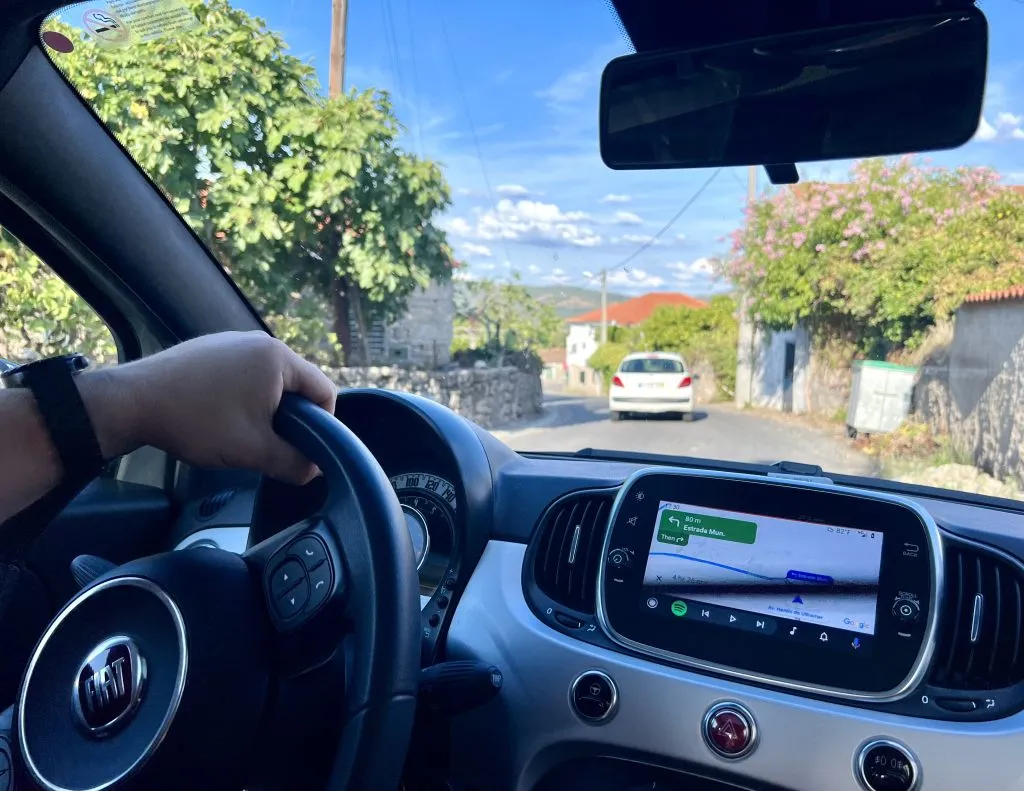
While major international carriers like Hertz and Enterprise are available in Europe, they’re not always the best deal, and searching for a combination of local and international companies is best.
Personally, we have no loyalty to any one rental car company, and book with whoever is most affordable (and we always buy the extra insurance).
As a result, we’ve rented cars through easily more than 15 or 20 agencies over the years (I’d be hard-pressed even to estimate it), and we’ve never had any issues with surprise charges.
Price out rental cars with Discover Cars now!
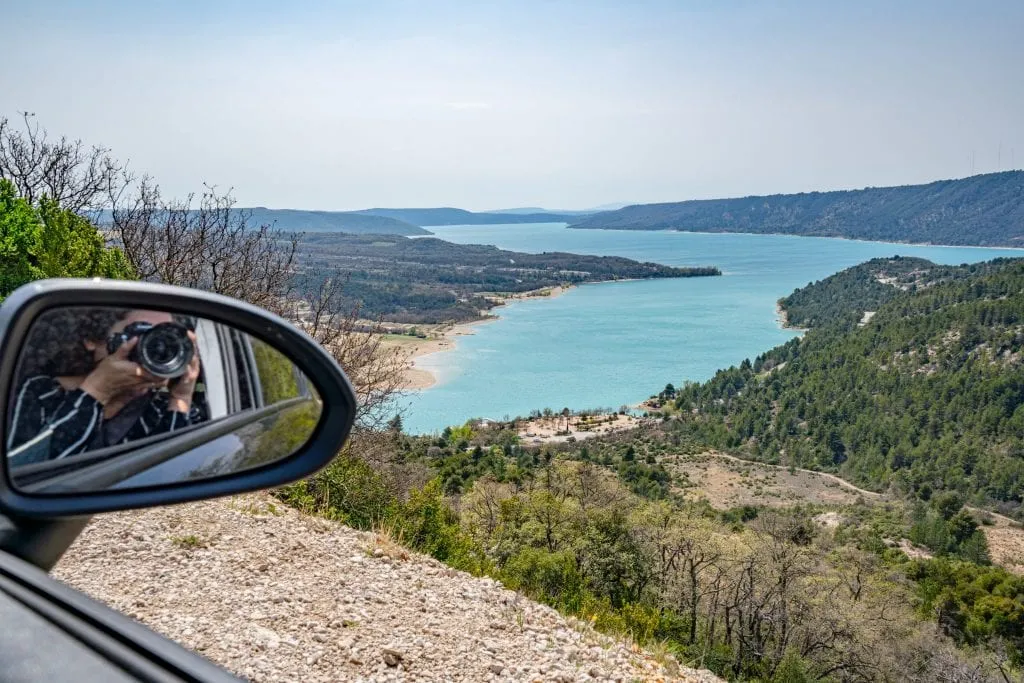
Don’t forget boats when it comes to planning a 2 week Europe itinerary, especially over the summer!
While ferries between or to/from islands are obviously the most popular ( Dubrovnik to Hvar , for example, or Barcelona to Mallorca), there are longer ferry options as well!
Last summer, we took a ferry from Barcelona to Rome and loved the experience of drifting along the Mediterranean Sea for 24 hours!
Many ferry routes are seasonal, but not all.

Don’t plan to visit too many destinations.
With only around 14 days in Europe, I know it can be incredibly tempting to squeeze in as many destinations as possible (and I have many fevered outlines of ridiculously ambitious trips I planned in my college days to prove it), but your trip will go so much more smoothly if you can resist that temptation.
In most cases, we recommend an absolute minimum of two full days per major city.
By full days, I mean with limited exceptions (like a red-eye flight that lands at 8:00 AM), the day you arrive and the day you depart don’t count as a “day” in a given city–just as a travel day.
Three or four days per city is even better and will allow you to potentially squeeze in a day trip from that city to a smaller city or village if you want to mix things up.
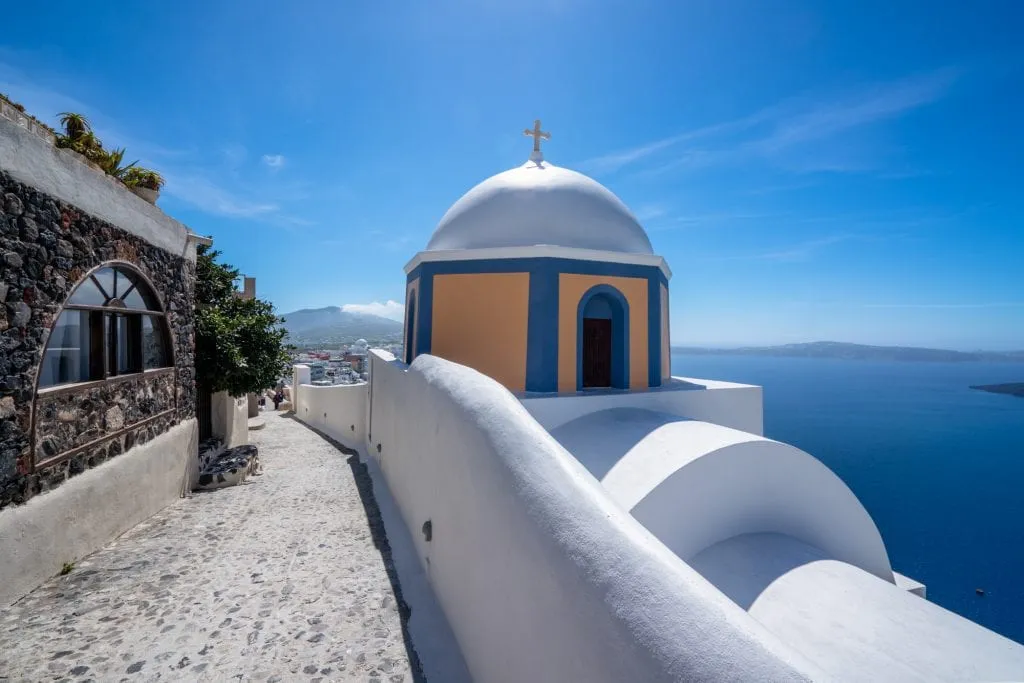
Start and end in a major airport hub.
It doesn’t necessarily have to be the same hub–more on that below–but there are definitely airports that are cheaper to fly into and out of for intercontinental flights than others.
Budapest may be affordable once you’re there, for example, but flying from the US directly to Budapest can hurt the wallet!
For those of you coming from the USA, London, Dublin , Madrid , Paris , Lisbon , Frankfurt, Amsterdam , and Milan are a few places to check ticket prices for.
That’s not an exhaustive list by any means, but there are often flight deals to and from these cities.

If you can, use an open-jaw ticket rather than a return ticket.
This will allow you to begin and end your 2 weeks in Europe in entirely different destinations, and let you avoid doubling back!
While one-way tickets can be pricier than round-trip ones, if you’re flexible on your dates and destinations (so deciding which cities to start and end in partially based on price), you can usually find excellent deals
This is exactly how we ended up flying into Krakow and out of Dublin for our first 2 week Europe trip!

You will be exhausted at some point. Plan for it.
Two weeks in Europe may not seem like a ton, but if you’re anything like us or virtually all of the travelers we have talked to, exhaustion will set in during your trip.
Sightseeing in Europe is fabulous, but it’s also tiring.
Add in navigating cultural differences, language barriers, and moving countries every few days, and you’re bound to need a break at some point.
We recommend planning a couple of laid-back days without museum visits, tours, or day trips so that you can catch your breath and avoid burnout.
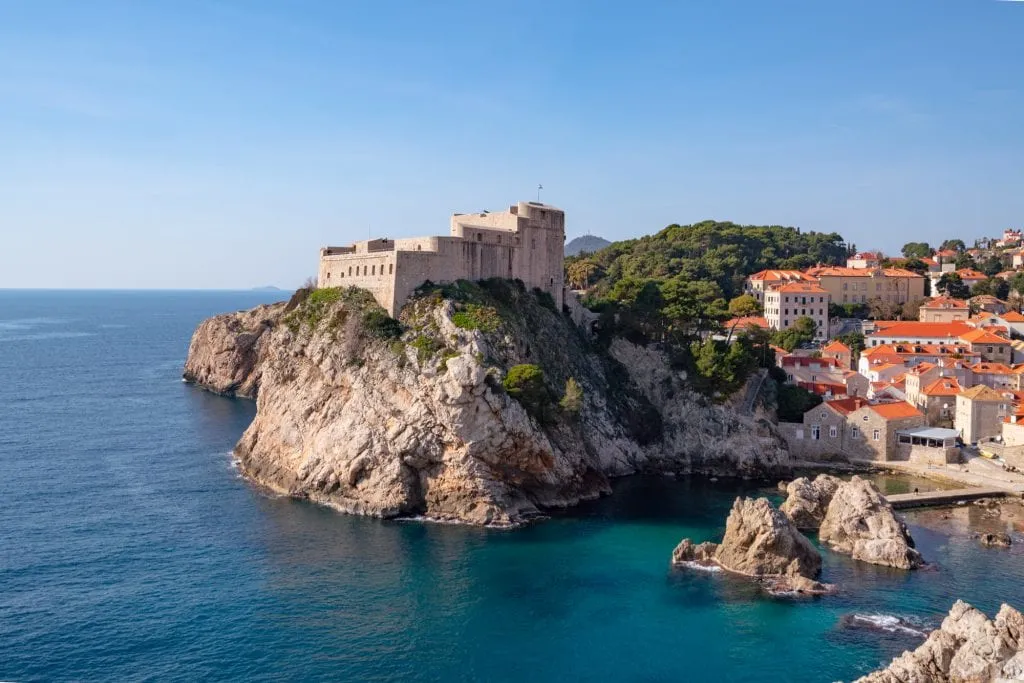
Try to be flexible with where you go.
As you start pricing train, plane, and bus tickets for your trip to Europe, you’ll likely notice dramatic shifts–for example, is it 4x the money to get to London instead of Amsterdam?
Does traveling to Prague require a long flight and 2 layovers but Rome is a quick hop away?
If you can, be flexible when you come upon these challenges: we recommend having 1-2 “must visit” destinations and filling in the rest of your trip based on a combination of logistics and desire.
After all, there’s no way you can see it all on a 2 week Europe trip anyway!
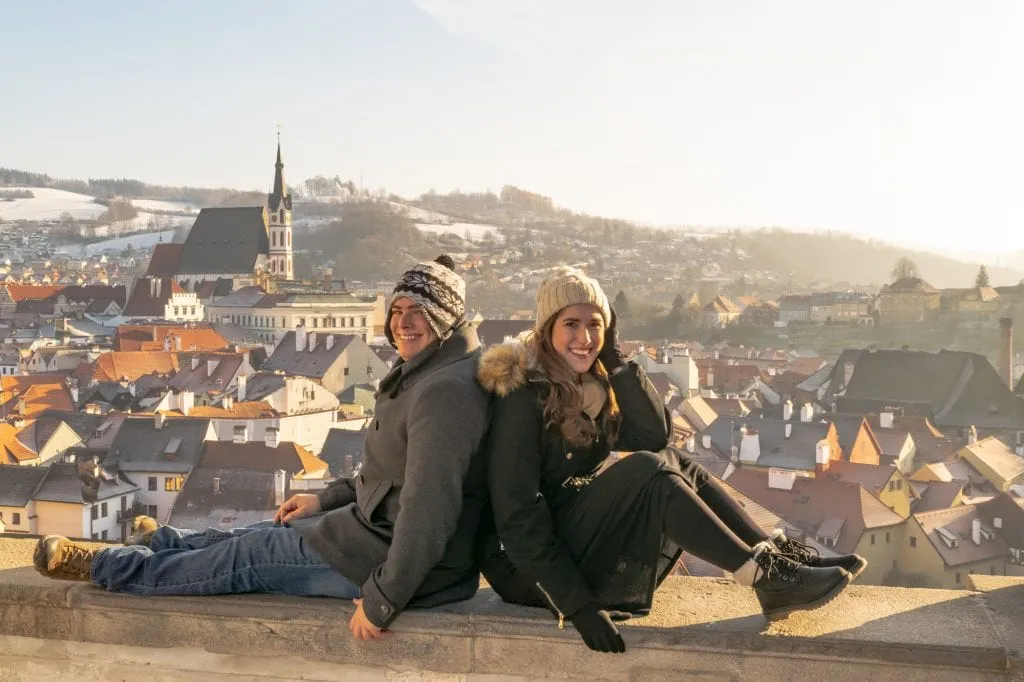
Don’t underestimate the time and energy it takes to change destinations.
“Oh, it’s only a 3-hour train ride away! That’s nothing!”
I think we’ve all said that at some point when planning a multi-country trip, but be cautious.
Three hours on the train doesn’t account for packing and unpacking, getting to and from the train station, checking out of and into a hotel… you get the picture.
If you’re looking at a high-level schedule without picking a specific date or time, you may also come to find that sure, there’s one direct 3-hour train between two cities… but it leaves at 10:00 PM or 6:00 AM, and the rest of the trains require layovers.

Or perhaps the direct train only runs 3 days a week.
Or maybe you’re looking at a plane, in which case, be sure to add at least 4 hours to your transit time: getting to and from the airport and security/check-in beforehand.
Long story short, travel days between countries are virtually always more tiring and time-consuming than they look at first glance, so don’t overcommit on those days when planning your ultimate Europe trip!
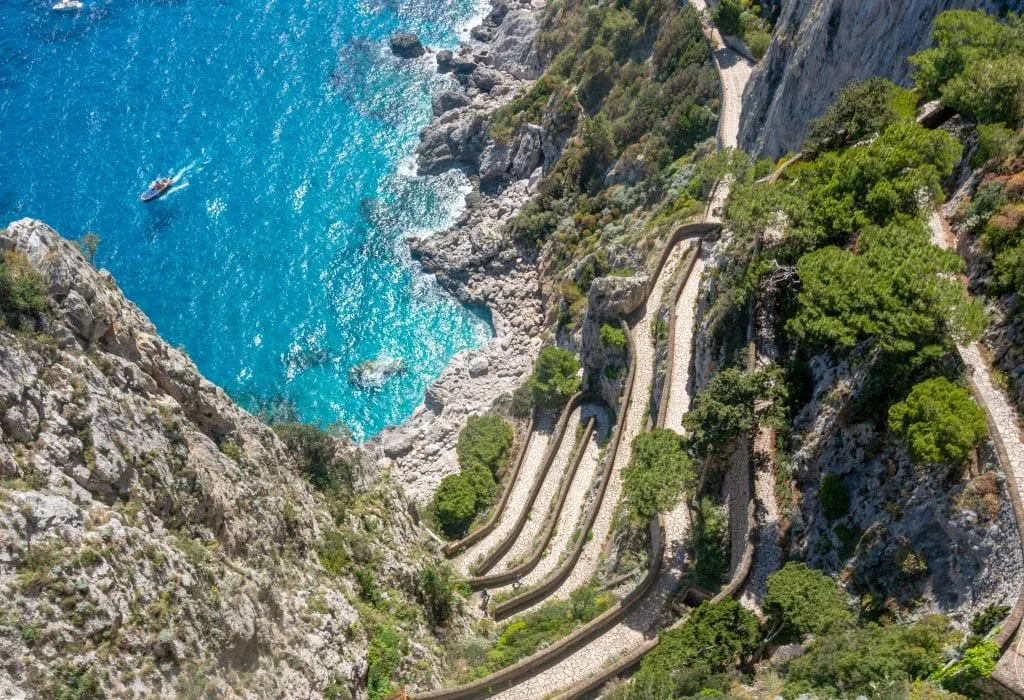
Big cities are more accessible than small towns and nature areas.
For the first trip to Europe especially, big cities are absolutely the easiest to plan your itinerary for Europe around.
They’re generally easier and cheaper to get into and out of, and there’s far more information available about them online to help plan your trips.
That’s no reason not to visit other places too, of course–but keep in mind that the more rural the area, the more logistically challenging your trip will be.
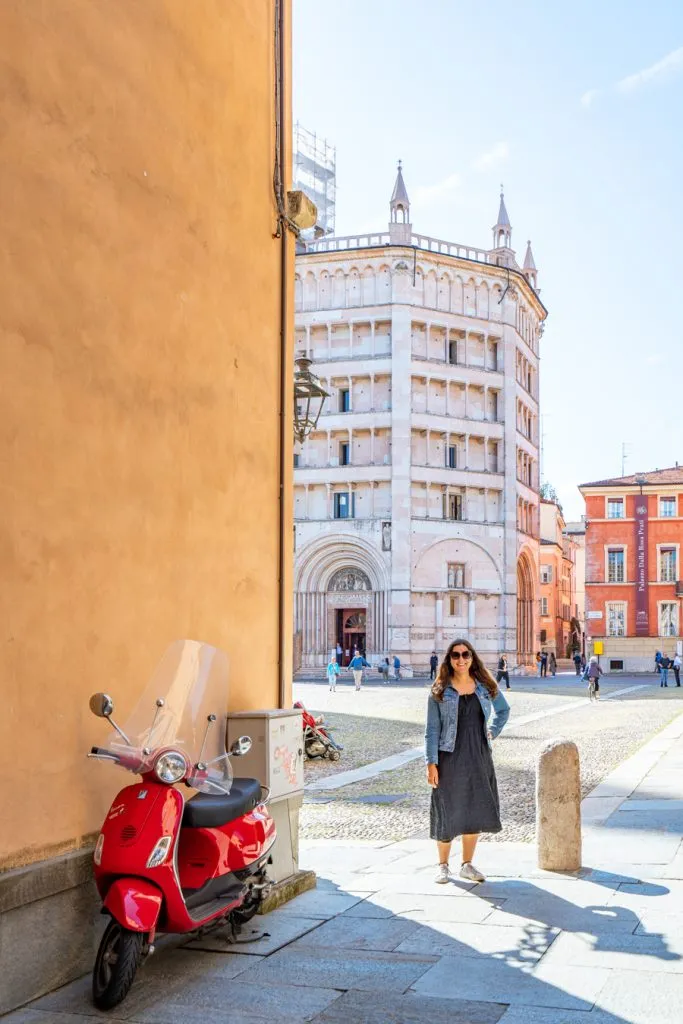
Skip-the-line tickets are incredibly useful.
I’m sure it comes as absolutely no surprise that the world’s most iconic monuments and museums tend to get a bit crowded… and that makes skip-the-line tickets invaluable, especially with only 2 weeks in Europe to squeeze in as much sightseeing as possible.
In some places (like the Arc de Triomphe ) they’re available without any additional fee, and in other places (like the Colosseum) they cost a bit extra.
Either way, though, it’s 1000% worth the price and effort to get tickets online beforehand for popular spots, especially if you’re traveling during the high season.

And, in 2024, it’s worth pointing out that given ever-changing capacity limits, it’s a better idea than ever to book in advance–and for some attractions, it’s even required!
When 2020 shook the travel industry to its core, many of the most popular museums and monuments in Europe found that life was easier with reservations and online bookings, and have continued prioritizing that system over traditional lines and ticket booths even as crowds returned to “normal”.
We use skip-the-line tickets all over the continent and book them through Get Your Guide .

Book your hotels and major transportation in advance.
Before kicking off your 2 week Europe itinerary, we recommend having all of your hotels and major transportation (so travel between destinations) booked and ready to go.
This dramatically cuts down on stress levels, makes it easier to budget and plan out your days, and generally helps your trip run more smoothly.
These days, we book virtually all of our lodging (including apartments, farm stays, houses, and more) through Booking.com .
Smaller things, like metro passes or tickets for getting around cities, can be handled once you arrive.
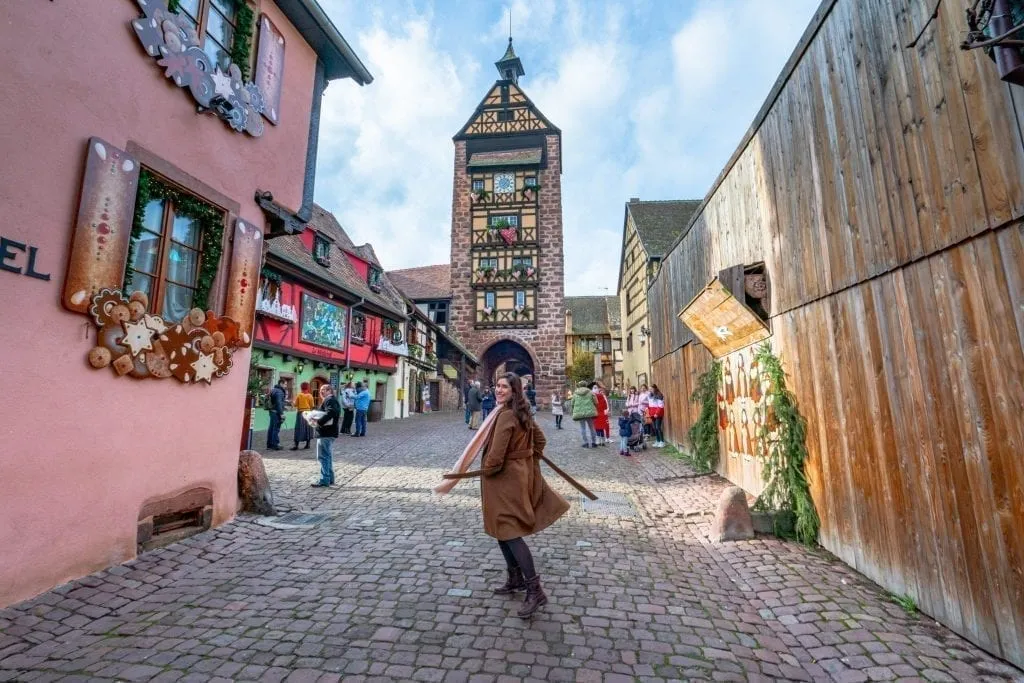
If you can, we recommend taking at least one food tour during your 2 weeks in Europe.
Food tours are one of our favorite ways to get our bearings in a new city while learning about the culture, history, and neighborhood through something we can all appreciate: a tasty meal.
We’ve taken food tours in several countries around the world, including many in Europe, and have never walked away unsatisfied!
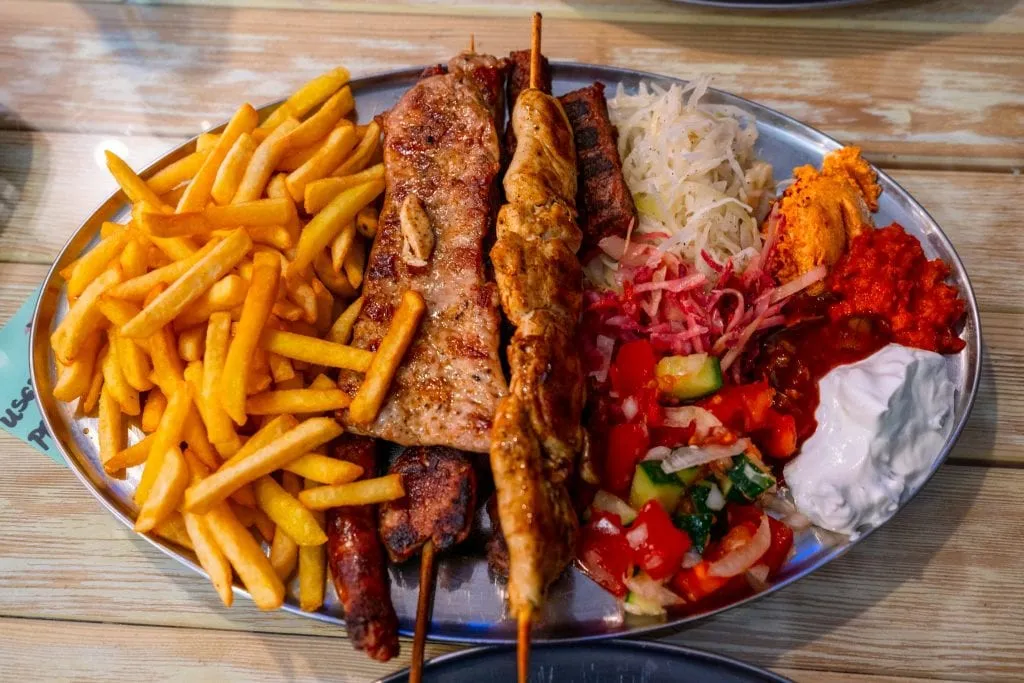
You do need to pay to use the restroom… sometimes.
Throughout Europe, public restrooms are generally available for a fee (typically either half a Euro or a Euro).
If you’d like to avoid those costs, be sure to take advantage of available restrooms in restaurants and museums as you sightsee !
Also, toilet paper is far from guaranteed in public toilets on the street.
We recommend carrying a small pack of tissues with you just in case.
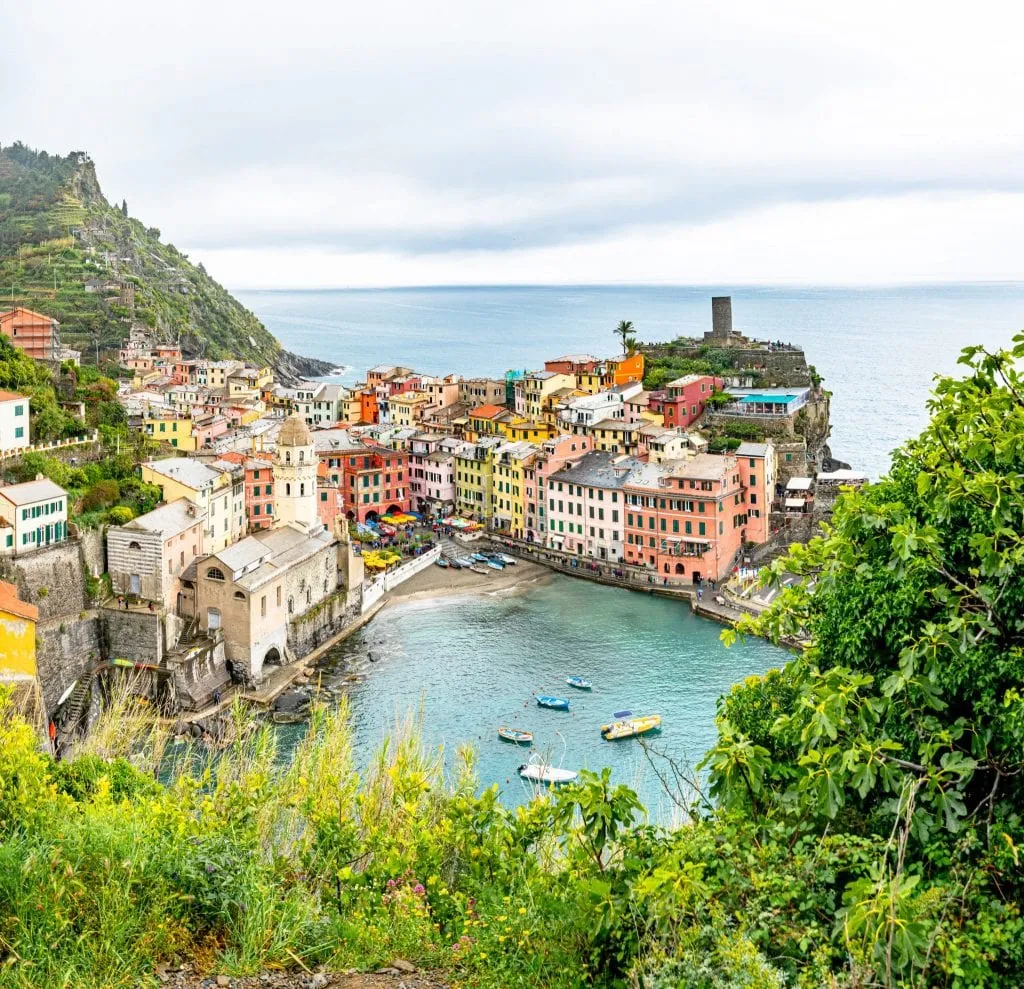
Will I need an adapter?
Most likely, yes!
Luckily, adapters are cheap to buy and easy to carry–we recommend picking these up before you go.
Keep in mind that the UK and a few other countries ( Ireland , Malta ) use a separate plug from the bulk of the continent.
If you’re heading to a place that uses UK plugs, you’ll want these adapters as well.

Is a money belt a good idea?
It depends, honestly.
We used a money belt for our first trip to Europe and for a couple after that.
Back then, we weren’t used to life in bustling big cities, and though we knew that thieves knew about them (because they definitely do), Jeremy found them comfortable enough to wear and it was an easy way to keep our belongings a bit more secure.
If you’re not used to traveling in a big city or watching for pickpockets, I don’t think it’s a terrible idea to use one– this is the one we used and we had no complaints–but I also don’t think it’s necessary, especially if you’re comfortable in large cities.
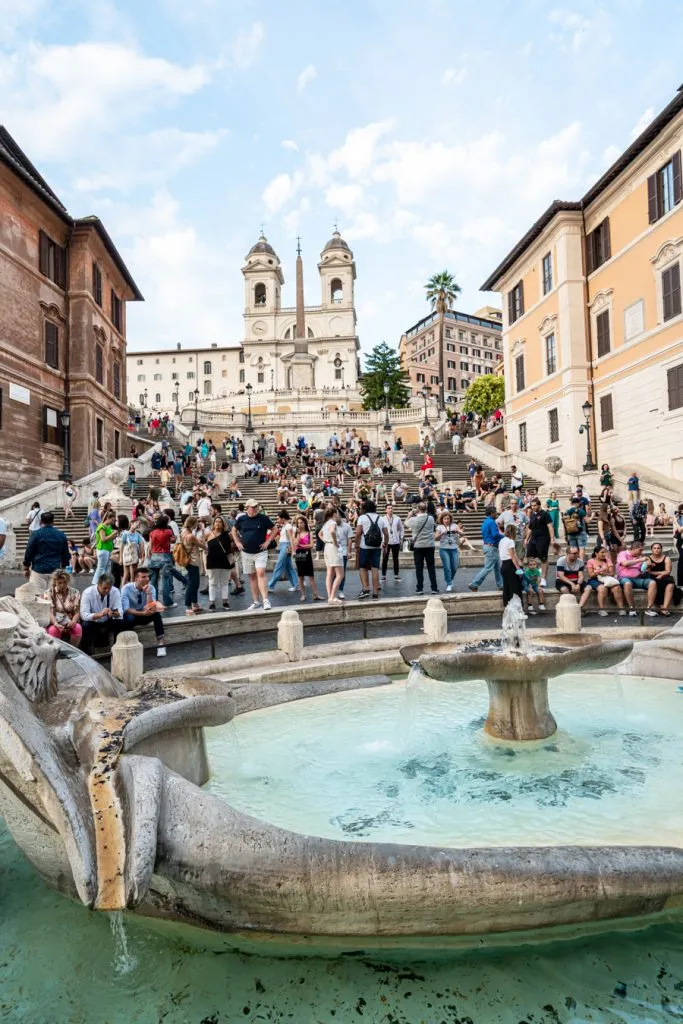
Is the water safe to drink?
Usually, yes.
We drink out of the tap just about anywhere in Europe.
In rare cases where the water is not safe to drink (usually in remote areas of southern and eastern Europe, or in very old buildings with iffy pipes), there will generally be large and obvious signs stating so.
If you’re worried about it, though, you can always ask your hotel concierge or host about it!
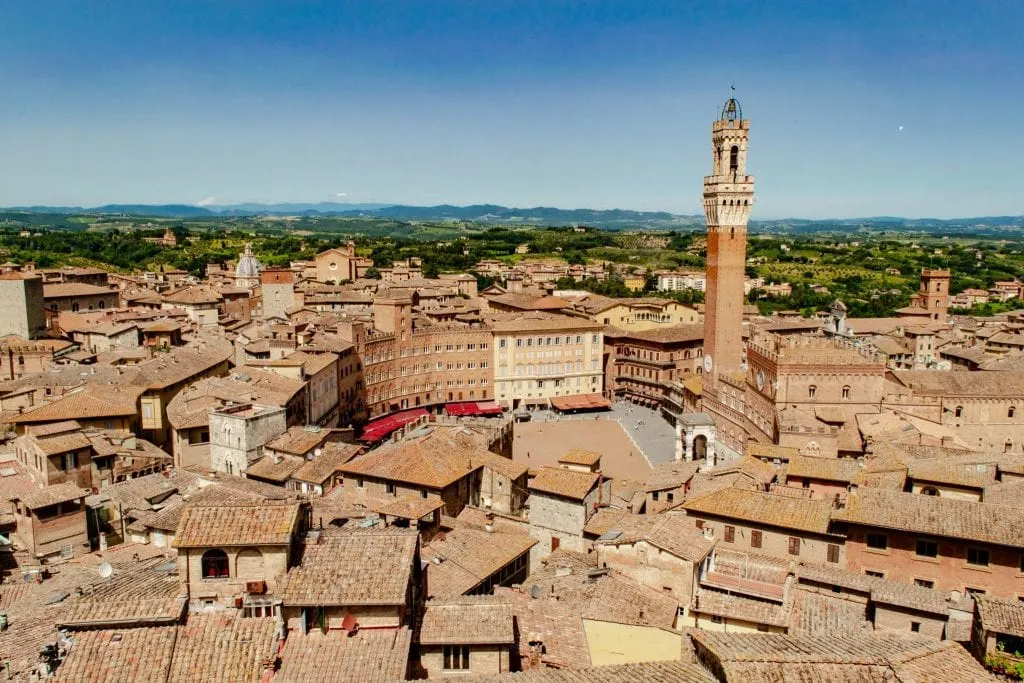
Is it worth going to Europe for 2 weeks?
This is a pretty common question, and honestly, I get it: with long and expensive flights, it’s easy to wonder if flying to Europe for “only” 2 weeks is worth it.
But yes, it absolutely is!
Two weeks in Europe is long enough that you’ll have plenty of time to get past jetlag, visit several destinations, and have a wonderful trip packed with memories.
Now whether or not it’s worth flying to Europe for just one week is a bit more controversial… but we love to travel Europe so much that we still say yes (for some people).

How extreme is the language barrier?
It varies significantly, of course, but generally, it’s not nearly as difficult as first-time visitors to Europe worry before they arrive (ourselves included).
We recommend learning basic phrases in the language of the countries you are visiting during your 2 week Europe itinerary, but this is usually more for good manners than out of necessity.
While you can absolutely find monolingual Europeans in virtually any country, especially in smaller cities and towns, the people employed in customer service roles and in the tourism industry in major cities–in other words, where most or all of your 2 weeks in Europe will likely take place–generally speak some English.

How many European countries should you visit in 2 weeks?
For most travelers, we recommend roughly 3 “base” destinations for a 2 week Europe trip, plus a couple of day trips from there to mix things up.
These can all be in one country (for example, here’s how we recommend spending 2 weeks in Italy ), or they can be in 3 separate countries!
There are plenty of exceptions to this standard layout, of course, but it’s a doable but exciting number of destinations to work with for most 14 day Europe itineraries.

When should I tip?
While this is very country and industry-dependent, generally speaking, tipping is not nearly as prominent in Europe as it is in the USA, and you’ll virtually never need to tip over 10%.
In some countries, you may also tip 5-10% at restaurants, while in others, you might round up the bill or leave nothing at all.
Frequently, a “service charge” will be automatically supplied to the bill which serves the purpose of a tip.
For tour guides, a 10% tip is common.
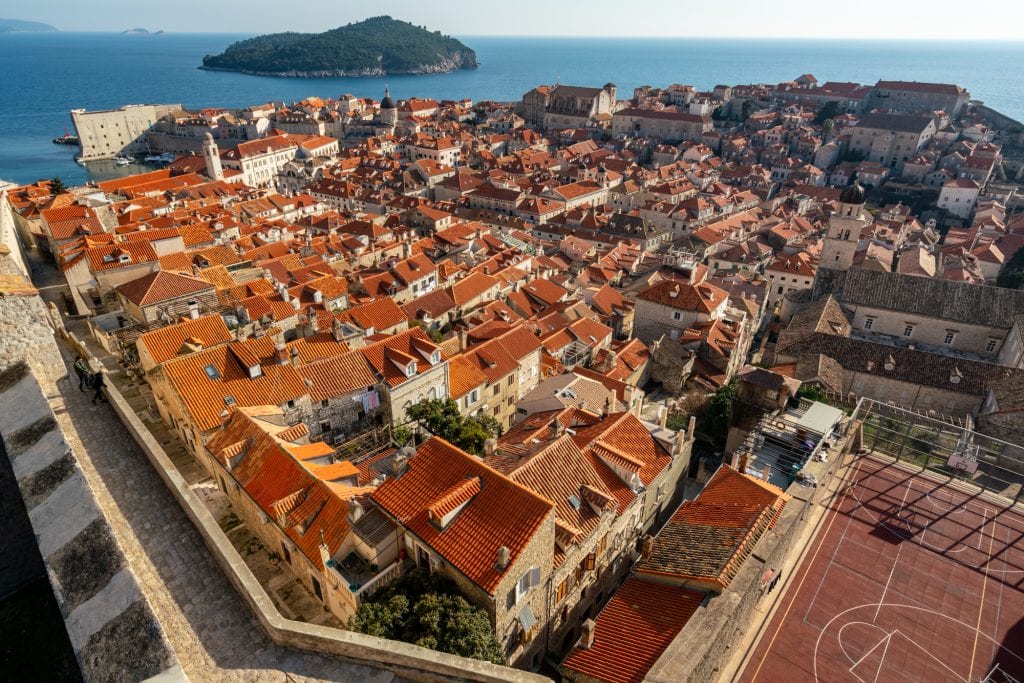
What’s the best month to visit Europe?
All of them, except August.
I kid–somewhat–but honestly, every single month in Europe has its perks!
For a concise answer, the late spring (April-May) and early fall (September-October) are considered ideal by most travelers.
August is specifically difficult because it’s not only very hot in many of Europe’s most popular destinations, but most Europeans take vacations then, so many places (especially in the mountains and on the coast) are at their priciest.
If we absolutely had to visit Europe only during one month for the rest of our lives, we’d pick September, though October is a very close second.

What’s the cheapest month to visit Europe?
It depends–trying to spot the northern lights in Tromso would be one exception to this, for example–but for standard first time Europe itineraries like the ones I outlined in this blog post, January and February are often the cheapest months to visit.
When the Christmas markets are over and the gray weather settles in, you can score great deals on vacations in Europe (and have plenty of room to stretch out at iconic monuments).
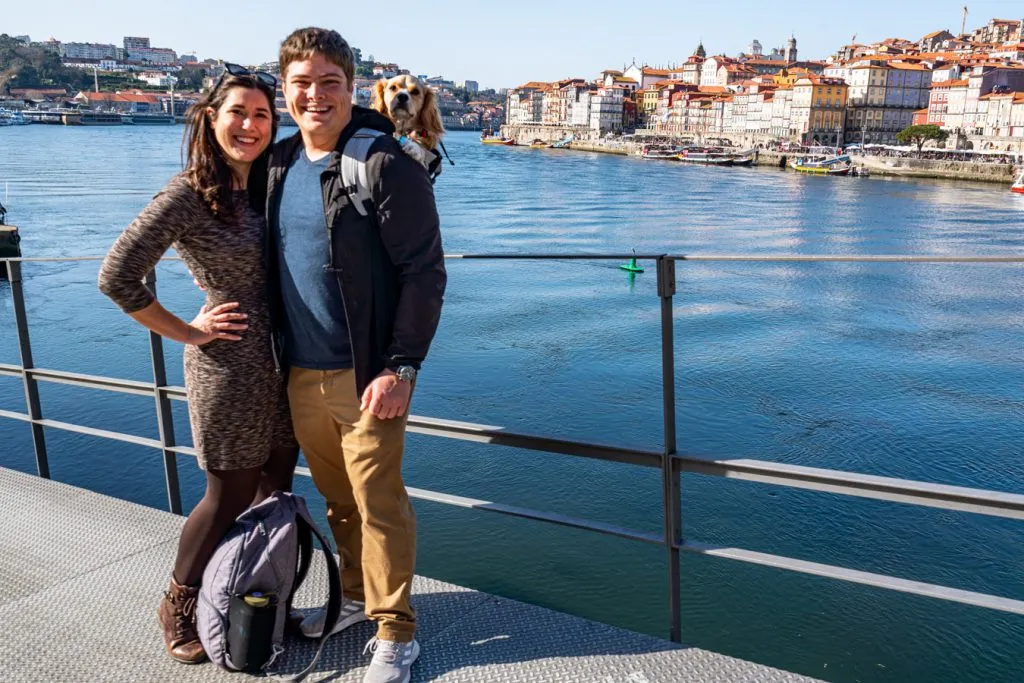
How far in advance should I book my trip?
For plane tickets, as soon as you can commit to dates!
Not only will this allow you to have more time to plan and budget with a bit of structure, but it will also spread out your costs a bit more.
During peak seasons, like coastal locations in the summer or popular destinations during the Christmas season in Europe , you’ll want to book your hotels as far in advance as you can commit to them as well.
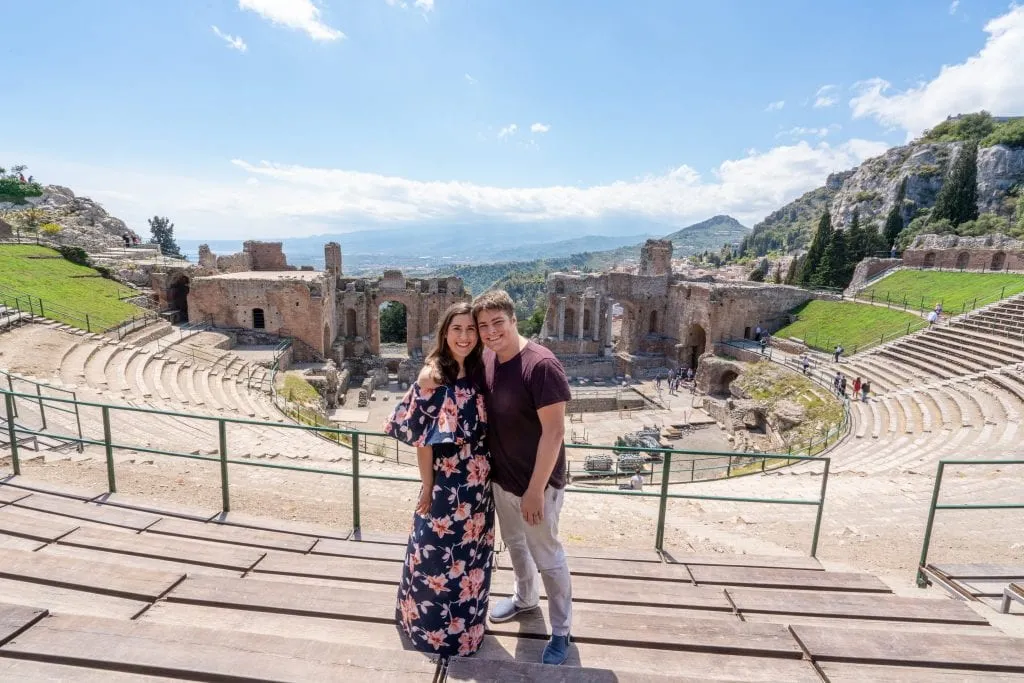
Can you do Europe for $100/day?
This depends a lot on the traveler, group size, etc, but my initial, instinctive answer is:
If you don’t include plane tickets to and from Europe, yes, absolutely, without a doubt–we’ve done it many, many, many times (as a couple).
The key is to shop for deals, visit during the off-season, not shy away from less common destinations (especially in Eastern Europe and the Balkans), and travel slowly.
The fewer destinations you visit, the cheaper a trip generally is!
If you want to stick to Western Europe, southern Spain , southern Portugal, and southern Italy can all be bargains (as compared to places like Paris and London) as well.
Here’s how we manage our travel budget.
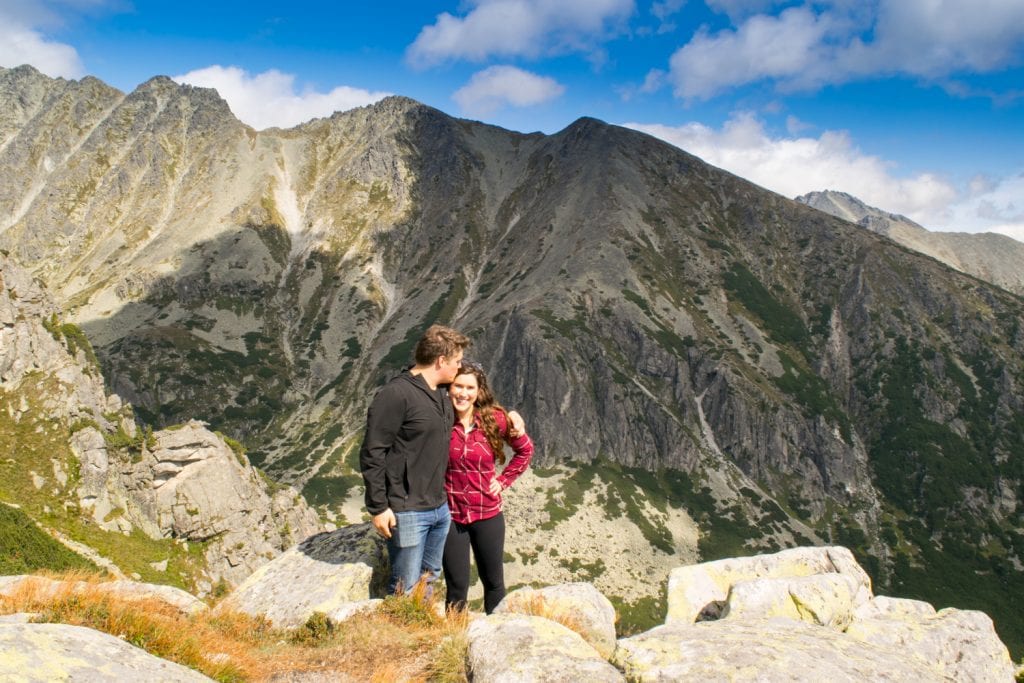
We’ve put together detailed packing lists for various seasons in Europe, so be sure to check out our complete suggestions for spring , summer , fall , and winter before you head off on your 2 weeks in Europe.
We go into far more detail on what to wear in Europe there !
To get you started, though, here are a few essentials that should definitely be at the top of your list .
Travel Insurance — We don’t ever suggest traveling without travel insurance–anything can happen, and it’s better to be safe than sorry during your 2 weeks in Europe.
Check travel insurance policy inclusions and prices for your trip here.
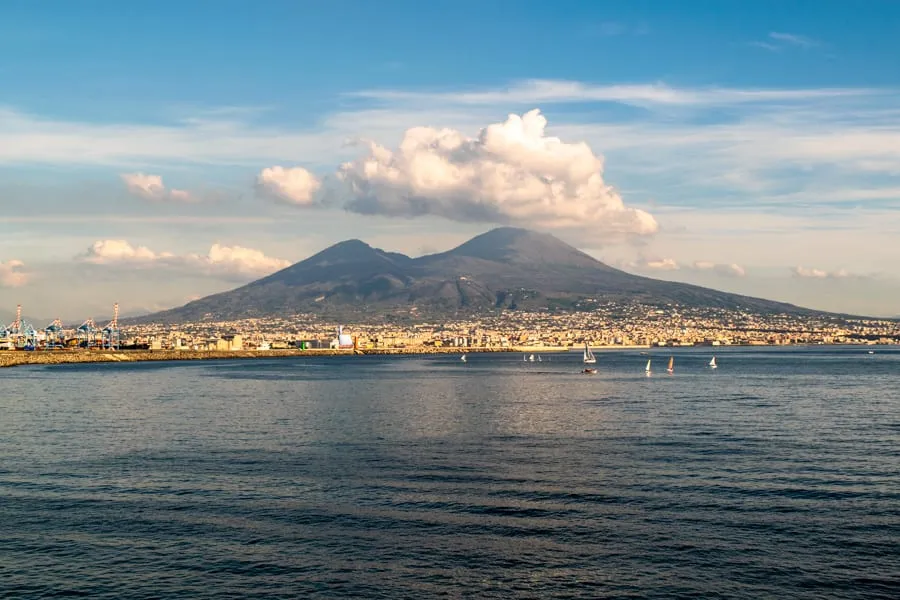
Pacsafe — We can’t recommend our Pacsafe enough!
This travel safe is affordable, sturdy, easy to pack, and will help keep your valuables safe in your hotel room (not that you should need to worry much about theft from your hotel room during your trip to Europe, but it’s better to be safe than sorry!).
Comfortable Day Bag — We currently use Pacsafe’s sleek anti-theft backpack and love it, but if you don’t want to shell out the cash for this trip, that’s totally understandable.
Just aim for something comfortable to wear, not flashy, and medium-sized–we used a Northface Jester backpack for years and loved it as well.

Travel Adapters for Europe — If you’re coming from outside of Europe, you’ll definitely need adapters for your electronics.
Be sure to check the requirements for any particular countries you visit–the United Kingdom, for example, is well-known for using different plugs than most of the continent.
Portable USB Charger — Don’t stress about your phone dying while you’re sightseeing!
Add a portable charger to your 2 weeks in Europe packing list.

Hand Sanitizer — We carry this everywhere, and never been sorry to have it floating around in our day bag.
Travel Journal — If you want to keep a travel journal during your 2 week Europe trip but can’t commit to a huge amount of writing each night, I can’t recommend the One Line a Day Journal enough.
I’ve been using it for more than 5 years now (I’m on my second volume!) and I absolutely love it.

In the process of booking your Europe trip and eager to keep planning?
We’d love to help!
You can browse all of our general Europe blog posts here , find articles about specific places through our destinations page , or check out these guides:
- Your 13-Step Guide to Traveling to Europe for the First Time
- The Perfect 2 Week Spain and Portugal Itinerary (+ Essential Tips!)
- How to Travel Europe By Train: The Ultimate Guide (+ Tips!)
- 11 Quick Tips for Finding + Using Toilets in Europe
- Prague, Vienna, Budapest, Beyond: Epic Central Europe Itinerary
[convertkit form=3127238]
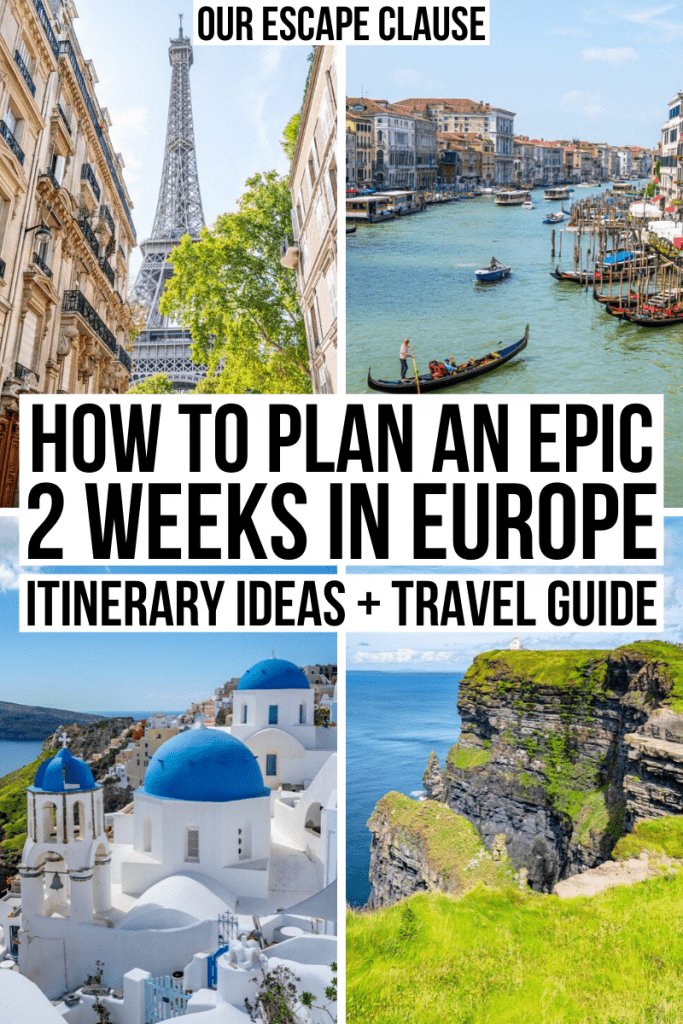
About Kate Storm

In May 2016, I left my suburban life in the USA and became a full-time traveler. Since then, I have visited 50+ countries on 5 continents and lived in Portugal, developing a special love of traveling in Europe (especially Italy) along the way. Today, along with my husband Jeremy and dog Ranger, I’m working toward my eventual goal of splitting my life between Europe and the USA.
58 thoughts on “How to Plan an Epic 2 Week Europe Trip (+ Europe Itinerary Ideas!)”
Great post! I’m actually working on my own 2 week itineraries through Europe post, but I might wait to publish until next year, when I’ve visited a few more spots. I totally agree that the key is to slow down and not switch cities every day or two. Three nights is perfect and sometimes more for the big cities. And yes, multi-city flights are so helpful so you don’t have to backtrack!
Thanks, Riana! We definitely love to slow down whenever we can. 🙂
Hi Kate! This is the BEST post related to Europe Itinerary out of the 1000 other posts that I have checked.
I am from India and I am planning for a trip in February end.
I definitely want to visit FINLAND (so that’s definitely in my list). From there, I am planning for Bupadest,Croatia OR Budapest, Prague OR Budapest/ Vienna.
Do you think this will be good for 2 weeks?
Waiting for your reply. And thanks a ton for such a beautiful detailed post.
Thank you so much, Akshay, that’s wonderful to hear!
That sounds like a wonderful itinerary. Croatia is a bit further out of the way than the other places, but it’s peaceful and beautiful during the winter and fairly simple to get to via a budget flight.
Hope you have an incredible trip to Europe!
Oh my goodness Kate, thank you so much for this post! This is exactly what I needed for my boyfriend and I to plan our trip to Europe in 2020. We want to visit Italy, Spain, France, and England but Greece and Croatia look amazing too! It’s so hard to decide.
Thank you, Jessica! So glad you found our blog helpful.
It is SO hard to decide, and honestly, it never gets any easier in my experience! All of those places are absolutely amazing, so no matter what you decide I’m sure you guys will have an incredible trip.
Italy, France, and Spain are really easy to pair together if you want to keep logistics simple, but really any combination of those would work.
What about panning around the seasons? Isn’t the Amalfi coast and Italy in general super hot during August?
It’s always nice to plan around the seasons when you can, but it depends on your availability!
Italy can be hot in August but it depends very much on where you go. It averages around 85 F / 30 C on the Amalfi Coast in August, which I have to admit isn’t enough to bother us, but it depends on where you’re coming from. It is high season there, though–very, very generally speaking, August is an expensive and crowded time to visit beaches in Europe because it’s when many Europeans tend to take their vacations and head to the coast!
Planning a trip in 2023-24 for my daughter’s graduation present. I was thinking maybe 2-3 weeks. On this trip, how much did you spend in total? I might end up being more because I usually pay for more luxurious than most, but will help with a little expectation of costs plus COLA increases obviously over the years. I figured I should start planning and saving now. lol
Hi Steven! We put this together based on years of traveling in Europe, so unfortunately I don’t have a specific figure to offer. So much varies, and can be impacted by where you go, how fast you travel (ie, how many times you change destinations), of course luxury as you mentioned, etc, etc. Generally speaking, for two people, I would say that $100/person/day is a good lower-midrange figure to calculate (excluding airfare), $200/person/day starts edging toward luxury territory, and of course, the sky is the limit.
That’s INCREDIBLY general, though. You’d be better off narrowing down which countries you plan to visit and calculating based on how long you plan to spend in each of them.
A few things to look at to give you an idea: price of hotels, price of day tours, projected cost of moving between destinations, and average cost of a meal. Those figures should give you a backbone to estimate a budget from.
What brand are the boots you are wearing in the photo “Comfortable Day Bag.” My wife loves them. Gift idea for when we go to Europe 🙂
Those are Ugg Kesey Motorcycle boots, and I love them too! Just got them out again for fall last week. 🙂
Hi kate I am planning to visit europe sometime in 2023(may/june) with my wife and son. Could you please guide me with an itinerary for 15 days Or so?? Swiss, italy, France, spain. After that we will go to a friend in England. If possible, the expenses involved as well. Thanks
Hi Abhijit! I’m not a travel agent, so that’s a bit beyond my scope. 🙂 Generally speaking, though, I’d recommend parring your itinerary down to 2 countries, or 3 at the absolute maximum. 4 countries in 15 days is a lot of travel! Luckily, all of those destinations pair well together, so you can mix and match fairly easily. Also very generally speaking, Italy and Spain will be the most affordable, and Switzerland by far the most expensive–but that depends a lot on where you go and what you do!
Hey Kate, All your pictures are amazing! What kind of cameras do you bring with you? And do you edit your photos? If so what do you use for that, they are all really bright, great pictures.
Hi Stefanie! Thank you so much! We’ve used different cameras over the years, but our main camera these days is a Sony A7 rIII. We love it, and yes, all the photos taken with it are edited in Lightroom. 🙂
Hi Kate, THANK YOU for the great article! I have booked my flights for a 2 week trip next spring, into London and out of Paris. I’ve been to both cities before, but do hope to get a few days in paris again. It’s stolen my heart.
What do you recommend in terms of getting from London to Rome, fairly quickly, and cheaply? I arrive into London mid-day and had hoped to just figure it out at the airport (Gatwick). Do you think that’s possible?
Thank you so much, Sarah! Your trip sounds fantastic.
I’d definitely plan on flying between London and Rome–it’ll be fastest and most likely cheapest, too. Check budget carriers like Ryanair, etc.
If you’re planning on flying out to Rome the same day you arrive in Gatwick, I’d absolutely recommend booking before you arrive. Be sure to double-check and make sure you’re flying out of Gatwick, too, or have time to change airports.
Hope you have an amazing time!
Oh wow I’m doing the same trip with my 3 sons. And unfortunately is the month that she said it’s the worst to go ..in August…oh well🤷🏽♀️ can’t do anything about it how but I am worried about the expense tho..
Love your information. I’m planning a trip to Italy and then we want to go to Salzburg as well in the summer of 2023. Our first time to Europe. We will be 60 in 2023 and we think we can plan this without going through a company. After reading your information, I feel comfortable. Two questions about hotels and transportation. What would you recommend for safe places for hotels in those two countries? We don’t need luxury but just comfort and clean. Would you recommend using rail between cities in Italy and it looks like you can travel from Venice to Salzburg by rail? Thoughts?
That’s great to hear, glad we could help!
Venice to Salzburg by rail is very doable in a day and a scenic journey. You’ll probably have to make a change, but that’s workable. Personally, we’d opt for it over flying in a heartbeat.
For hotels, I have several recommendations in our specific Venice and Salzburg posts (you can use the search bar to pull up everything we have on both cities). The centers of both places are quite safe, I wouldn’t worry much about that in a well-reviewed hotel.
Hope you guys have an unforgettable trip!
AWESOME Post!!!!
Please let me know if you have posted anything similar in 2020 or 2021. My wife and I are bringing our three teenagers and we will likely choose the Food & History trip. We both would like to speak with you if possible as we are planning our trip for December.
Hi guys! We don’t run tours ourselves, just provide information for independent travelers, but we’re always happy to answer a few questions about possible itineraries!
Hi Kate, THANK YOU for the amazing Pic ,for now i’m in South Africa Cape Town I’m planning a trip to Italy , France & Austria next year 2022 for 2weeks , Would you recommend using rail or Via Road way .
Thank you in advance & best Regards En vous remerciant d’avance et cordialement
Sounds like a fabulous trip!
Rail vs car depends entirely on where you’re going. If you’re sticking to cities, I’d recommend going by train. If you want to enjoy the countryside, a car could be helpful.
You can also mix-and-match, and rent a car for only part of your trip if you’re going to be in the countryside only part of the time.
Thank you for this awesome post, Kate! My husband and I are wanting to take our first international trip to Central Europe early spring 2022 and have reviewed your Central Europe post. What type of difficulties have you faced with international travel during COVID-19? Any issues with a country on your itinerary going into lock-down or no longer allowing tourists from the US?
We haven’t personally run into any issues with lockdowns interrupting our plans but of course, it’s always possible and things are changing constantly.
Most, if not all, countries in Europe are accepting vaccinated and/or tested US visitors now and haven’t shut their borders to US citizens again since the initial reopening. All of the countries included on our Central Europe itinerary are currently among them.
In addition to entry, some countries are requiring proof of vaccination in order to do certain things like eat in restaurants or check into hotels. Portugal, where we are now, is among them. It’s a very simple process as long as you have the paperwork in order!
Generally, if you plan to visit Europe from the US in 2022, we recommend arriving with proof of vaccination, a negative COVID test (check regularly for specifications as your flight gets closer), flexibility, and the expectation that you’ll wear a mask indoors and potentially in crowded outdoor areas.
I am not a public health expert, of course, and European countries all set their own restrictions, but in the early stages of planning, that’s what I’d keep in mind!
The reaction that we’ve seen from readers who visited in the second half of 2022 has generally been that it’s easier than they expected, but as we’ve all learned way too much in the last 2 years, none of us can predict the future!
Thanks so much, Kate! It definitely seems like flexibility is key as well as continuously monitoring each country’s individual rules for a multi-country trip. I think right now Hungary isn’t accepting tourists but fingers crossed that will change soon so we can replicate your trip. 🙂 Cheers to more adventures for you in 2022!
Hi Kate, my family is in the beginning phase of planning our first international trip and have decided on Europe! I really liked your recommendation of arriving and departing from different airports and I think departing from London would make sense (we’ll probably want to spend the most time there). All we’ve decided is to vacation for somewhere between 2-3 weeks, and we want to see London and Ireland (oh and I want to stay at least one night in a castle hotel!). Would you have any recommendations on destinations or experiences to share? Thanks!
How exciting–nothing like your first trip abroad. 🙂
We actually still haven’t been to London, which is a huge shame! Fingers crossed that 2022 is the year.
Ireland, on the other hand, is one of our absolute favorites! If you search “Ireland” on the top right corner of the blog (or on the pop out menu on mobile), all of our blog posts will come up, but this is a great one to start with: https://www.ourescapeclause.com/10-day-ireland-itinerary-ireland-road-trip/
We spent a night in this castle (slash manor house) and had a fantastic time: https://www.ourescapeclause.com/belleek-castle-county-mayo-ireland/
Ireland is one of our favorite places for road trips on the planet. You’ll love it!
Great post, thanks!
Need your advice here 🙂 We will be landing in London, staying there 3 days, then train to Paris (staying in Paris for 3 days). We fly back home from Lisbon and have 3 options: night train to Nice (spend some time there and then a few days in Lisbon), fly to Napoli (spend some time there and then fly to Lisbon) or fly to Lisbon and discover a bit more of Portugal… What would you recommend?
Oh and we are travelling with two teens who have never been to Europe… I’m trying to pack as much stuff, but wonder what would be too much :/
That’s a lot of hard choices! Each and every one of those destinations is a delight (and we’re living in Lisbon right now).
I’d opt for Nice if you’re looking for coastal views, picturesque villages, and something logistically simple. Nice is a delightful city and the day trips to nearby villages like Eze as well as Monaco are phenomenal. It is the most formal and pricey of the 3 cities and will have a resort feel near the coast in the summer.
Naples is a much less manicured city, it’s a love-it-or-hate-it place (we love it). I’d argue that it has the best food of the 3 options, but those are fighting words and many would disagree. The day trips are equally stunning but very different. If you or your family has an interest in ancient ruins, Pompeii and Herculaneum are unmatched. Visiting the Amalfi Coast or nearby islands is also doable, but it’s a trek if you’re staying in the city center. Keep in mind that there’s no train service to the Amalfi Coast proper, you will need a bus, car, or ferry to get beyond Sorrento.
Lisbon is delightful but honestly, our favorite parts of Portugal lie outside the city. Porto, in the north, has a much more regal feel while Lisbon is fairly spread out. The Duoro Valley (also in the north) is magnificent for port tastings and views, Sintra’s palaces located just outside of Lisbon are must-sees, and if you want to head to the south, the Algarve is incredibly striking.
Logistically speaking, I’d make sure you have at least 2-3 days in Portugal at the end of your trip before flying out, regardless. With 3 full days, you can spend 2 in Lisbon and take one day trip (probably to Sintra but the coastal town of Cascais is also easy and lovely).
If you have time to do that and add another stop for 3 full days, I would check detailed flight and train schedules and let that guide you–the logistics alone may make the choice for you.
That got a bit long, but I hope it helps! 🙂
Thanks a lot for the precious information!
Hi Kate! I know you said you are not a travel agent but are open to a few itinerary questions! We have recently done a European Cruise which hit almost all of Italy! We are wanting to go back independently. I am highly interested in Ireland, but would also like to see Paris. My husband is interested in Netherlands, Germany, Switzerland. With a 14 day trip wanted, what areas do you think we should do (based on best places to see, with allotted time?)
& Austria! 🙂
That is a lot of very different places, but you’ll definitely be able to pull together a great trip! I’d recommend narrowing it down to around 3 destinations, 4 if you’re comfortable moving quite fast and two of them are close together.
Ireland is definitely the odd one out geographically, but if you use two one-way tickets instead of flying in and out of the same airport, it can work (it’s what we did on our first multi-country Europe trip many years ago).
Since you’ll likely have 1-2 flights in this itinerary regardless, which destinations you pick can come down to a combination of your absolute favorites and what makes logistical sense. Paris is a very popular place to fly in and out of, so it’ll likely be easy to work in.
I’m not sure which parts of Germany your husband is interested in, but parts of western Germany have simple train access to The Netherlands and/or France.
As far as what places I’d personally visit, Ireland and Paris are two of my favorite places on the planet, so I’m biased! Switzerland’s mountain landscapes are truly beyond belief, so if you’re looking for nature (and aren’t concerned about the budget), it’s a winner.
Germany is also gorgeous, both its nature and many of its cities, though it’s quite big and varied–with a big trip like this, you’ll want to choose one small corner of it (Bavaria is a popular first stop, but you can also look at places along the Rhine, which makes more sense if you’re hoping to visit Paris or The Netherlands by train before or after).
The only part of The Netherlands we’ve had a chance to visit so far is Amsterdam, which is visually stunning but will be extremely crowded–probably more so than anywhere else you’ve listed, as there’s less room to spread out there than in, say, Paris.
When it comes to your itinerary, I’d recommend that each of you pick one place that is your absolute first choice, plan on a trip to those, and then fill in the 3rd and possible 4th destination based on what makes logistical sense as far as what planes/trains/buses are available to the spots on your shortlist.
Also, if you do need to book high-speed train tickets, book them ASAP, as prices increase as your trip gets closer.
What a wonderful blog, just when I feel like I’ve read them all I find another really helpful article. Heading to Europe for 1 month in May. Keen on Spain, definitely Italy, and probably 2 days in London and Paris respectively (arrival and departure). Feel like we have space for one more place and can’t figure out which is the better option (Portugal, Croatia or Greece) for potentially 5 days? Any recommendations?
Thank you for sharing all your wonderful insights.
That’s tough, because all 3 are fantastic but very different!
I’d probably recommend (if I had to choose), Greece for beaches/swimming and small towns, Portugal for cities, and Croatia for a combination of all. But we adore each and every one of them, so hard to go wrong!
Portugal fits nicely into your Spain section geographically, so there is that to consider.
Hi, Kate! Super love your blog. I just booked a trip to Europe for August, was thinking of going to France, Spain, and Italy in 2 weeks. Or should I cut it down to 2 countries? Hope to hear from you!
Less relevant than the countries are the destinations within them–I wouldn’t go more than 4 places in 2 weeks, max.
So if you’re hitting up Paris, Barcelona, and Rome, for example, your plan is fine. If you want to go to 2-3 places within each country, it’s time to cut it down. 🙂
HI! Thanks for the fantastic blog! My husband and I are planning our first trip to Europe from Canada and are feeling quite overwhelmed by all the choices! His family is from Holland, so we are spending one week touring with them for the first week of May, and then will stay an additional 2 weeks after that. What would you recommend? We are not keen on France but everything else looks so great, and it was good to read that you don’t recommend trying to fit everything else in, which is what we might otherwise be trying to do. Any suggestions for the 2 weeks after Holland?
Hi Michele,
That’s so exciting! You guys are going to have an amazing time.
Without knowing your tastes or the season you’re traveling, the sky is truly the limit when planning your itinerary! Anywhere that sounds exciting to you is going to be worth it. With 2 weeks, I’d opt for 1-2 countries and no more than 4 base destinations (3 would be even better).
I started trying to make a list of some of our favorite countries in Europe for you, but just backspaced the sentence because I was ending up just listing every country, LOL. But Italy is one of our special favorites that we would recommend to just about anyone!
We will be in Holland for the first week of May so we could do the other two weeks either before or after that (or split one before and one after). The suggestion to cut down to less rather than more is helpful – it’s our first time to Europe and everything looks like something we should see! We are 50 and really like most things – some scenery, some castles, etc. Do you think it would be do-able to do Germany and Italy on top of Holland? Any specifics on what you love in Italy? I am really NOT a crowd person, so we’re really going to try and avoid huge crowds or I’ll lose my mind 😉
A week in Germany followed by a week in Italy is definitely doable!
Personally I’d opt for either southwest Germany (Black Forest, Heidelberg, Burg Eltz) or Bavaria.
We love virtually all of Italy, but if you want something somewhat more offbeat that’s in the top half of the country (for geography reasons), I’d recommend looking into Emilia-Romagna.
It’s the region east of Tuscany, and has similar appeal with far fewer tourists. It’s also gorgeous and a culinary dream–Emilia-Romagna is the origin of many iconic foods like parmigiano-reggiano and traditional balsamic vinegar.
A few destinations in the region to poke into as you research: Bologna, Parma, Ravenna, Ferrara, Modena. The micronationa of San Marino is also accessible from there!
Kate-what a remarkably comprehensive, detailed and resourceful blog! I love the considerations offered from different perspectives. My family of 4 (including 2 kids ages 10 and 6) will be traveling to Paris for the second half of August for 2 weeks to visit family. We have already been to Paris a few times so this time around, I would like us to explore more of Europe for some of the time, ideally via trains. I am thinking of staying in Air B&B’s as we have been enjoying that accommodation when we travel locally within the US but would love your perspective on this (vs hotels) considering the cultural and language differences in certain destinations as well as any recommendations for either you may have. Based on some research, some destinations I came cross purely based on travel distance via train from Paris are Switzerland (3 hrs), Barcelona (6.5 hours! would probably have to be an overnight train for the kids), London (2 hrs, have family we can see), and Greece (2 hours), Belgium (1.5 hrs, also some family we can see). My goal is to show my kids/family different cultures, ways of living and experience foods, interesting architecture, beautiful cafe’s etc. Also curios if any of these can be “day trips”. I do not have specific destinations yet to see at these locations and would love your input. From your article, it sounds like limiting to 2 destinations maybe best (outside of Paris) and your thoughts may help me narrow down where to focus. Thanks so much and look forward to reading your insights on this.
So glad you found it helpful, Tez! Sounds like you guys have an amazing trip planned.
I’m sure you already know this, but August is the height of peak season for European travelers visiting the coast and mountains, so some destinations will be quite crowded and expensive (book your hotels and train tickets ASAP, especially in a group of four).
I’m assuming Greece is a typo, so I’ll pass over that one–pretty sure it’s much further than 2 hours even by plane. 🙂
Luckily Paris is a huge train hub for getting across Europe, so you have plenty of options! Most of them will take longer than it looks on the map once you navigate connections, train times, etc. We highly recommend using Omio to search exact routes and dates, and keep in mind tickets will increase in price as you get closer. With kids, you’ll probably want to search by the fastest available routes.
London, Belgium, and Switzerland all jump out at me from your list–simple to access and incredible. The Jungfrau region in Switzerland is pure paradise, though a bit further away.
You may also want to look into Amsterdam, it’s only 3.5 hours from Paris by train.
With the right schedule, you can get as far as Venice in a day from Paris (we’ve done this), so Italy is an option for you as well, as is Germany.
Essentially, the more you stick to major cities, the easier it will be to navigate solely by train. Smaller towns and cities are often connected, but you’ll virtually always need to pass back through the main city of a region to make your way back to Paris.
You may want to take a look at this post as well, we talk a lot more about train travel here: https://www.ourescapeclause.com/travel-europe-by-train/
Hi Kate Love your blog, lots of useful information. My husband and I are planning a 10 day trip to Europe end of April to early May. At the moment we are looking at flying from the US RT to Paris. We’re thinking of possibly going to Amsterdam and Belgium as well. this will be our second trip to Paris. We are open to other suggestions. Do you have any other recommendations?
Happy to be able to help, Daisy!
Paris + Amsterdam + Belgium is an excellent itinerary and doable in 10 days. It’s actually a route we recommend ourselves. We have posts on all those places, but here are our suggestions on spending 3 days in Belgium to give you an idea of what you can cover in a short time frame: https://www.ourescapeclause.com/3-days-in-belgium-itinerary/
Paris is extremely well-connected by rail (you can be in Venice in 9 hours or Munich in under 6, for example), so as far as ideas for other destinations go, the sky is the limit!
If you choose to extend your original itinerary, a few additional places that you might consider along that route are Strasbourg/Alsace, Heidelberg, and Cologne.
Thank you for your blog.. We are travelling to Europe for 14 days the end of May. Flying Calgary to Dublin, doing a couple days at the Isle of Man races then hopefully, London, Paris, Rome. Your blog shares what to pack for clothing in Summer, Fall and Winter, what would you recommend for spring? We are trying to decide if we take the trains or flights from London, Paris and Rome. We aren’t planning any beach time. Also, what do you recommend for luggage? I’m leaning towards a rolly carryon but have every size hard shell case and multiple back country camping packs.
So happy you find it helpful!
Funny you mention spring packing ideas–I’m actually working on a post for that right now. It will hopefully be up next week. But off the top of my head, you’ll definitely want a travel umbrella and to pack in layers. The end of May is a beautiful time to be in much of Europe but the weather could be unpredictable–you may want sundresses on some days and light jackets on some evenings!
As far as luggage, either is completely fine. There are advantages to both backpacks and suitcases, but as long as you’re comfortable carrying your bag up and down staircases, carrying (or rolling) it down the street for 10+ minutes, and loading it into and out of trains and/or cars, you’re good.
As far as trains vs planes–London to Paris can definitely be a train, but do a time and cost-benefit analysis between that and a plane (depending on the dates, your travel style, etc, you may choose either). Paris to Rome is better done as a flight!
Thank you very much for sharing your wisdom. We are really excited.
Hi Kate, Thank you so very much. You have provided an AMAZING amount of helpful information. Can you pretty please help me with the best location to travel to 1st, 2nd, 3rd & 4th and the best way to get to the locations? (We will NOT be doing any driving).I’m a 55 years old woman. I live in USA. I’m planning the 1st International trip for me and my husband for either the 1st or 2nd week of September 2023. My biggest challenge is knowing where to start and end the trip, based on logistically traveling to the different destinations, as well as, the best way to get to each destination.Here are the the things I have planned. I know you mentioned you’ve never been to London but i’m hoping you can assist based on me providing the area I want to be in. *LONDON-7 NIGHTS I’m a theatre/adrenaline junkie person so Theatreland West End of London near (North of the River Thames. 3-Plays (evening events) 2-Hour Sherlock Holmes museum (near West End) 1-Hour Ghost Bus tour (nearest tube stations are Embankment and Charing Cross) 4-Hours-day walking tasting tour (near London Bridge Station) 1-day Harry Potter Studio Tour (Leavesden London) 2 -Nights Theme park “Alton Towers” located Alton, Staffordshire near Manchester and Birmingham. (stay onsite at the parks resort)*PARIS-3 NIGHTS Moulin Rouge (BD de Clichy area) L’ATELIER DES LUMINERES -DIGITAL ART MUSEUM I would like to visit just one of the haunted castles in Paris (depending on recommendation) Château de Puymartin Château de Brissac Château Lagorce Château de Chambord Château de Versailles* GERMANY 3 NIGHTS-Phantasialand Theme park (located Bruhl Germany) Stay onsite at the parks resortThank you for any advice or suggestions you can provide.
Hi Melvina,
I definitely can’t speak to getting around London in detail, though a combination of the tube and buses will likely be doable! You can add cabs as needed as well.
In Paris, the metro is so dense you should have no issue getting around. Assuming you are planning to do the usual Paris sights (Eiffel Tower, Louvre, etc), our Paris itinerary might be able to help you out (and has hotel recommendations): https://www.ourescapeclause.com/3-days-in-paris-itinerary/
For the chateaus, Versailles is by far the closest to Paris and you can get there by RER train. Château de Chambord in the Loire Valley is doable via an organized day trip like this: https://www.getyourguide.com/paris-l16/loire-valley-castles-wines-day-trip-from-paris-t70389/?partner_id=1OI4D21&utm_medium=online_publisher&placement=content-middle
The others are way too far from Paris for day trips, so I’d focus on Versailles and/or Chambord this time.
Hope you have a wonderful time! 🙂
Thank you so very much.
Hi, thank you for this comprehensive post! We are planning a trip this summer and will be going to Paris, Rome, Florence and Amsterdam. My question is about changing money. We were in Iceland last year and used Apple Pay or credit card everywhere, never needed cash and didn’t get any. Is that possible in either France, Italy or Netherlands? Should I plan on getting cash for taxis, tips, etc?
Happy to help!
I’d definitely recommend having some cash with you as you travel, especially for small purchases like coffee, gelato, etc. Most hotels in Italy will require the city’s tourist tax in cash, too. Some taxis and tips will be best done in cash as well, and occasionally very small, offbeat tourist attractions.
While cash-only restaurants definitely aren’t the norm in any of those cities, they’re not unheard of, either.
Overall, I’d say you’re most likely to avoid cash entirely in Amsterdam and most likely to use some of it in Rome and Florence, but that’s not a hard and fast rule by any means (I used some cash on my trip to the Netherlands last spring, for example).
We find that the easiest way to get cash, by far, is to withdraw Euros from any bank’s ATM once you’re already in Europe (avoid Euronet–use an ATM branded by an actual bank). Luckily, since all the places you’re visiting use the Euro, you won’t need to worry about changing currency beyond that. 🙂
Hi Kate, thank you for this great, and helpful post! We’re are planning a trip to Europe for the first time in September for next year in 2024. My plan is to visit Spain, Italy and I’m still undecided on the third country to visit. What country would you suggest or advised that we can visit that has beautiful scenery, mountains, lakes, etc. We like the city, but we also want something where we can hike out in nature like Iceland maybe, Switzerland. Any tips on that? Also, is it cheaper to stay in hotels, Airbnb’s? Thank you!
Spain and Italy–two of our favorites! You guys are going to have a great time. 🙂
The hardest part about picking a third country with your criteria will be narrowing it down between many excellent choices–you really can’t go wrong.
Switzerland is absolutely spectacular, if the Alps are what you’re looking for, it’s iconic and hard to beat in every category except the price tag.
Germany and Austria also offer beautiful mountains and lakes and are a more budget-friendly than Switzerland.
The French Alps are also wonderful–towns like Chamonix and Annecy offer plenty of mountains, lakes, etc.
And, for a a wild card, you don’t necessarily need a third country at all: the Dolomites in Italy have everything you’re looking for.
Any of those that appeal to you and fit your budget will be a great addition to your trip. They’re well-connected to Italy and each other by train, the travel times aren’t too far, and they’re all phenomenal places to visit.
One small thing to keep in mind if you’re planning to travel by train a bunch is that Spain isn’t very well connected to the rest of the places you’re considering by rail–you may want to consider flying in and out of there.
Iceland is definitely far out of the way, but assuming you’re traveling to and from North America, look into the Icelandair stopover program if you want to add it on! I will say that while it does offer mountains, lakes, and beautiful scenery, it’s a very different vibe than Switzerland or any of the surrounding Alpine countries, so take a close look at the specific destinations and see if it’s what you’re looking for. It’s a stunning place, just very different than the others. Here’s one of our Iceland posts if you want to get a feel for it: https://www.ourescapeclause.com/10-day-iceland-ring-road-itinerary/
Leave a Comment Cancel reply

15 days Europe Tour Itinerary: A must have for every Traveler
Hello fellow Travellers! Are you ready for the trip of a lifetime across Europe? Gear up for a 15 days Europe tour itinerary of iconic monuments, delicious cuisine and some hidden gems that you won’t want to miss. Let your amazing itinerary begin!
Table of Contents
Imagine you, me and a bag full of dreams are about to go on a 15 days adventure across the exciting continent of Europe. Grab your sense of wonder, your taste buds (trust us, you’ll need them) and your camera, because this isn’t just a trip; This is a once in a lifetime adventure!
But here’s a catch: We’re just not going to scratch the surface. We’ll uncover hidden gems, teach you some handy phrases and equip you with the ultimate list of travel essentials.
So put your everyday routine aside because this is your ticket to adventure! Get ready to plunge into the fascinating world of European exploration.🌍🚀✨
Day 1: Bonjour, Paris! 🥖🗼
- Your adventure begins in the city of love. After check-in, take an evening stroll along the beautiful Seine River.
- Dinner in a delightful French café includes flaky croissants and escargot (yes, snails). Don’t forget to stop at Shakespeare & Company Bookstore.
Day 2: Parisian Dreamland! 🗺️🎨
- Day two is a frenzy of the wonders of Paris! Climb the Eiffel Tower for breathtaking views and images. At the Louvre Museum , immerse yourself in art and culture.
- Explore the pretty streets of Montmartre, ending at the awe-inspiring Sacré-Coeur Basilica. As the sun sets, be mesmerized by the glitz and glamour of the Moulin Rouge.
- Enjoy coq au vin and other French specialties. Also, discover the hidden courtyards in Le Marais.
Day 3: A Parisian Paradise! 🥐🛶
- Start your day with a quintessential traditional Parisian breakfast of buttery croissants and pain au chocolat at a local café.
- Explore the old streets and alleys of the Marais neighbourhood before returning to the Shakespeare & Company Bookstore. In the evening, take a romantic sailing down the Seine River.
- For our cat-loving friends, don’t miss De Pozenboot, a cat sanctuary set on a beautiful houseboat.
Day 4: Dutch Delights in Amsterdam! 🌷🚲
Tour Amsterdam, the city of canals and bicycles!
- Explore the gorgeous Jordan district, home to charming cafes and unique businesses. Visit the historically important site Anne Frank House.
- End the day with a meal overlooking the canals. If you’re interested in art, NDSM Wharf is a hidden gem that’s artsy, industrial, and oh-so-cool.
Day 5: Art and Culture Galore in Amsterdam! 🎨🚲
- Explore the art and culture of Amsterdam by visiting the Van Gogh Museum, which houses the artist’s masterpieces.
- Rent bicycles and discover the green oasis of Vondelpark. Don’t miss trying Dutch delights like haring (herring) and poffertjes (mini pancakes).
- And remember, there’s always time for cat cuddles at De Poezenboot!
Day 6: Artistic Amsterdam Adventures! 🎨🚲
- Marvel at Dutch artistry with a morning visit to the renowned Rijksmuseum. Dive into the quirky and creative atmosphere of NDSM Wharf.
- For a unique experience, check out De Poezenboot, a cat sanctuary on a houseboat.
- Satisfy your sweet tooth with Dutch apple pie and jenever (Dutch gin). Before leaving, don’t miss the thrilling A’DAM Lookout, featuring a swing with stunning panoramic views of the city.
Day 7: Buongiorno, Rome! 🍕🏛️
- Buongiorno, Italia! You’ve arrived in Rome, the Eternal City.
- Explore the Colosseum and Roman Forum, where history comes to life. Don’t forget to toss a coin in Trevi Fountain for good luck!
- For dinner, savour a mouthwatering Roman pizza. And when you need a break, escape to the tranquil Villa Borghese Gardens.
Day 8: Roman Renaissance! 🏛️🍝
Today is a day of Vatican wonders!
- Explore St. Peter’s Basilica and the awe-inspiring Sistine Chapel. Wander through the picturesque streets of Trastevere. Satisfy your sweet tooth with authentic Italian gelato.
- As the night falls, discover the hidden charm of the Roman Ghetto district.
- And for an Instagram-worthy moment, peek through the Aventine Keyhole for a unique view of St. Peter’s Dome.
Day 9: Roman Renaissance Continues! 🏛️🍝
- Start your day with an Italian breakfast at a local pasticceria.
- Embark on a day trip to Tivoli, a charming town with the stunning Villa d’Este.
- Savour Roman Jewish cuisine, including Carciofi alla Giudia (Jewish-style artichokes) and Saltimbocca alla Romana (Veal Saltimbocca).
- For art lovers, the Borghese Gallery in Villa Borghese is a hidden treasure trove.
Day 10: Hola, Barcelona! 🌆🍷
- Barcelona is calling!
- Check out the architectural marvel of La Sagrada Família. Explore the unique Park Guell.
- Enjoy the sun and sangria at a beachside chiringuito. Savour paella, tapas, and churros with rich chocolate sauce.
- And for breathtaking panoramic views of Barcelona, head to the Bunkers del Carmel.
Day 11: Barcelona Bliss! 🏰🍤
- Dive into Barcelona’s rich culture! Explore the historic Gothic Quarter.
- Discover Picasso’s masterpieces at the Picasso Museum.
- Embark on a tapas-hopping adventure in El Raval. Optionally, immerse yourself in the passion of Flamenco.
- Try gazpacho, Crema Catalana, and the iconic Jamón Ibérico. Don’t miss the exquisite Palau de la Música Catalana, a Modernist concert hall.
Day 12: Barcelona, Spain 🏰
- Castle Conquer: Climb Montjuïc Castle in the morning – it’s like your own real-life Game of Thrones adventure with epic views!
- Beach Bum Mode: Hit Barceloneta Beach for some serious relaxation. Sun, sea, and sand – pure beach bliss!
- Rambling Around: Evening means it’s Las Ramblas time! Stroll, shop, and soak up the lively vibes. Maybe even catch a street performance or two!
A dose of history, sun-soaked relaxation, and city buzz. Barcelona knows how to keep the fun rolling! 🏖️🚶♂️
Day 13: Vienna, Austria
- Hello, Vienna! : Arrive via flight or train. Vienna, here we come! 🚄✈️
- Palace Perfection : Visit the stunning Schönbrunn Palace, where history meets grandeur. Be ready for jaw-dropping opulence! 👑🏰
- Musical Magic : The Vienna State Opera awaits with a classical concert. Time to get your Mozart and Strauss on! 🎶🎻
- Café Chic : End the day with dinner at a historic Viennese café. Sip coffee, savor pastries, and soak in that old-world charm. ☕🍰
From palaces to concerts and coffee, Vienna’s got it all. 🇦🇹🎼
MUST-READ: 7 Enchanting Places to Visit in Switzerland
Day 14: Vienna, Austria
- Art and Gardens : Get your dose of culture at Belvedere Palace and its stunning gardens. It’s like stepping into a painting! 🎨🏞️
- Viennese Sweet Tooth : Start your day with a coffee and a slice of Sachertorte. Vienna does coffee and cake like no other! ☕🍰
- Clip-Clop Adventure : Take a classic horse-drawn carriage ride through the charming city streets. Clip-clop, here we go! 🐎🏙️
- Night Market Delights : As evening sets in, hit up Naschmarkt for some epic street food. Try a bit of everything – it’s a foodie’s paradise! 🍢🍜
- Vienna continues to dazzle with art, coffee, carriage rides, and street eats.
Day 15: Departure
- It’s time to pack those bags and fly back home. But don’t forget, you’re carrying unforgettable memories in your heart and a whole bunch of incredible stories to tell about Europe ! 🌟✈️
21 days Europe tour itinerary
Western europe tour itinerary, 1 thought on “15 days europe tour itinerary: a must have for every traveler”.
- Pingback: The Epic: Spain And Portugal Itinerary 21 Days(with Map) » Just Travel Vibes
Leave a Comment Cancel reply
Save my name, email, and website in this browser for the next time I comment.

2 Weeks in Europe: 6 Itineraries
DISCLAIMER: This post might have links to travel services and products that we enjoy. We might make a commission from it at no extra cost to you.
Europe is a continent consisting of 44 countries with diverse languages, climates, and cultures . It has numerous world-famous landmarks preserved from years upon years of history.
Spending 2 weeks in Europe will cover plenty of amazing places. It’s not much, but a good start, especially if it’s your first time here.bulga
Another great thing about Europe is that the places are close to each other, you can reach most of them via train, buses, and driving. Land borders separate the countries. However, many of them practice free movement across borders.
This continent has peninsulas, islands, and varied landforms, as well as seas, lakes, and other bodies of water. There are infinite fascinating places to see, foods to taste, and activities to try out during your 2 weeks in Europe.
TIP : This is a long-form article, I highly recommend you check the Table of Contents below to help you navigate the page easier and faster.
THINGS TO KNOW BEFORE VISITING EUROPE
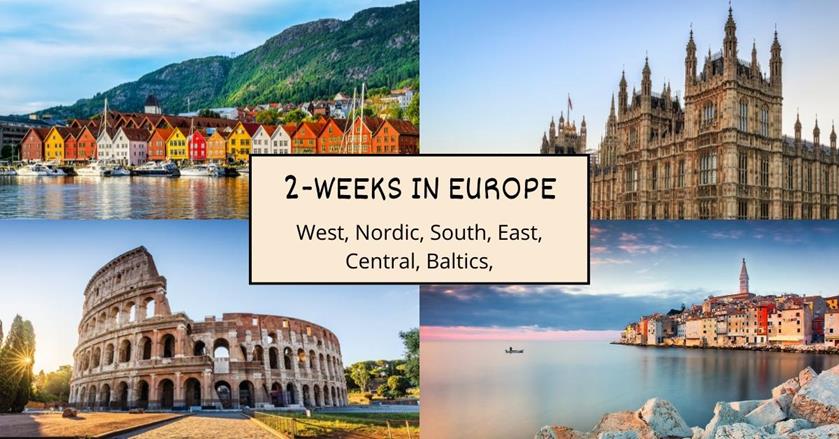
Before you go book your flight and hotels, take a look at the information below first. It will help you visualise and plan your itinerary better. You can get ideas on when to go, how to travel around, and what to pack.
When is the best time to go to Europe
This depends on what you plan to do. Most people go to Europe during summer, but of course, if you want to ski, come between December and February. I personally love going in spring and summer, during autumn, it’s also very pretty but it rains a lot.
You might want to consider travelling during the off-season because this is when there are fewer travellers and the prices of accommodations and tours aren’t sky-high so you’ll be able to save quite a bit.
Getting around Europe
The best way to get around Europe is to rent a car especially if the country you’re visiting are next to each other or have an open border agreement. It’s cheaper and gives you freedom of your time.
However, if you are crossing countries and they are not next to each other, you are probably better off flying than doing a long drive. Check first if your driver’s license is valid in Europe and check what type of cars each country you are going to have.
For example, Italy, Spain, and France are known for using a stick or manual transmission. While the UK and Ireland drive on the left.
Buses and trains are quite reliable and affordable. But there are also domestic flights which are affordable as long as you don’t pack too much unless you are willing to pay extra.
Language and currency
There are over 24 official languages in Europe. You should be able to get around with English but it’s important to also learn basic words to show respect for each country’s culture and easily communicate with locals.
Luckily though, most countries in Europe use Euro, except in the UK, Nordic countries, and maybe some countries in East Europe. It’s easy to pay with credit cards but carrying cash with you for emergencies is still advisable.
Visa and COVID-19 policy
Each country has different visa rules, however, if your destination is an EU member, they have the same visa policy; 90 days visa-free for visitors with a passport from North America, some Latin America, some Southeast Asia and East Asia, and most Oceania. This also applies to non-EU countries such as Switzerland and Norway.
For visitors with a passport from the EU or a European country, you should have freedom of movement for unlimited time except for some nationalities such as the UK and countries in East Europe.
Europe is open to COVID-1 vaccinated tourists. If you are unvaccinated, best to check if your destination has extra entry requirements. Depending on the airline and destination, you might be required to submit a test before boarding.
Wearing a mask is no longer required in many places in Europe, but it’s smart to carry one just in case you get to countries that still require them. Read about the EU reopening .
What is the average cost for 2 weeks in Europe
As diverse as the European culture is, the cost also varies a lot. The budget for 14 days in Europe depends on a few things such as the countries, type of tours, accommodation, and how you plan to move around.
$800 in Eastern Europe will not work for Scandinavia. $800 is a tight budget, but it might work for more affordable countries such as Eastern Europe or the Baltics (assuming this excludes the flights to the region and back). $1,000 will be fine for southern-east Europe, and $1,500 will be decent for central Europe. While west Europe and the Nordics plan to spend around $3,000.
The accommodation will cost the most expensive, but the food can be budgeted. Then the transportation. You can either use public transport or rent a push bike when moving around the cities. Take the bus or train when travelling to the next country or ride a plane.
Travelling during the peak season will also cost a lot more. Check under each itinerary to see the average cost of a 2-week trip in Europe.
Other basic travel tips
Planning a trip can be exhausting and often overwhelming. To make it a bit easier, I use travel sites and services that have flexible cancellation policies in case I change my mind or my travel dates. Here’s a list of travel tools I use. From flight selections, affordable hotels, wide-range options for car rentals, and even affordable travel insurance.
TOP PLACES IN EUROPE (pinned map)
Click the icon on the top right to enlarge the map. Credit: map data: Google
2 WEEKS IN EUROPE ITINERARIES
I will show your six itinerary options to choose from for your 14 days in Europe. Covering multiple countries and featuring famous attractions that are historical, cultural, and outdoor activities.
Deciding where to spend your 2 weeks in Europe can be hard. Should it be in Spain or Portugal? How about both? Should you visit Rome or Paris ? When unsure, there are a few things you can do to see which places are more suitable for you.
For example, Rome would be ideal if you love historical sites such as ruins. Perhaps you like history, but in the form of art, then Paris is the one. For food lovers, don’t miss visiting France, Spain, Italy, and Greece.
Itinerary #1 South Europe: Spain and France or France and Italy
We have two sub-options in our first itinerary for your 2 weeks in Europe. This includes either Spain and France or France and Italy. Spain is well-known for its lively culture, flamenco, arts, and literature, as well as its wines, beaches, and, of course, football.
If you feel like this itinerary is a little too expensive, you can instead go to Portugal. Take a look at how to spend 2 weeks in Portuga l or even just a few days in Lisbon. Spending 14 days in Southern Europe is a good place to do your first trip to this continent.
France, on the other hand, is well-known for macarons, wine, champagne, great pastries, as well as fashion, museums, and other historical sites. You could also do many water activities in France or if you plan to come during winter, you can head to the Alps for some skiing.
Italy is loved for its opera, its art cities, unique scenery, and good food. They are also among the four fashion capitals, with luxury brands, and of course, who could forget the Vespa?
If you have never been to Italy, make sure you visit Venice, Rome, Florence, and the southwest coast, where you can visit Naples for Amalfi and Sorrento. You can also consider 2 weeks in Greece for this itinerary. Not to mention, the south is a famous region to spend honeymoon in Europe .
Spain for 7 days
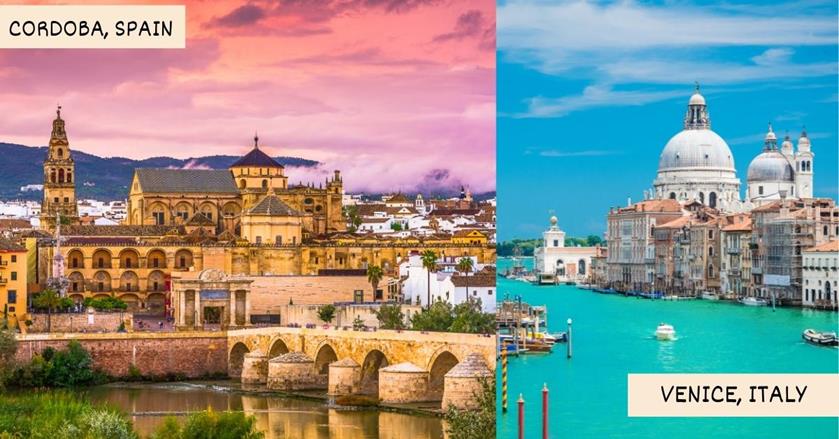
Spain is one of the most popular destinations in Europe, not only for foreign visitors but also for other European nations. With its stunning beaches, yummy food, and very welcoming culture, Spain is undeniably a must-visit when you come to Europe for 2 weeks.
Most people go to Madrid, the capital of Barcelona, a coastal city. However, if you want to get away from big crowds, head to Seville, Valencia, or even Zaragoza. For young travellers who love to dance and party, Ibiza is a top spot, while Palma, Tenerife, and Gran Canaria are awesome islands to explore and spend your vacation in.
We have a specific 2 weeks in Spain itinerary , which might help you plan a trip there if you decide to spend your trip in one European country only.
Here are some of the top-rated attractions in Spain :
- Alhambra and Generalife in Granada
- Palacio Real in Madrid – get your ticket in advance
- El Escorial near Madrid
- Aqueduct of Segovia – north of Madrid
- Sagrada Familia and Gaudi Sites in Barcelona – check tour prices
- Great Mosque in Cordoba, near Seville
- Guggenheim Museum in Bilbao
- Beaches of Gran Canaria
France for 7 days
Some of the options to reach France from Spain include flying, taking a train, riding the bus, using rideshare or driving. The most recommended option is to ride a plane, but if you have plenty of time, you should consider renting a car and driving on your own. We have an article with 3 different itineraries on how to spend 2 weeks in France .
France is a country famous for many reasons. The food is great, it is rich in culture, the abundance of historical sites, and thousands of wineries to explore. France is also known for Tour de France and is a great holiday destination any time of the year. You should geat a hop-on hop-off bu s that will take you to the top attractions of Paris.
Paris is an obvious place to visit, but if you don’t like big cities or have been here before, you can consider other places. For history buffs, head to Calais, Dunkirk, and Normandy. For those who love the outdoors, check out Lyon, Marseille, Nice, and Bordeaux (aka the Basque region).
Here are some of the top attractions n France:
- The Louvre in Paris – book a guided tour
- Cathédrale Notre-Dame de Chartres near Paris
- Eiffel Tower in Paris – get your skip-the-line ticket in advance
- Chateau de Versailles in Paris – visit with a garden access
- Mont Saint Michel
- Loire Valley Chateaux
- Côte d’Azur aka French Riviera in the South
- Provence for lavender fields
- Chamonix-Mont-Blanc for skiing in the Alps
Italy for 7 days
To reach Italy from France, you could either take the train or fly but taking the train is preferred by most tourists and locals alike because you’ll be able to reach your destination in less than five hours anyway. There are tons of routes to choose from if you want to see some interesting scenery and plan to drive instead.
2 weeks in Europe have to include Italy. It is loved for its dishes to die for, beautiful castles, amazing hiking trails, and warm culture. Just like in Spain and France, wine in Italy is world-class and their historical sites are well preserved.
Before you book anything, decide where you want to go. Rome and Venice are the top places to visit in Italy. But if you have been there, it’s time to explore Florence, Milan, Bologna, and Genoa in the north. For the south, head to Naples, Sicily, and all the way to Palermo. Check out our 4 itineraries for 2 weeks in Italy .
Some of the top tourist attractions in Italy include :
- Colosseum in Rome – get your ticket in advance to skip the very long queue
- Spanish Steps in Rome
- Trevi Fountain in Rome
- Venice Grand Canal – don’t skip the romantic gondola ride
- Gode Palace and St. Mark’s Basilica in Venice – explore with a tour guide and secure a ticket
- Leaning Tower of Pisa
- Vatican City near Rome; Basilica of St. Peter, Sistine Chapel & Vatican Museums – you can visit this in one go
- The Uffizi Gallery in Florence
- Cathedral of Santa Maria del Fiore in Florence
- Lake Como near Milan
- Cinque Terre
- Amalfi Coast
- Pompeii and Mount Vesuvius in Naples – visit this and the entirety of Naples on a day trip from Rome
Travel cost
These three destinations are one of the most expensive places in Europe. Budget around $2,000 for a 2-week trip around Spain, France, and Italy not including the flights from your location and back. Accommodation will be the most expensive cost while food is quite affordable in these places.
Of course, if you want to travel with luxury, you can easily spend $3,000-$5,000 which will allow you to stay at 4-5 star hotels, dine at fancy restaurants, and take a private car with a driver anywhere.
For those on a tight budget, $1,500 is possible , however, you will likely stay at youth hostels and share a room with other people in dorm/bunk rooms or even look at Couchsurfing. You can also save more money by looking at ready-to-eat meals at grocery stores or cooking in the hostel is possible. Join a free walking tour where you will be expected to give a tip based on the tour guide and the tour itself.
Itinerary #2 Central Europe: Germany and Poland
For this next itinerary, we’ll be covering 2 weeks in Central Europe, which consists of the countries Germany, Poland, Switzerland, Liechtenstein, Austria, Czechia, Slovakia, and Hungary. However, in this itinerary, we’ll only be covering Germany and Poland.
Germany is well-known for its cathedrals, castles, palaces, and colourful architecture, as well as its sausages and beers. It has many historical sites relating to World War I and II. Berlin is loved for being vegan-friendly, but meat-eaters shouldn’t have a problem finding their way around restaurants either.
Conversely, Poland is famous for its food, stunning geography, folklore, history, and friendly locals. In Poland, you’ll find Europe’s most ancient forest, Medieval Castle, the infamous Auschwitz-Birkenau Camp, amazing museums, and more.
Apart from that, you can also visit theme parks in Poland, such as Engerylandia Theme Park, Rabkoland, and Aquapark Sopot.

Germany for 8 days
Germany has so many things to offer that it would take 8 days to satiate your curiosity, and even then, you would barely scratch the surface. Don’t overwhelm yourself trying to see everything in 8 days. If you want t visit Germany only, we have these 2 weeks in Germany itineraries .
Most people will go to Berlin or Munich, but there are also other cities such as Hamburg, Frankfurt, Nuremberg and Cologne to name a few. I highly recommend you rent a car to move around easier, but taking a domestic flight or the train is also easy and affordable.
If you’re going to Berlin, the best way to see all the top attractions is by buying a hop-on hop-off bus with live a tour guide .
Here’s a list of the top attractions in Germany:
- Brandenburg Gate in Berlin
- Berlin Wall
- Cruise the River Spree – book a 2.5-hour boat tour
- Museum Island in Berlin
- Sachsenhausen Memorial – visit with a tour guide
- Neuschwanstein Castle near Munich
- Linderhof Palace near Munich – book a combo tour with Neuschwanstein Castle
- Marienplatz in Munich
- Pay respects at Dachau Concentration Camp – join a tour from Munich
- Kölner Dom in Cologne
- The Black Forest, Baden-Württemberg, near Stuttgart
- Miniatur Wunderland at Port of Hamburg
- Bamberg and the Bürgerstadt near Nuremberg
Poland for 8 days
There are tons of modes of transportation from Germany to Poland, including boarding a plane, using rideshare cars, trains, buses, or driving. Flights between these two countries are frequent and affordable.
Poland has a dark history, but the country is more than that. It has stunning lakes, UNESCO sites, and rather interesting cuisine, and it is in the top 20 safest countries in the world – a great place to discover if you are travelling alone.
Poland also has the biggest castle in the world, and many believe that vodka originated in Poland. In winter, you can ski in Poland, which is more affordable than France, Switzerland, and even Italy.
Many foreigners get confused and think Krakow is the capital of Piland, but it’s actually Warsaw. Apart from these two cities, you can also visit Gdansk, Wroclaw, Katowice, and Lublin. Most of the cities are connected via buses and trains hence moving around during your 2 weeks in Europe shouldn’t be a problem.
>>TIP: Check out our 2 weeks in Poland post if you prefer to explore that country on a single trip. There are two itineraries to choose from.
Here are some of the top tourist attractions in Poland:
- Wieliczka Salt Mine near Krakow
- Auschwitz- Birkenau Camps near Krakow – book a guided tour or combine it with the Wieliczka Salt Mine tour
- Oskar Schindler’s Enamel Factory in Krakow
- Wawel Royal Castle in Krakow
- Warsaw Old Marketplace
- Lazienki Park in Warsaw
- Malbork Castle near Gdansk
- Morskie Oko Lake and Hot Bath Pools near Zakopane – check tour prices
- Crooked Forest near Szczecin
Travel cost:
Central Europe in general can be costly, but only if you plan to visit Germany, Austria, and Switzerland. Poland and Czechia are both affordable destinations compared to their neighbouring countries. $2,000 will take you a long way if you choose one expensive place to spend a week and the other one is a more affordable country (e.g Germany and Poland or Switzerland and Czechia).
You can save even more money if you focus on Poland or Czechia only or book a trip to Switzerland just for 2-3 days instead of an entire week.
$5,000 will be a great budget for a luxury trip . This is suitable for couples who are on their honeymoon or retiree travellers. For young visitors and backpackers, you can probably get away with $1,000 to $1,500 for the 2 weeks trip .
Accommodation in Germany, Switzerland, and Austria is costly but affordable in Poland and Czechia. Rely on using public transportation in all countries, such as buses and trains, instead of renting a car or flying.
Itinerary #3 Baltics: Lithuania, Latvia, Estonia
The Baltics are one of the most affordable regions in Europe. Although it has its fair share of tourists, the streets and attractions don’t get too busy, even during the summer season. It’s an awesome place to spend your 2 weeks in Europe vacation without being surrounded by a big crowd.
Lithuania is famous for its natural scenery, including forests, lakes, flatlands, and other landscapes. There are also historical spots here to visit, and you must try their local ciders. I personally loved their local food, especially beetroot. If you’re a foody, check this Vilnius food guide for a list of must-try dishes.
Conversely, Latvia is known for its UNESCO World Heritage Sites and art nouveau architecture. It’s on the coast, hence if visiting during summer, don’t forget to dip your toes.
Last but definitely not least is Estonia, which is famous for its dense woods, thousands of uninhabited islands, and rich history. It experienced a boom in tourism recently since it implemented a digital nomad visa.
Estonia is among Europe’s most linguistic nations, is one of the countries with the cleanest air in the world, and half of the country is made up of forest, which probably explains the great air quality. We also have two itineraries specifically for 2 weeks in the Baltics only or 2 weeks in Eastern Europe itineraries .
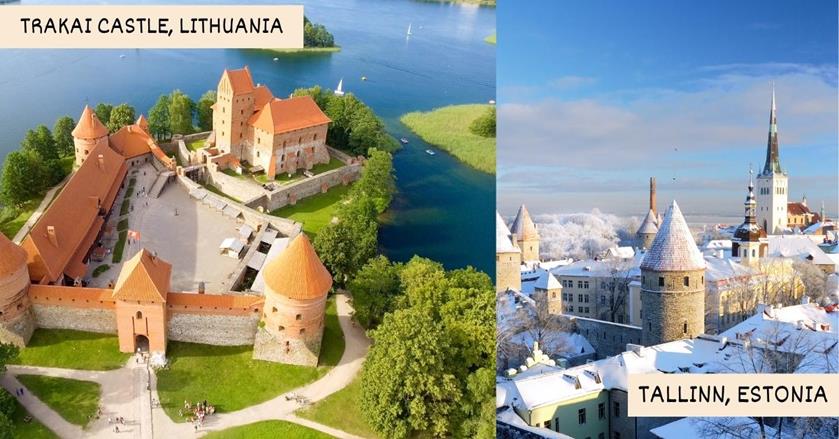
Lithuania for 5 days
Lithuania is rich in cultural preservation, so much so that UNESCO considered their folk dance as one of the intangible cultural heritages. They also have one of the oldest languages, even older than Greek, German, and Celtic, and the oldest tree in Europe could be found here as well.
With five days in Lithuania, you can do and see a lot of things. You can cover at least two major cities; the capital city Vilnius, and the cultural art city of Kaunas. If it’s warm enough, head to the coast and visit Klaipeda.
Here is a list of the best places to see in Lithuania:
- Gediminas Castle Tower in Vilnius
- Vilnius Cathedral Square
- Hot Air Balloon Flight – over Vilnius or Trakai Castle
- Energetikos ir technikos muziejus in Vilnius
- Museum of Occupations and Freedom Fights and A.Mickiewicz Memorial Museum in Vilnius
- MO Muziejus in Vilnius
- Gates of Dawn in Vilnius
- Three Crosses Monument in Vilnius – join a full-day tour from Vilnius
- Walk around Uzupis
- Trakai Castle near Vilnius
- Kaunas Castle
- Devils’ Museum in Kaunas
- Hill of Crosses near Šiauliai
Latvia for 4 days
You can go to Latvia from Lithuania by driving, riding a bus, plane, or taking the train. The most recommended option is through riding a bus as it is the cheapest and fastest. Latvia is also a great destination during summer. You can take a swim on its sandy beaches, lakes, and rivers.
You can either spend the entire 4 days in Riga, the capital city or take day trips to see Gauja National Park and Turaida Museum Reserve for example. You can also explore Riga on a segway tour .
Here are some of the top tourist attractions in Latvia :
- House of the Black Heads in Riga – get your ticket in advance
- Riga Cathedral
- Three Brothers, Latvian Museum of Architecture
- St. Peter’s Church
- The Freedom Monument in Riga
- Shop souvenirs at Riga Central Market – join a food-tasting tour
- Gauja National Park outside of Riga
- Rundale Palace and Museum ner Jelgava
Estonia for 4 days
To reach Estonia if you’re coming from Latvia, you could board a plane, ride a bus, take the train, or drive. The most recommended option would be to ride a plane as it’s the fastest, but the cheapest option would be to take the bus.
Estonia is very unique, they have islands but are inhabited – and that makes them interesting to visit. There, you can go fishing, sailing, canoeing, kayaking, and for those who love birds, birdwatching is a popular thing to do in Estonia.
Tallinn, the capital, is obviously the most popular destination. However, with 2 weeks in Europe, around the Baltics, you can also head to Parnu and Tartu – both are located in the south of Estonia. Go to Haeska, Kabili, and Matsalu for birdwatching and wildlife experiences.
Here are some of the sights to see in Estonia :
- Tallinn’s Old Town
- Lennusadam Seaplane Harbor in Tallinn
- Lahemaa National Parl – sign up to a day trip
- Patarei Prison Exhibition/Communism Prison in Tallinn
- Parnu’s Beaches
- Alpakafarm near Parnu
- Estonian National Museum in Tartu
- Tagurpidi Maja (Peapeal OÜ) / Upside Down House in Tartu
- TYPA Letterpress and Paper Art Centre in Tartu
- Kuressaare Castle in Saare
- Join a 3-hour food tour
Travelling around the Baltics is one of my favourite destinations and one I recommend if you’re on a budget. You will still experience the European culture, walk through the alleys and paves with cobbled stone, and eat delicious meals.
It’s honestly possible to travel here for around $1,000 for those on a budget . You will stay in a hostel and consume street food or grocery store meals. The tours also don’t cost that much. Accommodation is around $25 to $35 a night, but transportation is cheap.
$2,000 is the average cost where you get to have a private room and try out a few local restaurants. For a luxury trip, $3,000 will get you very comfortable.
Itinerary #4 East Europe: Hungary and Croatia or Romania and Bulgaria
East Europe is a massive region. You will have to choose 2-3 countries to cover during your visit and perhaps next time, you go to new places. Right now, we’ll only cover 4 destinations for your 12-day in Europe itinerary; Hungary and Croatia or Romania and Bulgaria.
Croatia has so much to offer, but in the last few years, being the filming location of Game of Thrones, this country attracted more tourists. Aside from that, they also have stunning waterfalls and gorgeous Adriatic Islands, among other landscapes.
Hungary on the other hand is famous for its ruin bars, paprikas, and goulash. It also has sought-after outdoor and public thermal bars and great nightlife. Outside the city, Hungary has a lot of nature preserves and can be an affordable ski destination in winter.
Bulgaria is the oldest country in Europe and has tons of hot springs. It’s undeniable how affordable Bulgaria is as a travel destination. It also sits right on the Black Sea, a popular spot during summer.
Nightlife in Bulgaria is another reason tourists come here for its affordability. Speaking of cuisine, the traditional Bulgarian food is something of a must-try.
Romania is famous for its Carpathian Mountains, Salt Mines, and Medieval Fortresses. Just like Bulgaria, it’s also located on the Black Sea. One might want to visit Romania since it’s famous for being the home of Dracula.
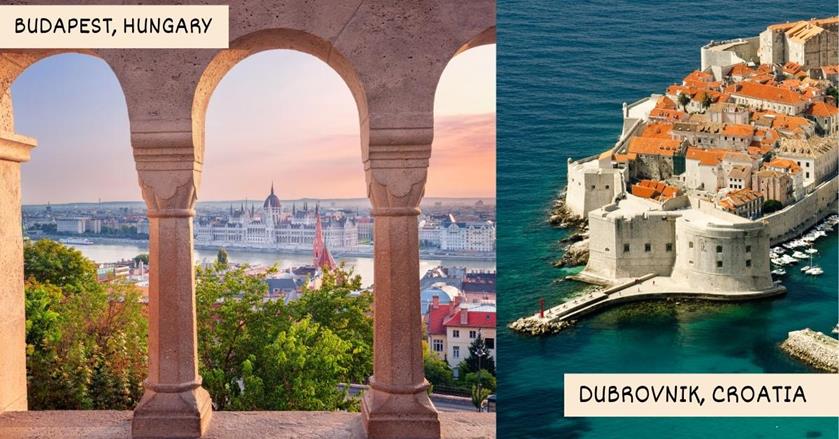
Hungary for 7 days
Hungary, like many other European countries, is a landlocked country. But it doesn’t mean you can’t enjoy summer in Hungary. This country has over 1,000 natural springs water, hence, the popularity of its thermal baths.
Budapest is not the only city worth visiting in Hungary, you should also consider Debrecen and Szeged. While Balaton Uplands National Park is the spot to you want to go hiking, join wine tours, and be around nature.
Here are some of the top tourist attractions in this country :
- Hungarian Parliament Building in Budapest
- Budapest’s Széchenyi Thermal Bath – book a full-day spa
- Buda Castle
- Buy souvenirs at Central Market Hall
- Take a boat cruise Danube River in Budapest – check cruise prices
- Matthias Church in Budapest
- Esztergom Basilica
- The Caves of Lillafured near Miskolc
- Lavender field at Tihany
Croatia for 7 days
It is relatively easy to travel to Croatia if you’re coming from Hungary as they are neighbouring countries. You could travel by bus, by train or by driving. Any option is fine, but the cheapest option would be to ride the night bus.
As mentioned before, Croatia is now popular for being the filming location for Game of Thrones, but there are other places to see in this magnificent country. Just like its neighbouring country of Italy, Croatia is also a fantastic beach destination and so much more affordable.
Zagreb is the capital of Croatia and a must-visit, then you can go to the coast. The most popular city is Split and Dubrovnik, but Zadar, Hvar, and Pula are an equally stunning area for swimming and other water activities.
Want to spend 14 days in Croatia ? Our guide has three itineraries you can check out and see which one suits you best.
Some of the top tourist attractions in this country include :
- Dubrovnik’s Old Town Walls – join a walking tour
- Trsteno Arboretum, Trsteno near Dubrovnik
- Dubrovnik’s Lovrijenac Fort
- Visit Game of Thrones filming locations – book a tour
- Nikola Tesla Technical Museum in Zagreb
- Diocletian’s Palace in Split – enjoy a walking tour with a local guide
- Blue Cave, near Split – book the 5 island boat tour
- Krka Waterfalls, near Split – visit on a boat tour
- Plitvice Lakes National Park near Zadar
- Kornati National Park near Zadar
- Euphrasian Basilica in Porec
- Pula’s Roman Arena
- Swim at Galebove Stijene in Pula
- Explore Brijuni/Brioni National Park near Pula
- Mulini Beach in Rovinj
Romania for 7 days
A massive country in East Europe, Romania has a lot to offer. From national parks, vibrant cities, historical sites, and beach access to the Black Sea. Bucharest is known for great nightlife, but apart from that, it’s also rich in cultural and historical spots.
Other than Bucharest, you have to go to the Transylvanian region, known as the home of Dracula. If it’s warm enough, head to Constanza, while Brasov and Cluj-Napoca are the areas to go to during winter for skiing and other winter activities.
Here are some of the places you could visit once you reached Romania:
- Romanian Athenaeum in Bucharest
- Grigore Antipa National Museum of Natural History in Bucharest
- National Museum of Romanian History in Bucharest
- Dimitrie Gusti National Village Museum in Bucharest
- Vaser Valley Forestry Railway
- Bran Castle aka Dracula’s Castle in Transylvania – book a tour combo with Peles and Brasov trip
- Sighisoara Historic Center
- Covered Stairway in Sighisoara
- The Clock Tower in Sighisoara
- The Black Church in Brasov
- Peles Castle near Brasov – book a 2-day tour from Bucharest to visit Brasov, Sibiu, and Sighisoara
- Bucegi Natural Park near Brasoc
- Transylvanian Alps
Bulgaria for 7 days
Just south of Romania, you can reach Bulgaria by train, bus, or driving. The quickest option would be to drive, which would take you more or less five hours, but the cheapest option is by riding a train.
Another country with the best nightlife, Bulgaria is popular with young tourists. But it doesn’t mean non-partygoers cannot enjoy Bulgaria. This country is a great place to explore the outdoors. There are many hiking trails and to ski here, you don’t have to spend too much.
Head to the capital city, Sofia, but for winter sports, you can go to Bansko, Borovets, and Pamporovo. If you are coming during the warm months, you can still go to the Black Sea by heading toward Varna.
Some of the top spots in Bulgaria are:
- National Palace of Culture in Sofia
- Sofia History Museum
- Rila Monastery – visit with combo tour to Boyana Church
- Seven Rila Lakes – check tour price from Sofia
- Tsarevets Fortress in Veliko Tarnovo
- Belogradchik Rocks
- Prohodna Cave in Karlukovo
- Krushuna Waterfalls
- The Rose Valley near Kazanluk
- The Ancient Theatre of Philippopolis in Plovdiv – join a tour of Plovdiv, Asen’s Fortress, and Bachkovo Monastery
- Pirin National Park near Plovdiv
- Thracian Tomb of Sveshtari near Shumen
East Europe is one of the most affordable regions in Europe. The accommodation alone can range between $20-$30 while food and the use of public transportation are also very affordable.
It’s easy to travel on a budget in eastern Europe, around $800 is feasible for backpackers and young travellers. If you want to be comfortable, $1,000 will be great and get you your own private room and dine at restaurants. $2,000 can easily be a luxury trip in this region for a 2-week adventure.
Itinerary #5 Nordic: Iceland, Norway, and Denmark
The next option would be the Nordic countries, which consist of Norway, Iceland, Sweden, Finland, and Denmark. However, in this itinerary, we will only cover Norway, Iceland, and Denmark.
Norway is also known as the Land of the Midnight Sun. It is famous for its fjords, lakes, and magical skies (Aurora Borealis), as well as Viking culture and folklore.
Iceland is also famous for a lot of natural wonders such as geysers, active volcanoes, and glaciers. You could also see the Northern Lights here. Iceland is relying 100% on renewable energy; hydropower, and geothermal.
Last but definitely not least is Denmark, which is well-known for its coastal towns, architecture, Royalty, and cuisine. Copenhagen is a must-visit. If you find yourself with extra time, you can hop on a train and head to Sweden.
You can also just visit Denmark, Norway, and Sweden using our 2 weeks in Scandinavia itinerary .

Iceland for 4 days
Iceland is the land of fire and ice, and you might be wondering why. They have glaciers but have volcanically heated pools at the same time, where you could swim all year round. That’s pretty fascinating.
Aside from that, it is also a literary-focused country. In fact, one out of ten Icelanders will publish a book even at least once in their lifetime.
Iceland is not a big country, but spending four days here is plenty. Most tourists love staying in Reykjavik, but you don’t have to. If you want to save money, you can stay outside the city and rent a car instead. You can easily move around in your own car, which means it doesn’t matter if your hotel is not in the city.
We have a complete guide and itinerary for 2 weeks in Iceland .
Top attractions in Iceland:
- Drive the Golden Circle
- Blue Lagoon – get your ticket in advance including Kerid Volcanic Crater
- Gullfoss Falls
- Seljalandsfoss
- Silfra – snorkel between 2 tectonic plates between North American and Europe
- Þingvellir National Park
- Jökulsárlón
- Chase the Northern Lights – join a tour to find the best spot
- Icelandic Phallological Museum
- National Museum of Iceland
- Reykjanesfólkvangur
- Whale Watching near Reykjavik – book a cruise
- Eystri-Fellsfjara / Diamond Beach
Norway for 6 days
You will need to ride a plane to reach Norway if you’re coming from Iceland. The fastest route takes more or less 6 hours. However, the journey would be worth it because there are so many sights and sceneries once you reach Norway.
This includes the world’s longest road tunnel and the world’s most remote island, among others. This is also an amazing place to ski during winter.
Many tourists usually go to Oslo and Bergen, but you can also add Stavanger, Kristiansand, and Tromso to your itinerary of 2 weeks in Europe.
If you want to see Fjords, you have to head west; from Trondheim all the way down to Stavanger. Check our 2 weeks in Norway itinerary list if you only want to see this country.
Here is a list of some of the best places to visit in Norway:
- Bygdoy Peninsula in Oslo
- Vigeland Sculpture Park in Oslo
- Viking Ship Museum in Oslo
- Naeroyfjorden
- Akershus Fortress in Oslo
- Oslo’s Fjords – check tour prices or a cruise to Nærøyfjorden, Flåm, and Stegastein
- Hanseviertel Bryggen in Bergen
- Sognefjord near Bergen
- Osterrjod and Mostraumen near Bergen – join a cruise
- Pulpit Rock (Preikestolen), in Stavanger
- Lofoten Islands
- Geirangerfjord
- Arctic Museum in Tromso
- Find the Northern Lights from Tromso – book a guided tour
- Atlantic Ocean Road
Denmark for 4 days
To reach Denmark from Norway, the best would be to take a plane. There is also a car ferry service, but with a limited time, it’s not ideal. Denmark has the oldest Monarchy in Europe.
Denmark is a small country but popular not only in Europe but around the world. For many years, it has been voted the happiest country in the world. It’s also known for being safe for tourists, the home birth of lego, and has the oldest monarchy in Europe and the oldest flag in the world.
Naturally, visitors will go to Copenhagen, but since the country (excluding Greenland and the Faroe Islands) is not that big, 4 days in Denmark is plenty
You can explore the entirety of Copenhagen and even have time to go to Odense, where the famous children’s book author Hans Christian Andersen was born. You can actually get to the city centre from Copenhagen airport in just 13 minutes – a great way to save time.
Here is a list of some of the best attractions in Denmark:
- The Little Mermaid (Den Lille Havfrue) – explore Copenhagen in a day
- Freetown Christiania
- The King’s Garden
- Amalienborg
- Rosenborg Castle
- Tivoli Gardens – get your ticket in advance
- Botanical Garden
- The Round Tower
- Memorial Anchor
- Copenhagen Opera House
- Walk around Strøget
- Ny Carlsberg Glyptotek
- Christiansborg Palace
- Danish Architecture Centre
- Ofelia Plads
- Legoland in Billund
- Hans Christian Andersen’s Childhood Home
- H. C. Andersens House
Nordic and Scandinavia is undeniably the most expensive place to travel around Europe. Accommodation alone could run $100, and dining and consuming alcohol are costly as well. But taking the bus and train is a little bearable.
To ensure that you will enjoy your 2 weeks in Europe around this region, plan to spend about $2,000 . If you are on a budget, you can probably do it for $1,700 but no less. But for l uxury, your trip cost will really skyrocket up to $5,000 .
Itinerary #6 West Europe: The UK, Netherlands, and Belgium
The last itinerary option for your 2 weeks in Europe includes the countries the UK, Netherlands, and Belgium, also known as the west of Europe.
The UK is popular for many things, including its monarchy, culture, history, and performers. Being the home of four different countries; England, Scotland, Wales, and Northern Ireland, you can easily say that it’s worth a visit. From bustling cities, amazing hiking trails, pubs to check out, and castles to explore.
There are tons of iconic places in the Netherlands despite it being a small country. The Netherlands is famous for many things . Here, you’ll be able to see windmills, cheese markets, bulb fields, and earthenware, among others. The Netherlands also have plenty of historical spots to discover including Anne Frank’s House.
The last country on our list is Belgium. They have high-quality chocolates, hence the name Belgian chocolate. This country is also well-known for waffles and beer and is the home to NATO headquarters.
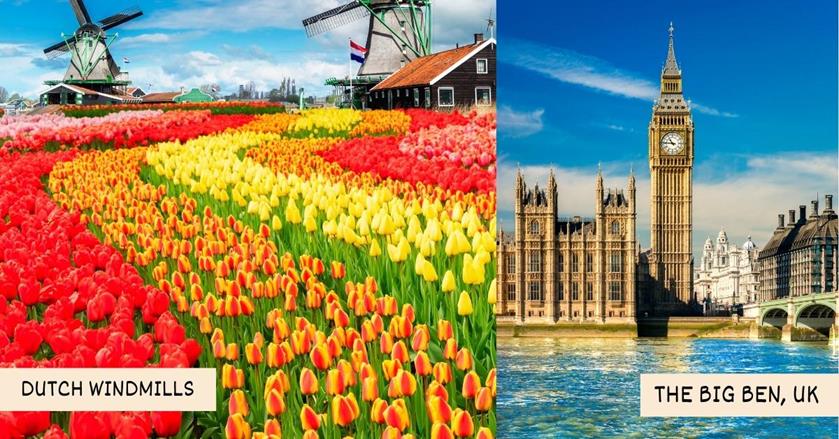
The UK for 6 days
There are many things to see in the UK, and six days is definitely not going to be enough. But don’t panic. If this is your first time here, list the attractions you really want to see first. The world-famous Big Ben, London Eye, and River Thames can all be found here, and that’s just in London.
If you have been here before, perhaps, you can now explore less popular areas. Perhaps, you can focus on hiking instead of being in the city or just spend 14 days in England only, especially if it’s your first time.
It’s undeniable that the UK has the most famous monarchy in the world. London alone has a lot of attractions related to the British Monarchy and historical places. In order to make the most out of your trip, the recommended duration of stay is at least five days.
ALSO READ: 2 weeks in the UK , 2 weeks in England , and 2 weeks in Ireland and Northern Ireland itineraries.
List of some best places to see in the UK :
- Tower Bridge
- Stonehenge – book a combo tour with Windsor Castle and Bath
- Buckingham Palace
- The British Museum
- Tower of London and Crown Jewels Exhibition – buy your ticket in advance
- Kensington Palace
- Madame Tussauds – get your skip-the-line ticket
- Shakespeare’s Globe
- St. Paul’s Cathedral
- Book a Harry Potter tour – Warner Bros. Studio
- Scotney Castle
- Bodiam Castle
- Warwick Castle
- Lake District National Park
- Dean Village
- Edinburgh Castle – book a skip-the-line tour
- Palace of Holyroodhouse
- Loch Ness, Glencoe, and the Scottish Highlands – check the tour price from Edinburgh
- Loch Lomond & The Trossachs National Park
- Titanic Belfast – join a guided tour
- Crumlin Road Gaol
- Giants Causeway – visit with a stop at Dark Hedges, Dunluce, and Belfast
- Free Derry Corner
- The Derry Walls
The Netherlands for 4 days
You could either ride the train or drive if you want to reach the Netherlands from the UK. Once you reach the Netherlands, you could experience the biggest ice skating tour in the world, or join a cycling tour. You can also know more about world-famous painters like Van Gogh and Rembrandt.
Four days sounds too little but you can actually do a lot while in the Netherlands. You can of course explore Amsterdam, and head to The Hague, Rotterdam, and Groningen.
Some things to see and do in The Netherlands:
- Jordaan and Amsterdam’s Canals – book the famous canal cruise
- Anne Frank House
- Rijksmuseum
- Mauritshuis
- Van Gogh Museum – enjoy with an audio guide
- The Windmills of Kinderdijk
- Hoge Veluwe National Park
- Valkenburg Castle Ruins
Belgium for 4 days
To reach Belgium, you could ride the train, ride a bus, use rideshare, or drive. The cheapest option would be to use rideshare and the most recommended option would be to ride the train. It would take you almost 3 hours to reach your destination.
The popular cities in Belgium are Brussels which is the capital, Ghent, Antwerp, and Bruges. You can take buses, trains, or rent a car to travel between cities. Don’t forget to go try different beers and waffles which are two of my favourite part of my visit.
Popular attractions in Belgium:
- Grand Palace
- Atomium – get your entry ticket in advance
- Sign up for the famous Hungry Mary’s beer and chocolate tour or join chocolate making class
- Manneken Pis
- Day trip to Bruges and Ghent – enjoy with a tour guide
- The Canals of Bruges
- Battlefield in Flanders
- Belfry of Bruges
- Basilica of the Holy Blood
- Bruges Beer Experience
- Sint-Salvatorskathedraal
- Gravensteen
- Museum Aan de Stroom
- The Rubens House
What I enjoy about travelling in western Europe is how it’s honestly a pricey place but it can be done on a budget. If you think you can stay on your feet for long hours and walking around is not a problem, you can easily cut costs by taking the bus or taxi. The accommodation will surely get you, but dining can be affordable.
The street food in all these countries is fun, globally diverse, and easy to find. For budget travellers, $1,700 is required for your 2-week trip and most likely requires you to stay in a youth hostel. $ 2,500 offers comfort and a bit of luxury where you can dine at nice restaurants. $4,000 means you can stay in hotels right downtown and near the top attractions, With this budget, you can even hire taxis during your entire trip.
SUMMARY OF 2 WEEKS IN EUROPE
There are so many countries to choose from if you plan to visit Europe. Fortunately, Europe has amazing transportation between cities and countries, making it easy to travel around even with limited time.
When planning your 14-day itinerary for Europe, don’t try to cram it too much. It’s better to travel a bit slower, see fewer places, but be able to enjoy and process everything you have seen and experienced. Europe is not going anywhere, you can always visit again and check out a new place.
I hope that you found these 2 weeks in Europe itineraries helpful in planning your own.
TO SAVE THIS ITINERARY, PIN THIS IMAGE BELOW:


10 Days in Europe Itinerary
Europe is my favourite summer destination. I don’t mind going in winter because their Christmas markets are super cool and the smell in the air travels me back in a very unique and cosy atmosphere.
According to nationsonlines.org , there are 50 countries in Europe, but only 44 are sovereign states. I’ve been to over 26 European countries and I used to believe that I don’t think I can convince myself to only spend 10 days in Europe.
However, things happened last summer, I had to travel to Europe for work. But I found myself with ten days to spare and planning an itinerary. That research took me to this situation – what countries are best to combine if I only have 10 days in Europe?
In this guide, I will show you how you can enjoy Europe with little time featuring 7 travel itineraries for you to choose from. I will also include information such as the best time to go, how to get around, what currency to use, and other travel tips.
THINGS TO KNOW BEFORE GOING TO EUROPE

There are so many places to visit in Europe and not all of them have the same transportation system, currency, language, and cost of travelling. This section will give you this information to help you decide where to go.
Best time of the year to travel to Europe
The peak season in Europe is summer, between June to August. It’s very busy during this time and the cost of hotels and flights is high. If you’re travelling with children, I can imagine this is the best time for you to visit.
But if you can avoid it, it’s better to travel to Europe during shoulder season , which is March to April and September to October. In these months, the prices of accommodations and flights are normal, there are fewer people, and it’s neither too hot nor too cold.
The rainy season in Europe is between October through March , but that depends on what part of Europe. For example, the UK gets so much rain pretty much throughout the year, while southern Europe usually around November.
If you’re looking to go to Europe in winter, that’s between November to February . In the northern region (Nordics), winter starts a bit early and lasts longer. Meanwhile, in southern Europe, it’s short and not as cold.
The clothing you have to pack depends on when and where you want to go. If you’re going in November in south Spain, you just need one lighweight jacket or jumper, but in November in Denmark, you definitely want a winter jacket. Check our packing list for a 10-day trip .
10 days in Europe cost or budget
This varies a lot depending on where you’re going . For example, Nordics, the UK, and Western Europe are more expensive. On average, the hotel per night would be about $120. In contrast, in South and East Europe, you can find hotels for about $80 a night.
In terms of transportation and tour costs, they are about the same throughout Europe. But food prices vary a lot.
For an affordable 10-day trip in Europe, budget travellers could allocate around $50-$100 USD per day for accommodation in hostels, meals at budget eateries, and public transportation, totalling approximately $500-$1,000 USD.
Mid-range travellers might budget $100-$250 USD per day for comfortable hotels, dining at mid-range restaurants, and some guided tours or activities, amounting to roughly $1,000-$2,500 USD for the entire trip.
Luxury travellers could expect to spend $250 USD or more per day on upscale hotels, fine dining, private transportation, and exclusive experiences, totalling $2,500 USD or more for the 10-day trip.
Is 10 days enough for Europe
Not at all, but don’t worry. You can always make the most out of your vacation as long as you know where to go, choose the correct cities to combine, and know how to get from one city to another.
For example, don’t plan on seeing one country in west Europe and then another in far east Europe. The flight time will be long and you might even have to waste time in a connection.
Choose countries near one another. For example, the Netherlands, Belgium, and Germany share land borders. The same goes for Czechia, Slovakia, Australia, and Hungary.
See both Italy and France if you focus on Northern Italy and Southern France. Scandinavia (Norway, Denmark, and Sweden) has non-stop flights between them.
Best way to travel around Europe
When planning your itinerary for these two countries, you definitely want to look at whether the cities you are putting together have direct flights or a train line that connects them. You can also rent a car if you want to jam-pack your itinerary and see as many things as possible in every city.
But if you don’t want to worry about transportation, arranging a tour guide, and obtaining tickets, you should consider booking a guided tour that will handle all those for you.
If you are more than 5 people in your group, you can even book a private tour which will be more convenient and could save more money.

What is the language and currency of Europe
There are lots of countries in Europe, and each has its own language. Overall, English will be the main language to use to get around. But of course, it helps if you speak German and French since there are a few countries that speak those languages.
German is used in Germany, Switzerland, Austria, and some parts of Luxembourg. French is used in France, Belgium, Luxembourg, and even in some areas in Northern Italy.
There are differences in terms of accents and dialects, but knowing some basics of these languages can help you get around and communicate with the locals.
Europe might not have one language, but they have the euros (€) when it comes to currency. 20 countries in Europe use euros , mainly in western, central, southern, and some parts of eastern Europe. On the other hand, Nordics, Far East, and Southeast Europe have their own currencies.
Choosing countries using the same currency to include in your itinerary can also make your trip easier since you don’t need to deal with different currencies and exchange them from one to another.
Europe visa requirements
While not all European countries are part of the EU, a lot of them share the same policy – which is foreign visitors can enter and stay for 90 days out of 180 calendar days.
However, the 90 days in counted as one country for those in the Schengen States. But don’t worry about this, since you have only been travelling for 10 days in Europe, you don’t have to think about that.
What’s important is knowing if you qualify for a free visa or if you need to apply in advance. Travellers from almost any country in North and Latin America can enjoy Schengen State visa-free. The same goes for UAE, Japan, South Korea, Malaysia, Singapore, Australia, New Zealand, Ireland, the UK, Ukraine, and Southeast Europeans.
The rest of the world has to apply for the Schengen visa in advance (as early as 6 months before your trip).
Where to make travel arrangements
Countries to combine on your 10 days in europe itinerary.
I know that ten days in Europe is not much. While it’s a small continent, there’s just so much to see and do. It can be overwhelming to plan a trip with limited time. But keep in mind, you don’t have to see everything all at once.
You can focus on the top places on your list, and if you enjoyed your time in Europe, know that you can explore new places next time.
I’ve been to Europe so many times, and I haven’t visited all the countries. I still have about 10 to visit, but I also don’t feel any regret for visiting Italy at least three times.
Below, I’m including places that you can put together during your trip. Of course, you can focus on one country, but with good planning, you can maximise your time without exhausting yourself too much.
When combining countries for a short vacation, it’s important that you choose ones that are either near one another or have a direct flight no longer than an hour or two.
Below are some countries that you can mix together, plus itinerary samples for your inspiration. I’ve been to all these countries and feel comfortable recommending them.
Remember when I mentioned before that I had 10 days to spare, which led me to write this guide? Well, I ended up going to Slovenia and Croatia. I loved it, and I will definitely be back and plan to stay longer.

France and Italy
This is an expensive itinerary, but also so worth it. If someone tells me “I don’t have many vacation days, but I really want to see the must-visit places in Europe, where do I go?”.
My answer will always be France and Italy. This is because it doesn’t matter what you want to do. These two countries can offer pretty much all of it.
Whether you want to suntan along the Mediterranean or visit historical places, France and Italy have both. Perhaps you love exploring cuisines – well, do I need to say more?
How about those into hiking? Have you heard of Mount Etna or the Pyrenees? They will challenge your hiking legs like no other. Perhaps you have young children with so much energy, Paris Disneyland and water activities in Sicily have you covered.
Let’s say you prefer to get away from tourists and visit western France or eastern Italy. And finally, fashion and art enthusiasts? Paris and Milan are the places for you.
France and Italy were the two first destinations I visited in Europe in 2015. I had spent more than 10 days in Europe at that time, but these two were my goals. I have now been to Italy three times and France twice since (both just this year, 2024).
To give you an idea, I would spend:
Itinerary #1:
- Fly into Paris
- 4 days in France – with some day trips to Dunkirk and Calais
- Fly from Paris to Rome
- 4 days in Rome
- 2 days in Naples – and travel back to Rome (only 3 hours if driving or 1 hr and 30 mins by train)
- Fly out of Rome back home
- You can also do it the other way around and start in Rome and finish in Paris
Itinerary #2:
- Fly into Venice
- 3 days in Venice
- Get to Milan (3-hour train or driving)
- 3 days in Milan – with a day trip to Lake Como
- 4 days in Paris
- Catch a flight home from Paris
Itinerary #3:
- Fly into Florence
- 3 days in Florence – with a day trip to Leaning Tower or Pisa
- Travel to Bologna
- 2 days in Bologna – the food capital of Italy
- fly to Marseille or Nice
- Fly home from Marseille or Nice (or from Paris)
Both Rome and Paris have two main international airports. So you can definitely find a flight that lands in Paris or gets out of Rome easily.
England and Scotland or Ireland
Let’s start with the basics. The UK consists of four countries; England, Wales, Scotland, and Northern Ireland. When saying Ireland, it basically refers to two countries; the Republic of Ireland and Northern Ireland.
The next step is to focus on the UK for 10 days or include the Republic of Ireland. If you want to do just the UK, you can either spend 10 days in England and Scotland or 10 days in England and Northern Ireland.
But if you want to include just one country in the UK, then you can plan on 10 days in England and the Republic of Ireland.
There is a lot to do and see here, but these two countries are not very big. This means that you don’t have to spend too much time flying or being on a bus or train. Instead, you can cover more areas even with limited time.
It rains a lot both in the UK and Ireland, so the best time to come is between March and April. It’s a bit chilly, but it’s not freezing and you won’t be spending time soaking wet.
This 10 days in Europe itinerary is ideal for those who are interested in seeing the well-preserved Medieval Castles in both countries and exploring the unique and fascinating natural beauty both countries can offer.
Here’s an idea of how to plan an itinerary:
- Arrive in London – there are six international airports here, wherever you’re coming from will surely have a direct flight here
- 5 days in London/England – if you prefer the northern region (Manchester, Liverpool, Birmingham) or the south/east (Bath or Brighton)
- Travel from London to Edinburgh – by train (5 hours) or plane (around an hour)
- 5 days in Scotland – a day trip to Glasgow and Loch Ness
- Fly back from Edinburgh
- Land in London
- 4 days in London, England
- Travel to Edinburgh, Scotland
- 3 days in Scotland
- Travel to Belfast, Northern Ireland
- 3 days in Northern Ireland
- Fly home from Belfast
- Start in London
- 4 days in London/England
- 3 days in Belfast
- Travel to Dublin, Ireland
- 3 days in Dublin
- Fly home from Dublin


Netherlands and Belgium
This is another expensive itinerary, but it offers a balanced experience where you get to explore classic European culture around vibrant cities.
Belgium is the home of the biggest political and economic union in the world, called the European Union (EU). Plus, it’s home to many people’s favourite – fries. And for those who love sweets, downtown Brussels is lined with colourful and mouthwatering Belgian waffles.
On the other hand, in the Netherlands, you will find the most beautiful tulip farms, the traditional Dutch wooden houses, and the tallest people in the world. If Amsterdam has been on your bucket list, you’ll finally get to see it and ride a boat along the canals.
Since these two are so close to one another and they’re both relatively small countries, this is your chance to rent a car and plan a 10-day European road trip itinerary.
Amsterdam has a bigger international airport, so it’s better if you start your trip there. Then travel around the Netherlands, before crossing the land border to Belgium. you can plan to drop off your car at Brussels Airport and catch your flight home from there.
- Start in Amsterdam and spend 4 days there
- Plan a day trip to The Hague and Rotterdam and use Amsterdam as your base for the entirety of your stay
- Do not forget to visit Keukenhof Tulip Gardens, which is only 40 minutes driver or 1 hour by bus/train from Amsterdam
- Travel to Antwerp, Belgium and spend 2 days there
- Travel to Ghent and spend a day there
- Explore Brussels for 3 days
Germany and Czechia
I love this 10 days in Europe itinerary because it balances the pricey Germany and affordable Czechia (formerly known as the Czech Republic). Not to mention that they share a land border, so you can also take this on a road trip or travel by bus (which is more affordable).
Germany is a bigger country, so it’s wiser to decide to visit either the southern region or the northern region. You can ideally see 2 cities in Germany and 2 cities in Czechia.
Both countries have a big beer culture and lots of stunning castles, making it an exciting trip for those who love beer, but also want to visit many interesting breweries and castles.
Itineraries for Germany and Czechia for 10 days could look like these:
- Land in Berlin, Germany
- 3 days in Berlin
- Travel to Nuremberg
- 2 days in Nuremberg
- Cross the border to Prague, Czechia
- 3 days in Prague
- Get to Brno
- 2 days in Brno
- Travel back to Prague to get to flight back home
- Arrive in Munich
- 3 days in Munich – with a day trip to Neuschwanstein Castle and/or the Black Forest
- Go to Nuremberg
- Coss the border to Prague
- 3 days in Prague – or 5 days with a few day trips including to Český Ráj
- Catch flight home

Slovenia and Croatia
This is my favourite itinerary on this list because it’s budget-friendly and not as touristy as the other countries mentioned above.
This year (2024) was my first time in both of these countries and I’m happy that I included them on my trip to Europe this time around. I spent two weeks in Croatia and three weeks in Slovenia. I wish I could spend more time in Croatia, but now I know that I loved it there and definitely coming back.
For this 10 days in Europe plan, I recommend that you start in Croatia if you want to begin your trip along the European coastline by the beautiful Adriatic Sea. But, if you prefer that to be towards the end, then head to Slovenia first.
Croatia has lots of cities and towns that feature a classic relax-on-the-beach type of vacation. In contrast, Slovenia offers a more low-profile classic European town built on cobbled stone streets leading to a Medieval Castle kind of destination and has a very little coastline.
If you’re a fan of Game of Thrones, you will get a chance to visit some incredible filming locations in Croatia. Slovenia offers experiences surrounded by exploring caves, going hiking, and spending some days in the most stunning Lake Bled.
These two countries share a land border and are members of the EU, so crossing shouldn’t be a problem. If you’re renting a car, check with the rental company if you can pick up the vehicle in one country and drop it off in another (one-way rental, but crossing the border).
Here are some ideas on how to create an itinerary for these locations:
- Arrive in Ljubljana, Slovenia
- 2 days in Ljubljana or 3 days – if you prefer a day trip to Lake Bled, and if not
- Travel to Bled – by bus, driving, or private transfer, it’s about an hour trip
- 2 days in Bled – don’t miss out on kayaking around the Lake
- Get to Zagreb, Croatia – you can take the bus, but you need to connect in Ljubljana, which takes about 4 hours
- 3 days in Zagreb – don’t forget booking a Plitvice Lakes National Park
- Travel from Zagreb to Dubrovnik or Split – choose between these two
- To Dubrovnik, it’s 12 hours on a bur or 6 hours of driving, the flight is an hour
- To Split, it’s 6 hours on a bus or 4 hours driving
- 3 days in Split or Dubrovnik
- Flight back home – you can do this the other way around too
- Instead of Bled, you can also go to Postojna Cave
- Instead of Zagreb, go to Zadar and a day trip to Krka National Park
Denmark and Norway or Iceland
For those who are curious about Scandinavia and Nordic and have the budget to holiday here, these three are must-see.
Denmark is where the colourful Nyhavn is in Copenhagen. It also has one of the best baking cuisines in Northern Europe (in my humble opinion).
Norway, on the other hand, offers the majestic Fjords on its West Coast, the must-hike Trolltunga and Pulpit Rock, and the gateway to Svalbard.
Iceland needs no introduction. The most sustainable country in the world, running on 100% renewable resources, loved for its Blue Lagoon and visited for its Víkurfjara Black Sand Beach. Not to mention, due to its shape, it’s one of the best places to do a road trip adventure.
Since you only have 10 days in Europe, you should choose two countries. Either Norway and Denmark, Norway and Iceland, or Iceland and Denmark.
If you’re travelling from North Europe, there are lots of direct flights to Iceland, which makes it a great starting point.
For those coming from Latin America and Asia, Denmark is likely your landing location.
To help you decide , I would go to Denmark and Norway or Denmark and Iceland if I want a mix of cities and nature. and I’d go with Iceland and Norway if I want my trip to be all about nature and hiking.
Here are some itinerary ideas:
- Start in Copenhagen, Denmark
- 3 days in Copenhagen
- Travel from Copenhagen to Oslo – by air
- 3 days in Oslo
- Fly from Oslo to Bergen or Stavanger – you can see the Fjords in both
- Pulpit Rock is closer to Stavanger
- Trolltunga is closer to Bergen
- 4 days in Bergen of Stavanger
- Fly back to Oslo to get home
- Land in Reykjavik, Iceland
- 3 days in Reykjavik – with a day trip to the Blue Lagoon and Thingvellir National Park
- Get to Vik from Reykjavik
- 2 days in Vik
- Fly from Reykjavik to Oslo
- 2 days in Oslo
- Travel to Bergen or Stavanger
- 3 days in Bergen of Stavanger
- Fly back home
- Start in Reykjavik, Iceland – you can rent a car and do a mini Iceland Golden Circle
- 5 days in Reykjavik – with a day trip to the Blue Lagoon and Thingvellir National Park
- Golden Circles includes Blue Lagoon, Thingvellir, Gullfoss Falls, Geysir, and Kerid Crater to name a few
- Fly from Reykjavik to Copenhagen
- Fly from Copenhagen to home

Spain and Portugal
Some people might say that visiting these two countries on one trip feels a bit redundant because of their cultural similarities. But that’s 100% incorrect. Once you step foot both in Spain and Portugal, you’ll realise how different they are from one another.
For one, Spain speaks Spanish and Portugal’s language is Portuguese. Siesta is not a thing in Portugal and the Portuguese are more laid back compared to the Spanish who always seem to have extra energy to do one more thing.
A few things they have in common though are bullfighting, Moorish heritage, and food culture. Both Spain and Portugal have island territories in Western Africa.
The good thing about visiting both places for 10 days in Europe though is that these two places share a border. Getting from one country to the next won’t take too much time.
When deciding where to start, that would depend on where you’re flying from. If coming from the Americas, you should be able to find a flight directly landing both in Portugal and Spain. Those coming from Asia will have an easier time finding direct flights to Spain.
If you want to do lots of hiking , go to the Madeira Islands in Portugal or the northern region of Spain. The Canary Islands of Spain are awesome for beach vacations but go to Ibiza or Palma if you want to be near the mainland and want to party. The beach destination in Portugal is Algarve.
Here are some itinerary ideas to get your planning going:
- Arrive in Lisbon, Portugal
- 2 days in Lisbon
- Get to the Algarve from Lisbon
- 3 days in Algarve
- Fly from the Algarve (Faro) to Madrid, Spain
- 2 days in Madrid
- Travel from Madrid to Barcelona
- 3 days in Barcelona
- Fly home from Barcelona
- Land in Madrid, Spain
- Travel from Madrid to Malaga
- 3 days in Malaga
- Fly from Malaga to Lisbon, Portugal
- 3 days in Lisbon
- Get to Porto from Lisbon
- 2 days in Porto
- Catch a flight home from Porto
- Arrive in Lisbon, but catch a flight right away to Madeira Islands, Portugal (Funchal)
- 3 days in Madeira Islands
- Fly from Madeira Islands to Tenerife or Gran Canaria, Spain – choose between these two islands
- 3 days in Tenerife or Gran Canaria
- Travel from the Canary Islands to Madrid
- Get to Lisbon from Madrid
- Instead of the Canary Islands, you can go to P
ACTIVITIES AND TOURS IN EUROPE (by country)
- France – link to the post
- Netherlands
TOP EUROPEAN DISHES, DESSERTS, AND DRINKS

Europe undeniably has one of the best and most diverse cuisines in the world. For such a small region, it’s insane how different dishes are from one another. Spending 10 days in Europe can easily be about food, you won’t run out of tasty dishes and desserts to try.
Here are some remarkable food and drinks you check out during your trip:
- Paella (Spain) – Flavourful rice dish with seafood or meat.
- Pasta Carbonara (Italy) – Pasta with creamy sauce, pancetta, eggs, and cheese.
- Fish and Chips (United Kingdom) – Deep-fried fish in batter served with fries.
- Croissant (France) – Flaky, buttery pastry often enjoyed at breakfast.
- Bratwurst (Germany) – Grilled sausage, typically served with mustard.
- Risotto (Italy) – Creamy rice dish cooked with broth and flavoured with various ingredients.
- Tapas (Spain) – Assortment of small appetizers or snacks, often served with drinks.
- Bitterballen (Netherlands) – Dutch meat-based snack
- Kranjska Klobasa (Slovenia) – Sausage made from finely ground pork meat
- Haggis (Scotland) – Dish consisting of minced sheep’s heart, liver, and lungs mixed with oatmeal, suet, onions, and spices,
- Irish Stew (Ireland) – A hearty stew made with lamb or beef, potatoes, carrots, onions, and herbs, slow-cooked until tender.
- Lutefisk (Norway) – A traditional dish made from dried whitefish
- Svíčková (Czechia) – A dish consisting of marinated beef sirloin served with a creamy vegetable
- Bacalhau à Brás (Portugal) – A traditional dish made with salted cod, onions, potatoes, eggs, and olives, often seasoned with parsley.
- Tiramisu (Italy) – Layered dessert with coffee-soaked ladyfingers and mascarpone cheese.
- Crème Brûlée (France) – Creamy custard topped with caramelized sugar.
- Black Forest Cake (Germany) – Chocolate cake with layers of cherries and whipped cream.
- Pastel de Nata (Portugal ) – Custard tart with a flaky pastry crust.
- Trifle (United Kingdom) – Layers of sponge cake, custard, fruit, and whipped cream.
- Æbleskiver (Denmark) – Traditional Danish pancake balls, typically served during the Christmas season.
- Belgian Waffles (Belgium) – Light and crispy waffles made from a yeast-leavened batter.
- Kanelsnegle (Denmark) – Sweet, spiced pastry swirls with cinnamon filling

- Sangria (Spain) – Wine punch mixed with fruit and sometimes brandy.
- Guinness (Ireland) – Dark stout beer with a creamy head.
- Prosecco (Italy) – Sparkling wine, often enjoyed as an apéritif.
- Absinthe (Switzerland/France) – Strong, anise-flavoured spirit traditionally served with water and sugar.
- Pilsner (Czechia) – Pale lager beer is known for its crisp taste.
- Aquavit (Scandinavia) – Distilled spirit flavoured with herbs and spices, often served chilled as a digestif.
- Vinho Verde (Portugal ) – Light and refreshing young wine, often slightly effervescent.
- Brennivín (Iceland) – Also known as “Black Death,” it’s a traditional Icelandic schnapps
- Rakija (Croatia) – A strong fruit brandy commonly made from grapes, plums, or other fruits.
- Local wine – Italy, Spain, France, and Germany all have amazing wine regions
SUMMARY OF 10 DAYS IN EUROPE ITINERARY
Travel Europe on a Budget
The Savvy Backpacker
City Guides .\33 a132798-3f3b-4585-954d-7e70cf863447{fill:#231f20}
Best of europe mega trip itinerary (travel time: 8-10+ weeks).
How to see the most popular cities in Europe in about two months.
Trip Planning
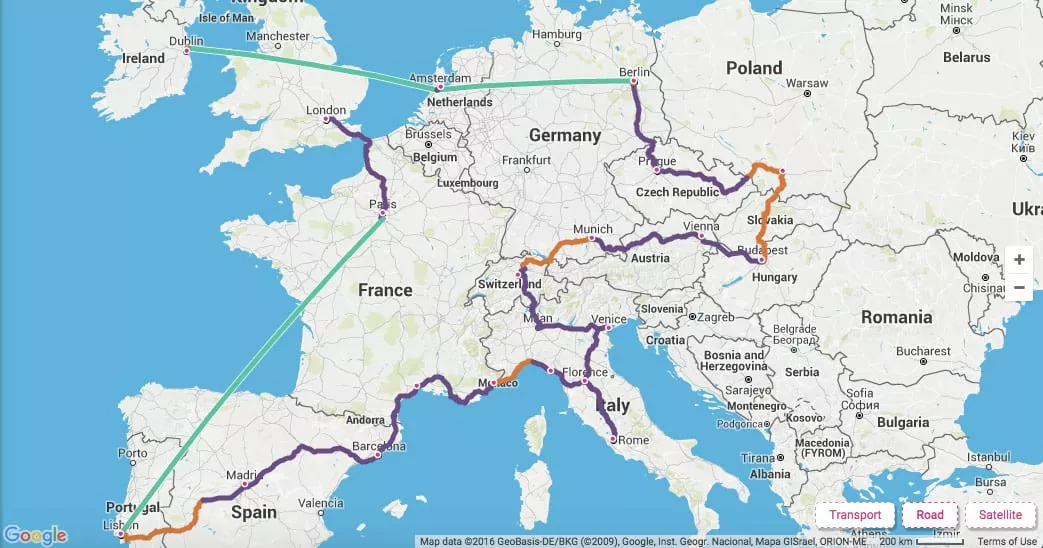
This is it… the Best of Europe Mega Trip itinerary that is designed to give you a taste of the best Europe has to offer. This itinerary covers 18+ cities throughout Europe and will take a minimum of 60 days but could be extended to 75+ days if you travel a little slower. I’d err on the side of traveling slower; this is a two-month trip, so there is a good chance you’ll burn out if you’re not careful.
Of course, no itinerary is perfect, and there is never enough time to see everything, but this itinerary will give you a great foundation to pretty much see all the highlights. We tried to keep the travel distances fairly short in most cases, so you won’t be spending all your time on a plane or a train.
Note: I used Omio to map my course and to get an idea of the travel times. Omio also shows multiple travel options (trains, planes, buses, driving, etc.) and prices. Check out my Guide To Using Rail Passes in Europe to learn more.
Ok, let’s get on with it…
Best of Europe Travel Itinerary
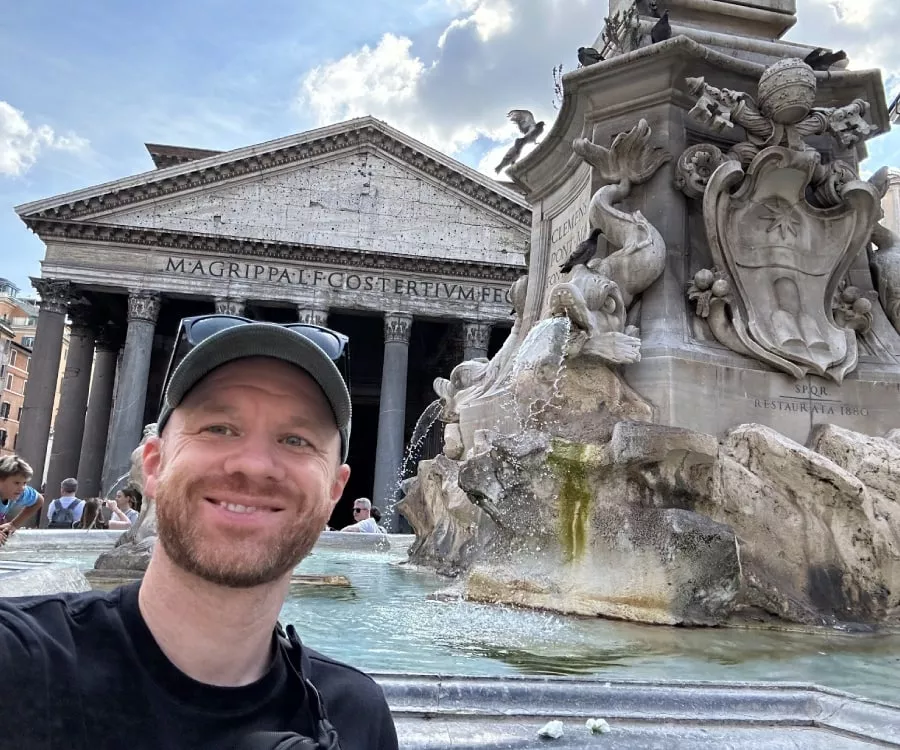
London – Approx. 4+ days
London is a great introduction to Europe because it’s a perfect mix of foreign and familiar — plus, London is a huge airline hub, so it’s one of the cheaper places to fly into.
London also has loads of things to see and do, so you’re guaranteed to keep busy.
Paris – Approx. 4+ days
From London, I suggest taking the Eurostar train to Paris, but book your train early because tickets get really expensive if you wait until the last minute. The train journey takes a little over 2 hours.
There are also plenty of budget flights, but then you have to deal with all the annoyance of flying. The flight takes a little over an hour, but you still have to get to/from the airports, which will add at least an extra hour.
Note: Add a few days to your time in Paris if you want to venture out of the city to experience a few of the many day trip options Paris has to offer.
Lisbon – Approx. 2-3 days
As much as we love trains, we suggest booking a cheap flight from Paris to Lisbon as it will save you a lot of time (don’t worry, you’ll use trains for most of the journey). The flight is about 2.5 hours, but you should budget about 4 hours of total travel time.
Madrid – Approx. 3 days
From Lisbon, you’ll want to take an overnight train to Madrid. The train leaves around 9:30 pm and arrives in Madrid around 8 am. Flying will take about 4 hours when you factor in all travel time.
Barcelona – Approx. 3-5 days
Take one of the nearly hourly trains from Madrid to Barcelona — the journey will take about 2.5 hours.
If you plan on partying hard in Barcelona, you may want to budget for an extra day to recover on the beach.
Nice – Approx. 2-3 days
You can either fly or take the train from Barcelona to Nice. Flights will take just under 4 hours and the train will take almost 9 hours. If you have the time, you can break up the long train ride by stopping in Montpellier, France for a day.
Cinque Terre, Italy – Approx. 2-4 days (+1 full travel day)
Take the 6-hour train ride from Nice, France to Cinque Terre. Cinque Terre is a string of five centuries-old seaside villages situated on the rugged Italian Riviera coastline. If you just want to see the views and do minimal hiking, you can get by staying around two nights — there’s a train that runs between all five towns.
If you want to hike from town to town at a relaxed pace, you might consider staying around three-four nights.
Florence + Tuscany – Approx. 2+2 days
Hop the train (3 hours) to Florence, which is the capital of Italy’s Tuscany region. Spend about two nights exploring the city, but be sure to spend a few days relaxing in Tuscany’s gorgeous countryside.
Rome – Approx. 3+ days
From Florence to Rome, it’s a quick 1.5-hour train ride or about a 3.5 to 4-hour bus ride. Rome is another one of those “must-see” cities that many people love. I’d spend at least three full days in Rome, but seeing it in five days might be more enjoyable.
Venice – Approx. 2 days
The train from Rome to Venice is about 4 hours. Most people see Venice as a day trip, but it’s probably better to actually stay overnight in this beautiful city. This is because the city is absolutely jam-packed during the day — it teeters on unbearable. However, at night and in the early morning, the city is nearly empty so you’re free to explore all the little side streets in peace.
Switzerland – Approx. 2-4 days (+1 full travel day)
From Venice, head up to Switzerland to get some fresh air and stunning mountain views. If you’re into outdoor adventure, then check out Interlaken. Lucerne is a great quintessential Swiss city. Zermatt is a good option if you want to be in the mountains. There are multiple great cities and towns in Switzerland. However, Zurich and Geneva both have a reputation for being a little boring and extra expensive.
Depending on where you go, the train will take around 7-8 hours.
Munich – Approx. 3-4 days (+1 full travel day)
Depending on where you are in Switzerland, Munich is about a 6-hour train ride—both Swiss and German trains are excellent so the ride is quite nice.
There are multiple nice day trips from Munich — like the fairytale-esque Neuschwanstein Castle and the Austrian city of Salzburg (which also makes a nice place to stay for a night or two if you’d like).
Vienna – Approx. 2-3 days
Hop aboard the train for a 4-hour ride from Munich to Vienna.
Budapest – Approx. 3-4 days
The train from Vienna to Budapest (aka, “The Paris of the East”) is around 2.5 hours. We’d recommend staying at least three nights, especially if you like to party.
Kraków – Approx. 2-3 days
Take an overnight train from Budapest to Kraków and you’ll arrive around 8:35 am.
Prague – Approx. 3-4 days
Take another overnight train from Kraków to Prague (which arrives around 6:30 am).
Berlin – Approx. 4+ days
From Prague, Berlin is about a 5-hour train ride. You may want to add an extra day or two if you’re big into all-night dance clubs because Berlin is home to the best nightlife in the world.
Amsterdam – Approx. 2-3 days
Amsterdam is about a 4-hour flight from Berlin (or a 7-hour train ride).
If you’d like, Amsterdam is a good place to end the trip because the airport is a major international hub. If you want to see a little more of Europe, another option is to continue your trip to Dublin to spend a few days traveling around Ireland. The flight to Dublin is about 4.5 hours. Another option is to fly up to Scandinavia to visit Stockholm, Oslo, and Copenhagen.
Total Trip Length 57 days – 75+ days
Doing this itinerary in 57 days is doable, but it will feel a little rushed — you definitely shouldn’t try this particular trip in fewer than that many days. Pushing it closer to 75 days or longer will give you a little more breathing room, and it will let you spend a little extra time in major cities before moving on.
You’re also well under the 90-day limit that you can stay in the Schengen area, so you won’t have to worry about visas.
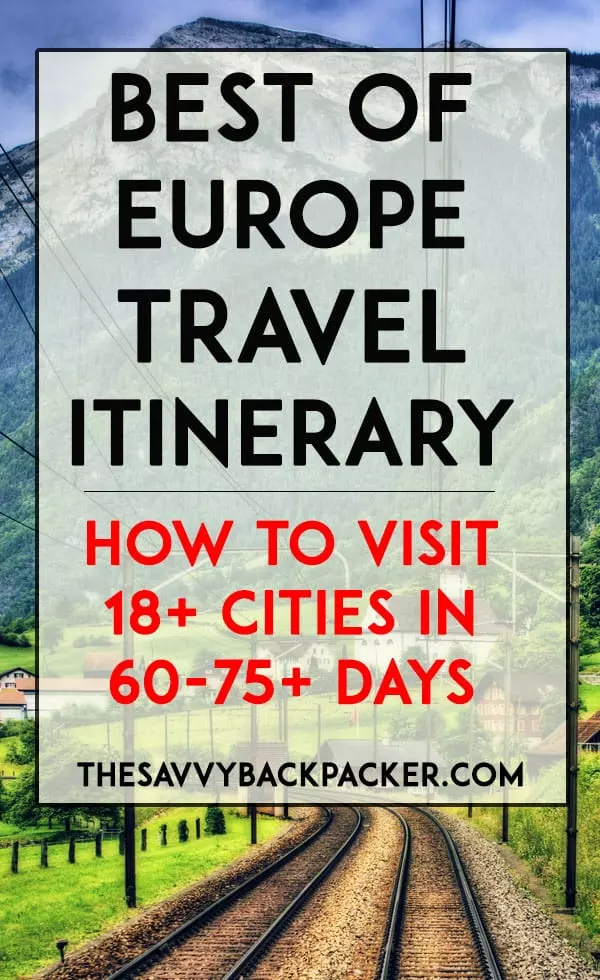
And, of course, you can always tweak this itinerary to add/subtract destinations from your trip.
- Recent Posts
- New York Pass Review | Is It A Good Value or Waste of Money? - May 20, 2024
- Paris Pass Review — A Good Value or Waste of Money? - May 13, 2024
- The Best Travel Backpacks | In-Depth Buyer’s Guide & Backpack Reviews - April 28, 2024

No Funny Business
The Savvy Backpacker is reader-supported. That means when you buy products/services through links on the site, I may earn an affiliate commission—it doesn’t cost you anything extra and it helps support the site.
Thanks For Reading! — James
Questions? Learn more about our Strict Advertising Policy and How To Support Us .
Related Reads
Best party cities in europe | europe’s best nightlife destinations.
Let's party! Here are the best places to go wild in Europe.
The Most Visited Cities In Europe | A Guide To The Most Popular European Cities
A list of the European cities that attract the greatest number of international visitors each year.
Money & Budgeting , Trip Planning
Is Travel Insurance Worth It? Helping You Understand Travel Insurance
Everything you need to know about buying travel insurance
Europe Visa for American Citizens | ETIAS Travel Waiver Guide
Everything you need to know about the new ETIAS travel waiver for entry into the European Union.
City Guides
Choosing travel insurance, travel packing lists, budget travel newsletter.
The best budget travel tips sent straight to your inbox.
Join My Journey
Europe travel tips, advertising & privacy policies.
TheSavvyBackpacker.com is a participant in the Amazon Services LLC Associates Program, an affiliate advertising program designed to provide a means for sites to earn advertising fees by advertising and linking to amazon.com.
© 2010 - 2024 The Savvy Backpacker
Website Design by FHOKE

- Switzerland
- The Netherlands
- National Parks
- Affording Travel
- Photography
- Responsible Travel
- Worldschool
- Wanderlust Guides
- Travel Planning
- Work with Us
England , Europe , France , Greece , Iceland , Ireland , Italy , Scotland , Travel
20 one-week europe trip itinerary ideas.
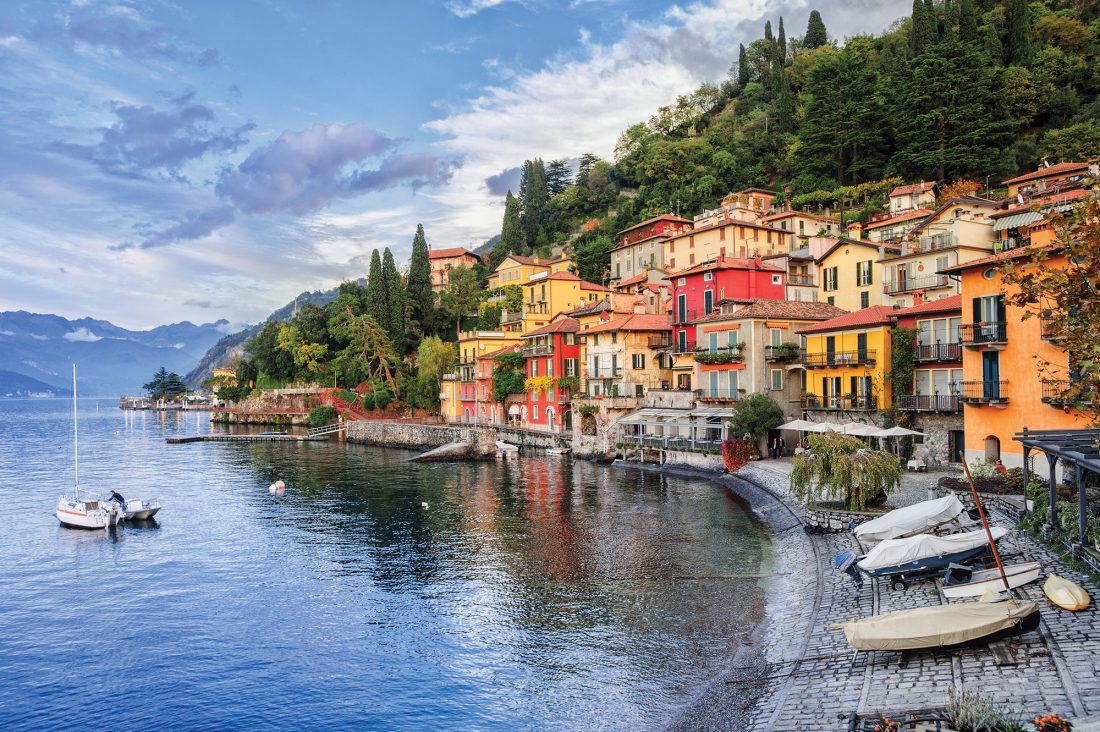
Wondering where to spend one week in Europe? These 20 ideas for your Europe trip will help you decide how to maximize your time.
This post contains affiliate links
How to Choose the Best One Week Itinerary for a Europe Trip: 20 Europe Itinerary Ideas
If you’re like most people and getting time off work or kids out of school is challenging, you may only be able to manage one week of vacation. Europe is a great destination to go for one week, simply because of the cultural diversity in such a small geographic area.
The small size, proximity, and ease of transportation between many of the countries in Europe make it a good choice for a culturally rich one week holiday. If you’ve only got one week in Europe, and really want to maximize your time, but you’re wondering where to go in Europe, here are 20 perfect one-week Europe travel itineraries.
No time to read this now? Pin it for later!

- Before You go to Europe
Europe is an amazing destination, especially if you pick any of these awesome itineraries, but before leaving there are a few things you should consider when planning your Europe trip:
- KNOW BEFORE YOU GO: Before you go to Europe, be sure you follow my 50 travel tips for Europe. You can find those here.
And the winter months are generally cold in most European countries, especially in the north.That doesn’t mean you should avoid those times, it just depends on your tolerance for crowds and your preference in weather.
- WHAT TO PACK FOR EUROPE: What you pack for Europe will highly depend on what time of year you go and where you decide to go. This packing guide for Europe will ensure you have the essentials.
- GETTING AROUND: Getting around Europe can be a little daunting, but if you do some research before you go, you’ll be just fine. Transportation in every country in Europe is a little different. I’ve linked many of my articles with helpful advice below like How to Survive Train Travel in Italy and Driving in Scotland . Some itineraries will require you to go by train, car, plane or boat. Travel around Europe doesn’t have to be scary if you learn what to do ahead of time.
If you’re renting a car, there are two companies we prefer to use: Rental Cars and Expedia Cars. We have had no issues with them and have been able to find the best prices available.
What to do in Europe for One Week: 20 European Vacation Ideas for Your Europe Trip
These are my best one week vacations in Europe. Taking a multi city European vacation can be a great way to experience several different cultures on one continent. I know that one week in Europe isn’t a lot of time, so I’ve picked cities that are either close in proximity or a quick and cheap flight between each other.
I’ve also tried to choose each Europe travel itinerary with a mix of classic sites and unique destinations. There are so many cool places to visit in Europe that are still undiscovered. Hopefully, some of these locations will be new to you and you’ll be able to discover a new European favorite!
Here's a Short Cut
1 | Amalfi Coast + Rome
2 | paris + london, 3 | ireland + iceland, 4 | heidelberg, germany + strasbourg, france, 5 | colmar, france + basel, switzerland, 6 | interlaken + lucerne, switzerland, 7 | lake como, italy + zermatt, switzerland, 8 | paris + normandy, 9 | iceland and the scottish highlands, 10 | venice and lake como, 11 | the ionian islands, greece, 12 | ireland + northern ireland, 13 | edinburgh + scottish highlands, 14 | colmar + strasbourg, 15 | loire valley + paris, 16 | london + cotswolds, 17 | cinque terre + florence, 18 | prague + vienna, 19 | budapest + bratislava, 20 | lucca + sardinia, 21 | lisbon + algarve, 22 | vienna + hallstatt + salzburg , 23 | croatia + montenegro, 24 | budapest + bratislava + vienna, practical tips for booking your trip.
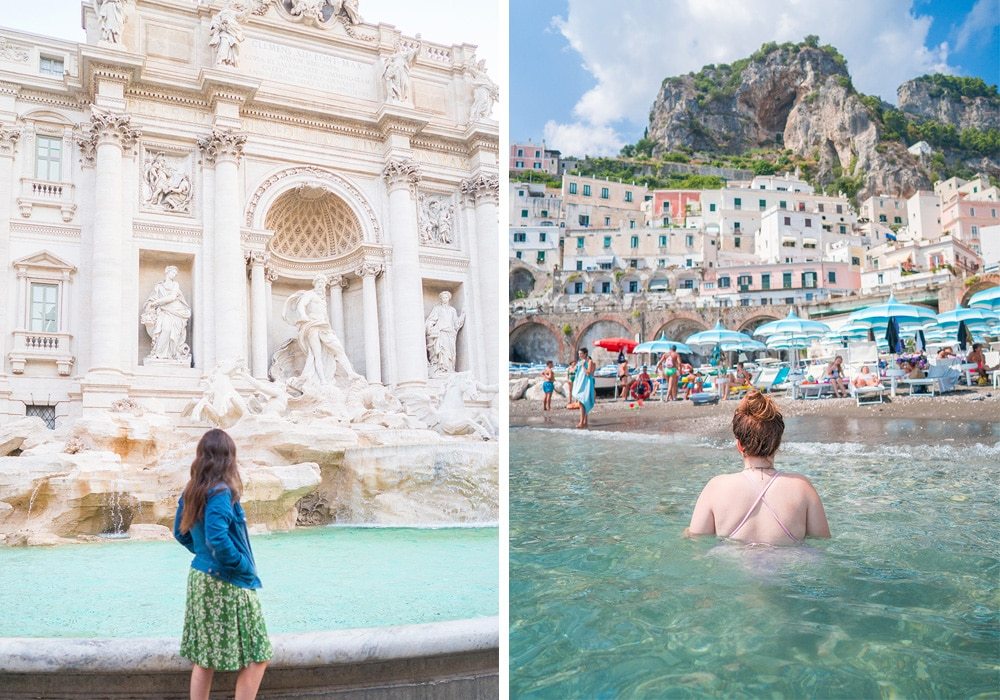
This is one of my very favorite European vacation destinations. There are hundreds of choices for stunning history and scenery when you visit Italy, but this Amalfi Coast and Rome itinerary gives you the best of both worlds. Rome is one of the top places to visit in Europe and offers history around every corner…literally, while on the Amalfi Coast you will be overwhelmed by breathtaking ocean views.
Spend several days in Rome, then head south to the Amalfi Coast via Naples and spend a few more relaxing on the beach and driving the coast. It’s one of the best European beach vacations you can take! Amalfi is also one of the most popular Europe vacation spots during the month of August, so you may want to take that into consideration when planning your trip.
Check out these other 5 amazing itineraries for Italy. Italy is one of the best countries to visit in Europe due to its size and variety of landscapes, cultures, and attractions.
GETTING THERE: Fly into Rome
GETTING BETWEEN CITIES: Getting from Rome to Amalfi is easy. Take the train from Rome to Naples, from there take the bus to Sorrento. There are many tour buses that travel along the coast, or you can rent a car and do the driving yourself.
WHERE TO STAY Rome | Amalfi RESOURCES How to Spend One Day in Rome Family Guide to Rome How to Spend 2 Days in Naples How to Survive Train Travel in Italy The Best Places to Visit in Italy How to Spend 10 Days in Italy Tips for Renting a Car in Europe i Heart Italy
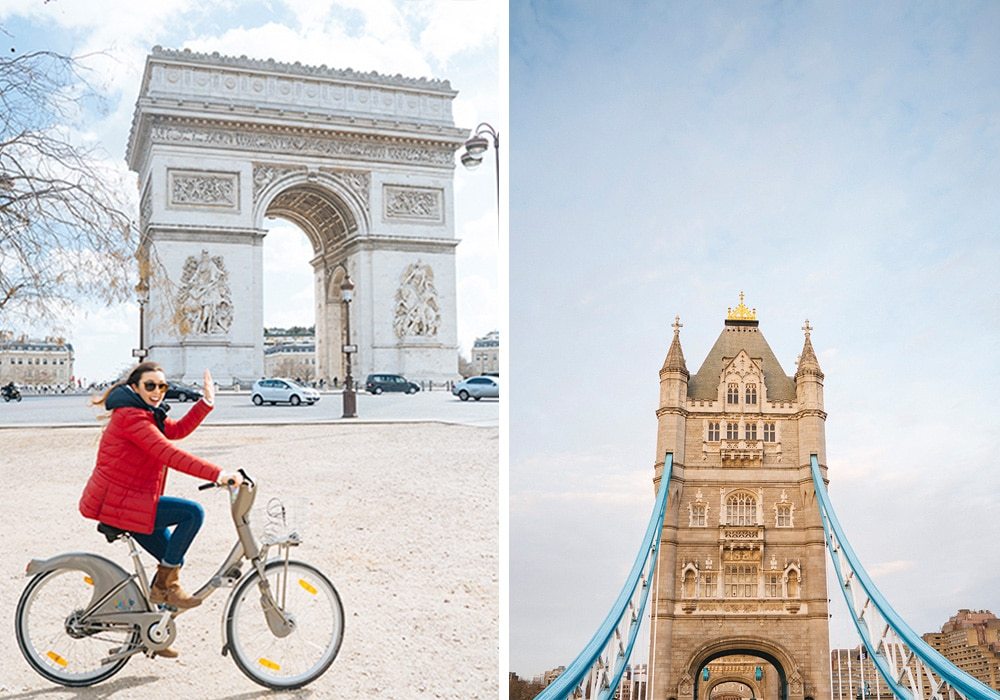
If you’re looking for a European vacation with a lot of history and class, this is it! I can’t even count the number of times that I have done the Paris/London combo. I’ve done it with kids, as a couple, as a girls’ trip, and as a field trip. No joke! And every time I go, it’s like completely different cities. You can follow completely different options for London and Paris itineraries and have an amazing time no matter what you choose. In my opinion, these are two of the best cities to visit in Europe as they offer a huge amount of culture, food, and entertainment bang for your buck!
When I plan our family trip to Europe each year, I make sure to always include both Paris and London. These are two of my favorite places in all of Europe. They are popular for good reason. Both Paris and London are so vast and diverse that you can have a new experience each time you visit. The best part about visiting these two cities is that they are very easy to travel between with the help of the Eurostar. It’s a quick journey from the heart of one city to the next that requires no airports, no flying, and no hassle. Note: You will need a passport or visa to travel between England and France and you will need to go through customs before boarding the Eurostar.
I’ve created an easy-to-use day-by-day itinerary for Paris and London so that you can show up and enjoy your trip.
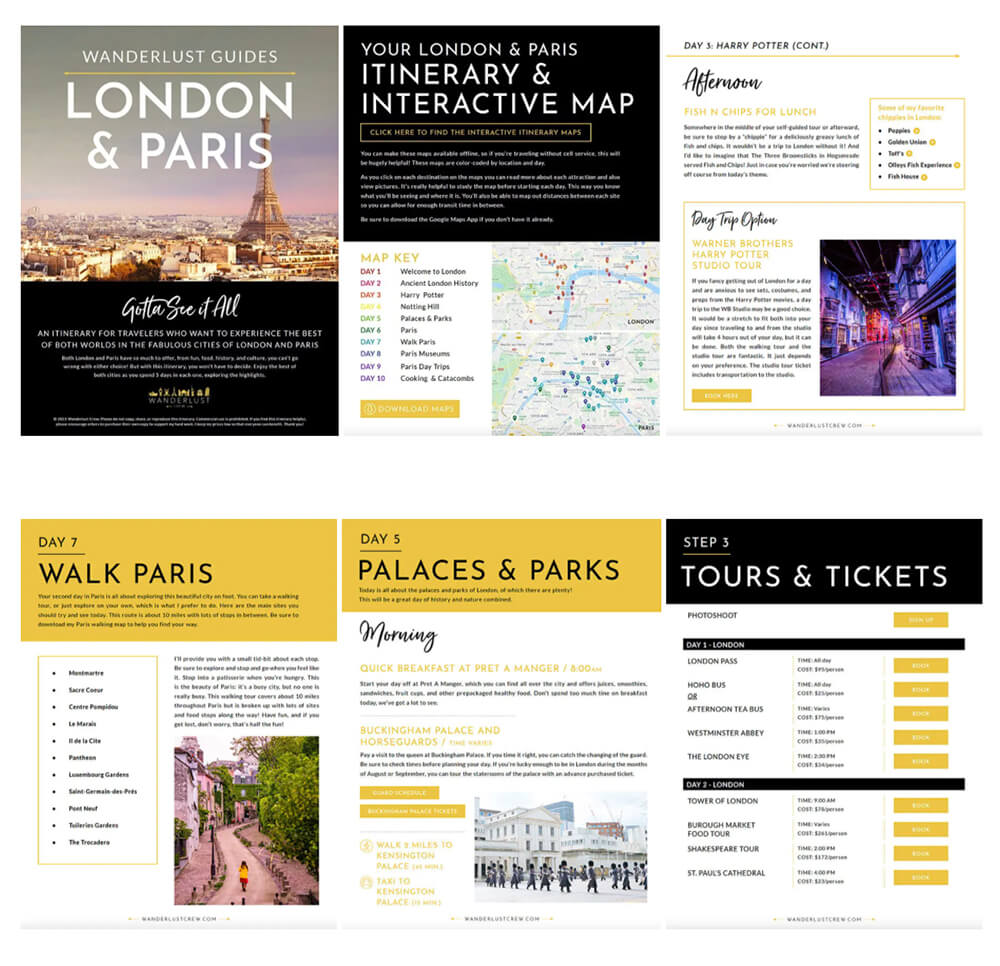
GETTING THERE: Fly into London or Paris GETTING BETWEEN CITIES: Take the Eurostar
WHERE TO STAY Paris | London
RESOURCES Paris Walking Guide Paris with Kids Foods You Must Try in Paris Paris Neighborhood Guide How to Use the Paris Bike System London Travel Guide Perfect London Itinerary London with Kids Christmas in London Paddington’s Guide to London How to Use the Paris Bike System

If you’re looking for a European vacation with wild nature and rural beauty, this option is a winner. While both of these spectacular islands really deserve their own week (or weeks really), a trip combining the two is possible, thanks to affordable flights between Iceland and Ireland. A good route would be Reykjavik and the Golden Circle, combined with the west of Ireland including Killarney, the Ring of Kerry, and the Cliffs of Moher. These countries are some of the best places to go in Europe if you love majestic natural beauty.
GETTING THERE: Fly into Iceland as its one of the cheapest ways to get to Europe. GETTING BETWEN COUNTRIES: From Iceland , take a quick flight to Ireland. Dublin , Belfast , Cork, or Shannon Airports are usually where you’ll find the best deals.
WHERE TO STAY Ireland | Iceland
RESOURCES Iceland on a Budget Bucket List Things to do in Iceland Iconic Things to do in Dublin Day Trips from Dublin What to do in Killarney Perfect Ireland Itinerary Ireland with Kids Ireland Packing List
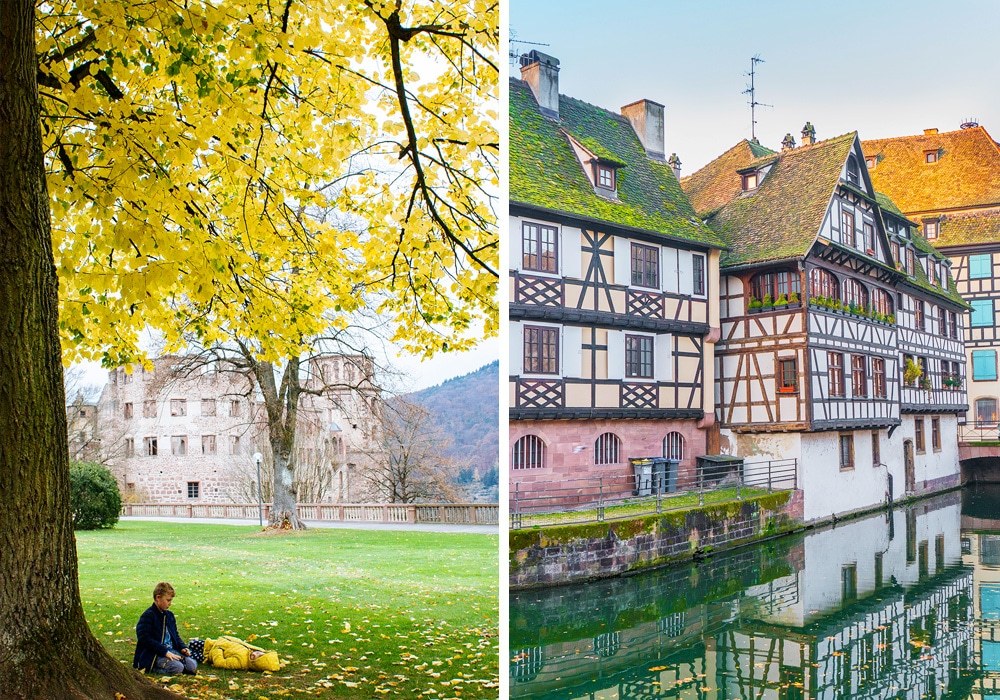
This one-week European itinerary includes two of my favorite cities in Europe! Heidelberg, Germany, known for its ancient castle and walkable downtown is a perfect companion to Strasbourg, France only an hour and a half away, in the Alsace region of France, known for its impressive cathedral and half-timber houses. These towns are particularly spectacular during the Christmas season and some of the best places to spend Christmas in Europe. This will be the best Europe itinerary for those looking to spend time in provincial looking towns!
GETTING THERE: Fly into Frankfurt, Germany GETTING BETWEEN COUNTRIES: Drive for 1.5 hours or take the train for 1.5 hours.
WHERE TO STAY Heidelberg | Strasbourg
RESOURCES Best European Christmas Markets European Christmas Market Treats What to do in Strasbourg What to do in Heidelberg, Germany What to do in Strasbourg, France
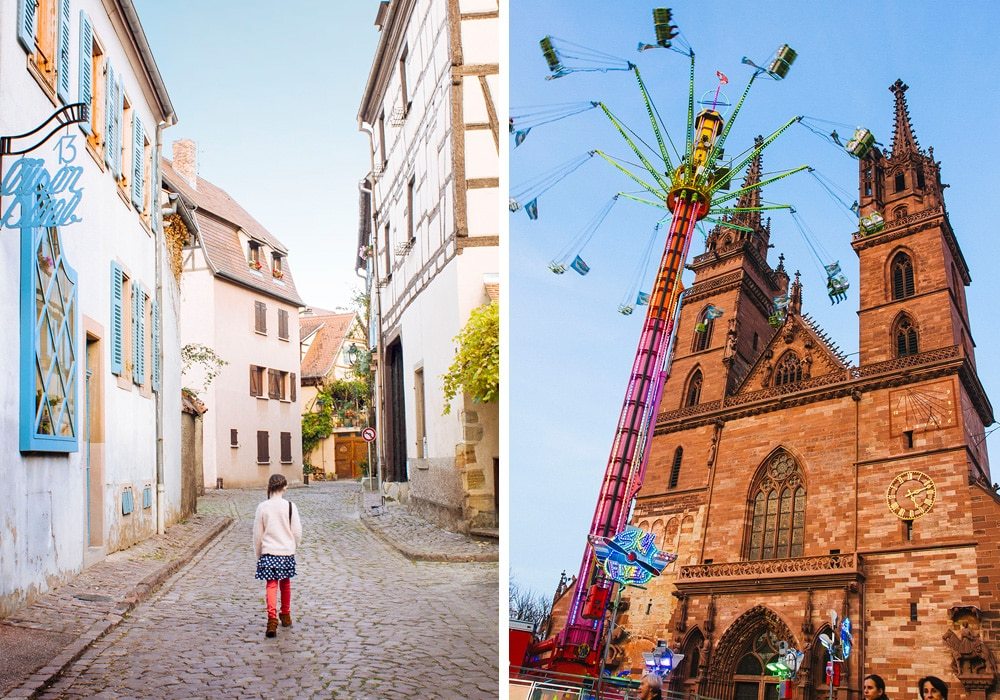
If you want to spend your Europen vacation wandering charming streets and feeling like you’re in a fairytale, this is it. Basel, Switzerland holds a special place in my heart and is often an overlooked town. Only a quick 45-minute train ride from the popular and iconic Colmar, France, Basel offers a unique culture that only a town on the border of three countries can. Basel is especially fun during Herbstmesse, the local Autumn Fair when the city literally turns into a fair! Combine these two beautiful cities for a one-of-a-kind holiday.
GETTING THERE: Fly into Basel or Zurich GETTING BETWEEN CITIES: Drive 45 minutes or Train 30 minutes
WHERE TO STAY Colmar | Basel
RESOURCES What to do in Basel Guide to Colmar, France
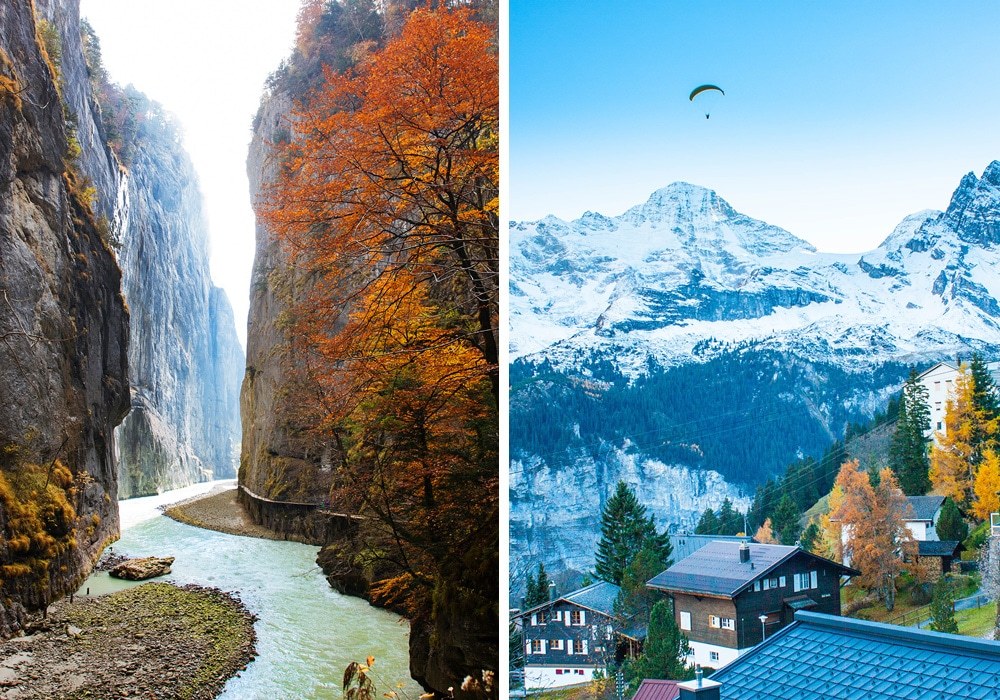
No European vacation list would be complete without including the unimaginable beauty of the Swiss Alps. Switzerland is a wonderland of natural beauty for the outdoor enthusiast or even anyone who has a remote interest in pretty scenery! It’s one of the best countries in Europe for those who love outdoor activity and natural beauty. It’s just jaw-droppingly gorgeous.
For such a small country, there is so much to see and with two of Switzerland most breathtaking areas just a few hours from each other, it’s worth visiting both of them. These areas offer pristine lakes, ancient gorges, colossal mountains, and a vast array of cultural activities.
GETTING THERE: Fly into Zurich, Switzerland GETTING BETWEEN CITIES: Train to Lucerne, Train to Interlaken
WHERE TO STAY Interlaken | Lucerne
RESOURCES Switzerland Itinerary Swiss Food Guide Switzerland Packing List 24 Hours in Zurich What to do in Interlaken What to do in Lucerne
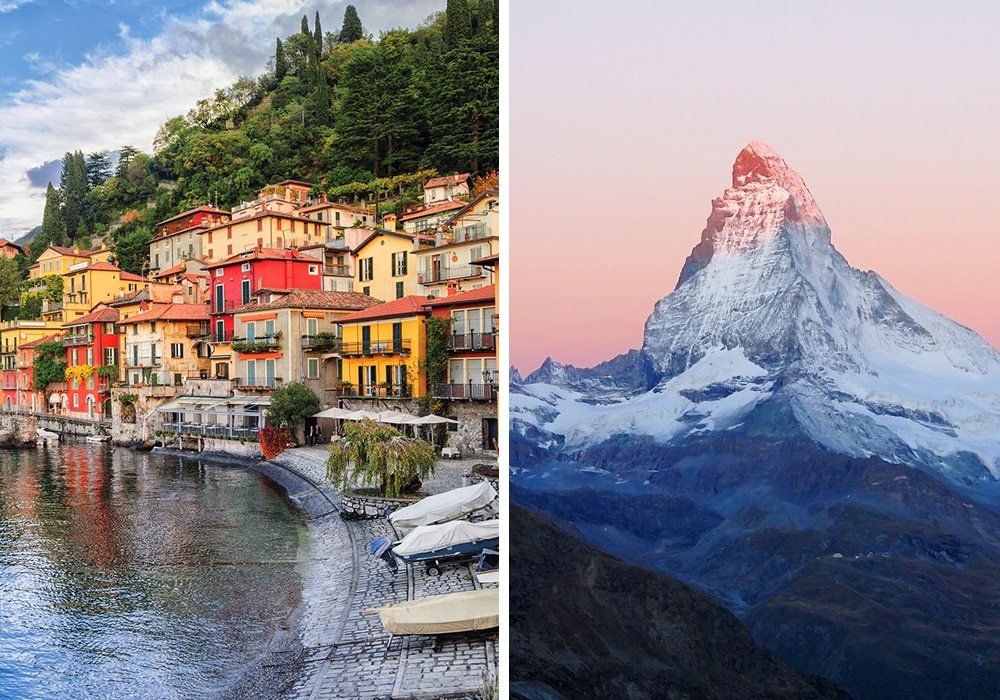
If you’d like your Europe trip to have a good mix of beach and mountain time, this is the perfect combination. Lake Como is probably one of my top favorite places on the planet. It is totally magical and peaceful, and I’ve written about it multiple times and helped friends and family plan trips there. Don’t skip Lake Como on your next trip to Italy. One of my favorite parts of Lake Como is its proximity to the Swiss border. You can actually hike over the borer and into Switzerland! But if you’d rather not hike, hop in the car and take a trip to Zermatt, Switzerland, home of the famous towering mountain, Matterhorn.
GETTING THERE: Fly into Milan, Italy GETTING BETWEEN CITIES: Drive 3 hours to Zermatt or take a 4 hour Train ride from Milan
WHERE TO STAY Lake Como | Zermatt
RESOURCES Guide to Lake Como Boating Lake Como Guide to Zermatt Best Places to Visit in Italy How to Spend 10 Days in Italy i Heart Italy
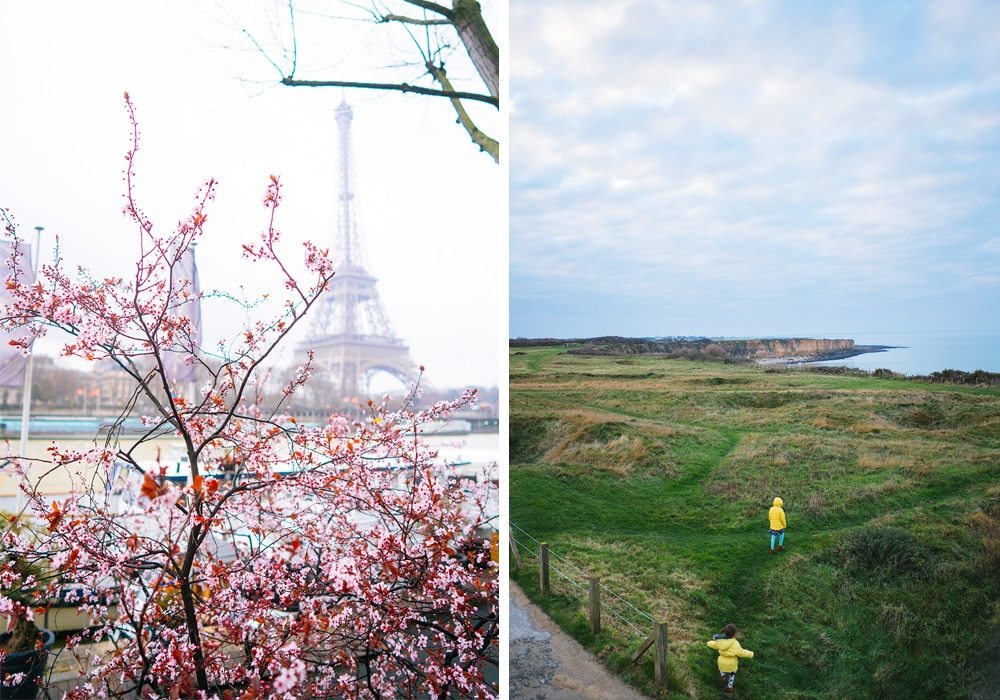
This is a European vacation full of charm, but also a healthy dose of history and reality. A Paris-Normandy itinerary of Europe combines all the glamor and romance of the city of light with the charm, history, and beauty of Northern France. Spend several days in Paris, taking several day trips, including the impressive floating Mont Saint Michel. This area is one of the best places to visit in Europe for history lovers.
GETTING THERE: Fly into Paris GETTING BETWEEN CITIES: Drive 3 hours
WHERE TO STAY Paris | Normandy
RESOURCES Paris Itinerary Paris Walking Guide Paris with Kids Foods You Must Try in Paris Paris Neighbgorhood Guide Guide to Normandy Guide to Visiting Mont Saint Michel France with Kids
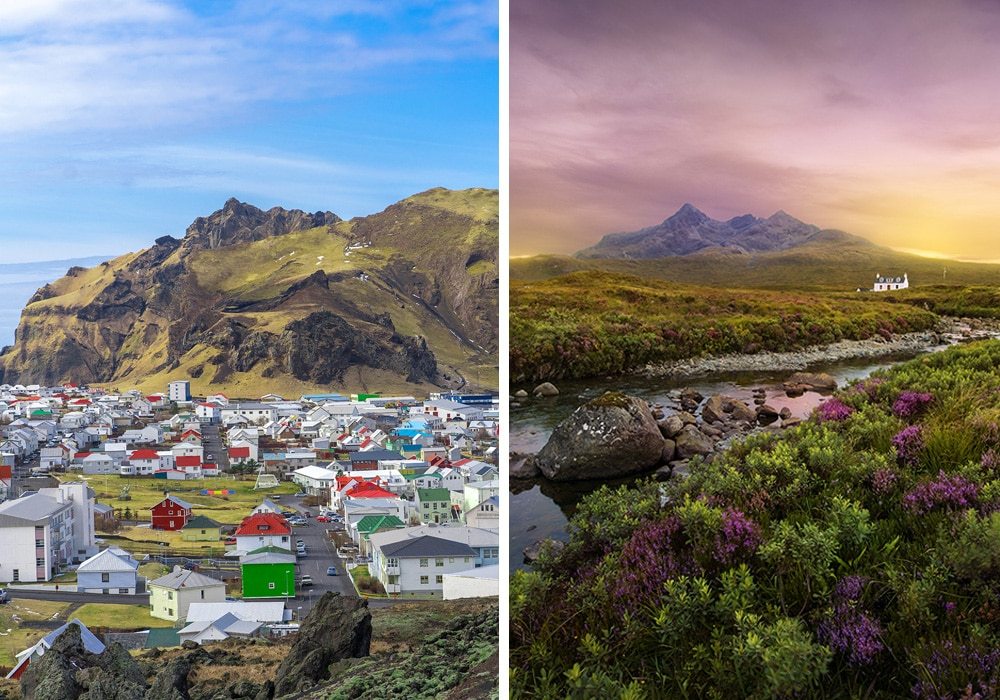
Two naturally and culturally beautiful countries are just a short and cheap flight apart and a great combination for a one-week European itinerary, although both countries could take weeks to explore on their own. Spend a few days in Iceland, then take a cheap hopper flight and explore the mystical highlands of Scotland.
GETTING THERE: Fly into Reykjavik GETTING BETWEEN COUNTRIES: Fly into Edinburgh, Glasgow, Inverness, or Aberdeen
WHERE TO STAY Iceland | Scotland
RESOURCES Iceland on a Budget Scotland Itinerary What to do in Inverness What to do on the Isle of Skye Scotland Packing List
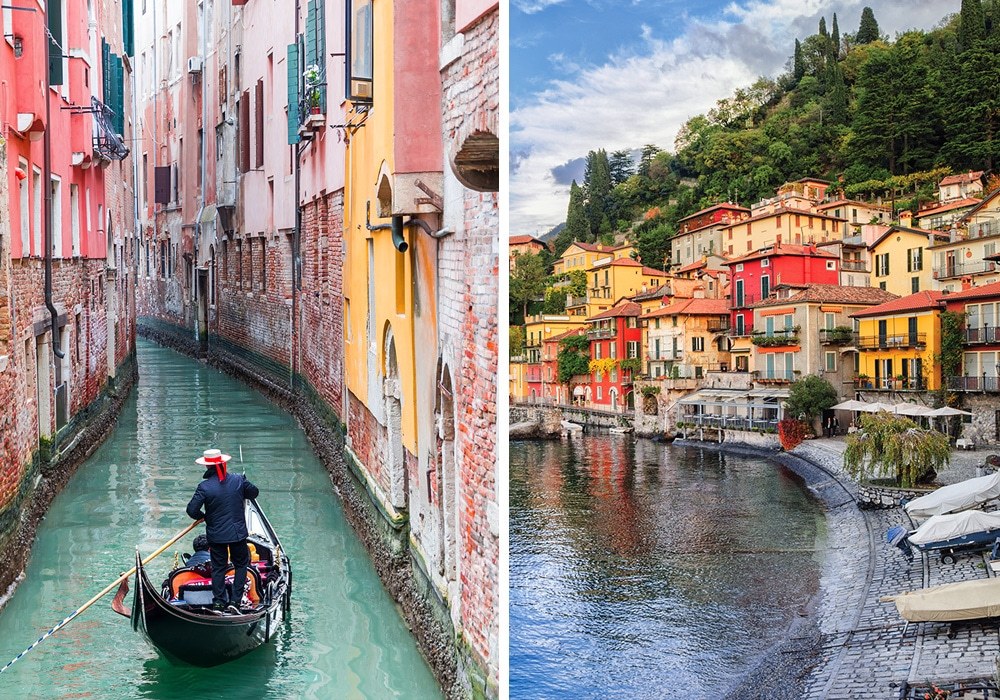
Some of my favorite Italian destinations, Venice and Lake Como, both built on water, are ideal locations for aquatic enthusiasts. Taking a ride on a gondola in Venice is one of the best things to do in Europe! Take the Vaporetto (water bus) in Venice, then take a short drive or train ride to Lake Como and enjoy boating and relaxing on the beach in one of the adorable villages lining the lake.
GETTING THERE: Fly into Venice or Milan GETTING BETWEEN CITIES: 3.5 hours by car or 10 hours by train
WHERE TO STAY Venice | Lake Como
RESOURCES Guide to Lake Como Boating Lake Como Surviving Train Travel in Italy Guide to Venice Best Places to Visit in Italy How to Spend 10 Days in Italy i Heart Italy
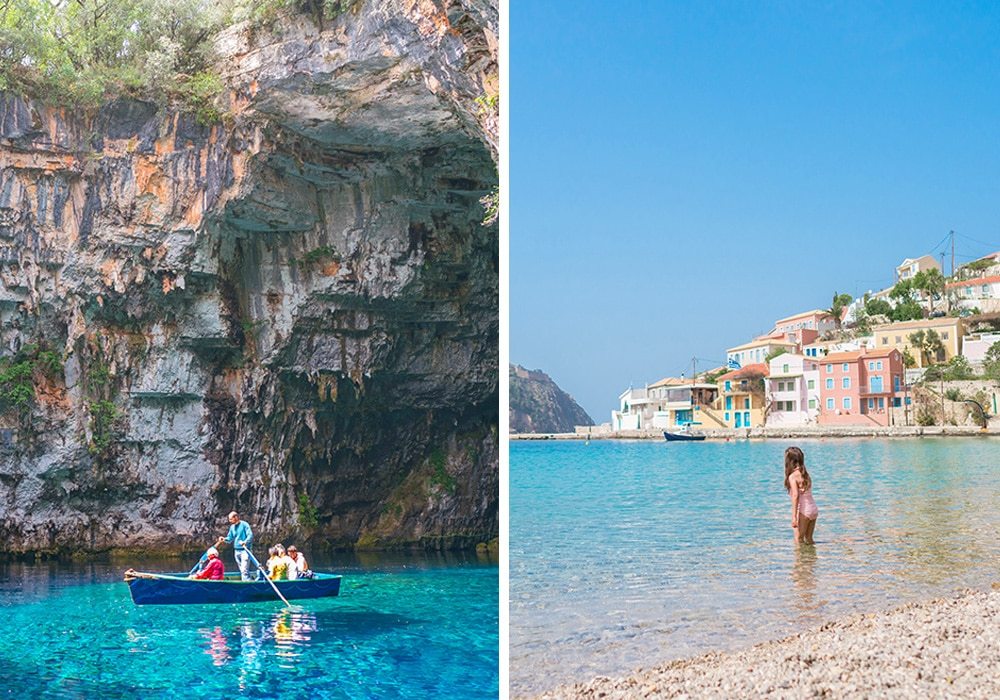
If you’re interested in cheap Europe trips, the gorgeous Ionian islands of Greece are one of the best-kept secrets in Europe. Naturally and culturally diverse, affordable, and downright beautiful, Kefalonia and Corfu make great choices for one week in Europe.
Explore ancient ruins, relax on pristine beaches with locals, and dine, affordably, like a Greek god. If you’re travelling Europe on a budget, this is a great option and Greece is one of the best places to visit in Europe in summer if you’re looking for gorgeous beaches at affordable prices.
GETTING THERE: Fly into Kefalonia from London on Ryanair GETTING BETWEEN ISLANDS: Take a ferry between the Ionian Islands from Greek Ferries
WHERE TO STAY Kefalonia | Corfu
RESOURCES Guide to Kefalonia Greece The Ionian Islands The Best Beaches on Corfu What to Wear in Greece Guide to Athens

Two countries on one island? Yep! Take a visit to Ireland AND Northern Ireland. Two countries that are very similar, but also very different. Explore the entire island with this perfect itinerary.
GETTING THERE: Fly into Dublin or any airport in Ireland GETTING BETWEEN COUNTRIES: Rent a Car. Driving in Ireland can be tricky and slow, but worth the views and the adventure.
WHERE TO STAY Ireland | Northern Ireland
RESOURCES The Best Places to Visit in Ireland Perfect Ireland Itinerary Ireland with Kids What to do in Killarney Scotland and Ireland Itinerary Ireland Packing List
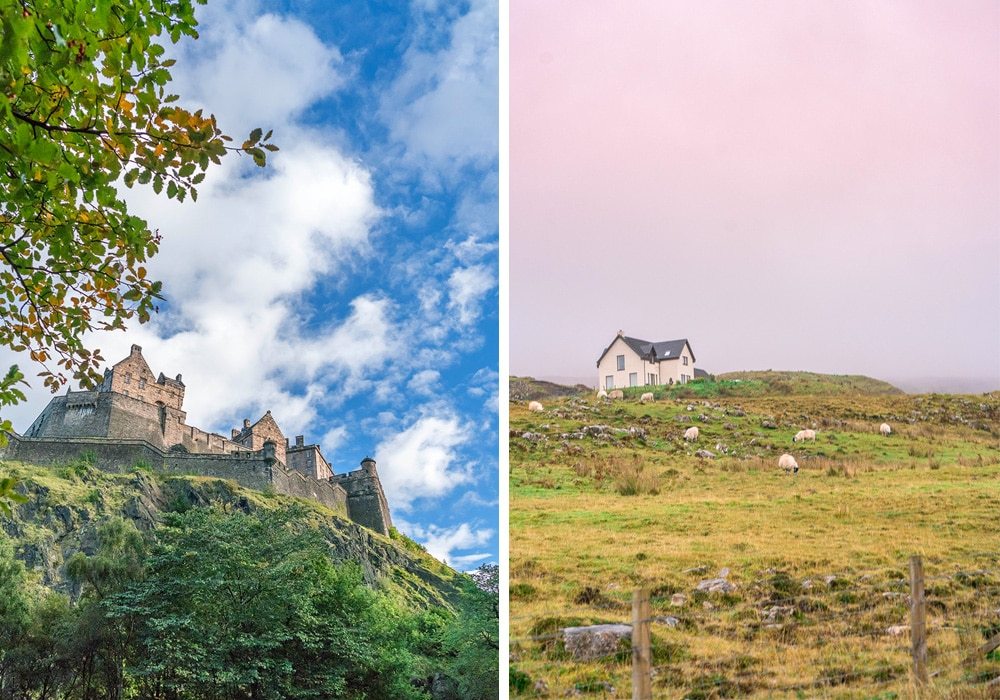
Scotland is one country that should really be given an entire week. You could definitely say that about any destination, but for a relatively small country, but it has so much to offer that you could spend years here and not see it all.
For one week in Scotland, I recommend visiting Edinburgh and the Scottish Highlands, including the Isle of Skye. Read here for an entire Scotland Itinerary, here for Edinburgh , here for Inverness and the Highlands , and here for the Isle of Skye.
GETTING THERE: Flying into Edinburgh is usually the cheapest option. GETTING BETWEN AREAS: It’s best to rent a car or hire a driver or tour company. Be sure to read my guide to driving in Scotland.
WHERE TO STAY Ediburgh | Inverness | Isle of Skye
RESOURCES Perfect Scotland Itinerary What to do in Edinburgh What to do in Inverness What to do on the Isle of Skye Scotland Packing List
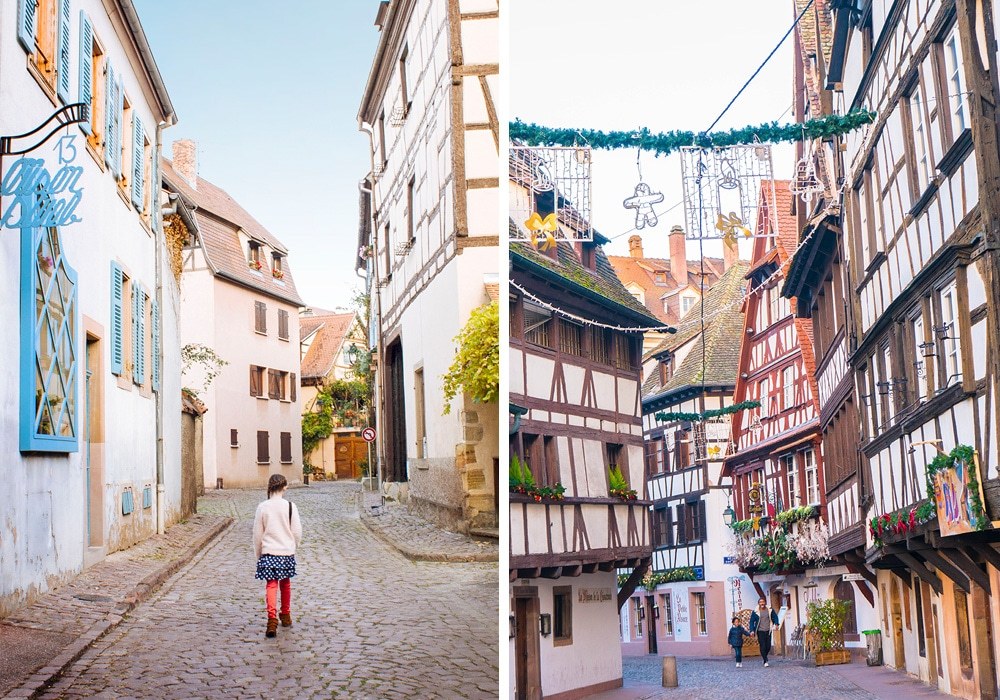
What could be more charming than a week spent in these “poor provincial towns.” Ok, so they’re definitely not poor or provincial, but you’ll feel like you’ve stepped into Belle’s hometown from Beauty and the Beast .
The ancient half-timber homes built along scenic rivers provide a feast for the eyes, while the patisseries, boulangeries, shops, and restaurants provide a feast for the tongue. Split your time between these two idyllic towns and enjoy a peaceful trip back in time.
If you visit Colmar or Strasbourg during Christmas, these towns will be even more magical! Strasbourg is known as “The Capital of Christmas” and both towns have incredible Christmas markets and decorations!
GETTING THERE: Fly into Zurich GETTING BETWEEN COUNTRIES: 30 minutes by train or 1 hour by car
WHERE TO STAY Colmar | Strasbourg
RESOURCES 24 Hours in Zurich Guide to Colmar Guide to Strasbourg The Most Magical European Christmas Markets Must-Have European Christmas Market Treats
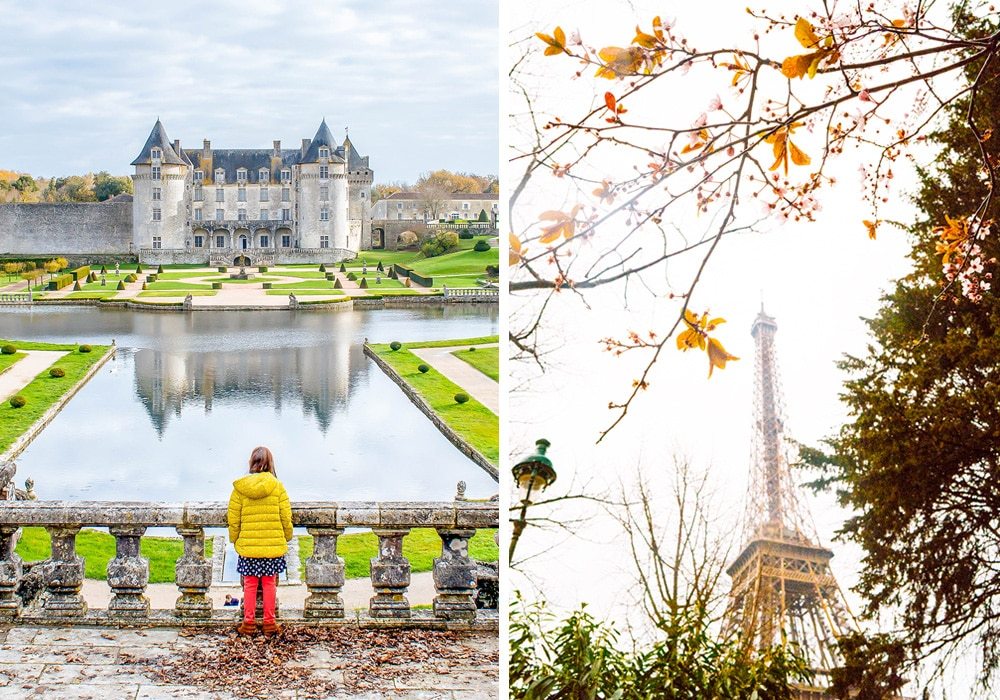
Divide your time between the ancient and modern city of light and the historic Loire Valley , home to magnificent palaces, stunning gardens, and green pastures. This one-week itinerary is the perfect balance between city and country life and will provide you with a mix of excitement, peace, and romance. It can be hard to squeeze everything you want into one week European itineraries, but this is a must!
Be sure to map out the castles and palaces you want to see along the way. Our favorite is Chenonceau ! Don’t miss it!
GETTING THERE: Fly into Paris GETTING AROUND: Rent a car and drive two hours to the Loire Valley
WHERE TO STAY Loire Valley | Paris
RESOURCES Walking Guide to Paris Paris with Kids Day Trips from Paris Foods You Must Try in Paris Guide to the Loire Valley 15 Affordable Castles You Can Stay In
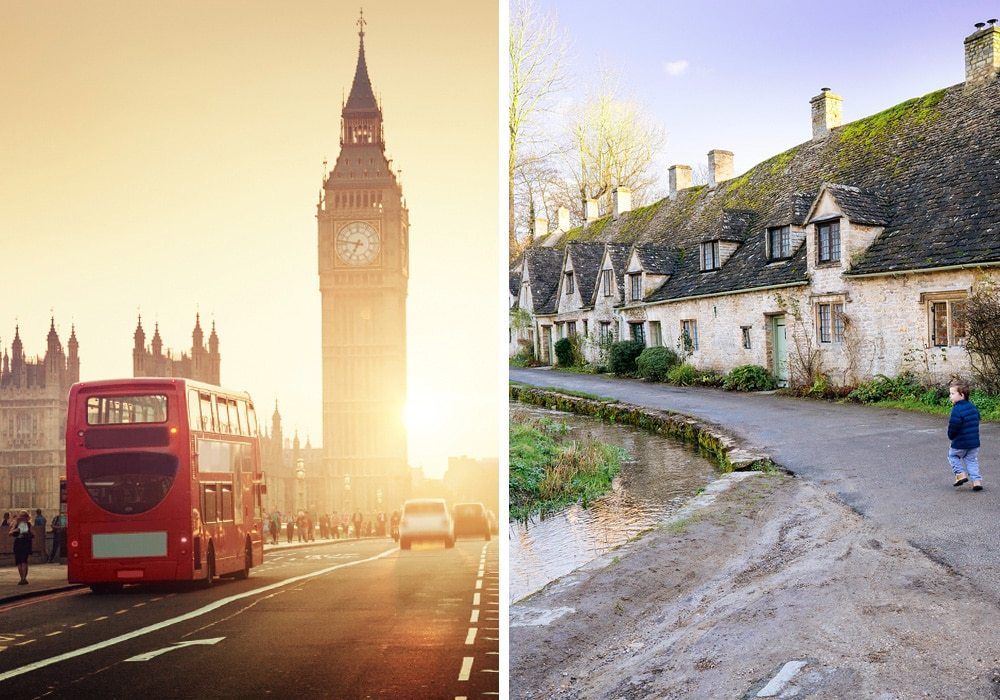
This London and Cotswolds Itinerary provides the best of both British worlds, encompassing both the hustle and bustle of one of the world’s oldest and largest cities and the peace and tranquility of the quaint cottage speckled Cotswolds.
As much as I love London (it’s my favorite city), I do get tired of the crowds and the constant noise. It is so refreshing to get into the countryside and have a change of scenery during your time in London. The Cotswolds are a fairytale-like dream trip. Be sure to grab cream tea every chance you get!
GETTING THERE: Fly into one of three London Airports GETTING AROUND: Rent a car and explore the whole Cotswolds area
WHERE TO STAY London | Cotswolds
RESOURCES London Travel Guide Complete Guide to London Perfect London Itinerary London with Kids Paddington’s Guide to London Christmas in London Guide to the Cotswolds
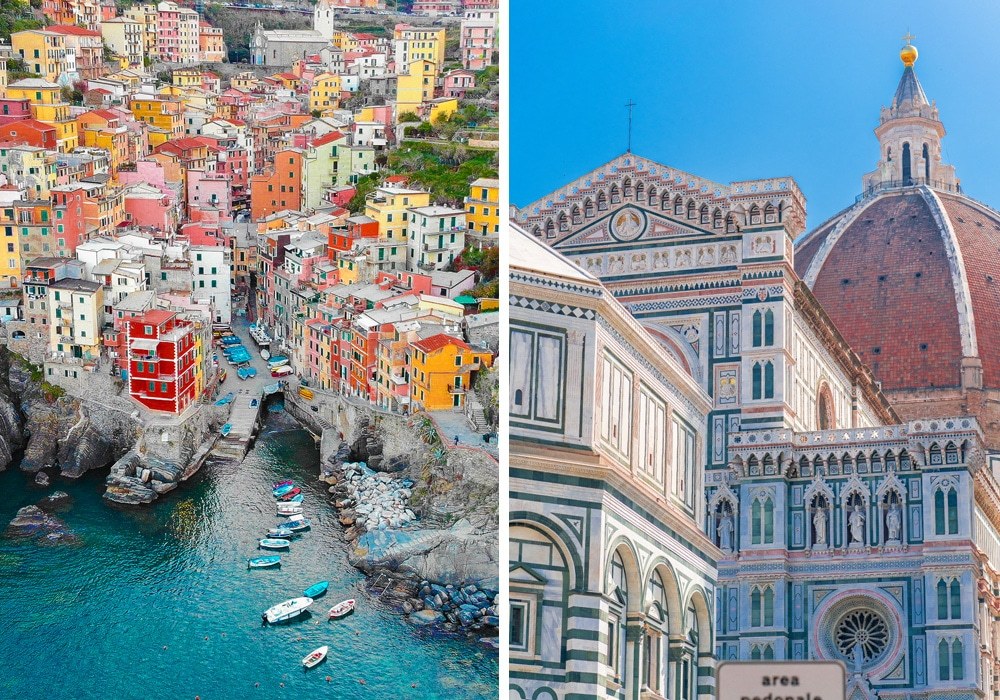
I call this itinerary the best of Northern Italy. Italy is huge and has so much to offer geographically and culturally, but one of my favorite parts of Italy is the train system. The trains in Italy allow for easy access to most major sites, but it can be slightly confusing, so be sure to read this guide to train travel in Italy before you go. Getting between Florence and Cinque Terre is simple with the right knowledge.
The great thing about this itinerary is that you will get to see a big city full of culture, history, and art, and also spend time swimming at the beach and on a boat soaking up rays in in the Liguerian Sea. Read here for Florence, here for Cinque Terre, here for Trains in Italy.
GETTING THERE: Fly into Florence GETTING BETWEEN CITIES: Two hours by train
WHERE TO STAY Cinque Terre | Florence
RESOURCES Guide to Cinque Terre Guide to Florence How to Survive Train Travel in Italy Best Places to Visit in Italy How to Spend 10 Days in Italy
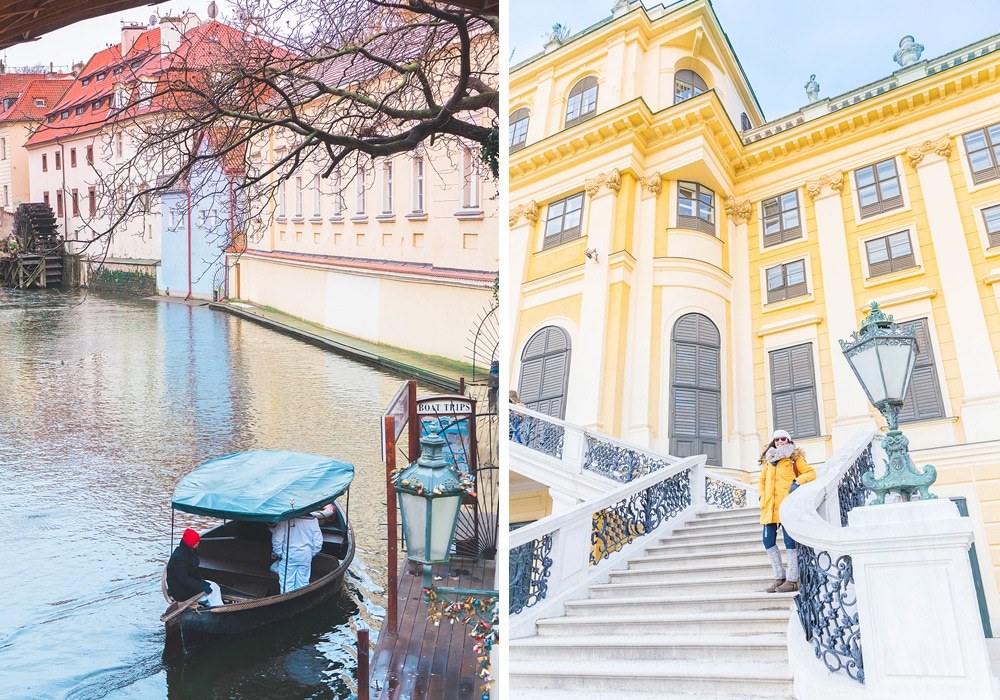
I think Prague and Vienna might be some of the most underrated cities in Europe, and they are worth dedicating an entire week to. Stunning architecture, delicious cuisine, and cultural activities abound in these cities that are just a few hours apart.
GETTING THERE: Fly into Vienna or Prague GETTING BETWEEN CITIES: 3-hour drive or 4-hour train ride
WHERE TO STAY Prague | Vienna
RESOURCES One Day in Prague What to do in Vienna
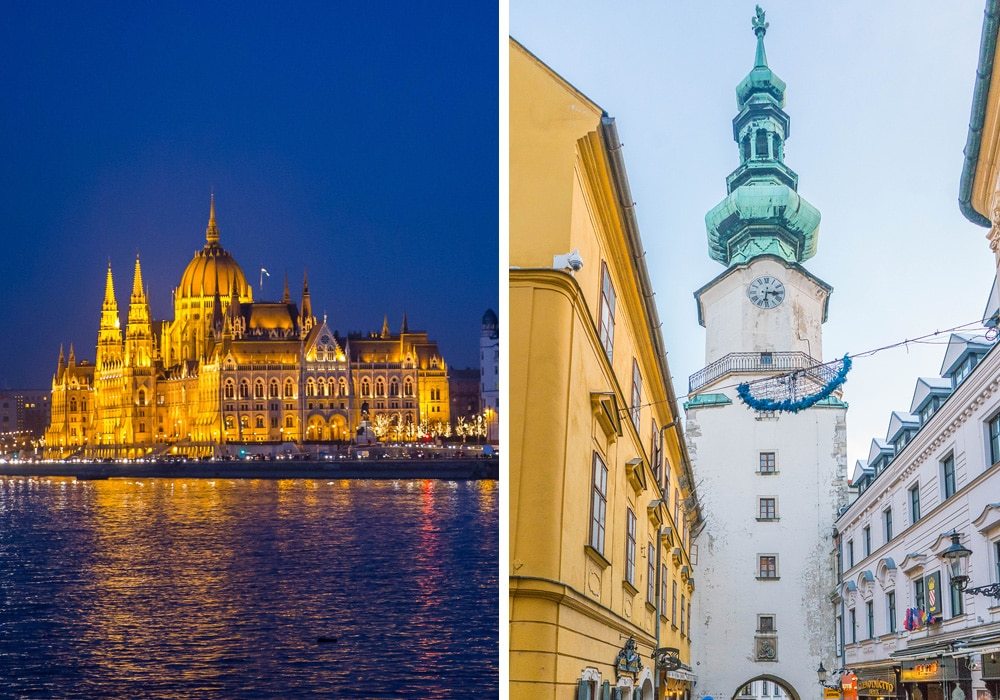
If you’re looking for cheap European vacations, the farther east you go, the cheaper it generally gets. These are two cities that had never really been on my bucket list, and to be honest, I had never even heard of Bratislava, which is in Slovakia by the way! Both cities are charming and culturally rich. They are especially festive and beautiful around Christmas time.
Bratislava is on the way between Budapest and Vienna (you can even cycle between Budapest and Vienna ) and Budapest and Prague, so if you’re thinking of doing a combination of any of those cities, it’s a great stop.
GETTING THERE: Fly into Budapest GETTING BETWEEN CITIES: 2 hours by car, 2.5 hours by train
WHERE TO STAY Budapest | Bratislava
RESOURCES What to do in Budapest European Christmas Markets What to do in Bratislava
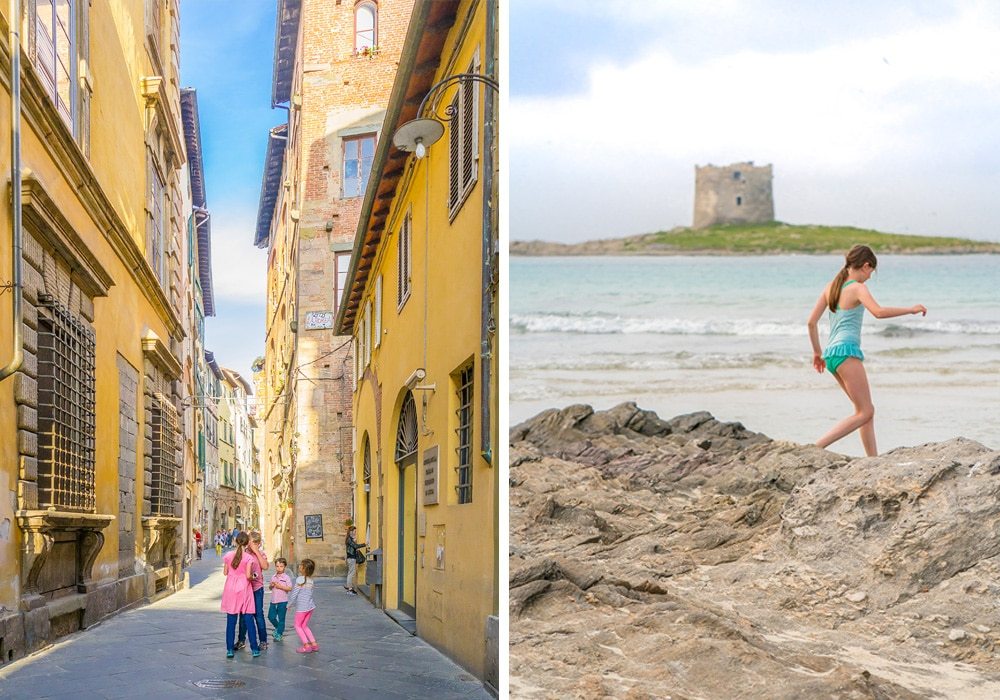
These incredible destinations in Italy are not well known, but that is part of the appeal. I would say they are a good option for a cheaper and less crowded alternative to the Florence and Cinque Terre itinerary.
Lucca is a walled city in Tuscany offering stunning architecture and culture with great family fun activities such as riding bikes along the top of the medieval wall around the city. Sardinia is a heavenly island, just a ferry ride away full of breathtaking beaches, delicious food, and friendly locals. Known as one of the five blue zones in the world- places in the world where people live longer and healthier than anywhere else on earth-Sardinia will make you feel younger and more alive just by visiting.
GETTING THERE: Fly into Rome or Florence GETTING BETWEEN DESTINATIONS: Take a Ferry from Civitavecchia to Olbia
WHERE TO STAY Lucca | Sardinia
RESOURCES One Day in Rome What to do in Lucca Sardinia Best Places to Visit in Italy How to Spend 10 Days in Italy What to Wear in Italy
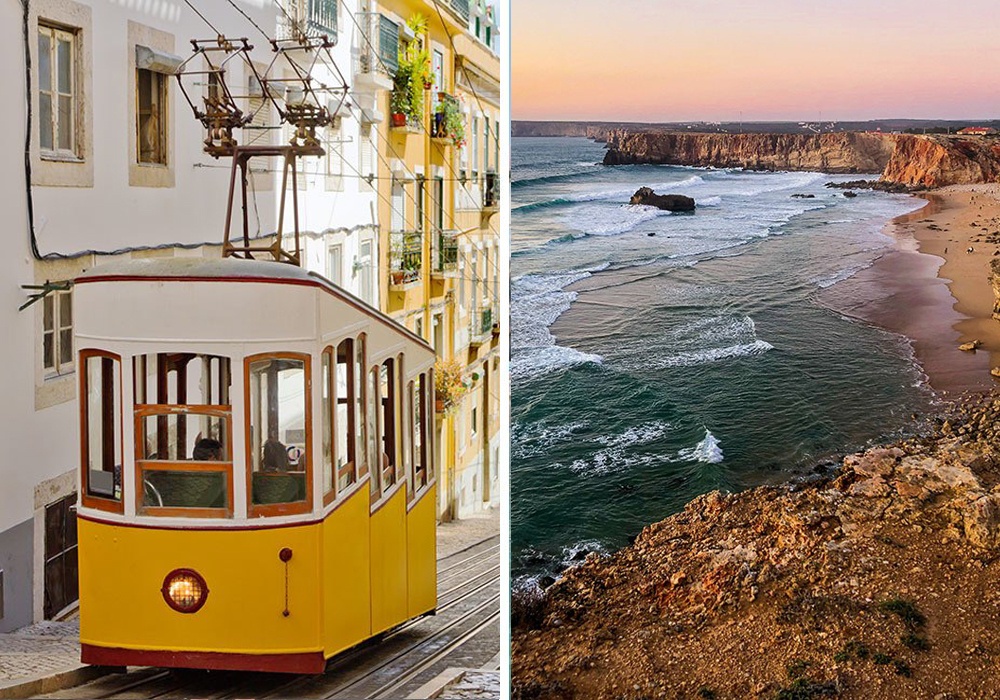
Portugal is a beautiful country full of diverse landscapes, amazing beaches, and cultural city centers. Lisbon is a stunning city and the Algarve region in the south of Portugal offers sunny beaches with world-famous surfing. There are some really cheap flights to Lisbon from the US right now and you can either drive, train, bus, or fly to the Algarve easily. As a southern European country, Portugal is a great choice for a winter destination. We were there last January and could still get in the water. There are many towns to choose from in the Algarve and they are all equally unique and beautiful.
GETTING THERE: Fly into Lisbon GETTING BETWEEN DESTINATIONS: Take a plane, car, or bus to the Algarve.
The Perfect Portugal Itinerary
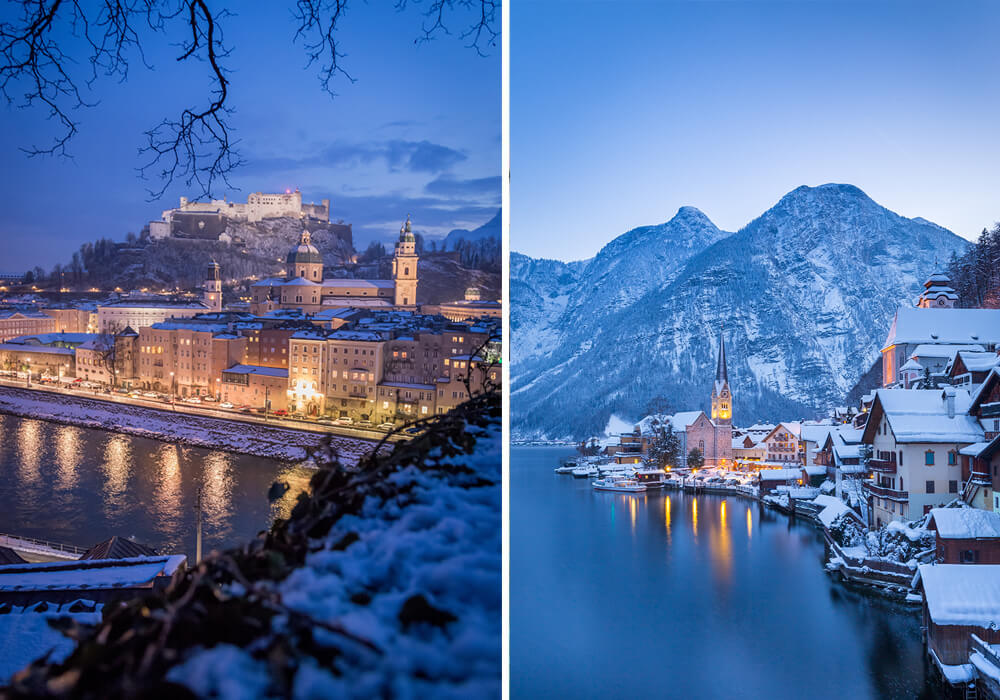
This one week in Europe spent in Austria is a dream. Combining the culture of Vienna and Salzburg with the picturesque feel of Hallstatt, it’s sure to satisfy any traveler. In my opinion, this is a great winter destination if you don’t mind the cold. Vienna and Salzburg have several amazing Christmas markets and Hallstatt is simply a dream to see in the snow!
GETTING THERE: Fly into Vienna GETTING BETWEEN DESTINATIONS: Take a train to Salzburg (2.5 hours). A great way to see Hallstatt is to take a day trip from Salzburg.
Hallstatt Day Trip
European Christmas Markets
Christmas Market Treats
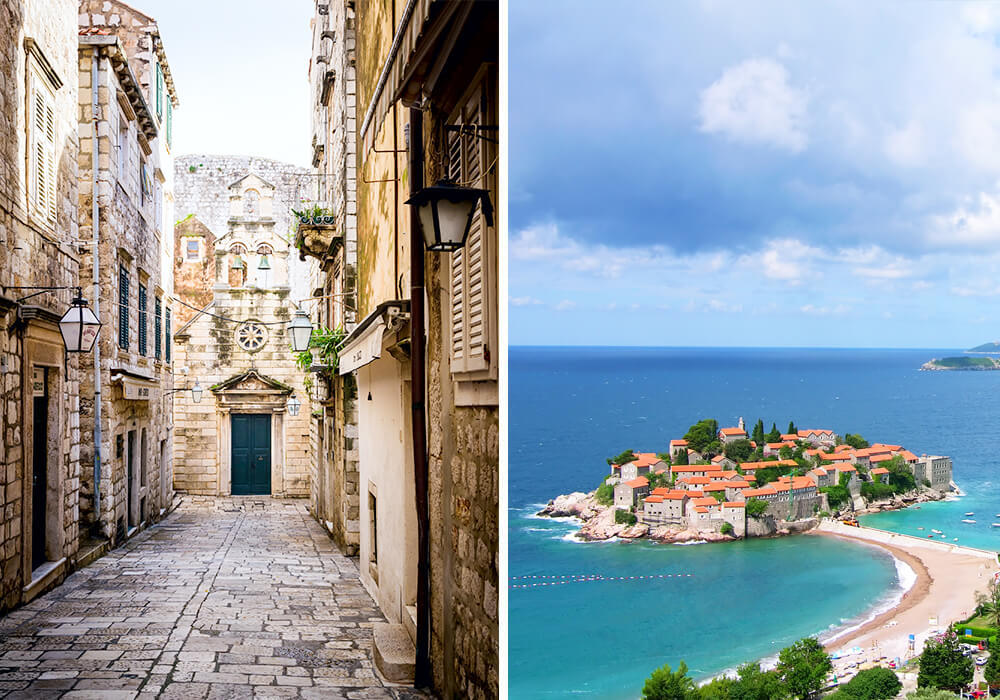
If you’re into coastal towns, walled cities, and breathtaking scenery, this combination is for you. The Dalmation Coast is absolutely stunning. The bordering country of Montenegro is really the hidden gem of Europe, offering the same draw as Croatia, but with far fewer tourists. I recommend going during shoulder season (April-May or September-October) to be able to enjoy warmer weather with fewer crowds.
GETTING THERE: Fly into Dubrovnik, Croatia GETTING BETWEEN DESTINATIONS: Take a Day Trip to Montenegro
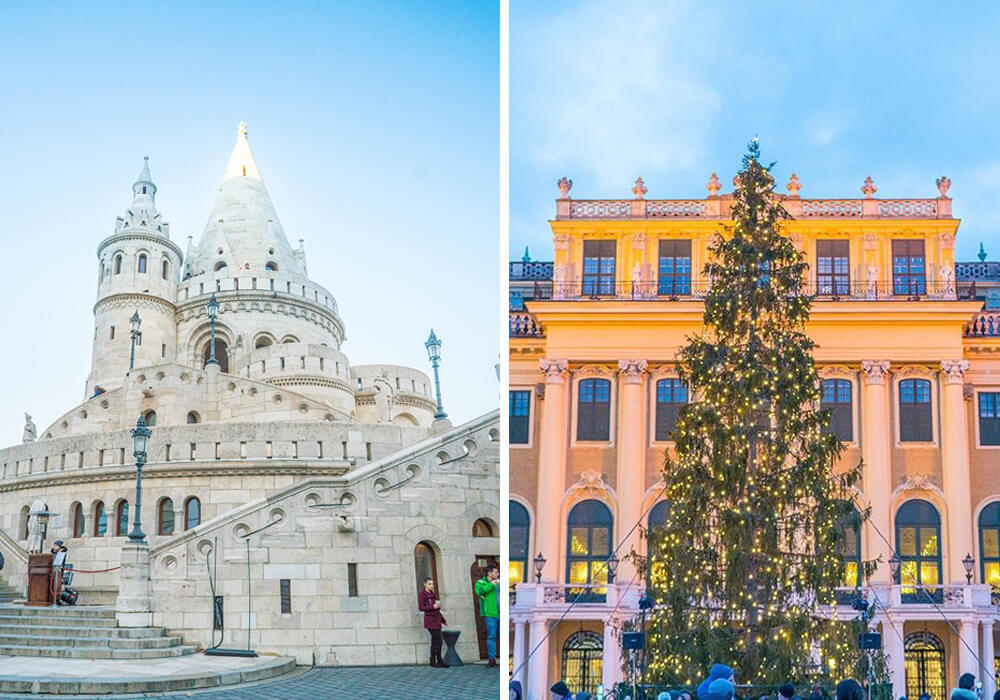
Two of the most underrated cities in Europe if you ask me, Budapest and Bratislava are both cities that offer an amazing array of culture and also incredible food. If you’re up for the cold weather, these cities all have incredible Christmas markets and stunning decorations around the holidays. These cities are also all connected by rail so you can easily navigate between them.
GETTING THERE: Fly into Vienna or Budapest GETTING BETWEEN DESTINATIONS: Take the train between each city. Bratislava would be a good day trip from Vienna.
25 | Berlin + Prague
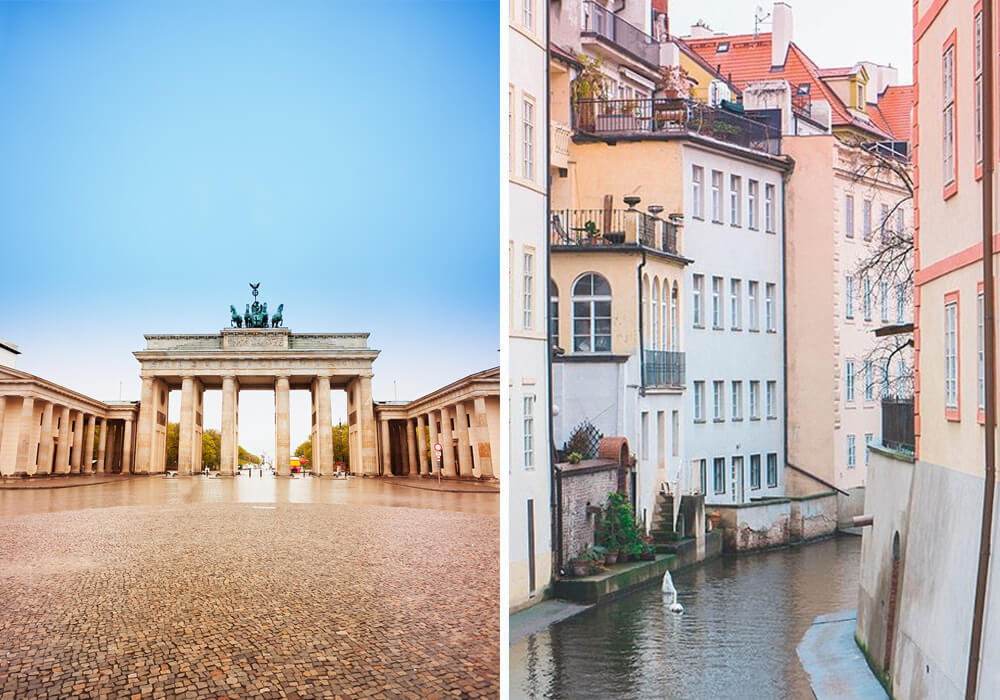
If you love history and architecture, then these two cities will captivate you! Split your time between the two, rent a car and take a road trip between them to enjoy some beautiful scenery.
GETTING THERE: Fly into either Berlin or Prague, whichever airport is cheaper. GETTING BETWEEN DESTINATIONS: Rent a car and take a road trip between Berlin and Prague.
Whichever Europe Itinerary you choose, you’re guaranteed to love it. You can definitely see so much of Europe in a week and you really can’t go wrong with any of these choices. Just remember to relax and enjoy and also remember that this probably won’t be the last Europe trip of your lifetime.
Not the Trip You Need?
Not exactly the trip you’re looking for? Don’t worry, I also offer custom trip planning by request for many destinations! Learn more here.
Book Your Flight s and Car Find a budget airlines by using Skyscanner . This is my favorite way to search for flights because they crawl websites and airlines around the globe, so you always know you’re getting the best deal. Learn more tips for finding the best flight deals here. For cars, I like to use Rental Cars because they have good filters and its easy to search for multiple companies.
Book Your Accommodation My preferred way to stay around the world is VRBO . I find it usually gives you a unique local experience in any destination. If you want to stay in a hotel, use Booking , as it consistently gives the cheapest rates for guesthouses and hotels. I use them both all the time.
Always Get Travel Insurance Travel insurance protects you and your family against illness, injury, theft, and cancellations. It’s peace of mind in case anything goes wrong. I never travel without it. I’ve been using World Nomads for the last few years and love how easy it is to use. I have also used Allianz . Compare rates to see which is best for the coverage you need.
Looking for ways to save money on travel? Check out my resource page for the companies I use for traveling! I share everything I use to save me time and money.

Wanderlust Crew
9 thoughts on “ 20 one-week europe trip itinerary ideas ”.
Hi there, My husband and I will be celebrating our 20th anniversary next March and would love to go somewhere in Europe for a week. I have only been to Italy (over 20 years ago) and he’s never been. I’m a bit overwhelmed by even trying to figure out where to go. Can you help? Thanks! Hannah
Hi Hannah. I can definitely help! I’ve got several Italy Itinerary ideas for Italy here: https://wanderlustcrew.com/10-days-in-italy/ I also do custom trip planning, specifically for Italy, if you’re interested in that, you can find more info here: https://wanderlustcrew.com/custom-travel-planning/ Italy will be so much fun! One of my favorite places on earth! xo Vanessa
Very helpful! Thank you. We are planning a one year stay & this helped with our itinerary tremendously.
Oh that sounds amazing! You’ll see so much!
Great ideas! We hope we’ll be able to travel to Europe again soon!
Thanks so much! Me too! Going as soon as it’s safe!!
Pingback: Backpacking around Italy with kids - Travel Mad Mum tips
Pingback: How to Find the Best Gelato in Italy! | I Heart Italy
Very good these tips I was even thinking about taking a vacation for a few days, thank you
Leave a Reply Cancel reply
Your email address will not be published. Required fields are marked *
Notify me of follow-up comments by email.
Notify me of new posts by email.
This site uses Akismet to reduce spam. Learn how your comment data is processed .
Your Europe itinerary: 14 routes to explore the continent
Book your individual trip , stress-free with local travel experts
Select Month
- roughguides.com
- your-europe-itinerary-10-routes-to-explore-the-continent
Plan your tailor-made trip with a local expert
Book securely with money-back guarantee
Travel stress-free with local assistance and 24/7 support

written by Dre Roelandt
updated 05.06.2024
You can’t expect to fit everything Europe has to offer into one trip and we don’t suggest you try. For those taking a big, extended trip around the continent you could join a few countries together. You'll find that the best Europe itinerary is one that allows time to explore, relax, and take in the sights. Here's a collection of our favourite routes in Europe.
1. Britain and Ireland
2. france and switzerland, 3. the netherlands and belgium, 4. germany and austria, 5. spain and morocco, 7. slovenia, 8. balearic islands island hopping, 9. the balkans, 12. portugal, 14. czechia and hungary, planning the best europe itinerary.
This two week itinerary will take you through England, Northern Ireland and Ireland. Start in London, on day one. Explore iconic sights like Buckingham Palace and the Tower of London on day two . Then, head to Dublin for a change of scenery.
You’ll spend day three exploring O'Connell Street, Trinity College, and more, capped with a lively evening at Temple Bar. Day four takes you to Belfast via Newgrange Passage Tomb and St. Peter’s Cathedral, followed by natural wonders like Carrick-a-Rede rope bridge and Giant’s Causeway on day five .
Meander through charming towns like Sligo and Westport on days six and seven , discovering Connemara National Park and Kylemore Abbey. Day eight brings a visit to Galway's Aran Islands and Cliffs of Moher.
Continue with a stroll through Killarney National Park on day nine and scenic drives along the Ring of Kerry on days ten and eleven . Wrap up with visits to the Rock of Cashel and Blarney Castle on day twelve before bidding farewell to Dublin. Read more .

Ireland is must when visiting Europe © Shutterstock
This 10 day itinerary will take you through France and Switzerland. On the first day , Paris welcomes you with open arms, with a tour of the Eiffel Tower and a stroll through the vast Champ de Mars. On the second day you’ll explore the Louvre's treasures and the timeless beauty of Notre-Dame Cathedral.
On the third day you’ll visit the Loire Valley, where the grandeur of Château de Chambord awaits alongside delightful local wine tastings in a charming chateau. On the fourth day , you’ll explore Bordeaux's lively city, followed by a blissful coastal escape to Lacanau or Cap Ferret on the fifth day .
The sixth day brings sun-soaked relaxation on the Côte d’Azur, and unwinds in Nice. The seventh day is spent in Monaco before a returning to Nice for seaside dining.
The eighth day is spent with scenic riverside strolls in Lyon, while the ninth day transitions to Zurich for exploration of its Old Town. Finally, on the tenth day , you’ll have free time Zurich before jetting home.

Chateau de Saumur, Loire Valley, France © Shutterstock
This 9 day itinerary will take you through the best of the Netherlands and Belgium. Day one kicks off as you touch down at Schiphol Airport in Amsterdam. Once you've settled in, it's time to hit the water with a Canal Cruise, soaking in the city.
Rise and shine on day two for a morning exploration of Amsterdam, followed by a guided tour of must-see spots like the Heineken Experience and the ice-cool XtraCold Icebar.
Day three brings countryside bliss with a scenic tour to Zaanse Schans, Volendam, and Marken. Get ready to fall in love with those picturesque Dutch landscapes!
Next stop: Brussels. Day four treats you to a smooth ride to your hotel, where you'll kick back and relax.
Indulgence is the name of the game on day five , with sweet visits to the Belgian Chocolate Village and a hoppy Belgian Beer Tasting in Brussels.
Days six to eight are spent in Ghent. Dive into its history with a walking tour, hop over to Bruges for a day trip, and soak up some leisure time in this charming city.
Wrapping up on day nine , bid adieu to Ghent with some final exploration before your ride back to Amsterdam Schiphol Airport. Read more .

The best Europe itineraries will hit Brussels © Shutterstock
This itinerary will take you through the best of Germany and Austria.
Begin your journey in Munich on the first day . On day two , hop on a morning train to Salzburg for a private walking tour. Explore St. Peter’s Monastery, Mozart House, Mirabell Gardens, and the Baroque Old Town.
Day three is all about relaxing in Zell am See after another train transfer. Day four ? Your call—relax or dive into optional activities in Zell Am See.On the fifth day , journey to Kitzbühel by train for more leisure time or extend your stay in Zell Am See.
In Kitzbühel on day six , explore Innsbruck during a transfer to Garmisch-Partenkirchen, stopping at hotspots like the Golden Roof and Swarovski Crystal Worlds.
Days seven to eight are spent in Garmisch-Partenkirchen, including a must-see at Neuschwanstein Castle on day seven. Wrap it all up on day eight with a ride back to Munich airport. Read more .

Munich Christmas market: a great stop on your European trip © Shutterstock
Pack your bags for this itinerary across Spain and Morocco in just five days.
Touch down in Madrid on day one , where you'll dive straight into stops at the Royal Palace, Almudena Cathedral, Plaza Mayor, and Puerta del Sol, capped off with a feast at a local tapas joint.
Day two kicks off with more of Madrid at the Prado Museum and Retiro Park before hopping a high-speed train to Seville. Check into your hotel and soak in the sights of Seville Cathedral and Giralda tower, topped off with a fiery flamenco show and dinner in Santa Cruz.
On day three , it's off to Morocco. Discover the wonders of Tangier, from the Kasbah to mouthwatering Moroccan cuisine. Day four brings a market frenzy in Tangier before cruising to Chefchaouen for some serious photo ops amidst its iconic blue streets and a classic dinner.
Wrap it up on day five with a final wander in Chefchaouen before heading back to Tangier to catch your flight home or continue further into Morocco .
If you're planning a trip to Spain, don't miss our Spain itineraries and information on how to get there .
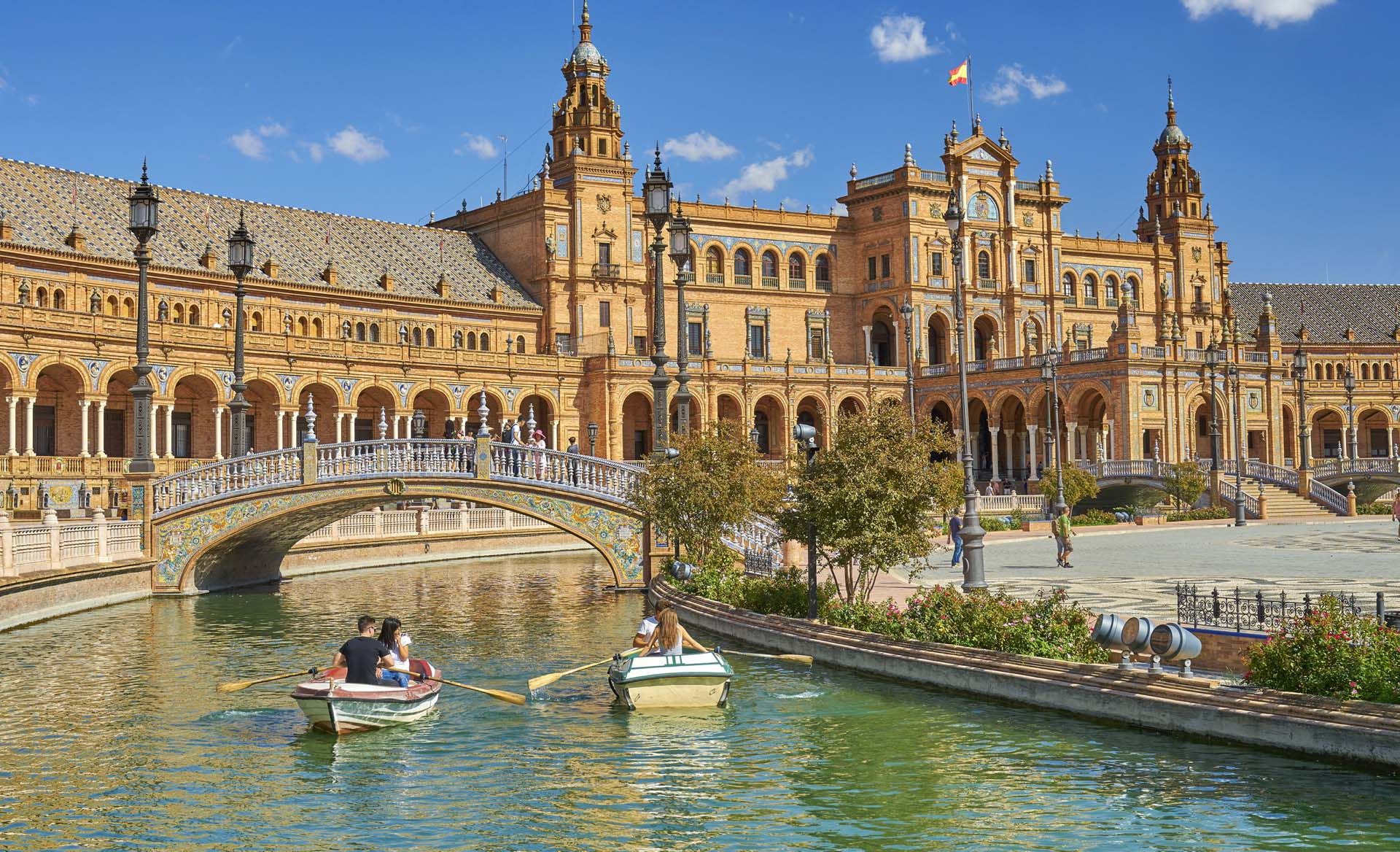
Seville is great from a Europe trip © Shutterstock
This itinerary is an excuse to check off those Italian must-sees with a whirlwind tour of Rome, Florence, and Venice. Day one starts in Rome with a Vatican and Sistine Chapel visit, followed by a stroll through Centro Storico hitting up gems like the Pantheon, Trevi Fountain, and Spanish Steps. Don't forget to refuel with a tasty lunch before hitting the Galleria Borghese.
Day two is all about Rome's ancient vibes—early birds catch the Coliseum and Forum Romanum. On day three , catch a train to Florence and spend the afternoon soaking in the Arno River scene and crossing the iconic Ponte Vecchio.
Day four is Florence central—hit up those top museums and churches. Take a scenic detour to San Gimignano for some Tuscan charm on day five .
On day six , hop a train to Venice for a leisurely afternoon of getting happily lost in its maze-like streets and canals. Wrap it all up on day seven with visits to the Doge's Palace and a leisurely stroll in St. Mark's Square. Read more .

Florence, Santa Maria del Fiore Cathedral © Shutterstock
On this 7 day itinerary, you’ll have the opportunity to explore the treasures of Slovenia. Touch down at Ljubljana Airport on day one . Once you're all settled, hit downtown Ljubljana for an evening stroll and local cuisine.
Day two kicks off with a hearty breakfast, followed by a stroll with a local guide to check out the city's hotspots at your own pace. On day three , bid farewell to Ljubljana as you journey towards the Slovenian Coast, visiting the enchanting Postojna Cave and Predjama Castle along the way, and enjoying an authentic Slovenian lunch before arriving in Portorož.
Day four is dedicated to exploring Piran with a walking guide followed by some free time in Portorož and a sunset wine tasting in Slovenian Istria. Day five takes you on a trip through the Soca River Valley, exploring landmarks like the WW1 German Charnel House and Kozjak waterfall before landing in Bled.
Day six is all about Lake Bled—Pletna boat rides, Bled Castle visits, and a jaunt through Vintgar Gorge. Wrap it up on day seven with a departure from Ljubljana Airport. Read more .

Lake Bled in Slovenia © Shutterstock
Set sail for a week of Balearic bliss, hopping from Mallorca to Menorca , Ibiza , and Formentera .
Start in in Palma de Mallorca on the first day, exploring historic gems like Palma Cathedral and the Royal Palace of La Almudaina. Wind down with a stroll through the Old Town for dinner.
On day two, soak up panoramic views from Bellver Castle and check out Valldemossa's Royal Charterhouse. Day three is spent in Sóller, nestled in the UNESCO-listed Serra de Tramuntana.
Day four brings you to Ibiza—hit up Dalt Vila's historic spots before diving into the island's famous nightlife. On day five, it's beach time in Ibiza, plus a ferry trip to Formentera's crystal-clear waters.
On day six you’ll make your way to Menorca for a taste of Mahón's history and cuisine. Finally, on day seven, soak in Ciutadella's beauty and relax on its tranquil beaches. Wrap it up with a farewell dinner, cherishing the serene vibe of Menorca.

Sant Antoni sunset in Ibiza © Shutterstock
This Balkan itinerary begins with the first day spent in Bucharest.
Day two sees you exploring the coastal gem of Constanta, with a half-day guided city tour taking you through its charming old town. Try the local seafood at a local restaurant or unwind at your hotel.
On day three , you’ll cross into Bulgaria via Vama Veche, stopping for some fun in this lively Romanian destination before exploring Balchik palace and its enchanting gardens.
Days four to six are a beach lover's paradise at Sunny Beach, where you'll soak up the sun and explore nearby treasures. Highlights include a half-day excursion to Nessebar to sightseeing in Burgas. You can also spend these days exploring Sozopol, Beglik Tash, and the UNESCO Heritage site of the Madara Rider.
Wrap up your journey on the seventh day with a return to Bucharest. Read more .

Palace of Parliament, Bucharest © Shutterstock
10. Greece
On this week long trip , you’ll get to discover the best of classical Greece. Touch down in Athens on day one , immersing yourself in over 3,000 years of history. After transfering to your city centre accommodation, dive into Athens' lively ambiance at your leisure.
Day two starts with a guided tour through Syntagma Square, the iconic Acropolis, and the charming Plaka district, concluding with dinner and an olive oil tasting in Kolonaki.
On day three , you’ll hop in a car from central Athens to uncover the ancient wonders of Epidaurus and Nafplio, passing through the Corinth Canal and exploring historic sites like Epidaurus's Ancient Theatre and Nafplio's picturesque Syntagma Square.
Days four to five will lead you to Olympia, where the Temple of Zeus and a vineyard tour await. Venture onward on the sixth day to Delphi, followed by an overnight stay in Meteora, where Byzantine monasteries perch on towering cliffs.
Experience Meteora on the seventh day before returning to Athens for a final day of exploration, culminating in a transfer to the airport for your journey home. Read more .

The Acropolis on top of Athens, Greece © Shutterstock
This five day Poland itinerary starts in Warsaw, where you’ll begin by delving into the city's past at the Warsaw Old Town and the immersive Warsaw Uprising Museum. On day two , you’ll bask in the greenery of Łazienki Park and marvel at the imposing Palace of Culture and Science.
Next up, Kraków awaits on day three , where UNESCO-listed treasures like the Old Town and majestic Wawel Castle beckon. Here you’ll explore the poignant history of the Jewish Quarter before day four leads you to Oskar Schindler's Enamel Factory Museum and a serene riverside walk along the Vistula.
Cap off your adventure on day five with a half-day excursion to the extraordinary Wieliczka Salt Mine before bidding Poland adieu.
Ready for your trip? See our other Poland itineraries for inspiration.

Poland makes for a great stop on a European itinerary © Shutterstock
This seven day itinerary covers the most essential spots in Portugal.Touch down at Lisbon International Airport on day one , where you'll have the freedom to wander the vibrant streets of Lisbon at your own pace.
Day two brings a private half-day tour, unveiling Lisbon's cultural treasures like Liberty Avenue and Alfama Quarter, culminating in a mesmerising Fado Show brimming with local music and cuisine.
After breakfast on day three , set off on a full-day escapade along Lisbon's breathtaking coastline, exploring Sintra, Cabo da Roca, Cascais, and Estoril before returning to Lisbon.
On day four , hop on a journey to Porto, making a scenic stop at the Serra do Bussaco Mountain Range to visit the Carmelite monastery, then enjoy a leisurely afternoon in Porto.
Days five to six invite you to immerse yourself in Porto's allure, from private tours to strolling through Mercado do Bolhão. Opt for a scenic Douro Cruise of Six Bridges on day five before bidding farewell to Porto International Airport on day seven . Read more .

The best Europe itinerary stops at Sintra © Shutterstock
This week long itinerary will take you through Turkey’s best travel gems.Touch down in Istanbul and settle into your city hotel on day one , where you'll have time to explore the bustling streets. Day two begins with a full-day tour of Istanbul's Old City, showcasing iconic landmarks like the Blue Mosque and the Grand Bazaar, with lunch options to sample local cuisine.
On day three , fly to Cappadocia for days of adventure amidst rock-carved churches and optional hot air balloon rides.
Day four takes you on a scenic journey to Pamukkale via Konya, stopping at historical sites along the way.
Spend days five and six exploring Pamukkale's natural wonders before transferring to Kusadasi. Your trip concludes with a day tour of Ephesus Ancient City on the final day . Read more .

Cappadocia hot air balloons © Shutterstock
On this eight day itinerary , you’ll be taken through fairytale Czechia and Hungary, starting on day one with a flight to Prague. Take this moment to unwind and prep for the days ahead.
Day two kicks off with a guided tour, leading you through Prague's storied past, from Gothic alleys to grand Baroque edifices, including must-sees like Prague Castle and the Astronomical Clock. Then, embark on a delectable four-hour food tour, savoring Czech delights and uncovering charming cafes.
Day three is a full-day jaunt to Cesky Krumlov, unveiling its fairytale castle and the captivating Egon Schiele Art Centrum. On day four , delve into Kutna Hora's eerie Bone Church and the majestic Church of St. Barbara before returning to Prague.
Transitioning to Budapest on day five , you'll explore Bratislava en route, settling in for the Budapest leg for days six and seven . Highlights include a private guided stroll through Budapest and a day trip to the scenic Danube Bend.
Wrapping up on day eight , bid farewell as you head from Budapest Airport homeward, cherishing the memories of your Central European escapade. Read more .

Czechia is a fantastic stop © Shutterstock
You can skip the hours and hours of research it takes to create the perfect itinerary and instead allow us to handle the details. Our tailor made trips are designed by local travel experts, and are completely customisable. We handle the planning and booking, and offer support while you are on your trip 24/7. See some of our existing itineraries for inspiration.
Dre Roelandt is originally from the United States but lives and works in Berlin, Germany. Dre is a freelance writer and artist with a passion for travelling. They are an in-house Content Editor at Rough Guides.
- History Culture Heritage
- Architecture
- United Kingdom
- Inspiration
- See & Do
Planning your own trip? Prepare for your trip
Use Rough Guides' trusted partners for great rates
Find even more inspiration here

Ready to travel and discover Spain?
Get support from our local experts for stress-free planning & worry-free travels.
Itinerary Frog
Travel With a Plan
10 Inspiring Europe Itinerary & Trip Ideas
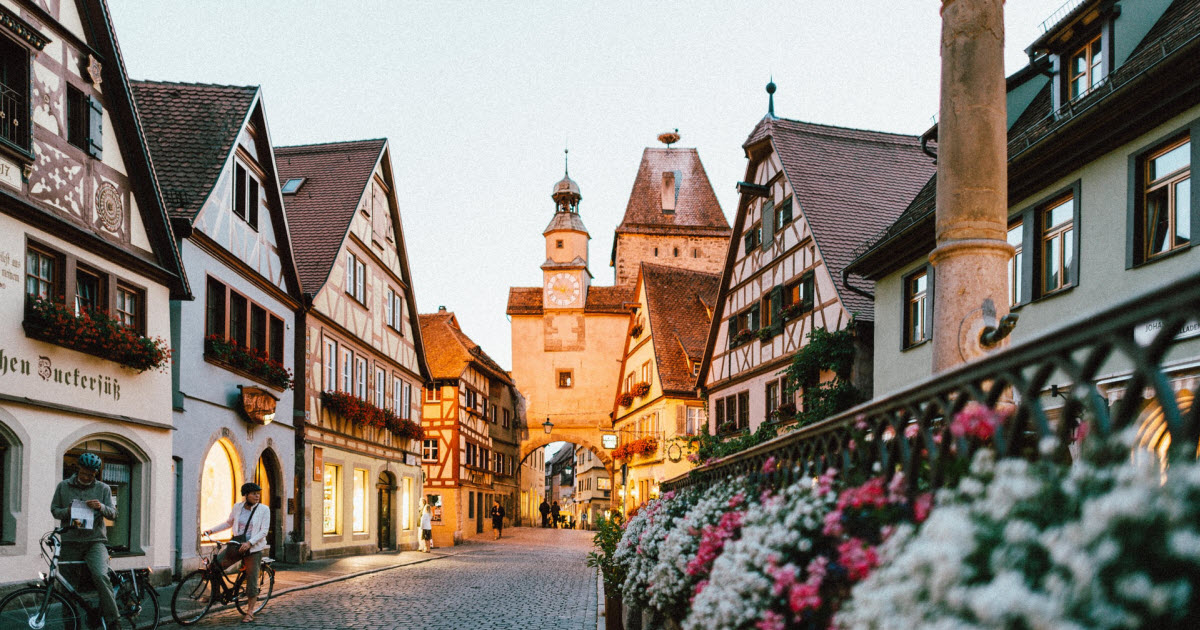
Immerse Yourself in the Culture and History of Europe in one of these Amazing Itineraries

There’s something special about planning a trip to Europe. Great food, stunning architecture, fabulous culture, and amazing memories await you. To help you plan your trip to Europe, we’ve put together 10 amazing Europe itinerary options for you to consider. These Europe trip ideas are meant to serve as a jumping-off point for your next European getaway, and leave room for you to fill in some of the details to tailor each Europe itinerary to suit you. Have a look at these 10 trip ideas and you’re sure to leave here inspired to visit Europe. I’ve included five 10-day Europe itineraries, and five 7-day Europe itineraries.
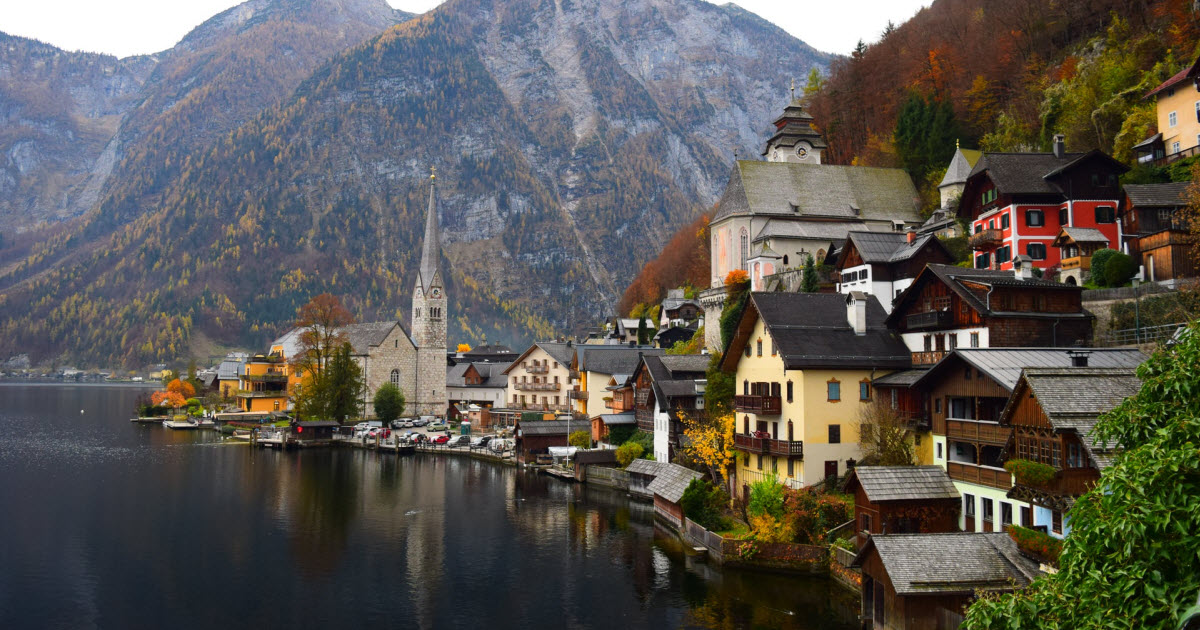
Europe Itinerary Navigation Menu
7 Day Europe Itineraries
These one week adventures will take you to some of the most famous sites and cities in Europe to experience the food, culture, art, architecture, and nightlife of the world’s most exciting continent.
- 7 Days in Europe – Paris, Burgundy, The Alps, Amsterdam, and Bruges
- One Week in Europe – Croatia, Slovenia, and Austria
- 7 Days in the UK – London, Edinburgh, Liverpool, Bath, and Stonehenge
- One Week Trip Across Europe – From London to Rome
- 7 Day Tour of Europe – The Life of Caesar
10 Day Europe Itineraries
Spend a full ten days touring Europe and you’ll be able to see more countries and truly immerse yourself in the culture and history of each historic city and attraction you visit.
- 10 Day Trip Across Europe – The Everything Europe Tour
- 10 Days in Europe – Live in the UK and on the Emerald Isle
- Europe in 10 Days – From Rome to London
- 10 Day Discover Europe Itinerary – Venice, Munich, Prague, Berlin, Amsterdam, London
- 10 Day Trip to Europe – The Imperialist Trip
Hotel Booking Sites I Use & Recommend

ItineraryFrog.com is reader supported. If you make a purchase after clicking a link, I may earn a commission at no additional cost to you.
7 Days in Europe
Paris, burgundy, the alps, amsterdam & bruges, trip overview.
- Day 1: Arrive in Paris, see the french capital. Tour the Eiffel Tower.
- Day 2: Visit a Parisian cafe, and your choice of Notre Dame, the Arc de Triomphe, or the Louvre.
- Day 3: Take a bus or train to Burgundy. Once there, sample some of the best wines in the world.
- Day 4: Enjoy a train ride through the Swiss Alps! Finish the day indulging in Swiss Chocolate.
- Day 5: Head to the Rhine Valley and enjoy a once-in-a-lifetime riverboat experience (while sampling local wine). This is a truly beautiful region, so expect to fall in love.
- Day 6: Take the train to Amsterdam to discover how cheese is made. Take a ride through Amsterdam’s canals while enjoying dinner.
- Day 7: Finish out your whirlwind tour of Europe in Bruges with beer, waffles, and chocolate.
What You’ll Enjoy Most About This Trip
If you’ve ever wanted the “Grand Overview” of Europe, this is the trip for you. You’ll see a plethora of cities, monuments, and mountains all while enjoying some of the finest delicacies in the world with beers, wines, cheeses, and chocolates.
This itinerary will send you to London, Paris, Burgundy, the Swiss Alps, Rhine Valley, Amsterdam, and Bruges. But don’t worry, you’ll have more than enough time to take pictures, eat until your full, and even take a few cruises too!
Croatia, Slovenia, and Austria
- Day 1: Ride the train to Split, Croatia. Once there, explore the ruins of the largest city on the Adriatic coast.
- Day 2: Visit Diocletian’s Palace and soak up the sun at Bacvice Beach.
- Day 3: Ride the train to Karlovac. Once you arrive, get outdoors and enjoy the scenery of the Kazjaca Woods.
- Day 4: Enjoy a relaxing canoe ride on the stunning Mreznica River. It’s important to break up a trip to Europe by doing some fun things outside of the cities.
- Day 5: Ride the train to Lake Bled (one of our favorite places). Visit Bled Island and the Churge of Assumption.
- Day 6: Ride the train to Vienna, Austria. Visit Belvedere Garden Palace and Old Town Vienna.
- Day 7: Visit the Museum’s Quartier and take in a show at the Vienna State Opera.
It’s time to see what “old” Europe was about. This 7-day tour of Europe will send you to Split and Karlovac (Croatia), Lake Bled (Slovenia), and Vienna (Austria) for a look at what Europe was before the 21st century.
Explore the ruins of some of the most famous cities in Europe and enjoy the matchless scenery of Croatia and Lake Bled, including a visit to an island in the middle of the Lake. You’ll be able to see one of the most famous churches when you stop by the Church of Assumption and see architecture that has withstood the test of time.
And finally, you can’t miss out on a visit to the Belvedere Garden Palace or Old Town. Don’t forget your camera because the artistry, the architecture, and the memories you’ll make in Vienna will be hard to replicate anywhere else.
7 Days in the UK
London, edinburgh, liverpool, bath & stonehenge.
- Day 1: Depart London with a stop in Cambridge on the way to York where you’ll finish the day in a local pub.
- Day 2: Drive to Hadrian’s wall and visit Jedburgh and Abbey Ruins. Drive through Scotland to Edinburgh.
- Day 3: Edinburgh on your terms! See the city, castle, visit art galleries, ride a bike, or stroll the cobblestone streets.
- Day 4: Drive to Loch Ness to snap a photo of the elusive monster. Explore the Scottish Highlands by car, and sip whiskey and wine at Fort William.
- Day 5: Cross back across the border to Liverpool and enjoy lunch at the Lake District. Walk the city until dinner, and enjoy the pubs and nightlife of Liverpool before returning to your hotel.
- Day 6: Take a tour bus ride through Liverpool and then head to Stratford-Upon-Avon where you’re free to tour the village and discover where William Shakespeare once lived!
- Day 7: Head to Bath, then Stonehenge, on the way back to London for your return flight from Heathrow Airport.
Whew! Somehow we managed to pack in TWELVE different cities and locations into ONE all-inclusive trip. If you’ve ever wanted to see Great Britain in all of its splendor, this is the week-long itinerary for you.
Words can’t even begin to describe the atmosphere of Great Britain. However, when you leave, you’ll be left speechless by all the famous sites and historic cities you enjoyed during your week in the UK. From the local history and unique cultural flavor of each great city, to the amazing rugged landscapes you’ll pass through on your tour, you’ll definitely be left with an amazing, once-in-a-lifetime experience that you will never forget.
7 Day Trip Across Europe
London to rome.
- Day 1: Arrive in London and spend the day touring a few of the city’s most memorable attractions before taking the train to Paris after dinner.
- Day 2: Spend a full day in the City of Lights. Enjoy lunch in the shadow of the Eiffel Tower. Hop a Seine river cruise in the afternoon, and splurge on an upscale dinner out in this romantic city.
- Day 3: Board your train to Interlaken. Enjoy stunning views of France as it rolls into the Swiss Alps. Enjoy the sight of alpine peaks and wildflower meadows on your journey to Interlaken, where you can enjoy a casual dinner and rest for the busy days ahead.
- Day 4: Explore the city of Interlaken. Consider white water rafting, and a visit to the glaciers for a change of pace, and end the day with a refreshing local brew.
- Day 5: It’s time to enjoy all that this lakeside village has in store. Take a swim in the crystal-clear waters, pack a picnic lunch and go for a hike, and end with an evening of fine food and wine at a local pub in Interlaken.
- Day 6: Rise early and board a train to Rome, Italy. You’ll enjoy a day of stunning views as you head south through the mountains of Northern Italy. When you arrive in Rome, don’t delay! Visit the Colosseum, the Vatican, or the Pantheon on your first day in Rome. Finish with a fine Italian meal and a bottle (or two) of Chianti.
- Day 7: Spend the day however you wish, exploring Rome. If you choose to, you can extend your trip for a few more days (there’s so much to see and do here), but if you do depart on Day 7, take our advice and book a late flight from Fiumicino Airport so you have a full day to explore the historic city of Rome before you return home.
While not nearly as expansive as some of our other European trip itineraries on this page, that’s what I like most about this adventure. It leaves room for you to personalize the journey. You can slow down and enjoy each unique stop along the way while traveling across Europe from England to Italy in 7 days.
This trip from London to Rome manages to send you to four MAJOR locations (London, Paris, Interlaken, and Rome), which are (in our view) some of the most romantic cities in all of Europe.
If you’re looking for an experience and want the freedom and flexibility to pick and choose your favorite activities in each destination along the trip’s route, this is the Europe itinerary for you. Don’t just see Europe – experience Europe.
7 Day Tour of Europe
The life of caesar tour.
- Day 1: Start your adventure in Rome, as Caesar did. Visit the oldest open-air museum in the world, basque in the sun on the Spanish Steps, and marvel at the glory of the Colosseum.
- Day 2: Enjoy a trip to the Vatican, shop the Via Condotti, and finish your sightseeing on Capitoline Hill with some breathtaking views of the city.
- Day 3: Take a train to Florence where you’ll indulge in Gelato and fine Italian coffee. There’s so much to see and do in Florence, and be sure to try some local wines when you treat yourself to a meal in the city.
- Day 4: Hop a train to Lucerne, Switzerland. Leave early, so you have time to visit the Lion Monument, and the Glacier Gardens before a nightcap in this beautiful Alpine oasis.
- Day 5: After breakfast in Lucerne, board a train for Paris, France. This is a beautiful ride through the heart of Europe … you’re sure to enjoy every minute of it! When you arrive in Paris, visit the Eiffel Tower before dinner out in the City of Lights.
- Day 6: Enjoy a slow day in Paris, taking in the attractions you’ve always wanted to see. Consider doing something unconventional too, like a bike ride through the city, or a Seine river cruise. You have a full day to enjoy yourself in Paris, France. Make it your own!
- Day 7: The final day of your trip will be spent in London. It’s up to you if you’d like to leave Paris first thing in the morning, or take a red-eye to close Day 6 of your itinerary so you can tour London right after breakfast. You’ll have a full day to take a bus tour of the city, or visit the monuments you’re most excited about. Feel free to extend your trip a few days if your budget allows. There’s plenty of fun things to do in this lovely city.
Why You’ll Love This Trip
We’ve all studied the life of Julius Caesar, but not many can say they’ve walked where he walked. On this trip, that’s exactly what you’ll do.
You can visit the same places he would have visited when he was alive. Your trip will take you north across Europe, mirroring Caesar’s expanding empire. For all you history buffs, this will be a time of indulgence. You’ll experience the culture, the architecture, and the atmosphere of a continent that hasn’t forgotten its roots.
Try to enjoy some Caesar-themed history and tourist attractions throughout your journey from Rome to London. It is sure to enrich this Roman Empire inspired Europe itinerary.
10 Day Trip Across Europe
The “everything europe” tour.
- Day 1: Start this European itinerary when you arrive in London, England. Spend the day in London and when you’re ready, cross the English Channel for dinner and an evening stroll in Paris, France.
- Day 2: See the sights in Paris including the Eiffel Tower, Notre Dame, and the Arc de Triomphe. Enjoy a budget-friendly light lunch at the first cafe that strikes your fancy, and take in a show or paint the town red by enjoying Parisian nightlife.
- Day 3: Depart the city of lights after breakfast in a Parisian cafe. Hop a train to Burgundy where you’ll enjoy local wines with lunch before a bus ride into the Swiss Alps, ending the day in Geneva, Switzerland for dinner (and a dessert with fresh Chocolate).
- Day 4: The hills are alive! Enjoy a steamboat ride across crystalline waters of Lake Geneva, and breathe the fresh mountain air with views of the Swiss Alps. This is a day where you’re free to take an outing into the Alps and enjoy the slower pace of alpine Europe.
- Day 5: Depart Geneva early and take the train to Pisa, Italy! Take some photos in front of the Leaning Tower, and head to Tuscany for lunch. You can rent a car and drive from Pisa through Tuscany to Florence where you’ll get a room for the night.
- Day 6: Rise early to explore the art, culture and cuisine of Florence! If you time it right you can take your car to nearby Venice where you’ll drop it off and explore the city on foot and/or by boat (there’s no driving in the city). Spend the night in romantic Venice in a room overlooking the canals.
- Day 7: Take a train or drive a car north to Innsbruck, Austria where you’ll start your tour of Bavaria (Innsbruck to Munich). Even if you spend most of your day traveling, this is truly beautiful country to drive through and you’re certain to discover a new favorite restaurant, shop, or fairy-tale castle along the way.
- Day 8: Take the train or drive to the Rhine Valley for a riverboat guided tour. Finish the night with a few glasses of local wine from a restaurant overlooking the Rhine.
- Day 9: North to Amsterdam! Walk or bike the city during the day and enjoy an evening dinner cruise. These are fun because you’ll see Amsterdam’s famous nightlife from a boat slipping through the city’s canals.
- Day 10: Wake early and head to Bruges, Belgium for a breakfast of chocolate waffles. Work off breakfast by walking this charming city. When you’re ready, take a train to Paris or London to catch your flight home.
Don’t miss anything with this 10-day excursion through Europe. Most trips leave something out, but that’s not going to happen this time. When you leave here, you’ll have photos, memories, and experiences that most everyone else only wishes for. If you want to see ALL of Europe, then you cannot skip out on this once-in-a-lifetime trip.
10 Days in Europe
Life in the uk and on the emerald isle.
- Day 1: Arrive in London and check in to your hotel. Once that’s done, spend the balance of your day getting to know the city. Take a double-deck bus tour of the city. Visit Big Ben and Buckingham Palace, and get a good night’s sleep to avoid jet lag.
- Day 2: Enjoy breakfast in London before hopping a tour bus to Stratford-Upon-Avon. Learn about Shakespeare’s life and grab a few literary souvenirs before taking a walking tour of York. Head to Bradford where you’ll spend the night and enjoy dinner in a classic English pub.
- Day 3: Rise early and travel to the Lake District to visit the largest lake in England. Jump over to Gretna Green, home of the Anvil, and then rent a car or take a train to Glasgow. In Glasgow you will check out George Square and River Clyde. Enjoy dinner and spend the night in Glasgow, Scotland.
- Day 4: From Glasgow to Edinburgh (take a train or hire a car)! Stroll through the city and check out the Royal Mile, the Palace of Holyroodhouse, and the stunning Scottish Parliament building. Take a bus to get a sense of the city, or book a local tour of some of the most interesting attractions in Edinburgh, Scotland.
- Day 5: Return to Glasgow to catch the morning ferry to Belfast, Northern Ireland. Once you arrive visit City Hall and the Queen’s University. History buffs can also make a trip to the harbor where the Titanic was built or tour Belfast Castle. As evening approaches, hire a car or hop a train to Dublin – it’s less than 2 hours away.
- Day 6: Spend the day exploring some of the most famous landmarks in historic Dublin, Ireland. Visit Dublin Castle, the Georgian Squares, and have a pint at the Guinness storehouse. Leave time for a picnic lunch on the green at Trinity College and finish your busy day at an Irish Pub (ask a local for recommendations).
- Day 7: On day seven of your trip hire a car in Dublin and drive to Kilkenny. Visit a castle and enjoy lunch here before driving to Waterford for a tour of the Waterford Crystal facilities. Spend the evening at a B&B in Waterford to rest up for the next few days.
- Day 8: Depart Waterford early to catch the nearest ferry to Cardiff, Wales. Here you’ll spend the afternoon on a tour of stunning Cardiff Castle before enjoying a nightcap (or two).
- Day 9: Take the train across the harbor to Bath (it’s about a 2 hour trip), where you’ll enjoy some stunning architecture (left by the Romans when they occupied this part of England during the days of the Roman Empire). From Bath it’s another few hours by train to Windsor. There you can enjoy a tour of Windsor Palace before returning to London to stay the night at an upscale hotel.
- Day 10: Enjoy a leisurely breakfast and late check-out in London before making your way to Heathrow for your flight home. If time allows and it’s a nice day, book a late flight and hire a driver to take you to a few historic landmarks around the city with your luggage packed and ready for your evening flight.
Why You’ll Love This Trip Across the UK and Ireland
Take a step back in time with this trip through Britain and Ireland. Visit some of the most iconic cities in Europe while you see some of the most breathtaking scenic views in all of the world. You’ll be going to a lot of places, so bring plenty of memory cards, camera film, batteries, and an explorer’s heart.
10 Day Tour of Europe
From rome to london.
- Day 1: Arrive in Rome and check into your hotel. After dropping your luggage in the room, jump on a guided tour of the city for a taste of the unique history Rome is renowned for.
- Day 2: Take the day to explore Rome’s most famous landmarks. Visit the Spanish Steps, the Pantheon, the Roman Forum, and the Colosseum. If you have time, visit The Vatican. A busy day, but you’ll be energized by this iconic city (and the great Italian food you’ll eat!).
- Day 3: Rise early and take the train to Siena where you’ll enjoy a more relaxed pace. Enjoy a slow lunch before making the trip to Venice where you’ll check in to your hotel and then enjoy a memorable dinner overlooking the world-famous canals.
- Day 4: Enjoy Venice at your own pace! Relax aboard a gondola ride, visit St. Mark’s Square and the Bridge of Sighs. Venice is a beautiful city and you’re free to enjoy a full day there wandering this one-of-a-kind romantic gem.
- Day 5: Take the train to the Swiss Alps! You’ll travel through stunning mountains in Northern Italy and Southern France on the way. This is a one-of-a-kind ride, so have your camera ready! Where you choose to stay in the Alps is up to you, leaving room for you to put your own twist on this fabulous 10-day itinerary. Lucerne, Zurich, and Geneva are all fantastic choices.
- Day 6: Explore the alpine city of your choice and immerse yourself in the fresh air of the alps. This is a great day to take a hike and picnic, or enjoy a steamboat cruise of a nearby lake to get some fresh air and recharge during your 10-day trip.
- Day 7: From Switzerland it’s on to the Black Forest of Germany. You can take a train, or rent a car one-way for this leg of the journey (whichever your budget and comfort-level allows … my preference is a car, but it can be more expensive). Finish the day in the Rhine Valley, where you can book dinner aboard a riverboat or overlooking the Rhine River.
- Day 8: From the beautiful Rhine River Valley, take a train to Amsterdam. This is another beautiful travel day where you’ll experience the beauty of Germany and the Netherlands. Once you arrive in Amsterdam, check into your hotel then head out for a guided tour of the city. Do this via the canals if you can!
- Day 9: This day is flexible. You can spend the entire day exploring points of interest in Amsterdam, or you can rent a car for the day to visit famous windmills or fields of tulips (season dependent). There are many nearby cities you can also visit for half of day 9 via car or train. However you choose to spend the day, enjoy dinner back in Amsterdam overlooking the canals. There are even dinner cruise boats. These offer a fabulous dining experience while enjoying the sights and sounds of Amsterdam’s (in)famous nightlife.
- Day 10: Your final day has arrived. Eat an early breakfast then take the train through Paris to London. You can travel directly to London, or spend the morning in Paris, and finish the day at a London landmark you’ve always wanted to visit. If your budget allows, this itinerary offers the opportunity to extend your trip by a few days (both Paris and London are well worth the extra time).
Why This is the Perfect 10 Day European Adventure
Start low and head high with this trip from Rome to London. Check out the cities of Rome, Siena, Venice, the Swiss Alps, Black Forest, Rhine Valley, Amsterdam, and London. See the largest glacier in Europe, learn how cheese is made, indulge in the best wines, and consume the finest chocolates in the world.
10 Day Discover Europe Itinerary
Venice, munich, prague, berlin, amsterdam, london.
- Day 1: Your plane arrives in Venice, Italy and you check into your hotel (ask for a room overlooking the canals). Spend a relaxing day walking Venice and enjoy your first meal in Europe: classic Italian with plenty of Chianti.
- Day 2: Start your morning with a gondola ride where you’ll be immersed in the sights and sounds of Venice as you float through its famous canals. Enjoy an espresso and pastry before hitting St. Mark’s Square and snapping photos on Academia Bridge. You have flexibility to set your own schedule on Day 2 … if you like to see and do a lot, pack your day. If you want to ease into your tour of Europe, take it slow and enjoy every minute!
- Day 3: After breakfast in Venice, board a train to Munich, Germany! This is a six or seven hour ride through some of the most beautiful parts of Europe, and you’ll arrive in time to check in to your hotel, stretch your legs, and unwind with a hearty meal and a pint of local brew.
- Day 4: Spend most of this day exploring Munich’s historic sites. Alte Pinakothek, and the Munich Residenz are recommended, and Dachau (a former concentration camp) will be a sobering but memorable stop. After lunch board a train for Prague, where you can check in to your hotel before dinner and attending a performance at the opera (if that’s your thing).
- Day 5: This is a day for exploring Prague. Take in the Communist Museum, enjoy some street food, and get to know the Czech Republic. This is a beautiful city with stunning architecture where just taking a walk offers a lesson in history.
- Day 6: Rise early and board a train to Berlin where you’ll visit the Berlin Wall and Brandenburg Gate. There are some excellent restaurants in this city, and we recommend treating yourself to an upscale dinner while here. You’ll be spending Day 7 in Berlin as well, so don’t be afraid to indulge in a bottle of German wine or several pints of a local specialty. You’re on vacation, after all!
- Day 7: There’s nothing like exploring a European city at a pace that suits you, and on Day 7 you have the freedom to tour Berlin however you like. Tempelhof Airport is a pretty cool place to visit … it’s a former airport that has been converted into a public part. A quirky place to enjoy a picnic lunch.
- Day 8: After breakfast in Berlin, it’s off to Amsterdam by train or rental car (your choice – train will be simpler and cheaper). Day 8 is dedicated to cheese, and after checking in to your hotel you’ll tour a few cheese farmhouses to learn the art of cheese making, and sample a few of the delicacies this part of the world is known for. Finish the day with a few beers overlooking Amsterdam’s gorgeous canals.
- Day 9: Rent a bicycle in the morning before the city gets busy, and travel the city the way the locals do. If you like, you can book a guided bike tour, which gives you some direction and ensures you’ll see some of the most interesting parts of Amsterdam. In the afternoon visit the Anne Frank House, and then board a train for London via Paris. You have the option to spend the night in either city. I recommend spending the night in Paris (how romantic!), but it’s up to you!
- Day 10: If you spent the night in Paris, wake early for breakfast at a Parisian cafe, then a quick visit to the Eiffel Tower before boarding your train to London. Spend the afternoon visiting a few of your bucket-list landmarks in England’s capital city before catching your flight. Don’t be afraid to extend your trip by a few days to give yourself some extra time in Paris and/or London as well!
Why This is the Trip You Should Choose
If you ever wanted to know the heart of Europe, then this is the trip for you. You’ll start out in Venice and end up in Munich, Prague, Berlin, Amsterdam, and London. During your trip, you’ll experience guided tours designed to maximize your time and enjoyment. Ready to experience the heartbeat of Europe?
10 Day Trip to Europe
“the imperialist trip”.
- Day 1: Arrive in Munich, Germany and take a taxi or shuttle to your hotel to check in and drop your luggage. After you settle in, take a tour of the city and enjoy a casual, budget-friendly lunch. Ask a local for a recommendation. In the afternoon, visit the Marienplatz, and treat yourself to an upscale dinner to kick off your trip to Europe in style!
- Day 2: After breakfast in Munich, hop a train for a 2-hour ride to Regensburg. This is a great day trip from Munich, where you’ll be treated to a bucolic view of medieval life in Germany. After lunch, it’s a 3 hour train ride to Prague, where you’ll check in to your hotel and fuel up with a hearty dinner in the Czech Republic.
- Day 3: Arrange a private tour with a local guide and visit historic sites in Prague such as the St. Vitus Cathedral and Prague Castle. After the tour, stroll through Old Town Square and take in the stunning architecture as you treat yourself to some world-famous street food and local beer.
- Day 4: You’ll travel to Budapest on Day 4, and your method of transportation will depend on your budget, and how much time you hope to spend being there, vs. getting there. You can travel by car, train, or plane. If you can afford it, a one-way plane ticket is reasonable, and you’ll arrive in about an hour and a half. Expect 6+ hours by car or train. Even so, it’s a nice trip through Eastern Europe, so it isn’t wasted time. In Budapest, try to book a hotel room next to the river, and if you do fly in, spend your first day relaxing on a river cruise to take in this beautiful European city from the water.
- Day 5: Today is wide-open for a whirlwind tour of Budapest. Visit Fisherman’s Bastion and snap some photos of the Parliament building and the beautiful Danube river. Join a guided tour of Budapest if you like, or relax on a riverboat cruise on the Danube (if you traveled here by train or car and didn’t have time the day before). Enjoy a hearty Hungarian dinner and get plenty of rest for a busy day ahead.
- Day 6: Wake early, enjoy breakfast, and rent a car or take the train to Vienna, Austria! It’s between two and a half and three hours by either mode of transportation. The train is simpler and cheaper. After your late-morning arrival in Vienna, check in to your hotel and ask the maître d’ for a recommendation for an upscale lunch. Vienna offers diners some of the best cuisine in Europe so allow yourself to indulge while you’re here. After lunch, enjoy a guided, or self-directed tour of Vienna to take in this beautiful city and relax after a few days with lots of travel.
- Day 7: Spend today exploring Vienna in earnest. Visit Hofburg Palace, the State Opera House, and St. Stephen’s Cathedral. They’re all marvelous. If your budget allows, treat yourself to an upscale dinner and a night out at the opera house where you’re likely to take in the performance of a lifetime.
- Day 8: This is an excellent day to rent a car one-way. Drive yourself from Vienna to the Wachau Valley where you’ll be treated to once-in-a-lifetime views of castles and nature. Photos will never do this stop justice. From there, continue across the full width of Austria to Salzburg, where you’ll drop off your rental car, check in to your hotel and enjoy a nightcap. You can take a train on this day if you don’t want to drive, but domestic one-way rentals in Austria are cheap and generally hassle free, and it’s a nice easy day to try driving in Europe.
- Day 9: You’ll be traveling to Munich on Day 9, and when you leave is up to you. I recommend spending the day in Salzburg, and boarding your train mid to late afternoon. It’s a 2-hour train ride to Munich, and that leaves you time to check in to your hotel and enjoy a final dinner out in Europe.
- Day 10: Once you check out of your hotel, consider renting a car for the day (especially if you have a late flight). Since you’ve already spent some time in Munich, this allows you to enjoy a day trip from the city while having your luggage secure in your car at any stops along the way. When you’ve soaked up your last few minutes of European bliss, drop your rental at the airport in Munich, and head home!
A History Lover’s Dream Trip Across Europe
Live the life of an imperial for ten days with this trip/journey. You start in Munich and travel across the European countryside. During your visit, you end up in Regensburg, Prague, Budapest, Vienna, the Wachau Valley, and Salzburg. Here, you’ll see the rich history and culture that has defined the Eastern European Capitals.
Airfare Booking Sites I Use & Recommend

Leave a Reply Cancel reply
Your email address will not be published. Required fields are marked *
Save my name, email, and website in this browser for the next time I comment.

- Australasia
- Central America
- North America
- South America
- Buenos Aires
- Mexico City
- New York City
- Rio de Janeiro
- Overwater bungalows
- Cruise tips
- Sightseeing Passes
- Attractions
- Theme parks
- When to visit where
- Backpacker Indexes
Sign up for our monthly Priceoftravel newsletter
11 Best first-time Europe itineraries for 1, 2, or 3 weeks
Europe is going to be very busy in the summer of 2024 as the world is back to normal and travel demand is higher than ever. One other key factor is that most European currencies are still hovering at lower levels historically compared to the US dollar, which means that Europe will feel somewhat cheap again this year. In fact, according to our World Backpacker Index , European cities like Lisbon, Madrid, and Munich are about 30% cheaper to visit than Boston, Chicago, and New York City. In other words, flying to Europe might seem expensive, but most things will be cheaper once you get there compared to the costs of visiting a large US city.
Below you’ll find 11 of the most popular and best itineraries for a first visit to Europe. Your first visit is not really the time to be different or creative, and the famous destinations tend to be popular for a reason. In other words, it’s kind of silly to visit, say, Bulgaria, if you’ve not yet been to France or Italy. I lay out the best options along with how long to stay in each place as a general guide. I also discuss Mediterranean cruises, which can actually be an amazing way to see a lot of Europe on your first visit, especially if you don’t like going back and forth to train stations and airports every 2 or 3 days.
For a bit of fun you might be interested in the cheapest 5-star hotels in Europe , which start at US$80 per night for really nice hotels. It helps show that if you choose some of the cheaper cities, you can treat yourself to some luxury that you can’t afford in most other places.
This article was last updated in March, 2024.
There are 11 starter itineraries described in detail below
- Classic London and Paris
- England and Scotland
- Paris and Italy
- Mediterranean cruise
- France, Belgium, and Netherlands
- Paris and elsewhere in France
- Switzerland
- Best of cheap eastern Europe
For each itinerary there are suggestions of other destinations that are easy to add on to the main cities.
Note: This article was most recently updated in March, 2024
Building the best itinerary for your first trip to Europe
Below there are 11 popular itineraries for one week in Europe. If you’ve only got a week then choose one of them and assume you’ll return again to conquer more of this amazing part of the world. If you’ve got more time then you can choose from some of the top add-on suggestions for each one.
Start in the most famous cities
Your first visit to Europe is no time to try to be different or edgy. I recommend that you focus on these 5 great cities before you start branching out into cheaper or more obscure places.
Keep your travel days to a minimum
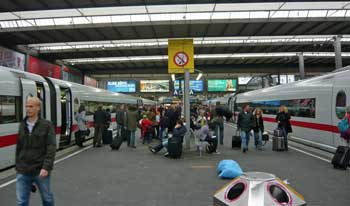
Spend 3 (or 4) nights in almost every major city
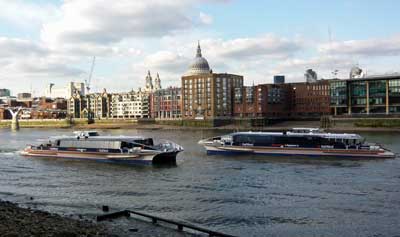
So many first-time visitors are initially planning on spending only 1 or 2 nights in major cities that I wrote a detailed explanation of why 3 nights is ideal for almost all European cities , even if you want to see as much as possible.
3 (or 4) nights will be enough for any city on your first trip
Most first-time visitors are tempted to move too quickly, but it can also be a mistake to move too slowly. It’s really amazing how much you can see in two full sightseeing days. If you spend too long in one city you’ll end up seeing things that are way down your list, while you could be in another city seeing things at the top of your list there.
Choose cities that are easy to reach from each other
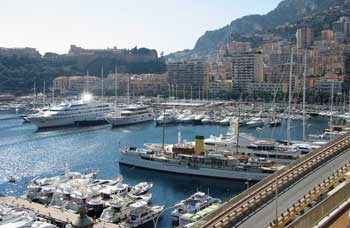
For your first trip it’s best to visit cities that are no more than a 5-hour train ride apart.
Choose cities that are connected by reasonable train rides rather than flights
To build on the point above, finding cheap flights within Europe is easy, but train travel is about a million times more enjoyable and less stressful. You’ll enjoy the train rides almost as much as the cities, so focus on places that are within 5 hours of each other by train.
Start with one of the classic itineraries below, and then add to it if you have more time
If you only have 7 days then you’ll find a list below of classic itineraries that are well-suited to a first visit to Europe. Hopefully you have more than 7 days though, and if you do you can add in one or more of the suggested add-on cities to build an itinerary that appeals most to you.

Best 1-week itineraries for the first time in Europe
Itinerary 1: classic london and paris.
- London (3 or 4 nights)
- Paris (3 or 4 nights)
Fly into either city and take the 2-hour Eurostar train between them
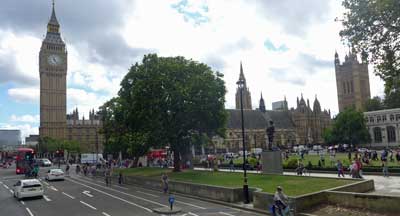
London highlights
- Big Ben and Parliament
- Westminster Abbey and St. Paul’s Cathedral
- Tower of London and Tower Bridge
- West End shows (Broadway equivalent) and classic pubs
- Buckingham Palace and Windsor Castle
Paris is actually far more beautiful than London and the food is famously much better as well. Since Paris gets so many tourists from non-French speaking countries, it’s easy to get by on just English, and the Metro system makes it fast and easy to get around. The architecture of both cities is amazing from the Tower of London, Big Ben, Westminster Abbey to the Louvre and the Eiffel Tower. These cities each pack a huge punch and they are very different from each other as well. Actually, England is arguably the best choice for your first trip to Europe .
Paris highlights
- Eiffel Tower
- Louvre Museum and Museum de Orsay
- Arc de Triomphe and other monuments
- Montmartre neighborhood and Sacré Coeur Cathedral
- Probably the world’s best affordable restaurants and wine
Best add-ons to London and Paris
- Edinburgh (2 or 3 nights, from London)
- Amsterdam (2 or 3 nights, from Paris)
- Bruges and Brussels (2 nights, from Paris)
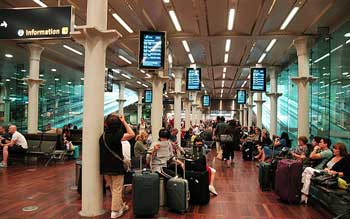
>>> Best one-week London and Paris itinerary in detail >>> Check London hotel deals >>> Check Paris hotel deals
Itinerary 2: England and Scotland
- York (1 night)
- Edinburgh, Scotland (2 or 3 nights)
- Inverness, Scotland (2 or 3 nights)
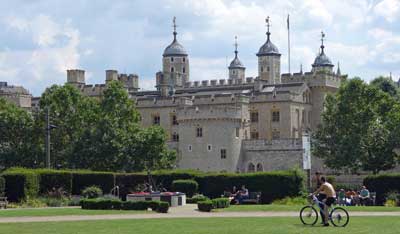
York is a small Roman city with intact city walls and one of the most famous cathedrals in Europe. Edinburgh is not only the capital of Scotland, but it’s easily the second most interesting city in all of Britain. If your time is short, skip York and spend more time in Edinburgh.
If you prefer to focus on the south of England on your first trip then the best option is to go to Bath or nearby Bristol after London. Bath is another of England’s top destinations and it’s a gorgeous city that has been a spa resort for many centuries. It’s also reasonably close to Stonehenge. You can also easily get to Cornwall in England’s southwest corner from Bath, and that’s a whole different and fascinating experience (with nicer weather than up north).
If you’ve got more than a week and want to spend more time in Scotland, especially in the summer months, the place to head to is Inverness. It’s a small town that is considered the gateway to the Scottish Highlands, but it’s an interesting and charming place on its own. You can take day-trips by bus to the highlights of the Highlands including the Isle of Skye and Loch Ness. Between you and me, it’s better to minimize time in Loch Ness or skip it altogether because it’s not one of the more photogenic parts of Scotland and the monster has always been a hoax.
Travel times between the recommended places
- London to York by train: 2 hours
- York to Edinburgh by train: 2.5 hours
- London to Edinburgh by train: 4 hours
- Edinburgh to Inverness by train: 3.5 hours
- London to Bath by train: 85 minutes
Best add-ons to England and Scotland
- Paris (3 or 4 nights from London)
- Amsterdam (3 nights from Paris)
If you think you want to spend your whole trip in Britain you should have a look at our article on the best itineraries in England, Scotland, and Wales .
>>> Check London hotel deals >>> Check Edinburgh hotel deals
Itinerary 3: Paris and Italy
- Paris (3 or 4 nights)
- Venice (1 night)
- Florence (2 or 3 nights)
- Rome (3 nights)
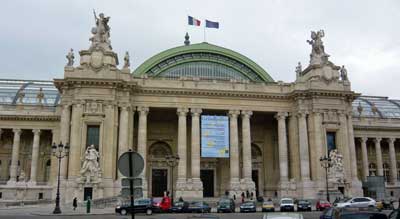
From Paris you can easily fly to Venice (or nearby Treviso) where you should try to spend about 24 hours. Venice is small enough to see in a full day, and so crowded that most people are satisfied to leave after that day. The key is to stay in the main part of the main island so you can enjoy Venice before the cruise passengers and day-trippers arrive, and also after they leave for the day. Two nights in Venice would not be wasted time, and it’s possibly the most gorgeous city in the entire world, but you can see the best of it in a bit over 24 hours.
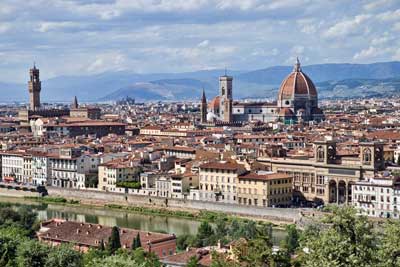
Rome also lives up to the hype and spending a day in the Vatican City will be a highlight even for non-Catholics, but it’s also a crowded and busy city so three days is usually enough for most people. Similar to Paris, Rome is an unusually beautiful city from almost any angle when you are in the historical center. You’ll walk through a stunning piazza (town square) and then turn a corner and you’ll see gorgeous buildings or public statues that are as nice as anything in the museums. Seriously, it’s worth a visit.
Paris to Venice flight: 1 hour 35 minutes Venice to Florence by train: 1 hour 53 minutes Florence to Rome by train: 1 hour 16 minutes
You can of course instead fly from Paris to Rome and then go north to Florence and then to Venice and fly home (or back to Paris) from there, and it would be just as enjoyable.
Best add-ons to Paris and Italy
- Nice/Cannes/Monaco (2 or 3 nights)
- Avignon (2 nights)
- Bourges (2 nights)
- Bordeaux (2 nights)
- Aix-en-Provence (2 nights)
- Reims (2 nights)
- Dijon/Burgundy (2 nights)
- Milan (1 or 2 nights)
- Lake Como (2 nights)
- Siena (2 nights)
- Cinque Terre (1 night)
- Naples / Sorrento /Amalfi Coast/Pompeii/Capri (3 to 5 nights)
- Sicily (3 to 4 nights)
>>>Much more information in this article about the best France and Italy itineraries >>> Check Paris hotel deals >>> Check Venice hotel deals >>> Check Florence hotel deals >>> Check Rome hotel deals
Itinerary 4: Mediterranean cruise
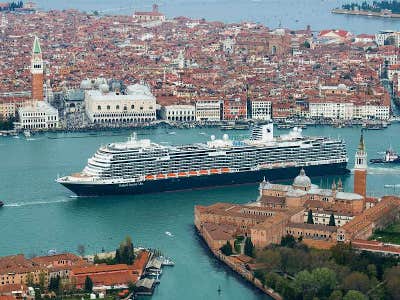
In spite of the reputation of cruises to be floating buffets, they can actually be an excellent way to visit a great number of amazing European cities in a short time. The ship typically is in port from the early morning until mid evening, often giving you the opportunity to have dinner in the city (unlike Caribbean cruises). Better still, the cruise ports are often near the center of town, so you can just walk off the ship and do sightseeing on foot or by public transportation.
Mediterranean cruises usually start at 7 nights but can go up to 3 weeks, which can provide an amazing tour of the entire region without having to pack and repack your bags more than once. They also can provide excellent value, especially compared to the price of taking trains or flights and finding new hotels in every destination.
Most popular Mediterranean departure ports
Barcelona, Spain – It’s an easy port to reach. Ships generally go from Barcelona with stops in France and then Italy.
Rome (Civitavecchia), Italy – The port isn’t very close to Rome, but it’s easy to get back and forth. Ships go west to France and Spain as well as south around the tip of Italy and then on to Croatia, Venice, and to Greece.
Venice, Italy – The cruise ships no longer dock close to the best tourist areas, but it’s easy enough to visit Venice for a day or two before boarding a ship. Ships starting in Venice go south and then head west and to Rome and then to France, or they go south to Croatia and then head east to Greece.
Athens, Greece – The cruise port of Piraeus is just south of Athens and easy to reach. Ships from Athens usually head west towards Croatia, Italy, France, and Spain, but there are also ships that visit Greek islands and Turkey.
>>> Check for deals on Mediterranean cruises
Alternative to consider: a river cruise
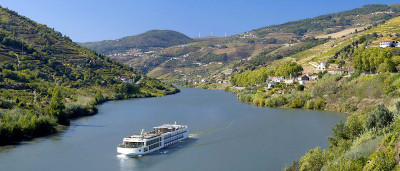
Amsterdam , Budapest , and Prague are some of the most popular river cruise ports, but there are dozens of others including many smaller towns in France where few other tourists will be when you stroll off the ship. There is little or no entertainment on the river cruise ships, but passengers don’t miss it because the entire day and into the evening is spent just steps from local cultural offerings and restaurants.
>>> Check for Europe and river cruise deals
Itinerary 5: France, Belgium, and Netherlands
- Paris (3 nights)
- Brussels and Bruges (1 or 2 nights)
- Amsterdam (2 or 3 nights)
Paris to Brussels: 1 hour 22 minutes Brussels to Bruge: 58 minutes Bruges to Amsterdam: 2 hours 45 minutes Amsterdam to Paris: 3 hours 17 minutes
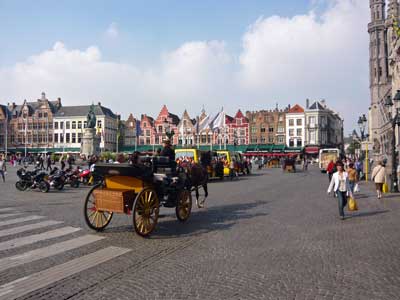
Spending 4 nights in Paris and 3 nights in Amsterdam would be a great trip, but if you want to see something else you’ve got a couple options in between. My advice is to spend an afternoon looking around the Grand Place (main square) in Brussels and then hop a 58-minute train ride to Bruges for a night or two. Brussels isn’t a great tourist city, but Bruges really is so it’s a better option for most people. Whatever you choose out of this group, you can be back in Paris on another high-speed train for your flight home.
Best add-ons to France, Belgium, and Netherlands
- Luxembourg City (1 or 2 nights)
- Cologne, Germany (1 or 2 nights)
- Interlaken, Switzerland (2 or 3 nights)
>>> Check Paris hotel deals >>> Check Bruges hotel deals >>> Check Amsterdam hotel deals
Itinerary 6: Paris and elsewhere in France
And a choice of:
- Normandy (2 nights)
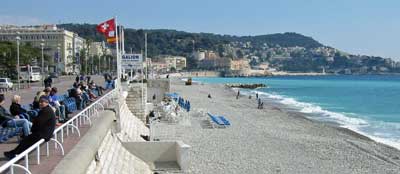
While Nice is a wonderful tourist city for a look at the French Riviera, the other larger cities of Lyon and Marseilles are probably better saved for a future trip because they are light on key sights compared to many smaller towns. Wine lovers can rent a car or take trains into Bordeaux or Burgundy. Since you can get between most of these towns by train in 2 hours or less, spending only 2 nights in each one is a reasonable option if you want to see a lot in a short time.
Normandy is an interesting choice and easy to reach in only about two hours by train from Paris. Some visitors like to see the famous WWII beaches and memorials, while others (especially in summer) like to check out one or more of the beach-resort towns. Deauville is one of the more famous of those, and it’s also famous for its horse race track and as one of the epicenters of the industry in Europe.
Best add-ons to Paris and elsewhere
- More France, of course
>>> Check Paris hotel deals >>> Check Nice hotel deals
Itinerary 7: Italy
- Rome (3 nights)
- Florence (2 or 3 nights)
- Venice (1 or 2 nights)
Rome to Florence: 1 hour 16 minutes Florence to Venice: 1 hour 53 minutes
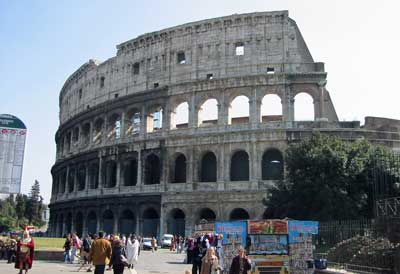
Venice is small enough that you can see the main sights in about 24 hours, and it’s so insanely crowded that many people tire of it after about a day as well. It’s better to pay more for a hotel to be on the main island and visit quickly than to save money with a hotel on the mainland where you’ll be in crowds going back and forth as well. Florence is the most relaxing of the 3, and also a great base for side trips to Pisa, Siena, and Cinque Terre, just to name a few.
Going to Italy? Here are the best first-time Italy itineraries for 3 days to 2 weeks (in much greater detail)
Best add-ons to Italy
>>> Check Rome hotel deals >>> Check Florence hotel deals >>> Check Venice hotel deals
Itinerary 8: Spain
- Madrid (4 nights) (including day trip to Toledo)
- Barcelona (3 nights)
Madrid to Barcelona: 2 hours 30 minutes
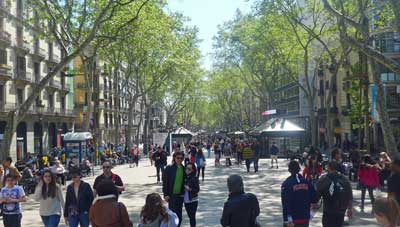
A huge part of Spain’s tourism industry is built around its southern beaches and islands such as Ibiza, Mallorca, and Tenerife (in the Canary Islands). For most people it’s best to ignore those places on your first trip because none of the beaches are special enough to spend days on them compared to the culture of the cities.
Best add-ons to Spain
- Valencia (2 nights)
- Seville (2 or 3 nights)
- Granada (2 or 3 nights)
- Lisbon (3 nights)
By popular demand, I’ve added a full article on where to go in Spain with itineraries from 7 to 10 days up to two weeks .
>>> Check Madrid hotel deals >>> Check Barcelona hotel deals >>> Check Lisbon hotel deals
Itinerary 9: Germany
- Berlin (3 nights)
- Munich (2 or 3 nights)
- Rothenburg ob der Tauber (1 night)
- Füssen (1 night)
Berlin to Munich: 6 hours 2 minutes Munich to Rothenburg ob der Tauber: 2 hours 56 minutes Munich to Füssen: 2 hours 4 minutes
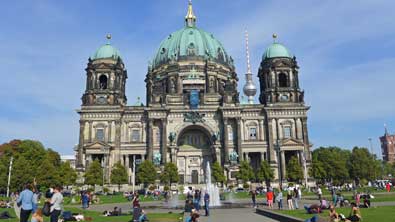
Those two cities are the keys to a Germany visit, and after that you’ve got a wide variety of choices. I cover most of the popular choices in my article on where to go in Germany , which covers several smaller towns that are major highlights.
Best add-ons to Germany
- Cologne (1 or 2 nights)
- Hamburg (2 or 3 nights)
- Amsterdam (3 nights)
- Prague (3 nights)
- Salzburg (2 or 3 nights)
- Vienna (3 nights)
- Interlaken, Switzerland (3 nights)
- Lucerne, Switzerland (2 or 3 nights)
>>> Check Berlin hotel deals >>> Check Munich hotel deals
Itinerary 10: Switzerland
- Interlaken (3 nights)
- Bern (1 night)
- Lucerne (3 nights)
Zurich Airport to Interlaken: 2 hours 10 minutes Interlaken to Bern: 53 minutes Bern to Lucerne: 1 hour 50 minutes Lucerne to Zurich Airport: 1 hour 3 minutes
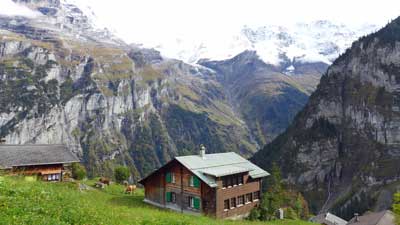
Interlaken is the best hub for the most dramatic Alps views and experiences. The one-hour cable car ride up to the Schilthorn observation deck is something you’ll never forget, and the only thing that might be more dramatic is the train ride up to the Jungfraujoch station, which is the highest in Europe. Lucerne is almost as beautiful with a scenic lake at its heart and also great mountaintop views nearby. If you do want to see a Swiss city then the capital of Bern is the most interesting and photogenic on a short visit. Read more about where to go in Switzerland for even more ideas.
Best add-ons to Switzerland
- Munich (3 nights)
- Italy (as long as you’ve got)
>>> Check Interlaken hotel deals >>> Check Lucerne hotel deals
Itinerary 11: Eastern Europe’s best cheap cities
- Budapest (3 nights) and/or
- Krakow (3 nights)
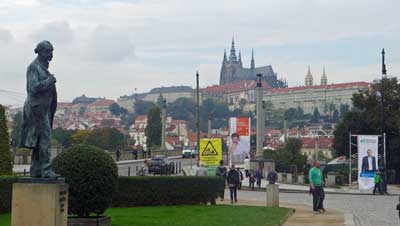
Each of these cities is beautiful and historic, but English is less widely spoken so they can also be quite a bit more challenging for a first-time visitor. Another difficulty is that the trains between them are still quite slow compared to the high-speed rail in the West, so it takes most of a day from one to another, and a bus is often a better choice. I cover this best cheap Europe itinerary more fully in the linked article.
Prague to Budapest: 6 hours 41 minutes Budapest to Krakow: 9 hours 54 minutes (flying might be better)
Best add-ons to cheap Eastern Europe
- Cesky Krumlov, Czechia (2 nights)
- Ljubljana, Slovenia (2 or 3 nights)
- Split, Croatia (3 nights)
- Belgrade, Serbia (2 or 3 nights)
- Sarajevo, Bosnia and Herzegovina (2 or 3 nights)
- Sofia, Bulgaria (2 or 3 nights)
>>> Check Prague hotel deals >>> Check Budapest hotel deals >>> Check Krakow hotel deals
OTHER POPULAR POSTS
Leave a reply cancel reply.
Your email address will not be published. Required fields are marked *
11 Best first-time Europe itineraries for 1, 2, or 3 weeks " --> All Comments
Hi Roger, was reading your article and reply to various questions and its actually too good and kind from you. if you pls,help me out a route plan for 15days. but my catch is, i have to start from Stockholm.i like to end in rome to head back home. in between what should be my plan?thanks
I’m happy to help. Stockholm to Rome could be done in 15 days, but it would require skipping quite a few great places along the way. My recommendation would be to choose 5 or maybe 6 cities total and spend 3 days in each. If Stockholm is one of your cities you’d only have 12 days left but even if Stockholm didn’t count on the 15 days I think it’s probably best to fly from Stockholm to a city closer to Italy and then do the rest of it on shorter train rides. You could do Stockholm to Copenhagen by train, but those are pretty long train rides and honestly those two cities are pretty similar to each other.
So maybe Stockholm and then a flight to Paris and then trains to Venice, Florence and Rome? That sort of thing. Stockholm is just so remote that it would require at least 3 or 4 longer train journeys but if you flew from Stockholm to Paris (or Berlin or Prague or Budapest or wherever) the remaining train rides would be relatively short. I hope this helps and let me know if you have any other questions. -Roger
Firstly, I would like to thank you for the article and itineraries; they are very helpful.
My wife and I are planning a 3 to 4-month trip around the EU (Western Europe). Before I delve into the specifics of our itinerary, I am wondering if the same 3 to 5-day in each-city principle applies for cases where travellers will spend more time travelling around?
I look forward to hearing from you. Thanks Raf
Wow. That sounds amazing! Even when traveling for longer periods like that I’d recommend a minimum of 3 nights in almost any place you go. The main reason is your travel days tend to be kind of long when you factor in everything from checking out of one hotel to getting to the train station and waiting and then the journey time and then getting to your next hotel and getting situated. All of that usually takes 4 to 6 hours even when the train journey is only an hour or two, so you just don’t get much sightseeing done on those days. So if you only stay 2 nights in each city it means every other day is a travel day and that just takes up too much time.
That said, I think 3 or 4 days is enough time in most places as well. If you really want to get to know Paris, for example, you might stay a week there. But for most cities there are diminishing marginal returns starting on day 3 or 4. In other words, you’ll be able to see the 10 things that most interest you in 3 days or so, and at that point you might be ready to see the Top 10 things in the next city instead of the #11 through #20 things in the first city.
Another thing that is important with longer trips like that is to plan some down time at least every few weeks. If you try to do sightseeing 7 days per week for weeks at a time it starts to feel like a job. What I like to do is every two or three weeks find a smaller town or cheaper place where I can rent a little apartment or some place larger and more comfortable than a typical small European hotel room. And I like to stop in places without many sights otherwise it’s too tempting to keep sightseeing every day.
I’ve actually done quite a few long trips like this and I’m happy to help with any other advice if you like. -Roger
Comment*We are planning on Athens to Amsterdam from June 4, 2024 to Amsterdam June 24th.
We are thinking trains to major cities inbetween Athens and Amsterdam. We are open to anything and everything.
Priorities: Parthenon in Athens, Art Museums in Amsterdam (3-5 days in Amsterdam) Can you help us?
That is a tricky one. Both Athens and Amsterdam are great and very worthwhile, but once you go north of Athens to Thessaloniki in northern Greece, the train service is spotty and very slow all the way until you reach Budapest. Strangely enough, buses tend to be faster and much more frequent in those “eastern” countries like Bulgaria and Romania. Also, being perfectly honest, most of those in-between cities such as Sofia and Belgrade are kind of dull by European standards, although they are quite cheap.
If you really want to visit Athens I’d definitely start there and then after a few days fly to Budapest or some other city in that area that interests you and then carry on from there by train. In fact, Athens to Budapest and then trains to Prague then Berlin and then Amsterdam could be perfect. You could even add in a couple of days in Cesky Krumlov near Prague if you want to include a gorgeous smaller town among the big cities.
Those are all first-class cities and several of them are quite affordable as well. I hope this helps and let me know if you have any other questions. -Roger
Hi, my wife and I would like to visit Rome, Florence, Italy, Venice, Prague, Berlin and maybe Switzerland. This will be the first time travelling to Europe and I would appreciate your help in planning where to start, where to stay, how to get there and where to go. We will be coming from Trinidad and Tobago for 2 weeks. If possible, i would like a day-to-day plan.
Unfortunately I don’t have time to do a day-by-day plan for you, but I can help get you started. If you’ve got 14 nights I would keep the list to 5 total cities. If you tried to include Switzerland on this trip it would mean spending only 1 or 2 days in some cities and that means spending every other day on trains.
I think the best thing to do would be to fly into Berlin or Prague and then spend 3 days there and then take a train to the other one and spend 3 days there and then fly to Venice. Spend 1 or 2 days in Venice and then take a short train ride to Florence for 2 days or so and then a train ride down to Rome for your final 3 days and then a flight home or back to your starting city if that is cheaper. I’m happy to help if you have any other questions. -Roger
Hi, Roger. My wife and I (56 and 63) want to do our first trip to Europe from Canada and would like to start by visiting Portugal (Lisbon and Porto) and Spain (Madrid, Barcelona, Valencia, Granada y Sevilla with day trips to close small cities in between). What it would be your suggestion for: 1. Stay in each city for a 15/17 days trip? 2. any additions/modifications? 3. Train over flights internally? 4. If we travel with one suitcase of 50 Lbs would it work to take public transit when required? 5. Instead of this plan, would it be better to visit 1/2 famous city in different countries? Would appreciate your inputs. Than you Roger
If you’ve only got about 16 days I’d recommend choosing 5 or maybe 6 cities in total. I strongly believe that 3 nights is the best amount of time to stay in each city so you have two full sightseeing days in each one, although some smaller cities can be done a bit quicker. I go over the reasons in detail on this other article about how long to stay in each European city , but the main point is that if you stay only two nights it means literally spending every other day on trains or in airports and such and you just don’t get much sightseeing done on those travel days with all of the packing and unpacking and checking in and out of hotels.
I’d definitely include Lisbon, Madrid, and Barcelona. You could add a 2-day visit to Porto and 2 or 3 days each in Sevilla and Granada. I’d save Valencia for a future trip. It’s nice, but aside from the new buildings clustered in one area, it’s more generic than any of the others on your list.
The only train between Portugal and Madrid goes over night and I’m not a fan of those so I’d fly on that leg. But from there I’d definitely take the high-speed trains, which are fast and comfortable. Buy your tickets at least a couple months in advance for the best fares.
There will be room for a 50 lb suitcase on the flights (of course) and on the trains as well. On older trains they have you put them on racks above the seats, but on most of the more modern ones (like the high-speed trains) they also have room for larger bags at each end of the carriage. If you can lift them, there will definitely be room for them.
I think your plan sounds really good and those are all great cities. That said, for most first-time visitors to Europe I’d recommend Paris and Italy as those are really more dramatic and interesting, although also more crowded and somewhat more expensive as well. I think once you do the Iberia trip you’ll be hooked and you’ll start planning a trip to France and Italy for the coming years. Let me know if you have any other questions. -Roger
Hi, Roger. Thank you for your comments and recommendations and also for your prompt response. I have modified my plan as I have now 22 days. My Itinerary is Porto(3), Lisbon(3), Seville(2), Malaga(2), Madrid(3),Barcelona(3), Zaragoza(2) and Bilbao(3). What do you think? is this a good plan? Any suggestions? I am still debating between Malaga and Granada though. I included Bilbao to visit friends. The question on the luggage was more related to the comfort to pull a large back in public transit than the allowance in the planes or trains. I will appreciate your inputs. Thank you again, Roger
Those six more days will help a lot. I think your new plan looks really good. You can probably enjoy Porto in 2 days and add an extra day somewhere else, but you might also be dealing with jet-lag so 3 days might be better. Your itinerary looks efficient and logical.
I really like Granada and Malaga, but I think if I were to choose between the two I would go with Granada. Malaga is (in my opinion) an underrated city that is close to some extremely popular beach towns and it’s got a lot going for it, but if you aren’t also going to be staying by the beach I think I’d save it for another trip. Granada has got the Alhambra and Generalife Gardens and those are unlike anything else in Spain or the world for that matter. Granada is small enough to enjoy in two days and I think seeing the Alhambra will be more memorable than anything in Malaga.
Buy your train tickets as early as possible for the best times and fares, and the flight for Lisbon to Seville (or you could take a bus).
And again, your 50 lb suitcase will fit on city to city trains (although not as well on buses or trams within a city), but still (as the saying goes) no one ever went on a trip around Europe like this and swore they would pack more stuff the next time. In other words, 40 lbs is much easier than 50 lbs and getting laundry done cheaply in a country like Spain is quite easy. Let me know if you have any other questions. -Roger
Comment*Hi travelling first time to europe next year we are 55 years age group any suggestions for 10-12 days itenary with guided tour would be nice if any suggestion are there also april or may better time to visit there anil
Actually, all of my best suggestions for first-time visits to Europe are in the article above. If you specifically want a guided tour you’ll obviously just be choosing from the ones that are available from the companies you look it, although many of those should resemble the itineraries in my article. Planning your own trip to Europe is actually quite easy, and especially if you are going to the classic and most popular cities. I’ve got lots of articles that could help you.
I’m not sure how many guided tours you’ve done, but one thing to consider is that they always move at the speed of the slowest person in the group. If YOU are the slowest person in the group then it’s fine, but if you are 55 then you should be much faster than most other people on a guided tour. For example, if you have a coach/bus tour for a day with 5 or 6 stops, you always have to wait for the slowest people to get on an off the bus. I’ve done countless day tours this way and it can be frustrating waiting 10 extra minutes many times each day as slow people are trying their best.
I think my top two best suggestions are London and maybe another stop or two in England and then Paris and other stop or two in France, OR, Paris then another stop in France and then Venice, Florence, and Rome. It obviously depends whether England or Italy sounds more interesting. Let me know if I can be of any other help. -Roger
Planning a family trip with a adult and nearly adult children. Hoping to be able to do 18 to 20 days. Must sees are Paris, Venice, England, and Prague but would adore seeing more! What route would you suggest and should we rent a car, fly, train, river cruise? There are so many options and I’m completely overwhelmed! A suggested itinerary would be amazing!! Thank you!
That sounds like a great start to a plan. As far as “England” is concerned it’s probably best to just think of it as 3 or probably 4 nights in London. With 4 nights you’d have enough time for a good day trip to Bath/Stonehenge and Windsor or to Oxford or even York, but London is big enough to keep you busy and it’s probably best to just stay there and then take the Eurostar train to Paris for 3 or 4 nights.
Prague is a bit out of the way, but you can fly there cheaply enough if you want and then after 3 nights fly to Venice. After 2 nights in Venice I’d take a train down to Florence for 2 nights and then another train to Rome for 3 nights. That would be just about a perfect 18 to 20 day trip including Prague. I definitely wouldn’t rent a car as they tend to be counter productive when visiting a string of large cities that have bad traffic and expensive parking. Your itinerary doesn’t really work with a river cruise at all, but hopefully you can plan one in the future.
It would probably be cheapest to fly from Rome back to London for your flight home (being careful of which of London’s 5 airports you fly into because your flight home will almost certainly go out of Heathrow), but if you can get a flight home straight from Rome for a good price, that would be even better. Getting around by train in Europe is by far the best way wherever it’s close and fast enough, so I’d focus on trains in the places I mentioned. I hope this helps and let me know if you have any other questions. -Roger
Yes, I meant London. Thank you for picking up on that. After reading though your site and many, many of these informative comments, I think I have figured out a basic itinerary and would love your feedback and suggestions!
-Fly into London London(3 days) -Eurostar Train to Paris Paris (3 days) -Train to Switzerland – unsure which train company Switzerland (3 days) -Train to Venice?? Venice (2 days) -Train to Florence – which train company? Is there a pass? Florence (2 days) -Train to Rome Rome (2 days) -Fly to Prague Prague (3 days) -Fly home out of Prague
Very interested to hear your feedback. I know you suggest 3 nights but I am ok with missing out on some things in Rome/Florence if needed. Would love train suggestions and if passes are best. NO idea on how the trains operate in Europe.
Thank you so much for your time!
This itinerary looks amazing. My only real suggestion would be to spend only one day in Venice and three days in Rome, or at least a day and a half in Venice rather than two, but you’ll enjoy it no matter what. The thing is that Venice is about the size of a theme park like Disneyland and from 9 AM until 5 PM it feels even more crowded than Disneyland. It’s absolutely amazing, but also easy to get tired of the crowds and you’ll do your best sightseeing in the mornings before the day-trippers come and in the evenings after they’ve left. And Rome is huge with a long list of really cool sights so with only one full sightseeing day you’ll miss quite a few of them. But again, you’ll enjoy it no matter how you divide your time.
In most of Europe including between France and Switzerland and Italy, there is just one rail company per country so just book whatever comes up. From Paris to Basel, Switzerland you’ll take the France national service and then change trains to a Swiss train for your ride to Interlaken or Lucern. Then from Switzerland you’ll take (probably) a Swiss train to Spiez or Brig and then change there for an Italian train to Venice. You’ll buy it just as one ticket and it’ll include all the legs required to get from one city to your final city, and usually come with seat reservations as well (except in Switzerland).
My favorite site for checking schedules all over Europe is the Trainline . But you can also check the official rail sites of each country involved and I’d definitely check those prices before booking anything. My article on buying European train tickets in advance is still pretty much up to date and it has links to the various national train companies.
It will be cheapest if you lock in your dates and buy all of your train tickets as early as possible, which will be around 3 months out in most cases. The tickets start off really cheap and go up in price as more seats are sold on each train, so earlier is always better. There are no rail passes that would be helpful on a trip like this, but that’s mostly because the tickets will be pretty cheap already, especially the ones within Italy.
Trains in Europe are really fun and shockingly easy once you get started. All the important signs will be in English as well as a local language. For most of them you can literally walk aboard just before it leaves and you are fine as long as you have a reserved seat, but the Eurostar works more like a flight with security and such so you have to be checked in at least 30 minutes in advance. Let me know if you have any other questions.
I won’t have time to update that other older article about trains vs planes vs buses, partly because these days there is a clear choice depending on which two cities you are going between. There are places in eastern Europe where there are advantages to each mode, but for the cities you’ll be doing the train is going to be the fastest, by far the most enjoyable, and probably the cheapest as well, at least once you factor in airport transportation costs. It’s going to be a great trip! -Roger
Thank you SO much for all of your help. Your in-depth website is an amazing resource! I get so lost in it and spend hours scouring your resources and links – it has everything anyone could need! And, the fact that you are also personally answering comments and offering personalized advice is mind blowing! Thank you for all that you do to inform us!
If you could suggest on a 14-15 day iterinary covering Athens, rome Milan paris London and Finland from New Delhi / Mumbai.
If you have 14 to 15 days I’d suggest choosing about 5 cities in total to visit. So your list should work out fairly well, although it depends on how much of Finland you’d hope to see. I’m guessing you must have a specific reason for wanting to go there? Finland normally isn’t very popular and honestly there isn’t much to see. Helsinki is, in my opinion, the least interesting of the Nordic capitals, although it’s pleasant enough and the country has some nice forests. If you are visiting relatives or something, that requires different planning of course.
It might be easiest to fly from Mumbai to London and then use that as a base. You could spend a few nights there and then fly to Helsinki and back after that or Helsinki to Paris for a few days. After Paris you could fly to Milan or Rome and then take a train to the other and then fly to Athens to finish your trip.
Milan actually isn’t a popular tourist city. It’s the home of most of Italy’s big banks and fashion brands, but neither of those are accessible to most tourists. Italy has amazing fashion shopping in Rome as well as Florence. Venice is also more popular. I hope this helps and I’m happy to help more if you have questions. -Roger
Comment* Planning first trip to Europe Want to do tour of England, Scotland, Wales and then to Paris for sites and Monet Gardens. Might take train to Brussels and Bruge. Then to Switzerland and home. Any suggestions what tour group to contact. Want slower pace trip…at least 3 weeks. Thank you.
I enjoy helping people plan independent trips, and I honestly don’t know much about booking all-inclusive tours like you are after. I’d imagine you’d have to do at least a few different tours to cover all the places you have in mind. The one outfit that I am familiar with is Rick Steves, who I am a huge fan of for his Europe travel guides and I know he has a big tour organization. I’d start with them and see if they have anything that fits what you are looking for. Best of luck. -Roger
Our 12 Most Requested European Itineraries
Customers rate Zicasso's travel referral service 4.9 on a scale of 1 to 5 based on 1548 reviews on Trustpilot
We match you with top tour companies that specialize in the trip you want, whether it's a customized private tour or a group tour.
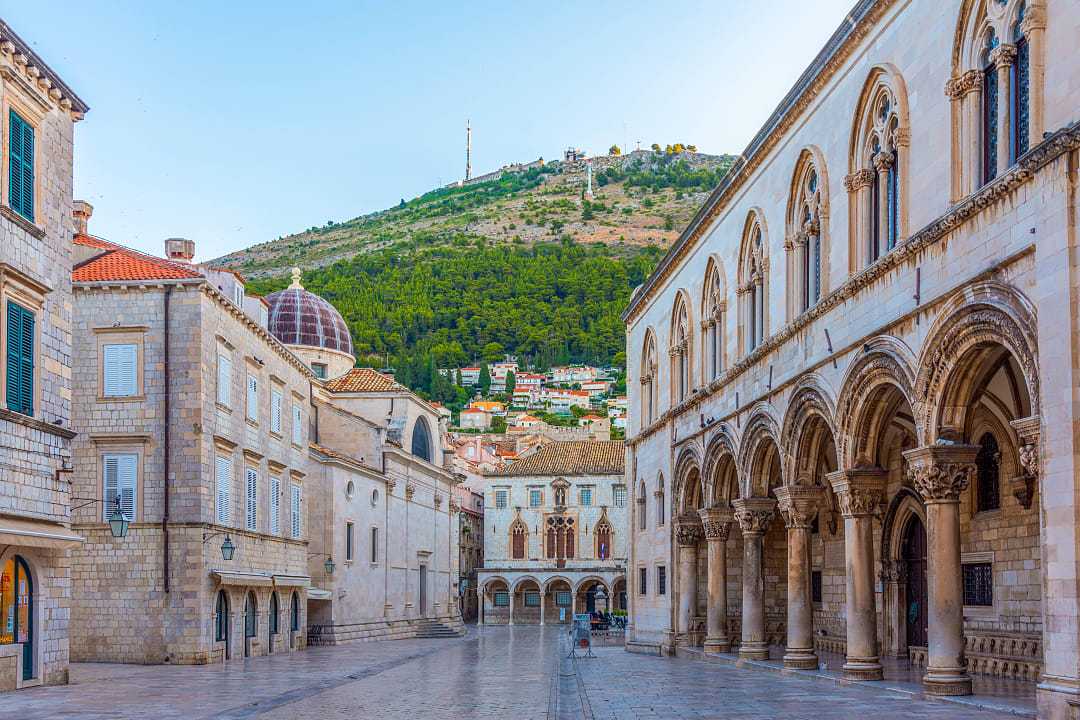
Rector's Palace in Dubrovnik, Croatia
Find inspiration from this collection of our 12 most requested European itineraries and customize them further to create your best vacation.
With so many opportunities for where to go and what to see, it can be challenging to decide what you want to do. From ancient ruins to enticing food and wine, grand palaces to spectacular vistas, Europe is endlessly captivating for every kind of traveler.
Zicasso’s sample itineraries are meant to inspire your customized vacation, which you can curate to precisely what you want for your perfect trip to Europe.
1. A Perfect Greece Vacation Package
2. untamed iceland signature tour, 3. luxury france tour from paris to normandy, 4. best of italy in a week, 5. spectacular highlights of turkey and greece vacation, 6. the perfect london, paris, and rome tour, 7. best of spain tour, 8. grand european tour, 9. highlights of croatia tour, 10. unbeaten path of italy tour, 11. best of portugal tour: 10 days in porto, lisbon, and vilamoura, 12. essential ireland vacation package, create your best europe itinerary with zicasso.
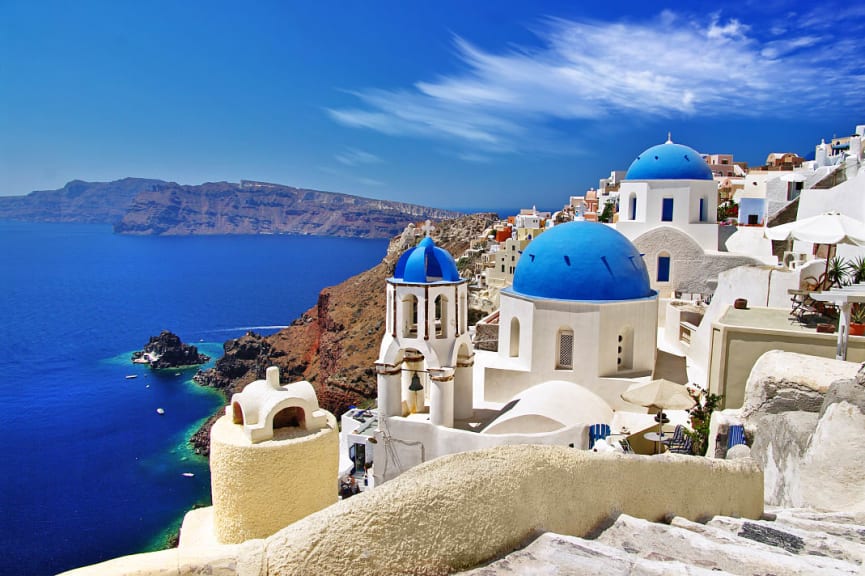
Santorini, Greece
Length: 9 days
Places Visited: Athens, Mykonos, Santorini
Why we recommend this sample itinerary:
From ancient ruins to sundrenched beaches, a relaxing ambiance to captivating seaside cliffs, A Perfect Greece Vacation Package: Mykonos, Santorini, and More embodies the best of the country.
Immerse yourself in ancient history as you walk through Athens. Witness the renowned whitewashed architecture of the Cyclades. Embrace a majestic sunset over an active caldera. On this Europe travel itinerary to Greece or one of our 10 best Greece itineraries , you can experience the beauty of the past and wonder of the present.
Learn more: Greece Vacations & Tours • Greece Travel Guide
Expert Tips for Discerning Travelers

Vatnsnes Peninsula in North-West Iceland
Length: 8 days
Places Visited: Reykjavik, Snaefellsnes Peninsula, Vatnsnes Peninsula, Skrapatungurett, Skagafjordur, Kerlingafjoll, Kerlingarfjoll
Iceland has dramatic beauty, from the sea to volcanic peaks, with the Untamed Iceland Signature Tour representing the splendor of the island nation.
With cultural grandeur featured in the Horse Gathering to the Northern Lights dancing across the night sky, searching for whales against the backdrop of icy northern waters to exploring the depths of lava fields, you can immerse yourself in the untouched charisma of Iceland’s best places to visit .
Learn more: Iceland Tours & Vacations • Iceland Travel Guide

Normandy, France
Length: 10 days
Places Visited: Paris, Deauville-Trouville, Normandy, Versailles, Giverny
Rich in variety and with treasured ancient and contemporary history, you can find the grand, the picturesque, and the drama of France captured in the Luxury France Tour from Paris to Normandy tour.
Monet’s gardens, the preserved textures of the Bayeux Tapestry, and the charismatic village of Etretat only scratch the surface. From the alluring art in the Louvre to the intricate history of the Normandy beaches, this tour balances the grace, beauty, and heritage for which France is celebrated.
If you are looking for more ideas for your European vacation itinerary in France, you can find inspiration with our 8 most romantic places in France for couples or our top 5 things to do in France with family .
Learn more: France Tours & Vacations • France Travel Guide

Florence, Italy
Length: 7 days
Places Visited: Venice, Burano, Murano, Torcello, Florence, Rome
Italy is an iconic destination with unending splendor, from the Colosseum to gondolas, vineyards to Renaissance sculptures.
The Best of Italy in a Week: Venice, Florence, Tuscany and Rome Tour captures the essence of Italy by revealing the idyllic charms of the historic craftsmanship found in Florence to the emblematic design of Rome.
Whether you prefer fairytale villages or discovering famous monuments, this tour unveils why Italy is an eternally priceless destination, and you can explore even more opportunities for discovery with our 10 best luxury Italy itineraries .
Learn more: Italy Tours & Vacations • Italy Travel Guide
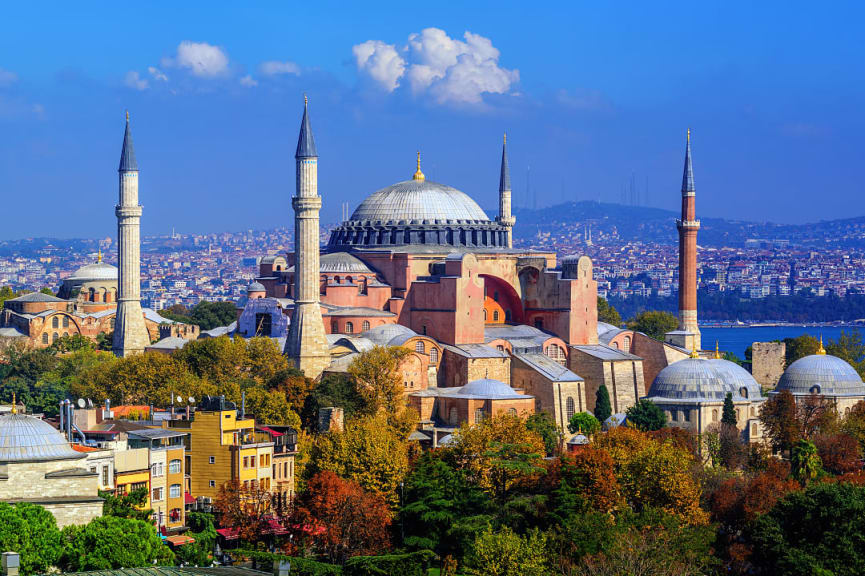
Hagia Sophia in Istanbul, Turkey
Length: 13 days
Places Visited: Istanbul, Goreme, Zelve Valley, Devrent Valley, Kaymakli Underground City, Cavusin Village, Avanos, Kaymakli, Uchisar, Athens, Crete, Chania, Heraklion, Santorini, Imerovigli, Firostefani, Fira, Pyrgos Village
The Mediterranean is an ancient wonder, with classic beauty and contemporary luxury. Spectacular Highlights of Turkey and Greece Vacation immerses you in the unending majesty of crystalline waters steeped in remarkable history.
With Venetian grandeur, Greek elegance, Byzantine opulence, Medieval strength, and Ottoman grandiosity, you can experience the true layers of the Mediterranean around Turkey and Greece, while enjoying unique connections and majestic diversity.
With so much to see and do in the Mediterranean, you can explore more inspiration for your itinerary with our 12 best places to visit in Greece or discover our 6 most romantic places in Turkey for couples .
Learn more: Mediterranean Vacation Packages • Mediterranean Travel Guide
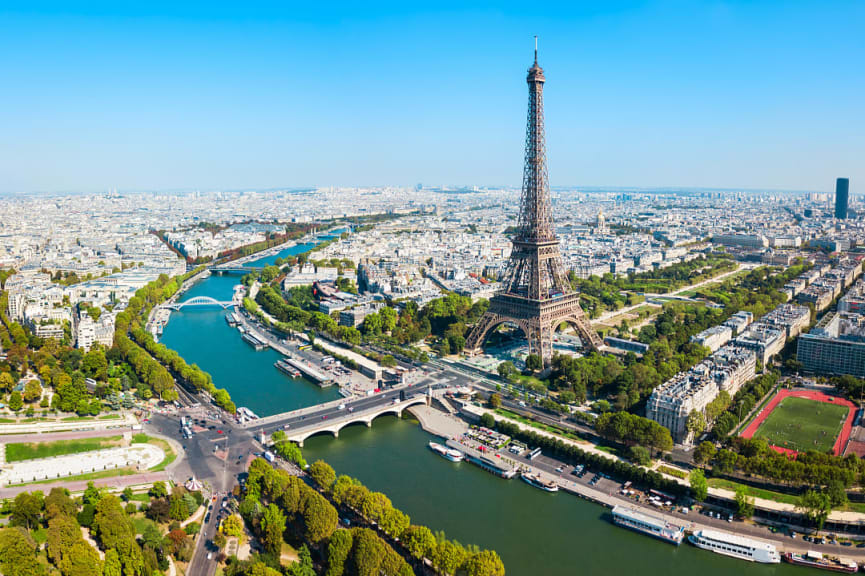
Eiffel Tower in Paris, France
Places Visited: London, Paris, Rome
The grand capitals of Europe represent the distinctive personalities of their respective countries and The Perfect London, Paris and Rome Tour displays the unique luxury of some of the world’s most recognizable cities.
Cultural heritage, urban charm, and delicious cuisine create a fascinating spectacle. From Big Ben to the Louvre, the Eiffel Tower to the Colosseum, this trip winds through cities connected by history that dates back to the Roman Empire.
With so many places to explore, you can uncover new ideas in our Rome travel guide or with our top 7 things to do in Paris .
Learn more: London & Paris Vacation Packages • Paris & Rome Vacation Packages
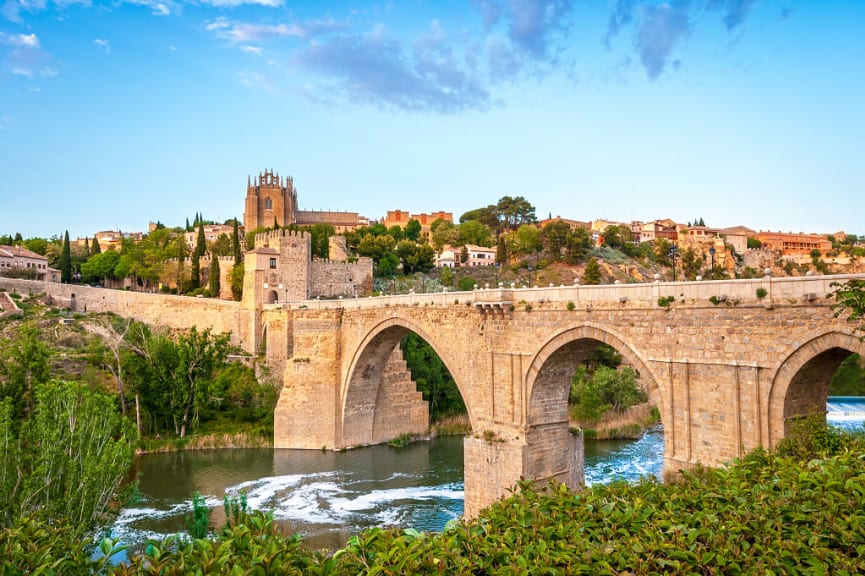
Toledo, Spain
Places Visited: Barcelona, Figueres, Girona, Madrid, Toledo, Cordoba, Seville
Spain is an experience within a destination. The Best of Spain Tour: Barcelona, Madrid, Seville & More features vibrant cities and the ineffable energy for which the country is known. Opulent palaces reflect the wealth and lavish lifestyles of Spanish royals and Moorish caliphs.
Surrealist architecture, medieval alleyways, and beautiful gardens create a sense of wonder throughout, accentuated by preserved customs found from flamenco to the cuisine.
Spain is an incredible destination, with a history spanning centuries and iconic culture that has captivated the world. You can find more ideas for your trip with our 10 best Spain itineraries .
Learn more: Spain Tours & Vacations • Spain Travel Guide
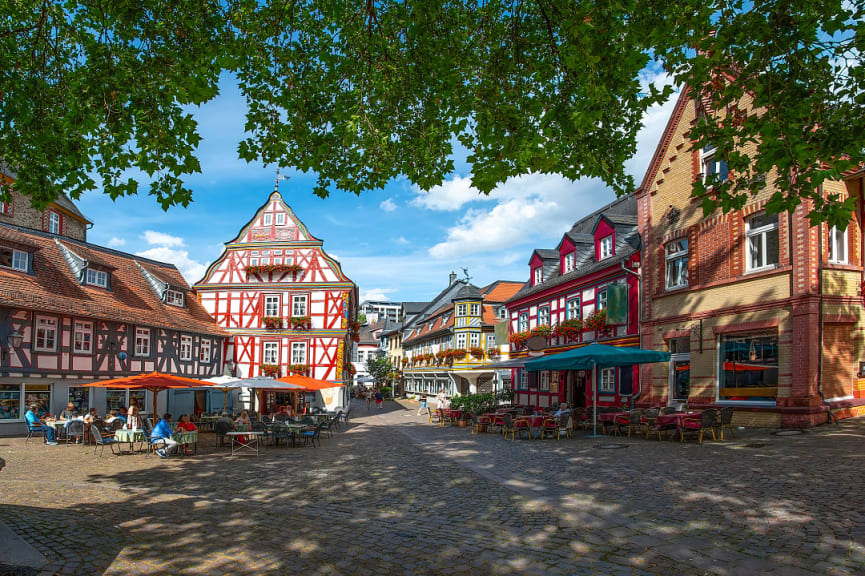
Rheingau Region, Germany
Length: 21 days
Places Visited: London, Rüdesheim, Black Forest, Rhine Falls, Lucerne, Munich, Venice, Ferrara, Rome, Florence, Pisa, Èze, Avignon, Lyon, Paris
Europe is breathtaking in its natural grandeur and cultural opulence, with the Grand Europe Adventure Tour: England, Italy, France, & More exploring connected histories and distinctive heritage.
The wealth of tradition can take you from painted wooden bridges to fairytale villages, forests featured in storybooks to artworks that changed the course of the western world. You can sample the exceptional cuisine and wine, and indulge in Europe’s striking culture, from antiquity to modernity.
By discovering our 7 perfect itineraries for first-timers to Europe , you can find even more ways to enjoy your time discovering the cities, culture, and natural beauty of Europe.
Learn more: European Tours & Vacations • Europe Travel Guide
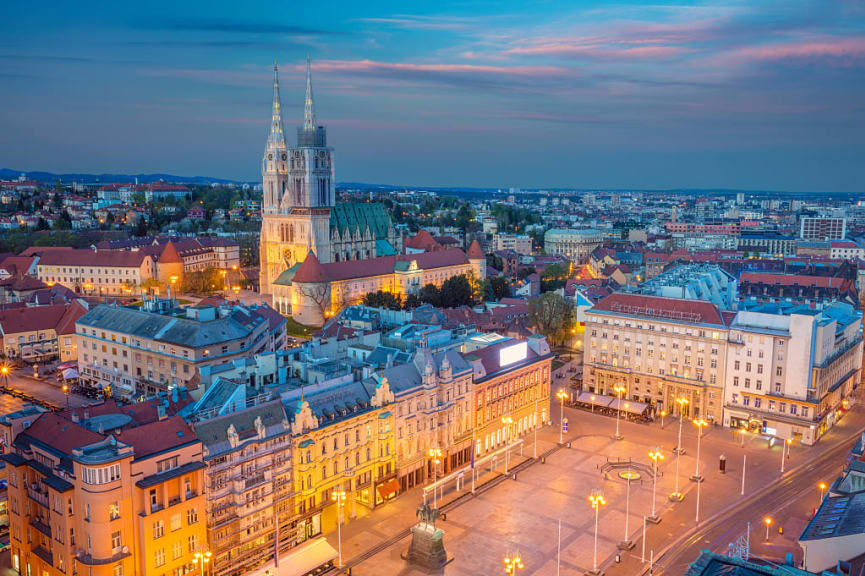
Zagreb, Croatia
Places Visited: Zagreb, Rijeka, Split, Dubrovnik, Plitvice Lakes National Park
Croatia is historic and unspoiled. The Highlights of Croatia Tour: Zagreb, Split, Dubrovnik & Plitvice celebrates the inherent beauty of the country, from Zagreb’s chic, modern ambiance to Dubrovnik’s dramatic medieval walls.
Croatia will easily enchant you with Venetian-era buildings, colorful seaside cities, and breathtaking natural scenery as you explore the best places to visit in Croatia and beyond.
Learn more: Croatia Vacations & Tours • Croatia Travel Guide
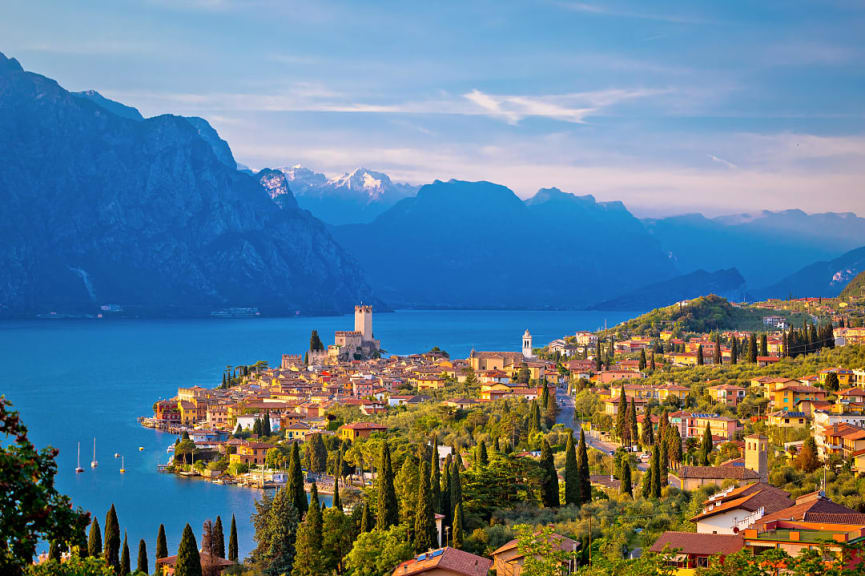
Malcesine on Lake Garda, Italy
Places Visited: Salo, Malcesine, Monterosso, Venice, Levanto, Cinque Terre
Few places in the world appreciate opulence and life’s simple pleasures like Italy. Unbeaten Path of Italy Tour: Discovering Cinque Terre, Lake Garda & Venice unveils the unique balance between contemporary luxuries and deep links to tradition.
Elegant Venetian canals, charming towns clinging to the coastal cliffs, and regal views of Italy’s largest lake, coupled with rich wines and remarkable cuisine, demonstrate the definitive ways Italian culture embraces past and present.
For more ways to indulge in unforgettable opulence, you can discover new ideas with our 10 best luxury Italy itineraries .
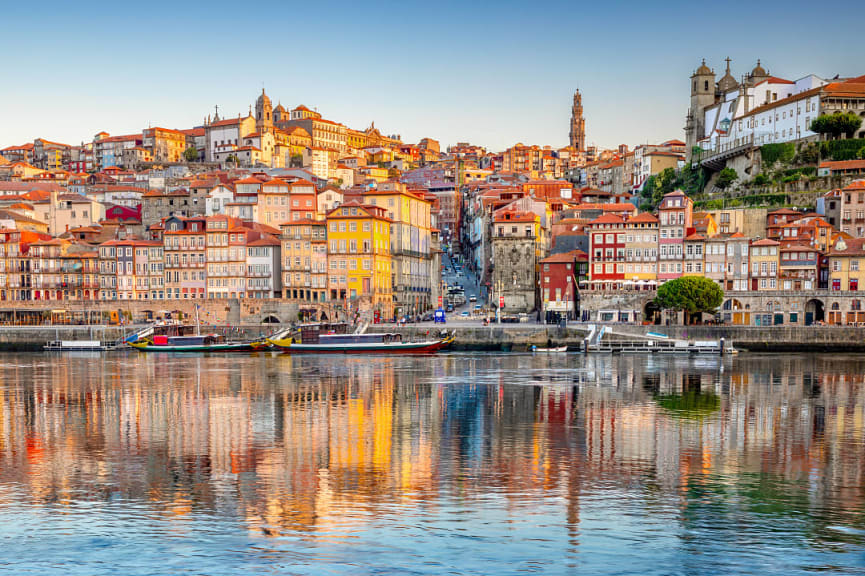
Porto, Portugal
Places Visited: Lisbon, Vilamoura, Algarve, Porto
Best of Portugal Tour: 10 Days in Porto, Lisbon, and Vilamoura shares the essential spirit and history of the country, while indulging in the flavors of the food and wine.
With a focus on the beauty of Lisbon’s neighborhoods, the delights of Porto’s culture, and the natural splendor of the Algarve, travelers can embrace the colorful combination of fairytale castles and pristine coastline, with stories of knights and vines spreading across elegant terraces.
Portugal can feel rustic and opulent, historic and contemporary all at the same time as you experience the top things to do in Portugal .
Learn more: Portugal Tours & Vacations • Portugal Travel Guide

Trinity College library in Dublin, Ireland
Length: 11 days
Places Visited: Dublin, Cork City, Killarney, County Wicklow, County Clare, Killarney National Park, Dingle Peninsula, Slea Head, Aran Islands, Galway, Connemara
Mysterious, mystical, and enchanting, the collective wonders of nature and culture combine during the Magnificence of Ireland Luxury Tour: Cultural Charm to Natural Beauty .
The treasures of the Emerald Isle far surpass outdated ideas of pots of gold and clovers, with heritage and legend adding rich foundations to contemporary life.
With colorful seaside towns, coastal cliffs, rugged castles, and grand estates, exploring Ireland can feel like walking through a storybook. Uncover local histories and a national culture steeped in the scenery itself as you explore the best places to visit in Ireland in luxury.
Learn more: Ireland Tours & Vacations • Ireland Travel Guide
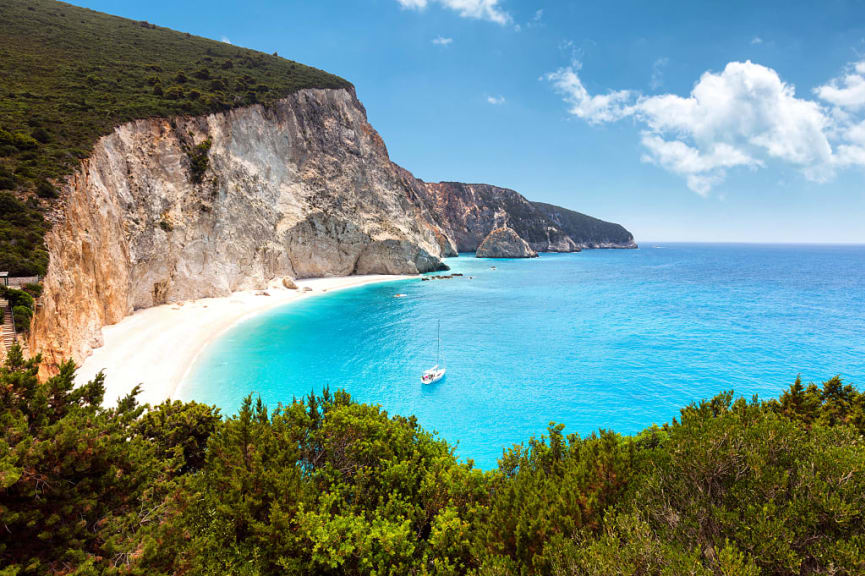
Lefkada, Greece
Europe enjoys a remarkable heritage balanced with contemporary culture. Your Europe travel specialist understands how to customize any trip to your preferences for an experience personalized to your goals.
From cooking classes to Michelin-starred restaurants, private tours of ancient wonders to secluded beaches, you can find more insight for your itinerary with our European tours and vacations or explore the best time to visit, where to go, and more in our Europe travel guide .
Life-Enriching Travel Designed Just for You
Trips curated by the world’s top destination experts
Concierge-level service leading up to and during your trip
Unique, exclusive experiences and insider access
Help Me Plan My Trip
Get Top Travel Specialists to Help Plan Your Trip
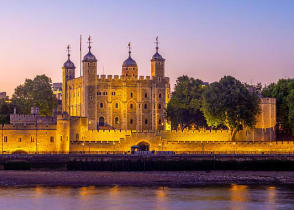

Europe Travel Guide
Last Updated: April 18, 2024

From beautiful Paris to smoke-filled coffeeshops in Amsterdam, Oktoberfest to La Tomatina, Europe is a massive, diverse continent with an unlimited assortment of things to see and do. You won’t have any problem filling your time, whether you’re backpacking Europe for a few months on a budget or just spending a few weeks there on a well-earned vacation.
The continent boasts wonderful beaches, historical architecture, amazing wine, and tons of world-class festivals. Every country is incredibly different from the next too, providing limitless variety in what you do during your trip.
I first backpacked Europe in 2006 and was hooked immediately. I’ve been visiting every year since, have run tours around the continent, and even wrote a book on traveling in Europe . It’s a destination I love and never get tired of exploring.
This guide will give you an overview of Europe and the tips and tricks you need to start planning your trip. I’ve also written extensive travel guides to each country on the continent (linked below in this post) so you can get more in-depth information for your specific itinerary too!
Table of Contents
- Things to See and Do
- Typical Costs
- Suggested Budget
- Money-Saving Tips
- Where to Stay
- How to Get Around
- How to Stay Safe
- Best Places to Book Your Trip
- Related Blogs on Europe
Click Here for Country Guides
Top 5 things to see and do in europe.

1. Tour the Greek Islands
These islands are the mecca of summer beach fun and each is unique in its own great way. There’s Ios (beach party central with archeological ruins and awesome boat tours); Kos (ancient ruins and nature); Crete (Bronze Age ruins of Knossos, hiking, beaches, and wine), Santorini (iconic blue water, white buildings, and local wineries); Mykonos , (the upscale party island with beautiful beaches, villages, and sunsets), Naxos (best island in the Cyclades). Plus, Milos, Corfu, Lemnos, Zakynthos, and so many more! With hundreds of islands in the country, you can always find what you are looking for!
2. Ride the rails
Europe is famous for its international rail system. Rail passes like the Eurail Pass have been around forever and still make it very easy to get from country to country on a relatively small budget (and with lots of flexibility). Europe has some of the fastest trains in the world that travel up to an incredible 217 mph (350 kph). The whole continent is connected by trains and there’s a growing push for even more connections and long-distance, high-speed trains in order to reduce flying and help combat climate change. There’s nothing more quintessential than riding the trains in Europe and I encourage you to take as many trains as possible. It’s one of the best ways to see the continent.
3. Get lost in Paris
The “City of Lights” is everything people say it is. I fell in love with it the first time I stepped foot in Paris . The city is just magical. You have a ton of museums, cafes, jazz clubs, famous art, and beautiful architecture. I love just strolling around the streets of the Quartier Latin (Latin Quarter) or Montmartre neighborhood as it makes for a breathtaking day. Another one of my favorite things to do here is just sit in the Jardin des Champs-Élysées park and picnic like the Parisians. For something a bit different, check out the famous Catacombs and Paris Sewer Museum. With so much to offer in the way of culture, history, and gastronomy, it would take years to see everything here but you can still get a good feel of the city in a few days.
4. Go city hopping
There are so many amazing cities in Europe that we’d need a top 100 to list them all. Here are some of my personal favorites and must-see cities: London is rich in history, culture, and the famous Big Ben clock; Edinburgh is a vibrant medieval city with cozy pubs and a famous castle with a huge New Year’s Eve Party; Amsterdam has cozy coffee shops and canopied tree-covered canals; Berlin has a wild party scene, street art, and the Berlin Wall; Barcelona has tapas, beach, and unique Gaudi architecture; coastal Lisbon has colorful tiles, old tramcars, cobblestone streets and plenty of fresh seafood; Prague has a beautiful intact Old Town, incredible architecture and eclectic bars; Tallinn Estonia has beautiful medieval buildings with colorful roofs. Florence is a mecca for Italian Renaissance architecture, art history, and gelato; Stockholm mixes medieval architecture and modern art and design. Crisscross the continent, take in the culture, and enjoy all the historic cities!
5. Hit the Alps
Whether you go skiing in the winter or hiking in the summer, the Alps hold some of the most breathtaking views in all the world. You don’t even need to be an expert hiker because there are mountain trails for all levels and crystal-clear Alpine lakes. Check out the spectacular Eibsee trail loop in Bavaria at the foot of Die Zugspitze, Germany’s tallest mountain, for the clearest, multi-colored, sparkling lake you’ve ever seen. Or the Männlichen Kleine Scheidegg Panorama trail in Switzerland’s stunning green and snow-capped Alps. Or visit Italy’s Dolomites in South Tyrol for the scenic Seceda trail. The Alps have trails for every fitness level and in every season.
Other Things to See and Do in Europe
1. tour amsterdam.
I love Amsterdam so much that I lived here for a short period of time in 2006. Here cobblestone and brick streets weave around lovely canals as people ride their bikes to and fro. My favorite things to enjoy here are Amsterdam’s vibrant art and music scene and there are also a ton of interesting museums here like the Anne Frank House, FOAM, the history museum, and the hemp museum. Be sure you get out of the center into Jordaan and Oost with their wonderful outdoor cafes and fewer tourists. Also, a visit to Amsterdam wouldn’t be complete without a canal cruise to visit the many islands and there are many to choose from that include snacks and drinks, sunset cruises, live guided tours, and more.
2. Hang out in Barcelona
Barcelona is a city that goes 24 hours a day, 7 days a week. It truly could give NYC a run for the “city that never sleeps” title. Be prepared for late-night dinners and parties until dawn. Besides a great food and nightlife scene, there is a wonderful beach, tons of Gaudi architecture (including the fairytale-like Parc Güell, as well as the iconic Sagrada Familia , which has been under construction for over 100 years!), incredible food tours, one of the best history museums in the country, and lots of outdoor spaces. What I love about Barcelona is that when you’re ready to chill, you can wander around Parc de la Ciutadella and marvel at the majestic fountains, plant life, and buildings created from an ornate military fortress.
3. Visit Berlin
Hip and trendy Berlin is an energetic destination. It is one of Europe’s most affordable capital cities, with a vibrant music and art scene and a growing foodie movement. Be sure to spend some time learning about the city’s darker history via the many excellent museums, memorials, and landmarks. The East Side Gallery, a section of the Berlin Wall that’s now painted with murals, and the Memorial to the Murdered Jews of Europe are two especially powerful reminders of Germany’s past. For all periods of German history, don’t miss the Deutsches Historisches Museum (German Historical Museum) – it’s one of the best history museums in the world. Once you’ve had your fill of history, relax in Berlin’s many green spaces, from Tempelhof Field, the site of a former airfield and popular local hangout spot, to Tiergarten, a tree-covered former hunting ground for 17th-century aristocrats.
4. Drink beer at Oktoberfest
Oktoberfest is a must for anyone going to Germany at the end of September. While not a budget option since beers now cost 15 € a maß, I love the energy and friendly camaraderie this event inspires. For two weeks, millions of people from all over the world gather for lots of beer, excitement, music, and wild fun. Watching thousands of people sing together, raising quart-sized beer mugs for endless toasts, and enjoying the general party atmosphere makes you feel good about the world. (Or maybe that’s just the beer?) Just be sure to book your accommodation well in advance and be prepared to pay top prices for them. If you don’t have an outfit, don’t worry, there are plenty of shops even at the main train station where you can buy a Bavarian dirndl dress and men’s lederhosen.
5. Experience London
Get a taste of English culture in diverse London . The museums here are some of the best in the world (most are free) and include the Tate, the British Museum, the City Museum, the National Gallery, the Historical Museum. There’s no shortage of iconic sights here as well, with Big Ben, the House of Parliament, the London Eye, the Tower of London, Tower Bridge, and of course, Buckingham Palace. I love London’s diversity because of the countless international eateries with great food and wonderful pub culture, perfect for after a long day seeing the sights. Head to Brick Lane on the weekends for some amazing food and craft markets. I prefer Paris to London, but there is something sophisticated and fun about London. Just watch those pints — London is not a cheap destination!
6. Get outdoors in Scandinavia
My favorite region in Europe is Scandinavia. The quality of life here is high, the people are beautiful and friendly, and the cities are clean and historic. Cycling the cities, taking canal tours, hiking the vast forested areas, archipelago hopping, enjoying fika (a Swedish coffee break), and warming up in saunas are just a few of the popular activities that await you here. True, this area of Europe is not cheap, but there are plenty of ways to reduce your expenses. Don’t let the high prices scare you away. Highlights for me include Copenhagen , Stockholm , Gotland, Norway’s fjords, and Lapland in Finland .
7. Get enchanted in Prague
Prague has an amazing history and is one of the most beautiful and picturesque cities I’ve ever seen. Highlights include the 9th-century Prague Castle, the magnificent Charles Bridge (built in the 14th century and one of the oldest standing bridges in the world), the 10th-century old square with its iconic astronomical clock, and the winding Jewish Quarter. Even if you only have a few days there don’t miss the free walking tour which is one of my favorites in Europe and the best way to learn about the Old Town and the tragic history of the city that went from thriving Bohemian capital of art, music, and literature to part of the Iron Curtain after WWII. Some of my favorite gems here include the fantastic black light theater shows in 4D and the one-of-a-kind medieval dinner show in an old tavern complete with musicians and jugglers not to mention hearty food and drinks. During the weekends it heaves with people enjoying the bars, cheap beer, and delicious food so try to visit during the week (and in the spring or fall) to beat the crowds.
8. Relax on the French Riviera
Here, you can pretend to live the high life for a little bit. Have fun in the sun, relax on the beach, swim in azure blue water, hobnob with the rich and famous, and sail on (or gaze at) gigantic yachts. As for cities, Nice is nice with its palm-tree-lined promenade, old town, and many art museums. If you want to go see how the rich and famous live, spend an afternoon checking out Cannes to soak up some glamorous vibes on La Croisette where they hold the famous Cannes Film Festival. The kingdom of Monaco with its tiny streets, beautiful buildings, and world-famous casino is just a skip away too.
9. Enjoy the great outdoors in Interlaken
Located in the beautiful mountains of Switzerland, Interlaken is a gorgeous place to unwind with fantastic hiking, delicious hot chocolate, and plenty of outdoor sports. The area is full of natural attractions to explore, including the St. Beatus Caves (complete with a legendary dragon), the cascading 500-meter-high (1,640 feet) Giessbach Waterfalls, the Jungfraujoch mountain railway (which leads to the highest train station on the continent), and a plethora of lakes (hence the town’s name). It’s a good alternative to all the cities and museums. Interlaken is also a popular party destination for backpackers and other young travelers. By far, my favorite scenic and visually stunning trail was the Oberberghorn panoramic hike, where you can wander the green mountain ridge ogling the amazing views and the turquoise-blue Brienzersee.
10. Experience history in Rome
In this thriving historical city, you can’t walk two feet without stumbling over a ruin, making Rome a history buff’s dream. Its tiny streets are perfect for wandering as you explore the Colosseum, see the Forum and Palatine Hill, visit the Pantheon, spend time in Vatican City, admire the Spanish Steps, and toss coins into the famous Trevi Fountain. The skip-the-line tickets can definitely be worth it so you don’t waste time waiting outside attractions. Rome also has amazing food (it’s Italy, after all) and nightlife. Visit the Trastevere area for a taste of “local” Rome and chill bars. It’s my favorite area in the city because you feel like you’re in a small village in the middle of a big city.
11. Hike around the Cinque Terre
Cinque Terre is my favorite part of Italy. These five beautiful cliffside towns are perched near warm waters and beautiful olive and grape groves. There are wondrous and strenuous hikes in these hills; for a real challenge, take trail #8. Or just walk the coastline for something less difficult. Many activities here revolve around the coastline: kayaking, swimming, having a beach picnic or visiting the Technical Naval Museum. If you happen to be here in December or January, don’t miss the Nativity Manarola, the world’s biggest lighted nativity scene.
12. Tour Krakow
Krakow looks like it stepped out of a medieval postcard. It’s a hip, trendy, and youthful city that’s the center of education in Poland, meaning there are a lot of university students here. Most travelers come to party here (the vodka is cheap) but try to enjoy the city’s history and food besides just the bars. Walk the Royal Road through the Old Town to the 13th-century Wawel Castle, tour Schindler’s Factory (where Schindler saved over 1,200 Jews during World War II), and visit the sobering Auschwitz-Birkenau concentration camp. You can also take a fascinating day trip to the UNESCO World Heritage Wieliczka Salt Mine, a 13th-century mine with cavernous chambers, statues, chapels, chandeliers, and cathedrals all carved out of salt.
13. Visit the ruin bars in Budapest
The coolest nightlife in all of Europe is found in Budapest . Built in abandoned buildings, ruin bars feature funky art installations, repurposed furniture, and quirky decor. They are amazing, fun, and great places to meet locals, as people of all ages flock here. Open since 2001, Szimpla Kert is the original ruin bar and one of my favorites, along with Instant-Fogas Complex, which takes up an entire building and is actually many different bars in one. Don’t skip the ruin bars — they’re one of the most unique things about the city!
14. Explore Cornwall
The best part of England is outside London, yet unfortunately, not a lot of travelers leave London. Head west to the area of Cornwall for cheaper prices, welcoming locals, natural beauty, great hiking, rolling hills, plenty of medieval castles, and picturesque small towns. If you like biking, the Camel Trail from Bodmin to Padstow is worth the trip and you even pass by a local vineyard. It’s an easy way to spend a day (and it’s pretty flat so it’s not too hard to do.) Plus, I had the best fish and chips in Cornwall! Overall, it’s what you think of as “traditional England.”
15. Walk the Camino
El Camino de Santiago (The Way of Saint James) is an ancient pilgrimage route that stretches from France all the way across northern Spain. It is a 500 mile (800 km) trail that winds through incredible terrain, ending in Santiago de Compostela at the cathedral where St. James is supposedly buried. As a pilgrim, you get a “pilgrim’s passport” which allows you to stay in affordable pilgrim-only hostels, making this a surprisingly budget-friendly adventure. While it usually takes over a month to complete, you can just walk a section if you don’t have the time. To receive a “Compostela” (certificate of completion), you just need to walk the last 62 miles (100 km), which generally takes 4-5 days.
16. Throw tomatoes during La Tomatina
By far my favorite festival, the largest food fight in the world happens during the last Wednesday of August in Bunol, Spain. What started in 1945 as a local brawl has turned into a massive event drawing tens of thousands of people from all over the world. For about an hour, everyone throws tomatoes at each other, leaving streets ankle-deep in tomato juice. Afterward, everyone walks down to the river, cleans off, and then heads to the town square for sangria and music.
17. Find Dracula in Romania
Not a lot of people visit Romania but this underrated country in Eastern Europe has undiscovered yet picturesque medieval towns like Brasov (home to “Dracula’s castle”), Sighisoara, and Sibiu; gorgeous beaches on the Black Sea; and incredible hiking in the Fagaras Mountains — all at dirt-cheap prices. Other major sights include frescoed Byzantine monasteries, the steepled wooden churches of Transylvania, the hip university town Cluj-Napoca, the post-communist capital of Bucharest, and the Danube Delta, a huge nature reserve.
18. Drink whisky in Islay
Whisky has a long history on Islay , an island off Scotland’s west coast. It’s been made there since the 16th-century — first in backyards and then, starting in the 19th-century, in large distilleries. Over the years, whisky from the island came to be considered a specialty and was used to flavor a lot of other blends on the mainland. There are currently nine working distilleries on the island, all located along the island’s shores, with Laphroaig, Ardbeg, and Lagavulin being the most famous. Most distilleries here make single-malt Scotch, meaning that only one type of grain (barley) is used. My visit here was amazing and, even if you don’t like whisky, there are tons of good hikes and walks throughout this magnificent island.
19. Explore Iceland
Iceland is a magical country with majestic waterfalls, hidden hot springs around every corner, and sweeping vistas unlike anywhere else in the world. After my first visit, the country quickly became one of my favorite countries. With whale watching in the summer, the northern lights in the winter, and geothermal baths for soaking in year-round, there really is no bad time to visit! While Iceland’s main draw is the epic natural landscapes, it’s worth spending a couple of days in Reykjavik with its café culture, artsy feel, and brightly colored wooden row houses.
20. Sail the Croatian coast
With calm winds, short distances, a coastline littered with over 1,000 islands, and countless historical sites, Croatia is one of the world’s best sailing destinations. If you can, go during the shoulder season when you can find some great deals. Plan to stay at least a couple of days on one of the islands, with the most popular being Brac, Hvar, Krk, Cres, and Lošinj. However, don’t be afraid to get off the beaten path and explore some of the lesser-known islands such as Silba, Vis, and Lastovo. If you want to splash out and spend a week partying on a yacht, check out The Yacht Week, which hosts week-long parties, complete with DJs, from May-September. You can book a full boat to share with friends or just a cabin if you’re traveling solo. Prices start at 5,250 HRK per person and go up to 9,300 HRK.
21. Explore the Balkans
While the Balkans have become more popular with backpackers in recent years, it’s still largely overlooked by most budget travelers, despite being an extremely budget-friendly region. The Balkan peninsula is home to great (and again, overlooked) wine, beautiful medieval towns like Kotor and Mostar, stunning mountainous landscapes, beautiful pebble beaches, coffee culture, fresh, hearty yet inexpensive food, and museums covering the area’s history, including the most recent turbulent events of the early 1990s. I especially loved my time in Albania . Don’t miss the beautiful beaches in Ksamil, nicknamed the “Maldives of Europe’ as well as the mountain village of Gjirokastër, which was occupied by Romans, Byzantines, and Ottomans. The Balkans have so much to offer for every budget and every country has its unique cultural flavor.
22. Take a wine tour in the Loire Valley
Located in central France, the picturesque Loire Valley is a UNESCO World Heritage site and stretches 280 kilometers (174 miles) along the Loire River. One of the major wine-producing regions of France, the area is home to some of the best wines in the world, with over 1,000 vineyards open to the public. Even those who don’t drink wine will enjoy the beautiful small towns, great food, and the region’s over 300 impressive chateaux. I loved the medieval Chenonceau Castle and Chateau Villandry and the small villages like Saint-Florent-le-Vieil. Spring and Autumn are my favorite times to visit because you can go biking and do outdoor activities when it’s not too hot and there are fewer people. It’s an area not to be missed.
23. See Fado in Portugal
Fado is an important musical tradition in Portugal , originating in Lisbon and stretching back some 200 years. The word “fado” likely stems from the Latin word for fate, and it’s very haunting, poetic, and emotional music. Most of the songs follow themes of loss and mourning, and the music was popular with the working class (especially sailors). Performances normally take place in restaurants during dinner. In Lisbon, head to Clube de Fado, Tasca do Chico, Parreirinha de Alfama, or Senhor Vinho.
24. Tour green Slovenia
Slovenia is one of Europe’s least-visited destinations, which is mind-blowing to me because it’s an amazing place to visit. Slovenia offers all the beauty of Western Europe but at a fraction of the cost and with a fraction of the crowds. Perfect for outdoor adventure lovers, Slovenia offers rugged mountains, untouched landscapes, fantastic ski resorts, plentiful wine, sprawling cave systems, incredible food, and postcard-perfect lakes, such as the famous Lake Bled with its castle on an island. I loved Piran, Slovenia’s often overlooked coastal Venetian-style harbor town that was actually founded 3000 years ago. Stroll around its beautiful windy cobble-stoned streets, beautiful plazas, and take advantage of the many affordable restaurants right on the water. Make sure to also spend a few days in the country’s capital, Ljubljana, known as one of the continent’s greenest and most livable cities. Take a river cruise to see the city and enjoy the friendliness of the locals.
For more information on specific countries in Europe, check out the guides below:
- Albania Travel Guide
- Austria Travel Guide
- Belgium Travel Guide
- Belarus Travel Guide
- Bosnia & Herzegovina Travel Guide
- Bulgaria Travel Guide
- Czechia Travel Guide
- Croatia Travel Guide
- Denmark Travel Guide
- England Travel Guide
- Estonia Travel Guide
- Finland Travel Guide
- France Travel Guide
- Germany Travel Guide
- Greece Travel Guide
- Hungary Travel Guide
- Iceland Travel Guide
- Ireland Travel Guide
- Italy Travel Guide
- Latvia Travel Guide
- Lithuania Travel Guide
- Malta Travel Guide
- Moldova Travel Guide
- Montenegro Travel Guide
- Netherlands Travel Guide
- Norway Travel Guide
- Portugal Travel Guide
- Poland Travel Guide
- Romania Travel Guide
- Scotland Travel Guide
- Slovakia Travel Guide
- Slovenia Travel Guide
- Spain Travel Guide
- Sweden Travel Guide
- Switzerland Travel Guide
- Ukraine Travel Guide
Europe Travel Costs

Accommodation – Accommodation prices vary greatly by region. In Western Europe, hostel dorm rooms cost between 25-45 EUR per night, depending on the room’s size and the popularity of the hostel. I stayed in a 6-bed dorm in Berlin for 20 EUR, while the same one would have cost me around 45 EUR in Paris. A room in Paris costs on the higher end and a room in cheaper Athens costs on the lower end.
In Eastern Europe, hostel dorm rooms cost between 10-15 EUR per night depending on the size of the dorm room and the popularity of the hostel. The further east you go, the cheaper it gets. Expect to pay around 30-60 EUR per night for a private room that sleeps two.
In Scandinavia, hostel dorm beds cost around 25-45 EUR, while private rooms are 65-80 EUR. Budget hotels start around 85 EUR.
Most accommodations offer free linens, free Wi-Fi, and a lot offer free breakfast, but it’s important to check specific websites for exact amenities.
Campsites cost between 10-15 EUR per night for a basic plot for two without electricity.
Food – Food traditions in Europe run deep, stretching back centuries to become integral parts of each country’s culture. From baguettes in France to tapas in Spain, from hearty Eastern European stews and goulash to the fresh vegetables and olive oils of the Mediterranean, European cuisine varies as much as the countries themselves. Food prices differ greatly across the continent, so check individual country guides for specifics.
But no matter where you are, even in the more expensive countries, finding places to eat within your budget is easier than you might think. Throughout Western Europe, you can find small shops, street food stalls, or food trucks where you can get sandwiches, gyros, kebabs, slices of pizza, or sausages for between 3-7 EUR. These shops are most often found in train stations, bus stations, and main pedestrian areas, and offer cheap food alternatives that can have you eating on 12-17 EUR per day. Fast food (think McDonald’s) costs around 7-10 EUR for a combo meal.
Turkish, Middle Eastern, and Vietnamese eateries abound in Germany, while Indian food is incredible and everywhere in the United Kingdom. Meals at these restaurants usually cost between 8-12 EUR.
Restaurant meals in casual, traditional eateries generally cost around 13-25 EUR for a main dish and drink. Food is much cheaper in the east than in the west, and in the west, northern regions like Scandinavia and the UK are more expensive than southern countries like Spain, Portugal, and Italy.
In Eastern Europe, even if you are eating out for all your meals, you can still get by on a food budget of as little as 15 EUR per day.
For drinks, a pint of beer is 2-5 EUR, a glass of wine is 2-7 EUR, a cappuccino is 2-5 EUR, and cocktails range from 6-14 EUR.
If you eat out, do so at lunch and get the prix-fixe menu (two-course or three-course set menu). Restaurants offer this set menu during lunch, and with prices between 10-20 EUR, it’s a way better deal than the regular dinner menu. You can also get affordable lunches at outdoor markets. So many European cities have huge fresh food markets throughout town.
You can cook your own food for around 45-65 EUR per week. This gets you basic staples like rice, pasta, seasonal produce, bread, and some meat. You can save money by shopping at discount supermarkets like Profi, Lidl, Aldi, and Penny Market.
If you want to save big money on meals, head to one of the markets, pick up some cheese, wine, bread, meats, or anything else, and go to the park for a picnic. (Or grab a sandwich for later!) You’ll find the locals doing the same thing, and it’s one of the cheaper ways to get a true taste of local food.
Backpacking Europe Suggested Budgets
Prices for travel in Europe vary greatly depending on how far north, east, south, or west you travel. If you stick to the budget accommodations, food, and tours listed here and use all my tips on saving money, you need about 65-110 EUR per day in Western Europe, 40-50 EUR in Eastern Europe, and about 85-130 EUR in Scandinavia.
Those numbers reflect a traveler who stays in hostels, cooks some meals and eats out cheaply, enjoys a few drinks, and sticks to free and cheap activities like hiking, walking tours, and enjoying nature. This is your typical backpacker budget. You aren’t going to have a fancy time, but you aren’t going to want for anything either.
However, by getting tourist cards and rail passes, avoiding flights, occasionally Couchsurfing or camping, cooking all your meals, and not drinking, you can travel a lot cheaper. On this budget, you could do Western Europe on 35-45 EUR per day, Eastern Europe on 20-25 EUR, and Scandinavia on 50-65 EUR. That would require you to take a train or a bus or hitchhike everywhere, skip most museums, and limit how often you go out.
Generally, the suggested daily budget for Europe is 80-120 EUR. You can use the chart below to get an idea of how much you need to budget daily. Keep in mind these are daily averages – some days you’ll spend more, some days you’ll spend less (you might spend less every day). We just want to give you a general idea of how to make your budget. Prices are in EUR.
Europe Travel Guide: Money-Saving Tips
Individual country guides have more specific information on how to save money in them but here are some general tips on cutting your costs while you explore Europe:
- Picnic – This continent has a lot of little shops where you can buy pre-made sandwiches or ingredients to make your own. Many supermarkets have delis as well where you can get food to go. Buy some food, eat outside, and watch the city and its people go by. It’s a much more enjoyable and cheaper way to eat.
- Eat local and cheap – Not into picnicking? Eat at local sandwich shops, pizza parlors, Maoz, Wok to Walks, and outdoor street vendors. Avoiding restaurants and eating at a lot of the local “grab n’ go” places gives you a taste of the local cuisine at a much cheaper price. If you’re really on a budget, use your creative cooking skills to prepare meals at the hostel as well.
- Stay with a local – Hostels can add up really quickly. If you don’t have any friends with whom you can stay, consider using Couchsurfing , which connects you with locals who let you stay with them for free. Plus, they tend to also have meetups to meet other locals and travelers. It’s a great way to save on accommodation and meet a local who can share their insider tips and advice.
- Camp in a garden – A very good camping service specific to Europe is Campspace , which allows you to pitch a tent in someone’s backyard for free or for a small fee (around 10-20 EUR). All of the garden owners have profiles that tell you what services and facilities they offer. Also, many countries allow wild camping (like Sweden), which can save you a fortune if you have a tent.
- Take the bus – Budget bus companies like Flixbus can take you across the continent for cheap. I personally feel it’s best for day travel as sitting up for an overnight bus isn’t really ideal for sleeping. It isn’t glamorous, but with tickets starting at 5 EUR, you really can’t complain!
- Get a Rail Pass – Eurail Passes have saved me hundreds of dollars. If you are traveling far distances and through many countries, they are a great deal.
- Take the free city tours – One of the great things about Europe is that you can find free walking tours in all the major cities. They can be a great way to see the city attractions, take in some history, and learn your bearings without spending any money. Just make sure to tip your guide at the end!
- Plan accordingly – Plan your trip around Europe so you avoid doubling back. Transportation is a big expense so proper planning can save you a lot of money (and time). Go in a straight line or a loop. Booking your accommodation ahead helps you save as well since cheap, good places unsurprisingly get reserved first. One thing I’ve learned is that waiting until the last minute means you get stuck with expensive places or cheap places no one wants.
- Fly cheap – If you know where you are going and a train won’t do, try to book flights early. You can often get round trip fares for as little as 5 EUR from many of the European discount airlines like Ryanair or Wizz. Many capital cities have smaller airports farther from the city with ‘inconvenient’ times but cheaper fares. Keep in mind you might need to factor in an early morning Uber or taxi if the busses aren’t running and you have an early flight!
- Drink less – Those 5 EUR beers add up. Hit happy hours or pick and choose when you party. Hostel bars are a good place to get cheap drinks or buy your alcohol at the supermarket. Plus, in Europe, it’s legal to drink outside in parks, plazas, by the lakes or rivers. You’ll find you can save a lot of money by not going to bars and clubs. Partying your way across the continent will destroy your bank balance in no time.
- Get a city tourist card – Many local tourism offices sell a tourism card for all their attractions, tours, and restaurants. This card gives you free entry and substantial discounts on all the attractions and tours in a city, free local public transportation (a huge plus), and discounts at a few restaurants and shopping malls. They save a ton of money. If you plan on doing a lot of sightseeing, get one of these cards.
- Rideshare – If you’re flexible in your schedule, use the ridesharing service BlaBlaCar to catch rides with locals between cities (or countries) by paying a small fee. It’s like Airbnb but for rides. I used this service in Switzerland and, not only did I save a lot of money, but I got to meet interesting people and learn about local culture and life. Drivers are verified and it’s perfectly safe, though sometimes rides cancel at the last minute (which is why you need to be flexible). Check their ratings first and try to use rides where the person has done many trips.
- Bring a water bottle – The tap water is safe to drink in most of Europe, so bring a reusable water bottle to save money and reduce your plastic use. LifeStraw is my go-to brand as their bottles have built-in filters to ensure your water is always clean and safe.
- Get a HostelPass – HostelPass is a discount membership for hostels in Europe. Members get 10-20% off select hostels around Europe, as well as perks like free breakfast or free drinks. There are discounts on tours and activities too. It’s a great way to save money if you’re bouncing around Europe as they have hostels in 18 countries around the continent.
Where to Stay in Europe
Europe has a ton of budget accommodation options. The individual country and city guides have tons of recommendations but here’s a short list of some of my favorite budget hostels and hotels around Europe:
- The Flying Pig (Amsterdam, The Netherlands)
- Hotel 54 (Barcelona, Spain)
- Generator Hostel (Copenhagen, Denmark)
- Harcourt Hotel (Dublin, Ireland)
- Castle Rock (Edinburgh, Scotland)
- Ios Palm Pansion (Ios, Greece)
- Greg and Tom’s Party Hostel (Krakow, Poland)
- Largo da Sé Guest House (Lisbon, Portugal)
- Sophie’s Hostel (Prague, Czech Republic)
- The Yellow (Rome, Italy)
- City Backpackers (Stockholm, Sweden)
How to Get Around Europe

Public transportation – Transportation around most European cities is by tram, subway, or bus. Prices are typically around 2 EUR for a one-way ticket in Western Europe and closer to 1 EUR in Eastern Europe. Most large cities also have day passes available that offer unlimited public transportation. These passes are usually 5-12 EUR per day.
In large cities with international airports, there is usually a bus or train available that ferries travelers from the downtown core to the airport. Expect to pay around 5-15 EUR to get to/from the airport.
Bus – Buses are not quite as comfortable as Europe’s trains, although certain lines do have great amenities (like roomy seats and Wi-Fi). While buses are not the most efficient way to travel around the continent, they’re certainly dependable, reliable, and cheap. You can find last-minute rides for as little as 5 EUR. A route from Berlin to Munich is about 25 EUR, while Paris to Bordeaux can be as low as 10 EUR. Longer routes, like Amsterdam to Copenhagen, start at around 47 EUR.
Each country has its own national bus service, but some lines also take you long distances internationally. Megabus and Flixbus (which now owns Eurolines) are the most popular companies.
Train – Train travel is a great way to see Europe. Intercity train prices vary wildly from country to country, depending on whether you take the slow train or a high-speed train and how far in advance you book. For example, a high-speed train from Berlin to Munich costs around 38-60 EUR, Bordeaux to Paris is about 50-85 EUR, and Madrid to Barcelona ranges from 45-85 EUR. Non-high-speed trains and other intercity lines are a lot cheaper, generally costing about 40-50% of the price of high-speed trains. Eastern Europe inter-country trains usually cost between 45-100 EUR when the ticket is booked last minute. Short train rides of 2-3 hours within countries cost about 27 EUR.
To find routes and prices for trains around Europe, use Trainline .
You may also want to consider getting a Eurail Pass , which allows travelers to explore Europe by providing a set number of stops in a specific time period. These passes are continent-wide, country-specific, or regional. It can potentially save you hundreds of dollars.
Ridesharing/Car sharing – If your schedule is flexible, use a ridesharing service and catch rides with locals between cities (or countries). Drivers are verified and it’s perfectly safe. BlaBlaCar is the most popular.
If you’d rather rent a car yourself and find passengers to share a ride with, use Discover Cars to find the best car rental prices.
Flying – Budget airlines are so prolific that competition helps keep fares low. You can often find tickets where the fare is just 5 EUR round-trip! Companies like EasyJet, Ryanair, Wizz, and Vueling offer mind-blowingly cheap flights throughout Europe. Book at least a month early to scoop up great deals.
Make sure that the airport they fly into isn’t too far out of your way (transportation from the secondary airport sometimes negates the savings from using the budget airline itself).
Keep in mind that you’ll have to pay to check your baggage on these cheap flights. It costs about 25-39 EUR for one checked bag. If you wait to pay for your luggage at the gate, you end up paying almost double. Travel carry-on only to avoid this added cost.
Hitchhiking – Hitchhiking in Europe is very safe, but it’s not for everyone. Hitching is quite common around the continent and I’ve met a number of travelers who have done it (I, myself, traveled this way in Bulgaria and Iceland). Some countries are very supportive (Romania, Iceland, Germany) while others may be a bit more time-consuming (Italy, Spain). HitchWiki is the best website for hitchhiking info.
Here are my suggested articles for how to get around Europe:
- 7 Cheap Ways to Travel Across Europe
- Are Eurail Passes a Giant Scam or Do They Save You Money?
- The Ultimate Guide to Finding Cheap Flights
When to Go to Europe
There’s no wrong time to visit Europe. Peak season is summer, when Europe gets crowded and August is the time most European families are at the beach so everything becomes more crowded and expensive. But the overall atmosphere and weather are great during this time, so it’s still worth visiting during peak season (just book your accommodation in advance — especially in August). Keep in mind it’s much hotter in summer so if you like AC, be sure to check that your hostel or hotel has it before you book. You can expect the most crowds in Western Europe. For this reason, I feel summer is a great time to visit the Balkans and the Baltics because many people head to the beaches in Spain, France, Italy, Croatia, and Greece.
Shoulder season is spring and fall (April-May and September-October). It’s still warm during this time but there aren’t as many crowds and prices are cheaper. This is my favorite time to visit hotspot places like Spain, Croatia and Greece, where it’s still hot enough to swim in the sea but you have way more room on the beach. It’s also a good time to go hiking in the Alps in Germany, northern Italy, Slovenia and Switzerland because it’s cooler during the day so you’re much less sweaty on the mountain without shade. The weather is good, the crowds are smaller, and the prices lower.
Winter is from November to February but in much of Central Europe, it’s wet and cold until March or April. It gets cold, even as far south as it gets (like Greece). On the other hand, the Christmas season has Christmas markets and festivals galore! Even if it’s cold, this is a cultural tradition you can’t miss and why I love Europe in December. There is hot mulled wine, sweets, and plenty of hot snacks, which vary by country. One of my favorites is Prague because the Old Town Square is lit up with a gigantic tree with aromas of crispy cinnamon pastries and mulled wine. Berlin takes their Christmas markets very seriously, so there are around 80 different markets with special themes.
Winter is fantastic in Europe for skiing and snowboarding but it doesn’t have to break the bank if you plan carefully. While Switzerland and France are probably the most famous, they are also expensive, but there are plenty of budget winter options.
How to Stay Safe in Europe
Europe is very safe for backpacking and solo traveling, even if you’re traveling solo, and even as a solo female traveler. Violent crimes against tourists are very rare. In fact, some of the safest countries in the world are in Europe. (I wrote a whole article about how Europe is safe to visit right now .)
That said, there are scams and petty crimes you should watch out for, especially around popular tourist landmarks. The most important thing to be aware of is pickpockets in crowds and on public transportation. Zip your bags and don’t put your mobile phone in a jacket pocket where someone could quickly take it. This should be obvious but don’t flash your money to let everyone know you have a huge wad of cash.
When choosing a hostel, look for ones with lockers. It’s always a good idea to carry around a padlock or combination lock. Most hostels are safe and travelers respect each other and I’ve rarely seen things happen to people’s valuables. Nevertheless, I always think that prevention is better.
As anywhere, the standard precautions apply (never leave your drink unattended at the bar, never walk home alone intoxicated, etc.). When at the bar, always keep an eye on your drink. Avoid walking home alone at night if you’re intoxicated.
For female travelers in particular, it’s always a good idea to have a bit of extra money on you just in case you need to take an Uber or taxi back by yourself so you don’t take unnecessary risks to save money. If you’re using apps to date people while traveling, please use common sense and meet in public places. Since I’m not a female traveler, please check out the numerous female bloggers who have first hand knowledge of this.
If you’re worried about scams, you can read about common travel scams to avoid here.
If you rent a vehicle, don’t leave any valuables in it overnight. Break-ins are rare, but it’s always better to be safe than sorry. Be aware that the UK drives on the left and that most rental cars in Europe will have manual transmissions unless you request otherwise.
When hiking, always bring water, sunscreen, and bandaids or foot plasters. There is nothing worse than being halfway up the mountain with a blister and nothing you can do about it!
Likewise, when at the coast, don’t forget not only to wear sunscreen! I can’t tell you how many times I’ve seen people get burnt to a crisp the first day. Be sure to check the weather before you depart and dress accordingly.
If you do experience an emergency, dial 112 for assistance.
Always trust your gut instinct. Make copies of your personal documents, including your passport and ID. Forward your itinerary to loved ones so they know where you are.
The most important piece of advice I can offer is to purchase good travel insurance. Travel insurance will protect you against illness, injury, theft, and cancellations. It’s comprehensive protection in case anything goes wrong. I never go on a trip without it as I’ve had to use it many times in the past. You can use the widget below to find the policy right for you:
Europe Travel Guide: The Best Booking Resources
These are my favorite companies to use when I travel. They consistently have the best deals, offer world-class customer service and great value, and overall, are better than their competitors. They are the companies I use the most and are always the starting point in my search for travel deals.
- Skyscanner – Skyscanner is my favorite flight search engine. They search small websites and budget airlines that larger search sites tend to miss. They are hands down the number one place to start.
- Hostelworld – This is the best hostel accommodation site out there with the largest inventory, best search interface, and widest availability.
- Booking.com – The best all around booking site that constantly provides the cheapest and lowest rates. They have the widest selection of budget accommodation. In all my tests, they’ve always had the cheapest rates out of all the booking websites.
- HostelPass – This new card gives you up to 20% off hostels throughout Europe. It’s a great way to save money. They’re constantly adding new hostels too. I’ve always wanted something like this and glad it finallt exists.
- Get Your Guide – Get Your Guide is a huge online marketplace for tours and excursions. They have tons of tour options available in cities all around the world, including everything from cooking classes, walking tours, street art lessons, and more!
- The Man in Seat 61 – This website is the ultimate guide to train travel anywhere in the world. They have the most comprehensive information on routes, times, prices, and train conditions. If you are planning a long train journey or some epic train trip, consult this site.
- Rome2Rio – This website allows you to see how to get from point A to point B the best and cheapest way possible. It will give you all the bus, train, plane, or boat routes that can get you there as well as how much they cost.
- FlixBus – Flixbus has routes between 20 European countries with prices starting as low 5 EUR! Their buses include WiFi, electrical outlets, a free checked bag.
- SafetyWing – Safety Wing offers convenient and affordable plans tailored to digital nomads and long-term travelers. They have cheap monthly plans, great customer service, and an easy-to-use claims process that makes it perfect for those on the road.
- LifeStraw – My go-to company for reusable water bottles with built-in filters so you can ensure your drinking water is always clean and safe.
- Unbound Merino – They make lightweight, durable, easy-to-clean travel clothing.
- Top Travel Credit Cards – Points are the best way to cut down travel expenses. Here’s my favorite point earning credit cards so you can get free travel!
GO DEEPER: Nomadic Matt’s In-Depth Budget Guide to Europe!

While I have a lot of free tips on Europe, I also wrote an entire book that goes into great detail on everything you need to plan a trip here on a budget! You’ll get suggested itineraries, budgets, even more ways to save money, my favorite restaurants, prices, practical information (i.e. phone numbers, websites, prices, safety advice, etc etc), and cultural tips.
I’ll give the insider view of Europe that I got from years of traveling and living here! The downloadable guide can be used on your Kindle, iPad, phone, or computer so you can have it with you when you go. Click here to learn more about my book on Europe!
Europe Travel Guide: Related Articles
Want more tips for your trip? Check out all the articles I’ve written on Europe travel and continue planning your trip:

The 7 Best Hotels in London

10 Scotland Road Trip Tips You Need to Know Before You Go

The Perfect 7-Day Croatia Itinerary

The 6 Best Hotels in Copenhagen

The 6 Best Hotels in Florence

The 7 Best Hotels in Madrid
Get your free travel starter kit.
Enter your email and get planning cheatsheets including a step by step checklist, packing list, tips cheat sheet, and more so you can plan like a pro!

- Where To Stay
- Transportation
- Booking Resources
- Related Blogs
National Geographic content straight to your inbox—sign up for our popular newsletters here

What you need to know about European travel this summer
With headlines warning of everything from flight delays to wildfires, summer travel is changing. Here’s how to make sure your trip this summer goes smoothly.
Record numbers of tourists are expected to visit Europe this summer. In the first three months of 2024, the number of international arrivals has already risen by 7.2% compared to 2019’s pre-pandemic figures, according to the European Travel Commission , with 120 million international tourists visiting the region in that time. Yet while this is welcome news for the tourism industry, some challenges remain for visitors, especially during the summer’s busy peak season, when potential flight delays, high temperatures, new laws and major events could all impact travel. Here’s what you need to know to make sure your European trip this summer goes smoothly.
1. What you need to know about flight disruptions
Increased passenger numbers, staff shortages and strikes meant there were 106.7 million delayed air passengers in Europe during peak summer months last year. More than 700,000 passengers were affected over the August bank holiday in the UK alone following a technical meltdown at air traffic control. This year, EasyJet has had to cancel over 100 flights from Paris due to a no-fly zone during the opening ceremony of the Olympic Games. Ryanair has also cut flights from its summer schedule after the delivery of several of its new Boeing aircraft was delayed. If you’re due to fly, visit the airport’s website for the latest information, and check social media for real-time updates from other travellers. Remember that you may be owed compensation if you face disruption, but rules vary, so take out a travel insurance policy as soon as you book flights.
( What should you do if your flight is delayed or cancelled? )
2. Why you should consider travelling by train
Keep your carbon footprint low, avoid airport hassle and see even more of Europe this summer by taking advantage of a whole host of new and expanded routes across the continent. New services include a high-speed route connecting Barcelona to Madrid and Seville , a sleeper train from Brussels to Prague , a daily train between Vilnius and Riga , a relaunched night train between Paris and Nice and a sleeper train from Rome to the Dolomites . Following the success of Germany’s €49 unlimited monthly travel pass last year, France has also introduced its own nationwide rail pass for the same price. However, this is only valid for those under 27 and excludes high-speed TGV trains and travel in the greater Paris region of Ile-de-France.
( 6 of the world’s best coastal rail journeys .)

3. What to do you if you’re affected by wildfires
Following unprecedented high temperatures, wildfires swept through some of Europe’s most popular tourist spots last summer, scorching parts of Tenerife, mainland Spain, Greece, Portugal and Italy. This year, protective measures have already been put in place that aim to prevent a repeat of the disaster, with Greece banning all outdoor fires from April and increasing investment in fire detection and water tankers. To ensure you’re protected if the worst happens, arrange travel insurance at the time of booking, then keep an eye on official travel advisories for up-to-date information. If you’re affected by wildfires or any other natural disasters when you’re away, follow the advice of the emergency services and evacuate when instructed, then contact your tour operator or airline for help getting home.
( What to do if you’re caught in a disaster while travelling. )
4. How big events could disrupt your travel
From Taylor Swift’s tour across Europe to the UEFA European Championship in Germany, Europe is limbering up for a summer of major cultural and sporting events. The Olympic Games in Paris are expected to attract three million more visitors than usual . This is likely to mean a greater demand for accommodation, higher prices, crowded public transport, unexpected road closures and even increased security checks in response to the heightened risk of terrorist attacks. If your holiday does coincide with an event, try to explore beyond the city itself, visit nearby tourist attractions that could be quieter than normal, or just enjoy the inevitable citywide buzz surrounding the main event.
( How to explore Paris this summer beyond the Olympics. )
5. Why you should think about overcrowding
While many destinations welcome a return to pre-pandemic levels of tourism, others are actively trying to deter visitors. In Barcelona , tour groups have been capped at 20 people, while entrance to Athens’ Acropolis is now limited to 20,000 tourists each day. Dubrovnik has already cut the number of souvenir stands by 80%, while thousands attended an anti-tourism protest in Santa Cruz de Tenerife in April. All are concerned that overcrowding leads to skyrocketing prices for locals and causes environmental damage, with increased plastic pollution, erosion of heritage sites and traffic congestion. Consider less-visited destinations instead, swapping Santorini for Folegandros an hour’s ferry ride away, Dubrovnik for Šibenik with its medieval centre and fortress, or Barcelona for the Spanish seaside city of Valencia.
( What’s the problem with overtourism? )

6. How to deal with heatwaves
2023 was the hottest year on record globally, with temperatures in Europe above average for 11 months of the year. The Mediterranean was the worst area affected, with temperatures soaring above 40°C across Italy, Spain, Turkey, Cyprus and Greece. Consider travelling outside the hottest months, between July and September, or visiting destinations further north such as Denmark, Germany, Belgium, Lithuania or Ireland which should escape the most intense heat. If temperatures do climb, wear high-factor SPF, avoid being outside in the middle of the day and wear light-coloured clothes made from breathable materials. Avoid alcohol and drink plenty of water, and keep a close eye on vulnerable people, including young children and the elderly.
7. How to avoid being caught out by local laws and taxes
Do your research before travelling to make sure you don’t fall foul of new laws. A €5 tax for day-trippers was introduced in Venice in April, for example, and will be enforced on selected dates until July. It can be paid online in advance, and those staying overnight are exempt but do still need to register. A second tourist tax of €1 to €5 per night is already applicable to overnight stays and should be paid at your hotel. Be aware that some Airbnbs ask that this is paid in cash. Other new rules in parts of Mallorca and Ibiza ban drinking on the street and prevent shops selling alcohol at night, though you will still be able to buy drinks in bars and restaurants.
Related Topics
- FAMILY TRAVEL
- CITY GUIDES
You May Also Like

How to explore Paris this summer beyond the Olympics

Would you travel by flying taxi? Here's everything you need to know
Introducing nat geo kids book bundle.

Peak fun: what's new in the Alps this summer, from trains to trails

3 European cities of innovation and what they're doing to build a better future

The ultimate Canary Islands itinerary: 48 hours in Northern Lanzarote

The best packing cubes to save space and keep you organized

A family city guide to Berlin
- Environment
- Paid Content
- Photography
History & Culture
- History & Culture
- History Magazine
- Mind, Body, Wonder
- Destination Guide
- Terms of Use
- Privacy Policy
- Your US State Privacy Rights
- Children's Online Privacy Policy
- Interest-Based Ads
- About Nielsen Measurement
- Do Not Sell or Share My Personal Information
- Nat Geo Home
- Attend a Live Event
- Book a Trip
- Inspire Your Kids
- Shop Nat Geo
- Visit the D.C. Museum
- Learn About Our Impact
- Support Our Mission
- Advertise With Us
- Customer Service
- Renew Subscription
- Manage Your Subscription
- Work at Nat Geo
- Sign Up for Our Newsletters
- Contribute to Protect the Planet
Copyright © 1996-2015 National Geographic Society Copyright © 2015-2024 National Geographic Partners, LLC. All rights reserved
Acqua Travel Shares Top 5 Benefits of Customizing One’s Own Itinerary

Frequent leisure travelers often face the challenge of rigid itineraries and impersonal group tours that limit their experiences and fail to meet their unique interests. Acqua Travel, a leading provider of custom travel solutions, addresses this issue by offering personalized itineraries that cater to individual preferences, transforming the travel experience into a truly memorable journey.
“Custom travel is about creating a journey that reflects the traveler’s interests and desires. At Acqua Travel, we excel in crafting personalized itineraries that provide unique, unforgettable experiences guided by local experts,” said an Acqua Travel representative.
Interested in experiencing Mexican culture? The best way to immerse oneself is to savor the authentic taste of tacos made on the streets of Mexico City, for example. Curious about all things Egyptian? Walk like one in Cairo and if one’s feeling a little adventurous, explore the pyramids and learn the ingenious engineering of these ancient Egyptian wonders.
Acqua Travel guarantees excellent value by collaborating with top-tier specialists who offer unmatched destination knowledge. The local guides are carefully selected to ensure that they provide the best possible experience.
Additionally, travelers enjoy peace of mind with secure online payments and comprehensive insurance coverage. By choosing Acqua Travel, clients not only enjoy a personalized and enriching travel experience but also support local economies and responsible travel practices.
Want to know more benefits of customizing one’s own itinerary with Acqua Travel? Here are five more advantages of personalization:
Flexibility and Personalization
Acqua Travel excels in providing bespoke tours, allowing travelers to tailor every aspect of their journey. Unlike standard group tours, custom tours enable travelers to choose their own activities, accommodations, and pace. Whether interested in cultural immersion or adventure, the flexibility of tailormade tours ensures a vacation that aligns with personal interests.
Local Expertise and Authentic Experiences
As mentioned previously, Acqua Travel connects clients with local travel specialists who possess in-depth knowledge of their regions. These experts possess in-depth knowledge of their destinations, ensuring travelers experience the best the region has to offer.
Private tours offered by Acqua Travel also provide travelers with exclusive access to unique and authentic experiences. Whether it’s exploring hidden gems through custom tours to India or embarking on a tailor-made adventure in another exotic location, these tours offer a depth of experience that is difficult to achieve with standard tour packages.
Cost-Effectiveness
Customizing a tour with Acqua Travel is not only easy but also cost-effective. In many cases, the price of bespoke tours can be comparable to, or even less than, large group tours. By cutting out the middleman and dealing directly with local tour operators, Acqua Travel passes on the savings to its clients, ensuring excellent value without compromising on quality.
Enhanced Comfort and Convenience
Custom itineraries designed by Acqua Travel prioritize the comfort and convenience of travelers. From selecting the best accommodations to arranging seamless transportation, every aspect of the journey is carefully planned. Travelers receive detailed itineraries and travel confirmations via email, ensuring a smooth and worry-free experience.
Unmatched Customer Support
Throughout the planning process and during the trip, Acqua Travel provides continuous support. Clients are in direct contact with local specialists who are available to answer questions, make adjustments, and offer assistance as needed. This high level of customer support ensures that any issues are promptly addressed, allowing travelers to enjoy their journey with peace of mind.
Creating a Customized Itinerary with Acqua Travel
Experienced itinerary makers say that half of the fun – if not the most – of traveling is in the process of creating a custom itinerary. With Acqua Travel creating one is not only a joyful task – it’s also engaging. The process is also straightforward to ensure clarity. Here’s a sneak peek of what it’s like to create one:
Explore Sample Tours for Inspiration
Travelers begin by reviewing sample tour ideas on Acqua Travel’s website. These serve as a starting point for customization, allowing travelers to add or remove destinations, change accommodations, and include unique experiences that best suit their needs.
Consult with Local Specialists
After selecting a preliminary tour, travelers discuss their plans with Acqua Travel’s local specialists. These experts provide valuable advice on the best travel times, top places to stay, and activities to include, helping to refine the itinerary.
Receive a Personalized Tour Plan and Quote
Acqua Travel then sends a detailed itinerary and quote, allowing for unlimited changes until the client is fully satisfied. This ensures that every aspect of the trip meets the traveler’s expectations.
Enjoy a Worry-Free Experience
Once the itinerary is finalized, Acqua Travel handles all bookings and sends a comprehensive travel package via email. Travelers can then embark on their journey with confidence, knowing that every detail has been taken care of.
Sign up for a customized tour today
By choosing Acqua Travel, clients not only enjoy a personalized and enriching travel experience but also support local economies and responsible travel practices. Acqua Travel’s commitment to sustainability includes partnering with local communities and supporting local projects.
To book a personalized tour with Acqua Travel and to start customizing one’s own unique travel experience, visit https://www.acqua.travel now.
About Acqua Travel
Acqua Travel simplifies the complexities of trip planning by offering customizable tour options across Asia, Europe, Africa, South America, and Australia. Partnering with the best local tour operators, Acqua ensures personalized itineraries, cost-effective pricing, and expert local knowledge, delivering tailored travel experiences with peace of mind and responsible travel practices.
Media Contact Company Name: Acqua Travel Contact Person: Bilal Email: [email protected] Country: Canada Website: https://www.acqua.travel/
Source published by Submit Press Release >> Acqua Travel Shares Top 5 Benefits of Customizing One’s Own Itinerary
Business Insurance is a singular, authoritative news and information source for executives focused upon risk management, risk transfer and risk financing.
Information
- Privacy Policy
- Terms & Condition

COMMENTS
Days 12 - 14: Rome. Your next stop in Italy, and the last stop on your Europe itinerary, is the Italian capital of Rome. Founded almost 3,000 years ago, Rome is absolutely stuffed full of historical wonders and attractions. We think that to do Rome justice, you should spend three days here.
On this 10 day tour of Europe, enjoy an intimate Mediterranean getaway with thousands of years of history at your fingertips. Cyprus, Malta, and Gozo are seaside destinations home to gorgeous beaches, ancient archeological sites, and endless island fun. Day 1-2: Protaras, Cyprus. Day 3-5: Paphos, Cyprus.
11 Incredible 2-Week Europe Itinerary Options. ️1. London & Paris: 2-Week Europe Itinerary. ️2. Amsterdam, Bruges & Luxembourg City: 2-Week Europe Itinerary. ️3. Chamonix, Courmayeur & The Matterhorn (Zermatt): 2-Week Europe Itinerary. ️4. Barcelona & The French Riviera: 2-Week Europe Itinerary.
Alpine Escape: Bavaria, Switzerland's Jungfrau Region, Milan, and Lake Como. If your dream Europe trip involves plenty of Alpine views with a side of cities, this is the itinerary for Europe in 2 weeks for you. Bavaria. Start your trip in Bavaria, the land of castles, beer, and outdoor delights.
Table of Contents. Day 1: Bonjour, Paris! Day 2: Parisian Dreamland! Day 3: A Parisian Paradise! Day 4: Dutch Delights in Amsterdam! Day 5: Art and Culture Galore in Amsterdam! Day 6: Artistic Amsterdam Adventures! Day 7: Buongiorno, Rome!
Best of Greece: Athens-Paros-Naxos-Santorini. 10 days in Greece is a good amount of time to get a first taste of what the country has to offer. This itinerary includes a visit to Athens, the country's capital, and stops at three of the best Greek islands, Paros, Naxos, and Santorini.
This 7-day itinerary is a must-do in Europe for the rich history, culture, and food and drink. Bavaria is one of the most beautiful parts of Germany, and Salzburg one of the most visited destinations in Austria. A view of historic Munich. In Munich, try traditional Munich food like white sausage, pretzels and beer.
Most fairytale stories are plucked straight from the lovely and quaint villages scattered throughout France, Germany, and Austria. This 3 weeks Europe itinerary is just the ticket for a dreamy fairytale trip to see magical castles and enchanting storybook towns. Day 1-4: Paris, France. Day 5-7: Colmar + Riquewihr, France.
For young visitors and backpackers, you can probably get away with $1,000 to $1,500 for the 2 weeks trip. Accommodation in Germany, Switzerland, and Austria is costly but affordable in Poland and Czechia. Rely on using public transportation in all countries, such as buses and trains, instead of renting a car or flying.
Choose between these 16 itineraries for 10 days in Europe; cost, tips, what to do, and more. ... However, things happened last summer, I had to travel to Europe for work. But I found myself with ten days to spare and planning an itinerary. That research took me to this situation - what countries are best to combine if I only have 10 days in ...
Cinque Terre, Italy - Approx. 2-4 days (+1 full travel day) Take the 6-hour train ride from Nice, France to Cinque Terre. Cinque Terre is a string of five centuries-old seaside villages situated on the rugged Italian Riviera coastline. If you just want to see the views and do minimal hiking, you can get by staying around two nights — there ...
I've put together some sample itineraries for planning travel in Europe ranging from a short trip (2-4 weeks) to a long-ish trip (1-3 months). These can help you get a sense of where and when to travel and a few of the fun seasonal happenings that occur! Bellagio, Italy [Lake Como]
The small size, proximity, and ease of transportation between many of the countries in Europe make it a good choice for a culturally rich one week holiday. If you've only got one week in Europe, and really want to maximize your time, but you're wondering where to go in Europe, here are 20 perfect one-week Europe travel itineraries.
Explore the St. Hilarion Castle & Bellapais tour, sample the flavours on a wine tour in the Troodos Mountains and sightsee on a tour of Nicosia and Kyrenia. Day 7-10: Valletta, Comino Islands & Gozo, Malta ... In this part of your European itinerary, you'll get to travel into Dracula's hometown. Spend your next two days in Romania's ...
3. Benelux, Germany and Austria. Kick-off in Amsterdam (1) before enjoying more atmospheric canals and beautiful buildings in Bruges (2). Cologne's (3) spectacular old town is a perfect first stop in Germany, but be sure to head north soon after for the vast port and riotous bars of Hamburg (4).. Few cities can compete with the style and youthful energy of Berlin (5), while Dresden (6) has ...
2 Weeks in Europe Itinerary: Paris, London, Amsterdam. You have excellent direct flights, trains, or bus connections between all three. There are overnight trains between Lisbon and Madrid that run daily, departing at 11:34 p.m. and arriving in Madrid at 8:40 a.m. Also, there are direct flights, trains, or busses from Madrid to Barcelona.
Discover 10 done-for-you Europe itinerary trip plans. Stunning pictures & day-by-day European trip itineraries. 10 days or 7 days in Europe. ... This 7-day tour of Europe will send you to Split and Karlovac (Croatia), Lake Bled (Slovenia), and Vienna (Austria) for a look at what Europe was before the 21st century. ... and sample a few of the ...
Itinerary 1: Classic London and Paris. London (3 or 4 nights) Paris (3 or 4 nights) Fly into either city and take the 2-hour Eurostar train between them. Honestly, unless you have a specific reason why not, this is probably the best one-week itinerary for most first-time visitors to Europe.
One month in Europe: 3 weeks in Europe: 2 weeks foodie tour: 10 days in Europe: 1 week in Central Europe: 1 week in the Netherlands: Themed itineraries: European highlights: Western Europe: Eastern Europe: Ancient history tour: Honeymoon trip in Europe
Length: 10 days Places Visited: Paris, Deauville-Trouville, Normandy, Versailles, Giverny Why we recommend this sample itinerary: Rich in variety and with treasured ancient and contemporary history, you can find the grand, the picturesque, and the drama of France captured in the Luxury France Tour from Paris to Normandy tour.. Monet's gardens, the preserved textures of the Bayeux Tapestry ...
4. Nice, France. A great inclusion for an ultimate Europe itinerary, Nice gives you a chance to experience the famous French Riviera. Since Nice is a coastal city, it only makes sense to start with a good stroll along the Promenade des Anglais, which follows the city's waterfront.
Backpacking Europe Suggested Budgets. Prices for travel in Europe vary greatly depending on how far north, east, south, or west you travel. If you stick to the budget accommodations, food, and tours listed here and use all my tips on saving money, you need about 65-110 EUR per day in Western Europe, 40-50 EUR in Eastern Europe, and about 85-130 EUR in Scandinavia.
Here's what you need to know to make sure your European trip this summer goes smoothly. 1. What you need to know about flight disruptions. Increased passenger numbers, staff shortages and ...
Acqua Travel simplifies the complexities of trip planning by offering customizable tour options across Asia, Europe, Africa, South America, and Australia. Partnering with the best local tour operators, Acqua ensures personalized itineraries, cost-effective pricing, and expert local knowledge, delivering tailored travel experiences with peace of ...
Here are five more advantages of personalization: Flexibility and Personalization. Acqua Travel excels in providing bespoke tours, allowing travelers to tailor every aspect of their journey ...